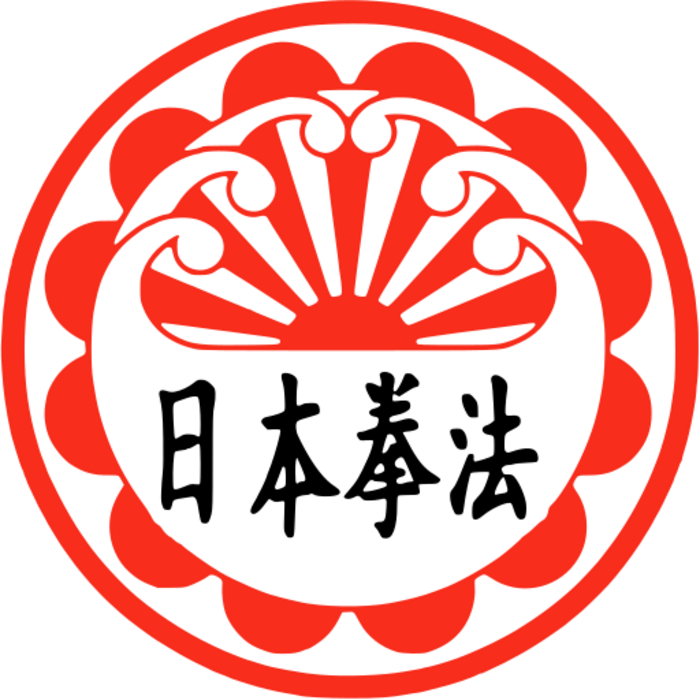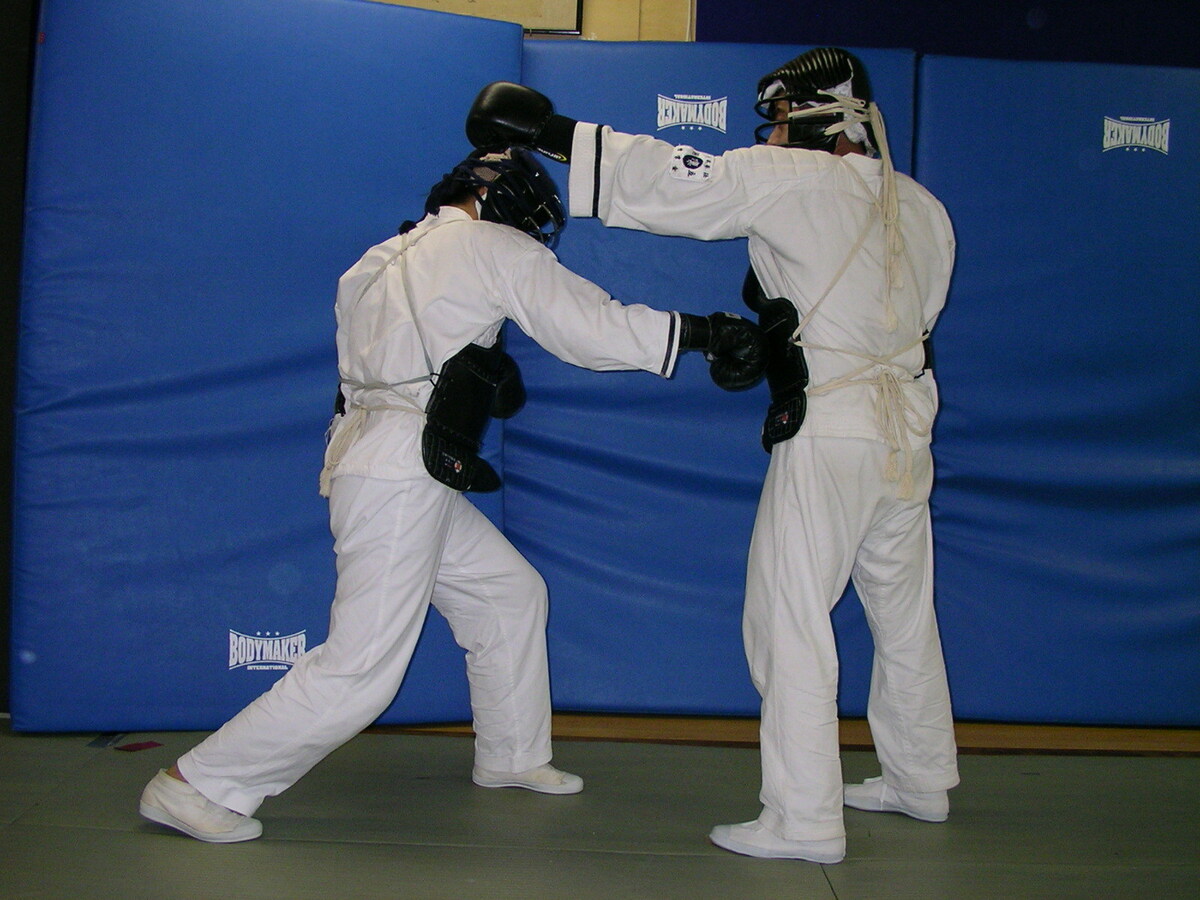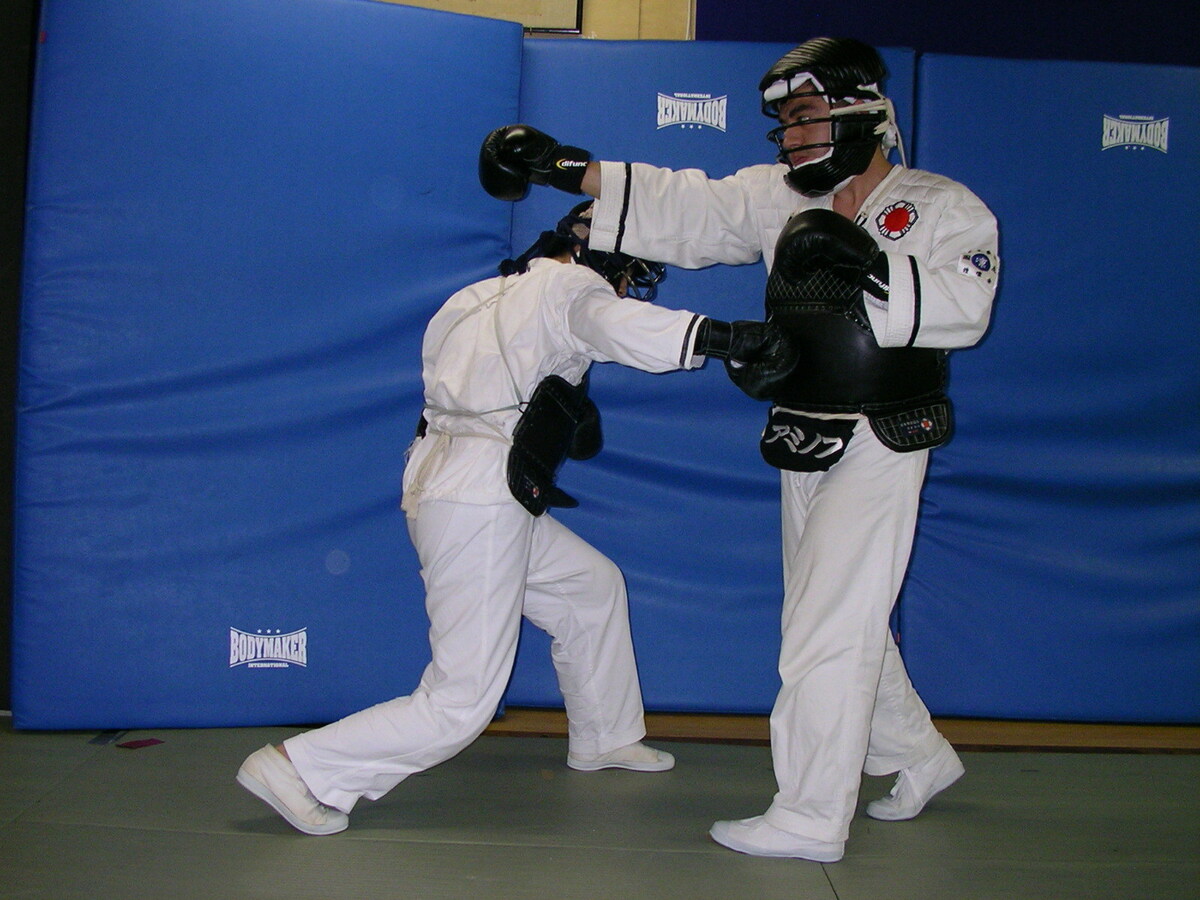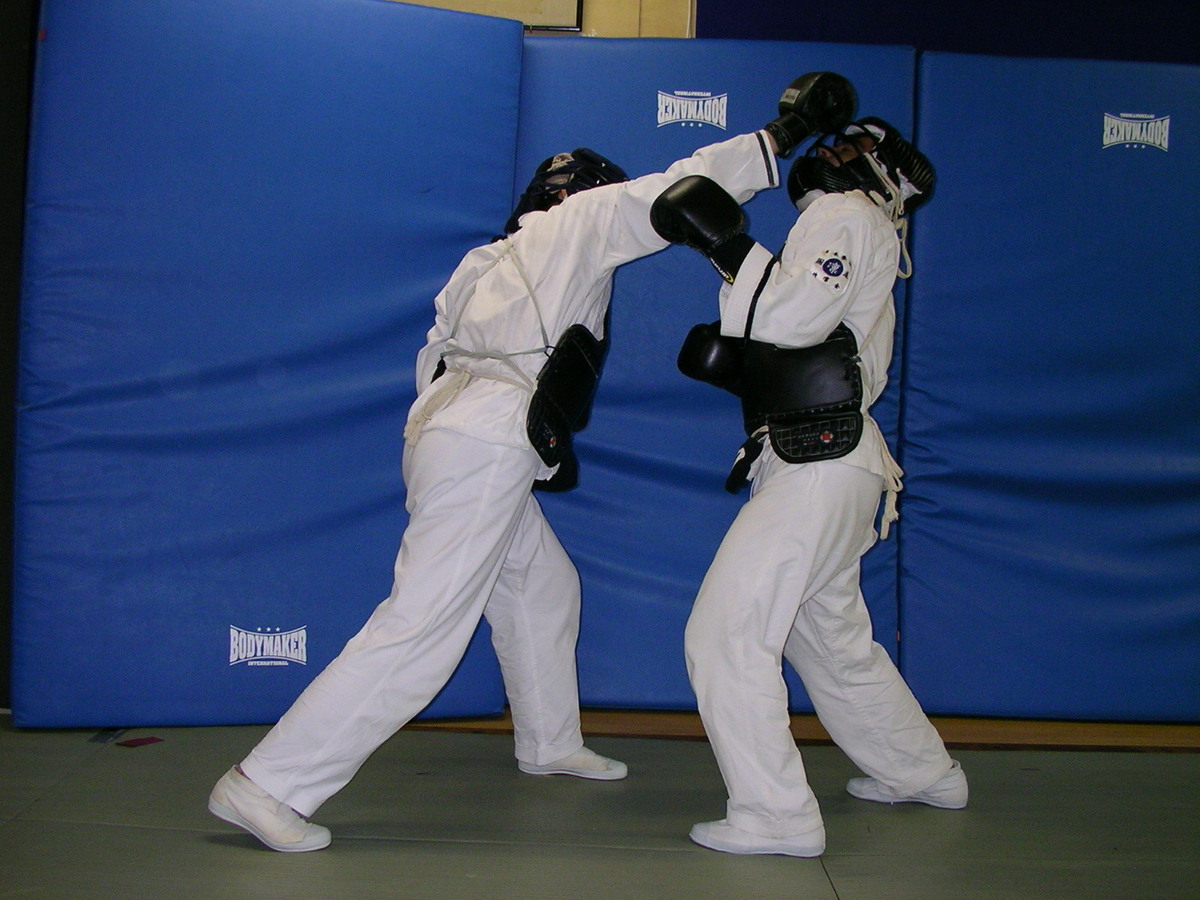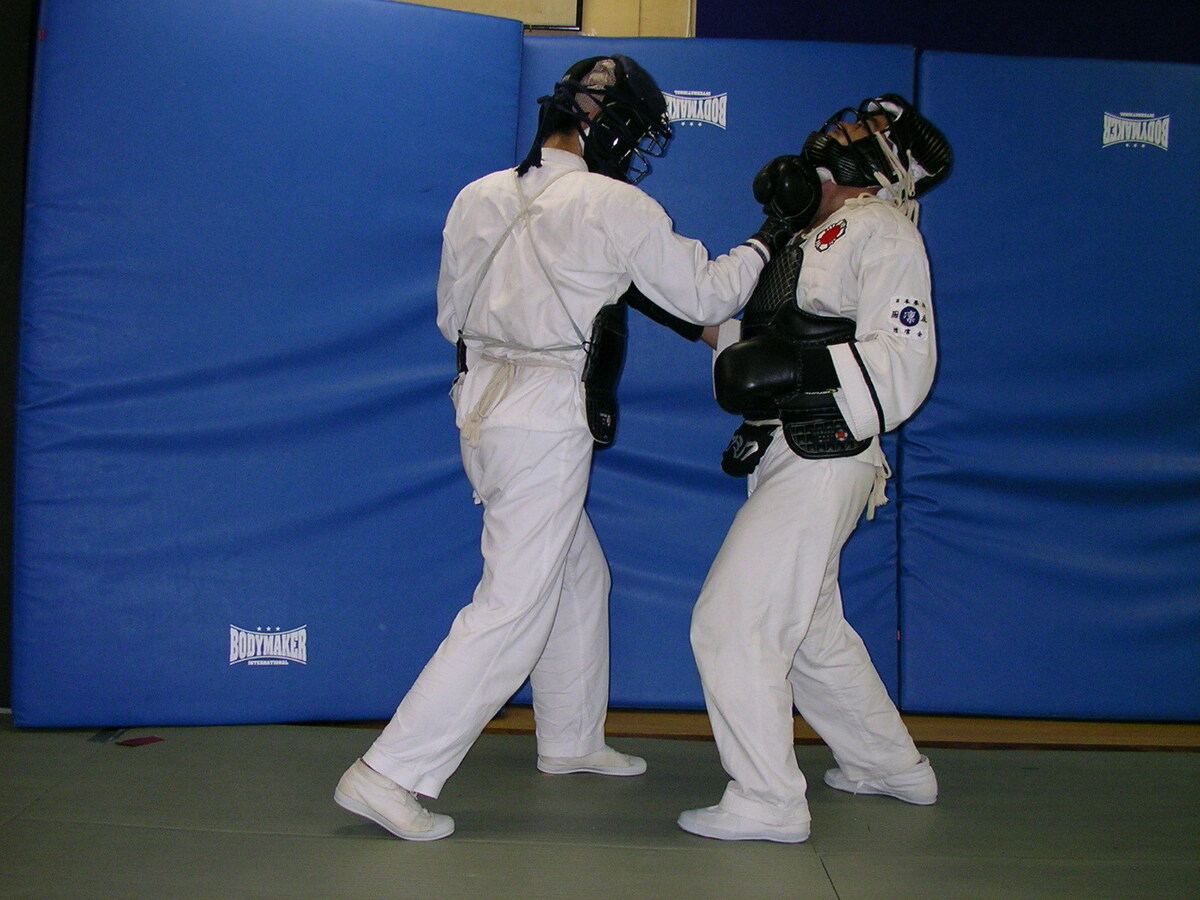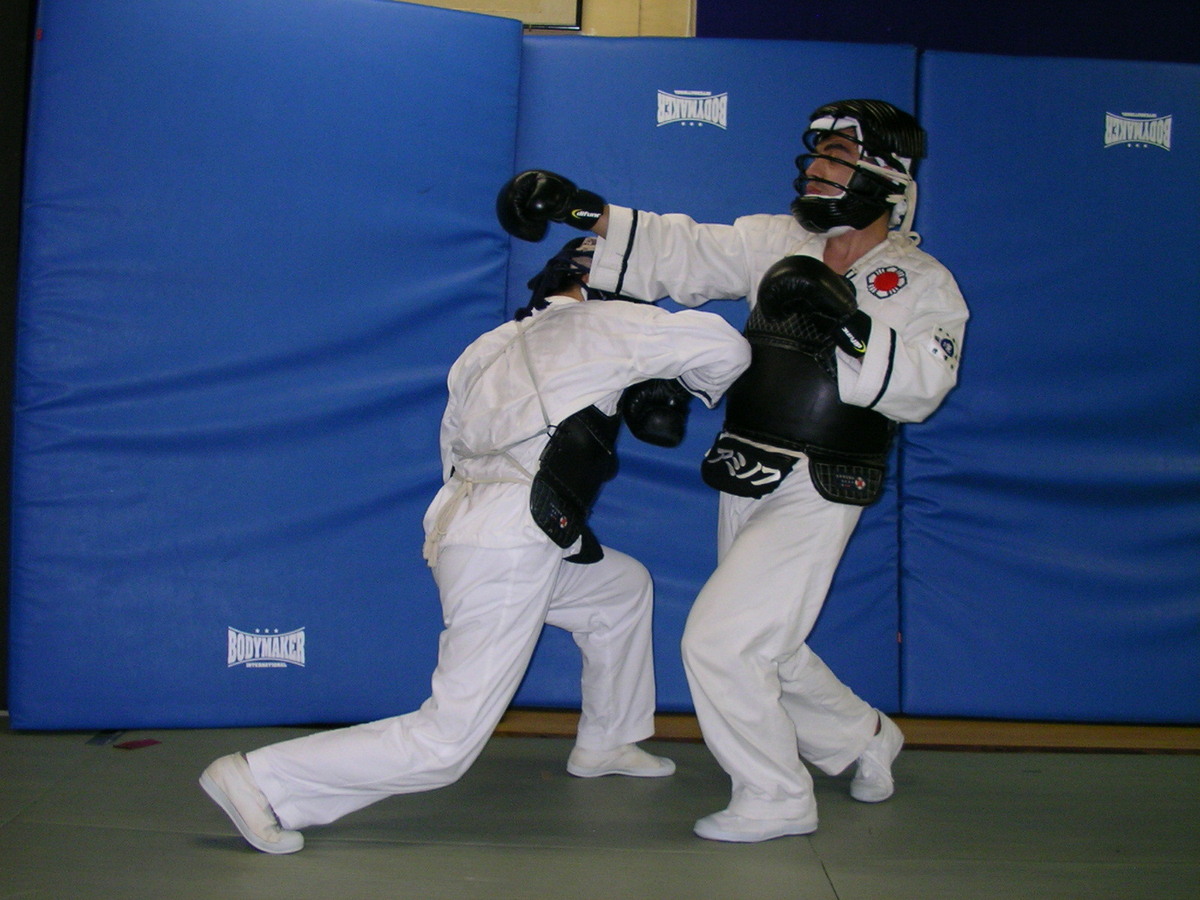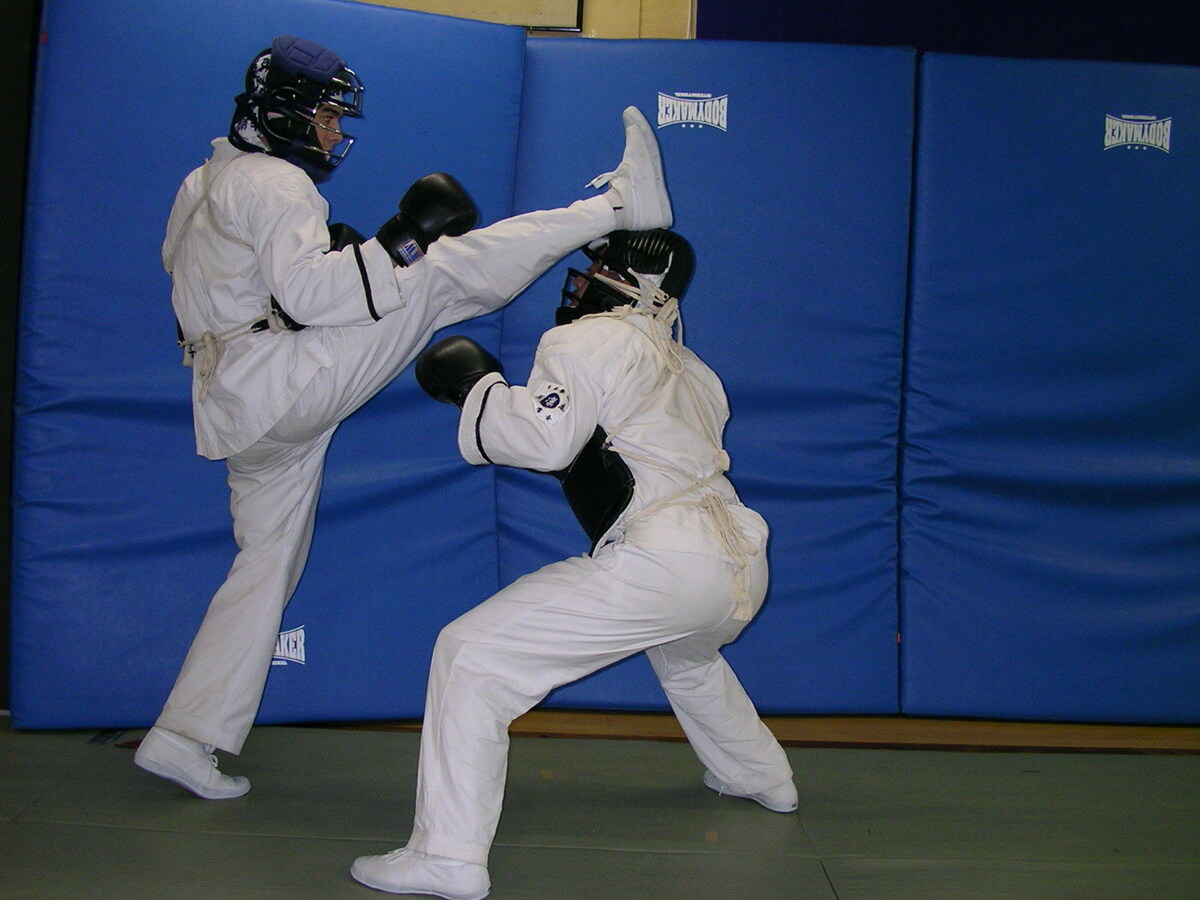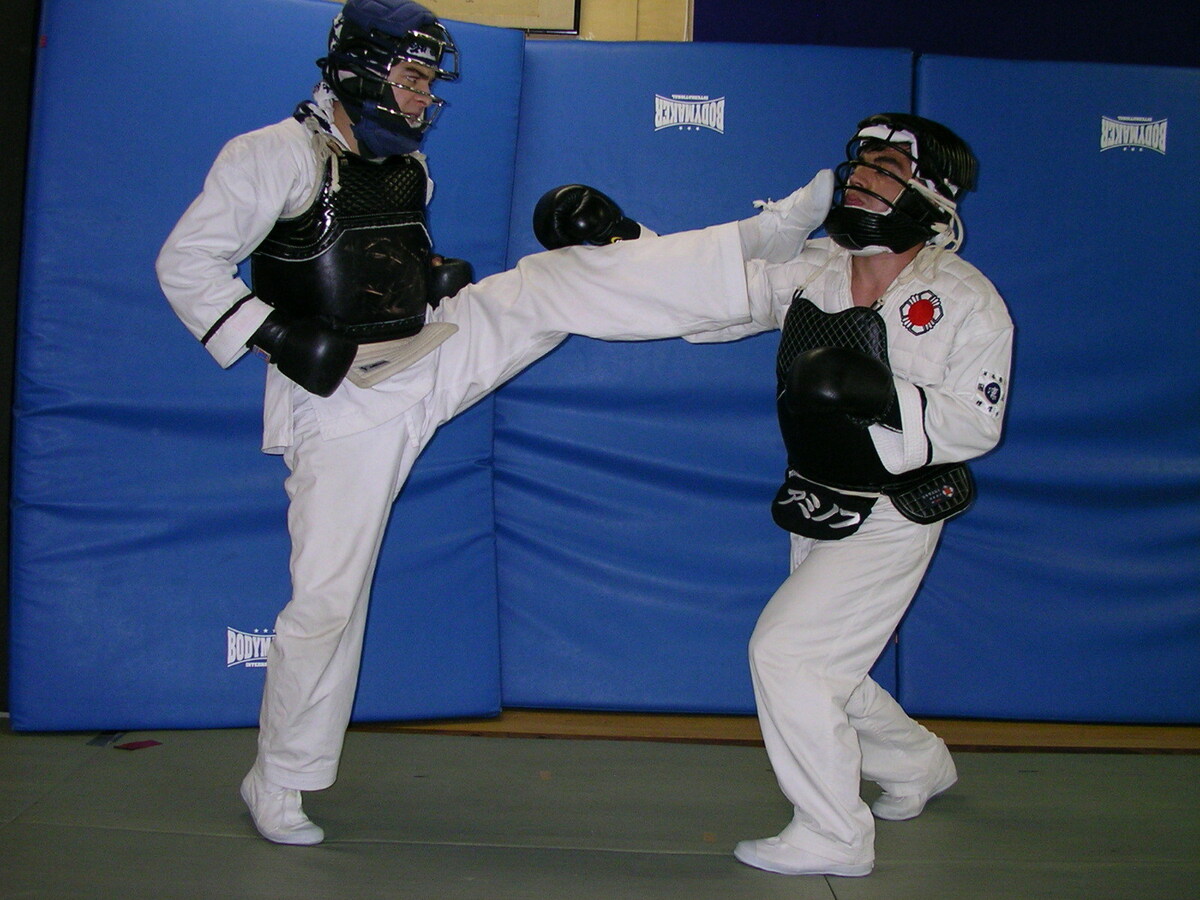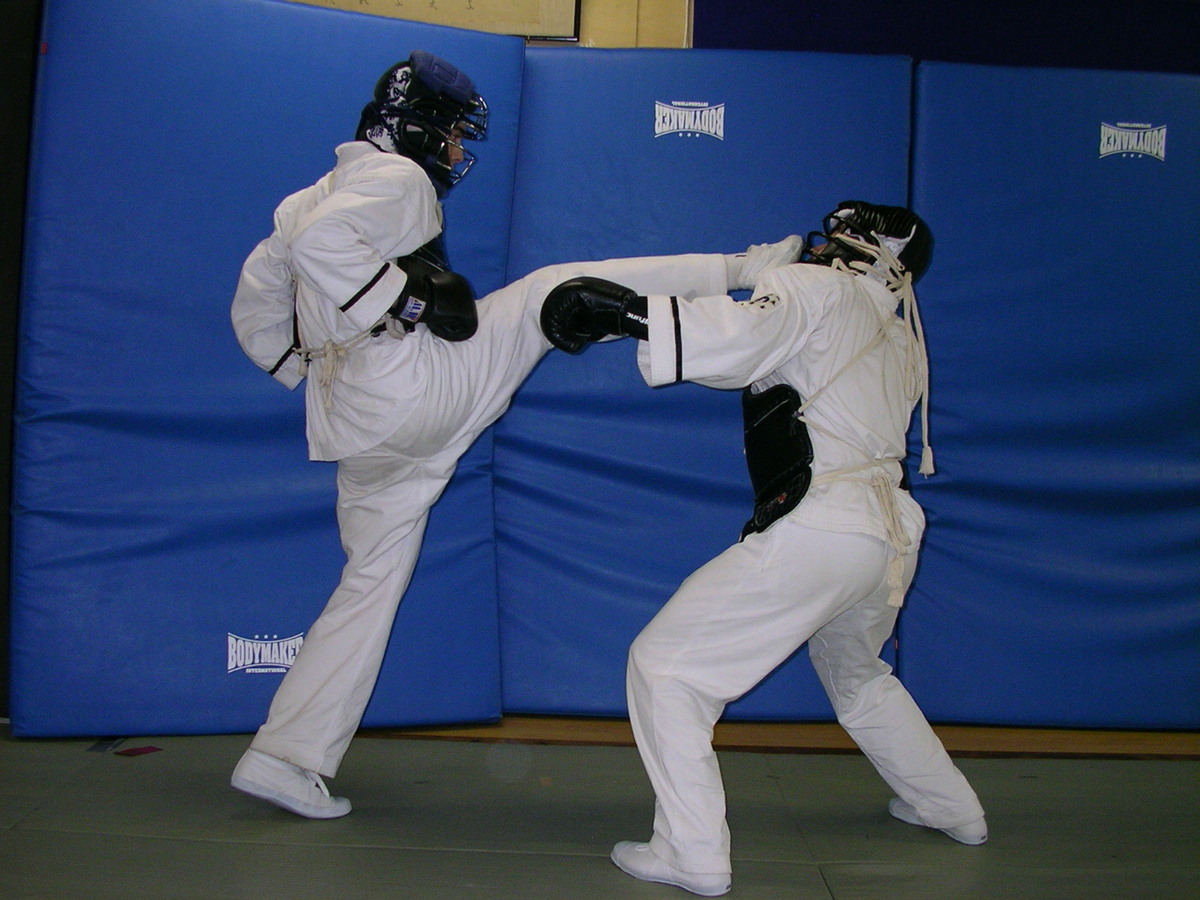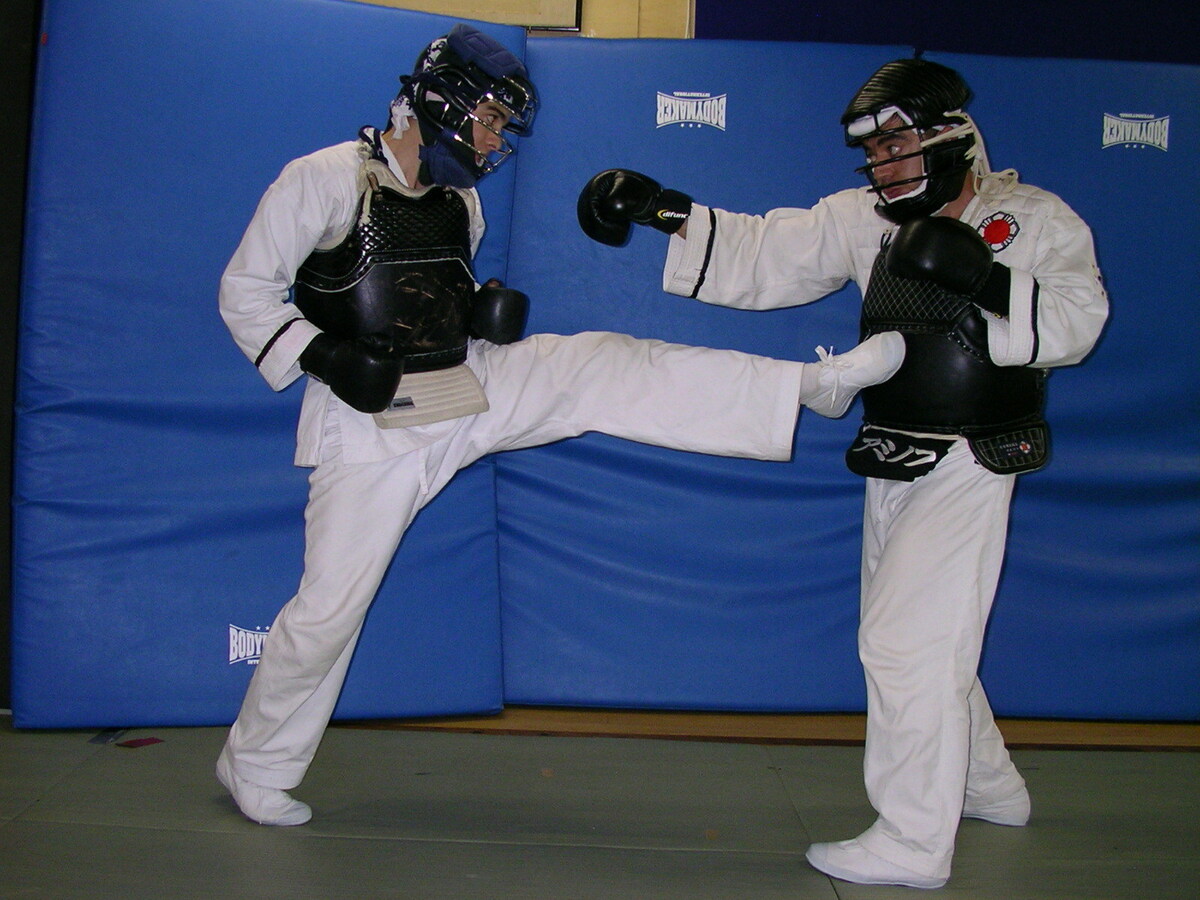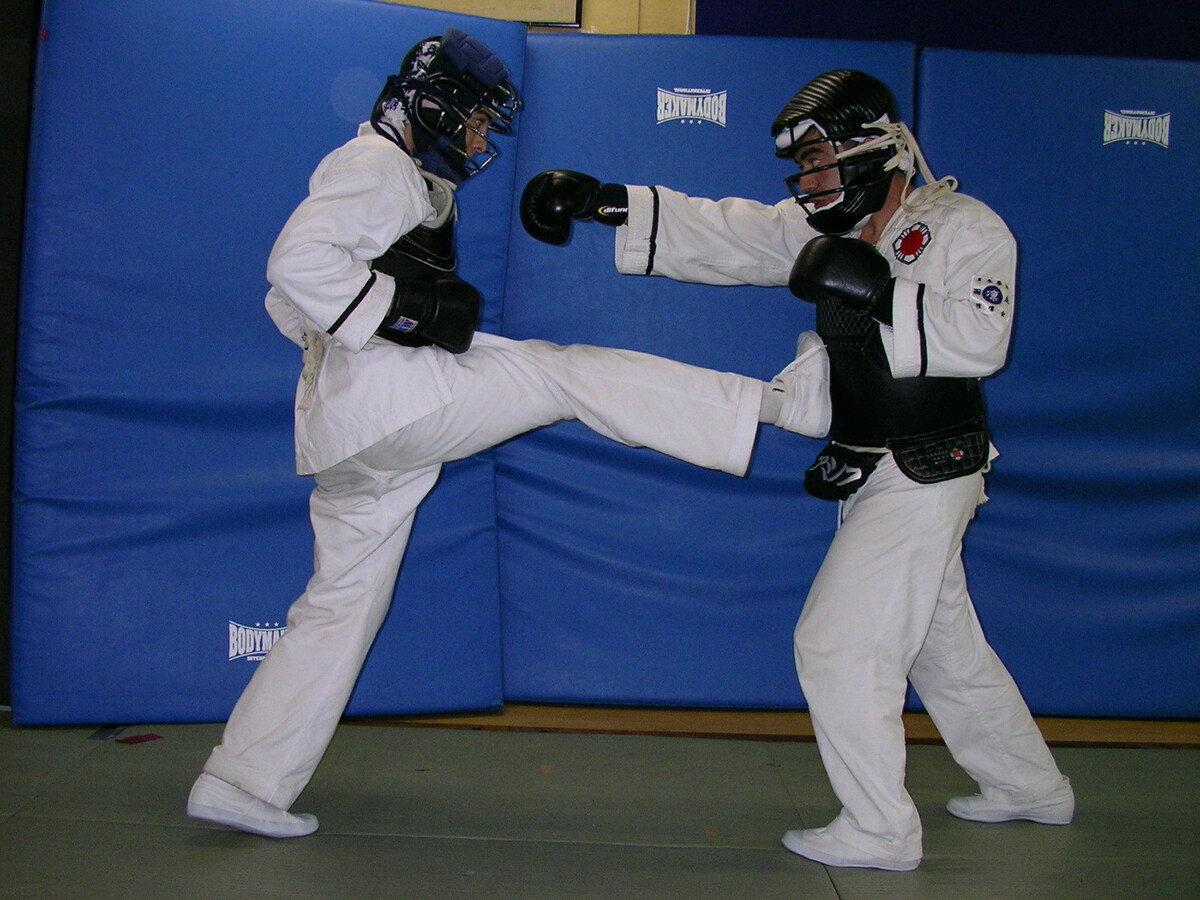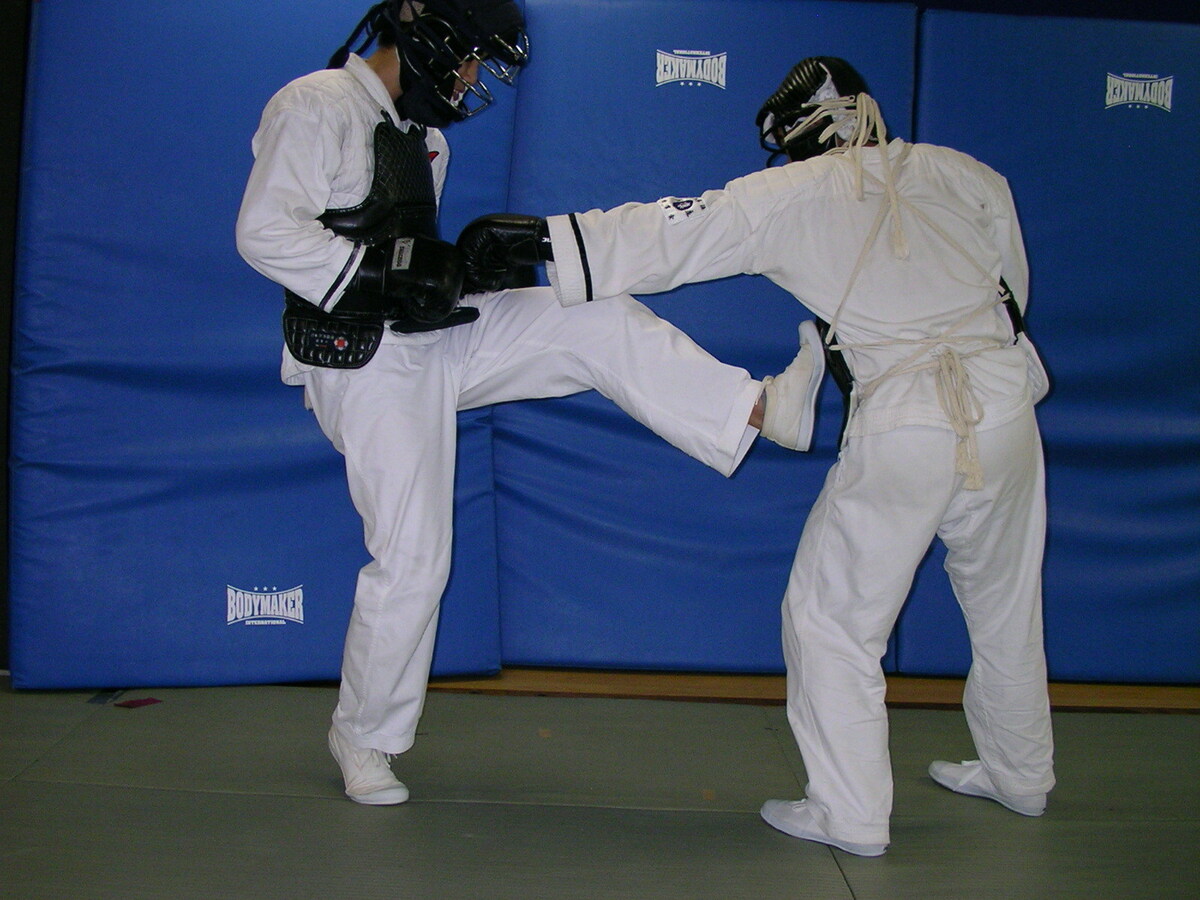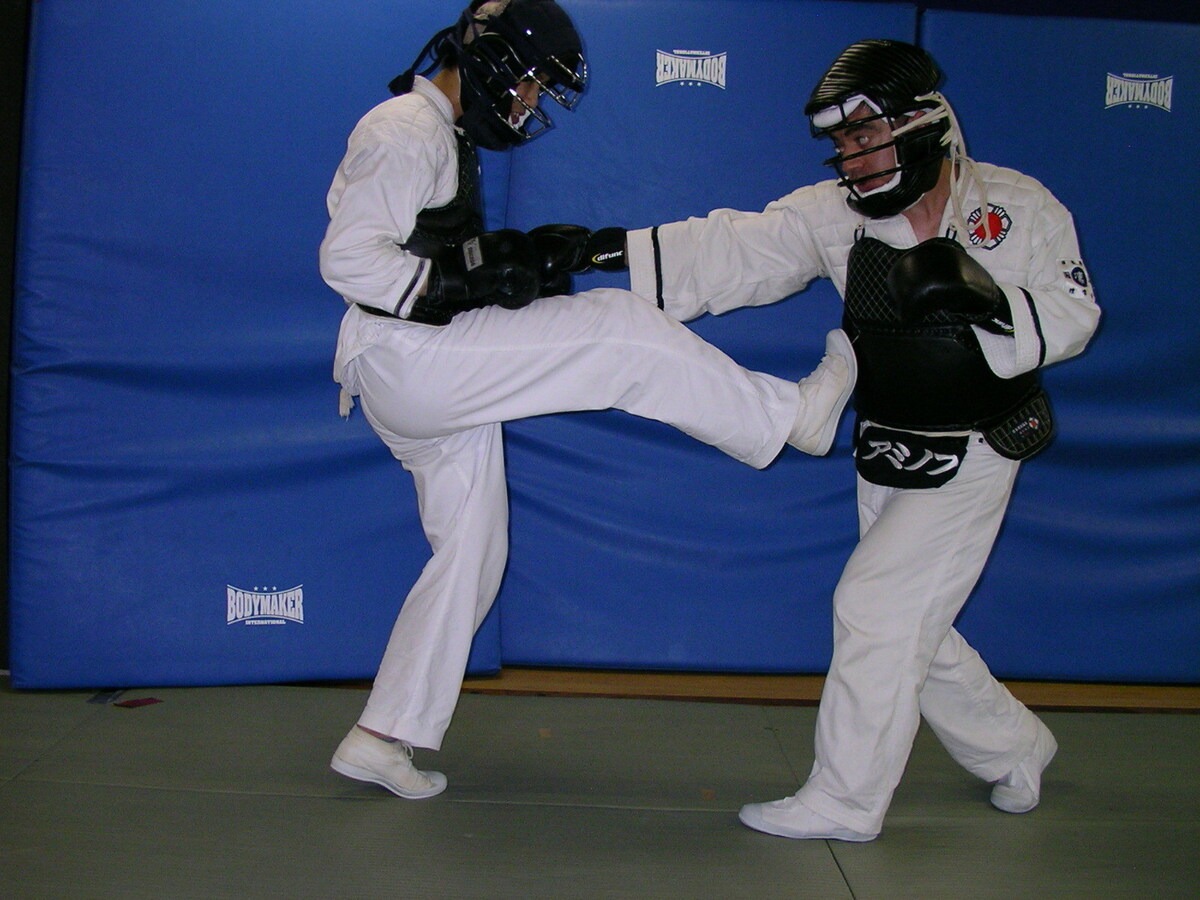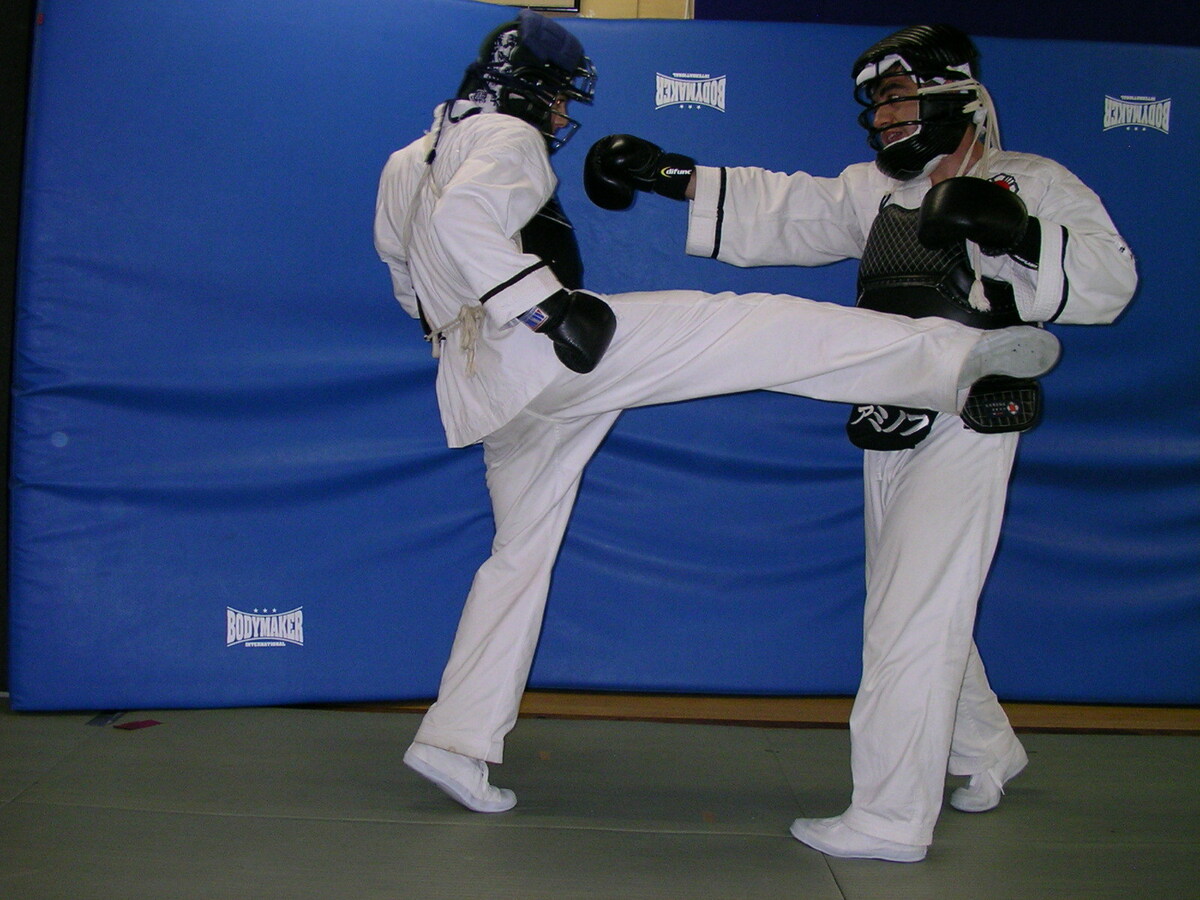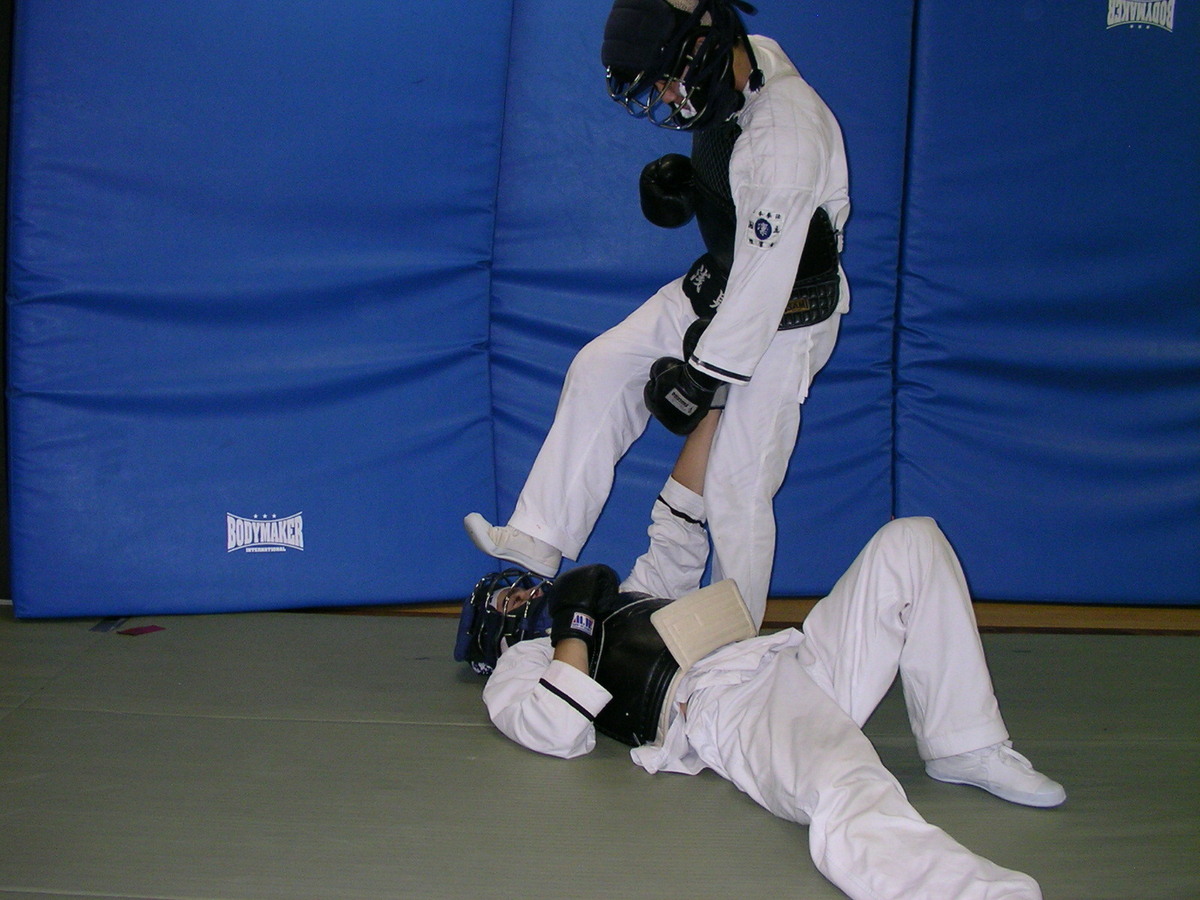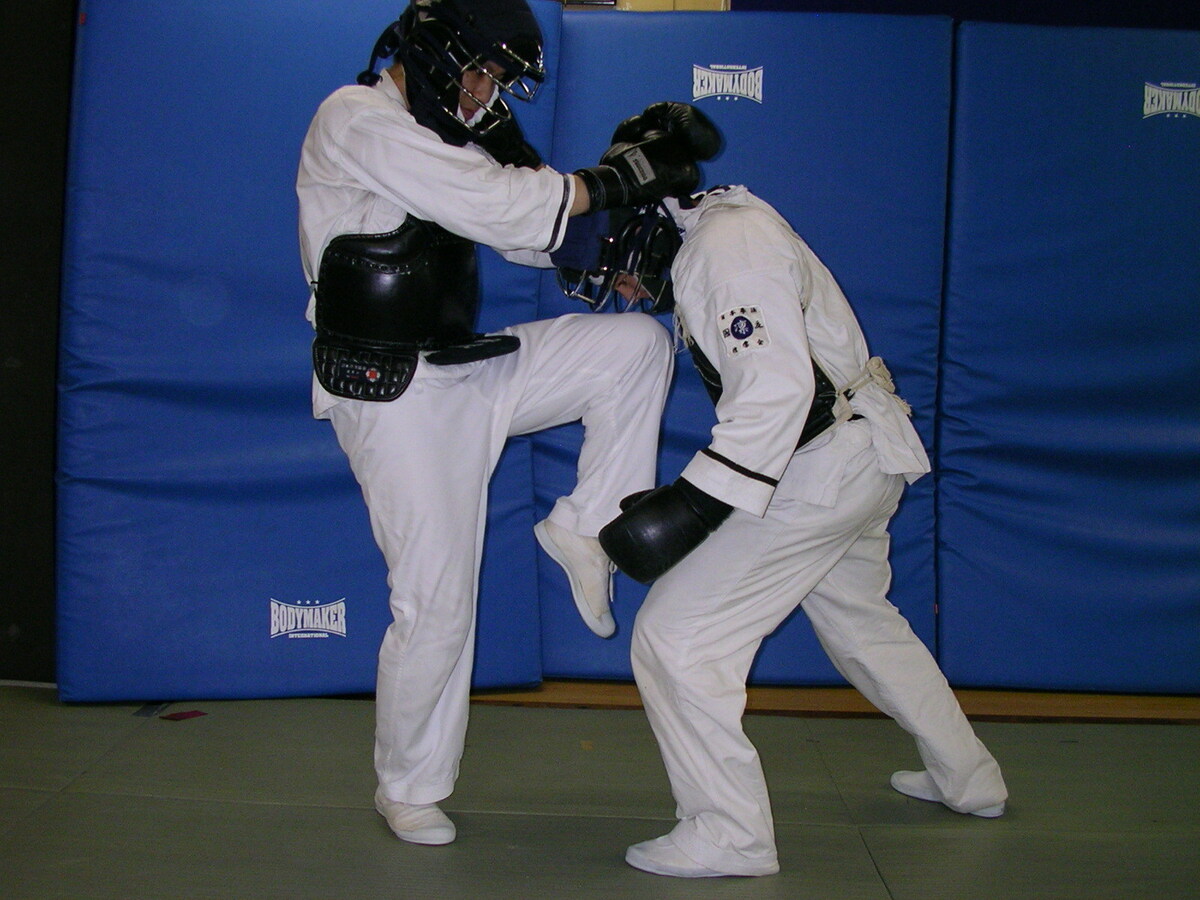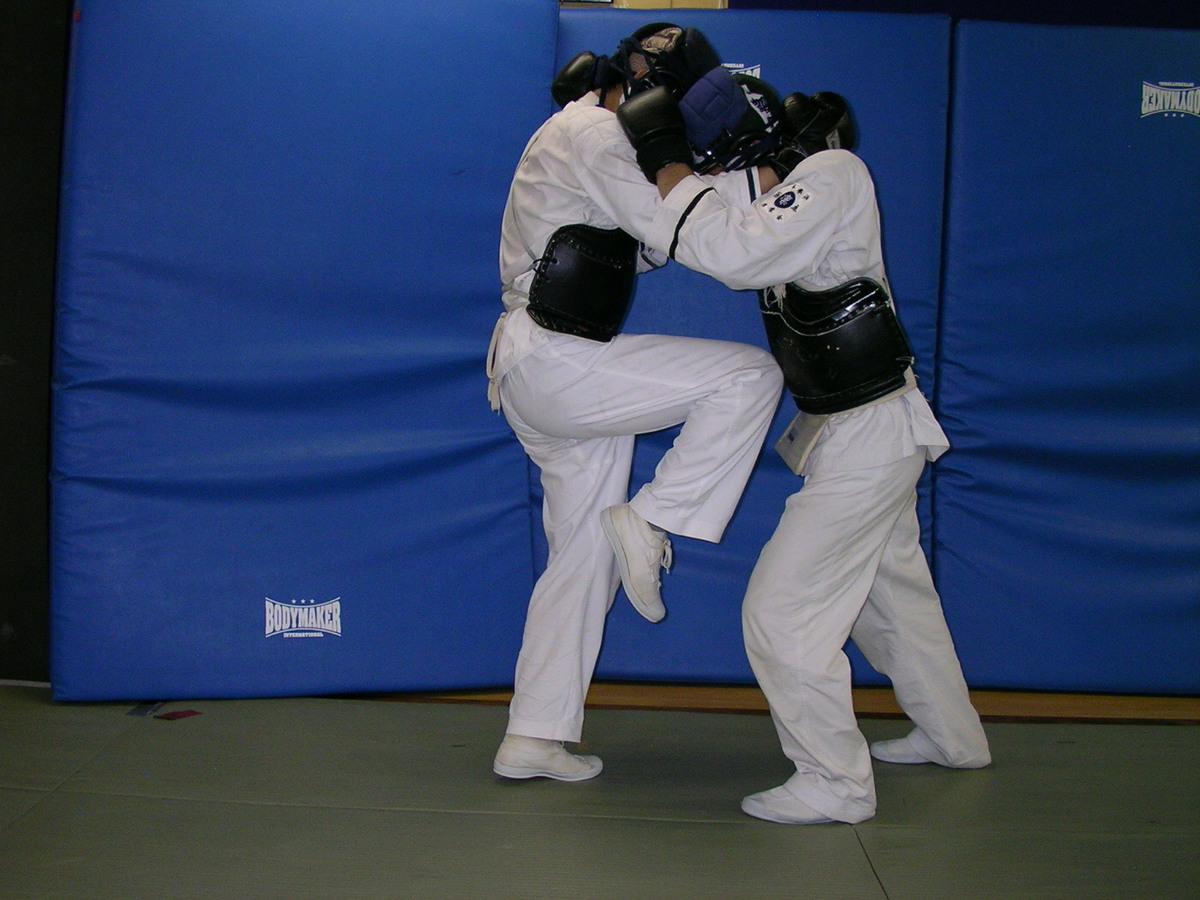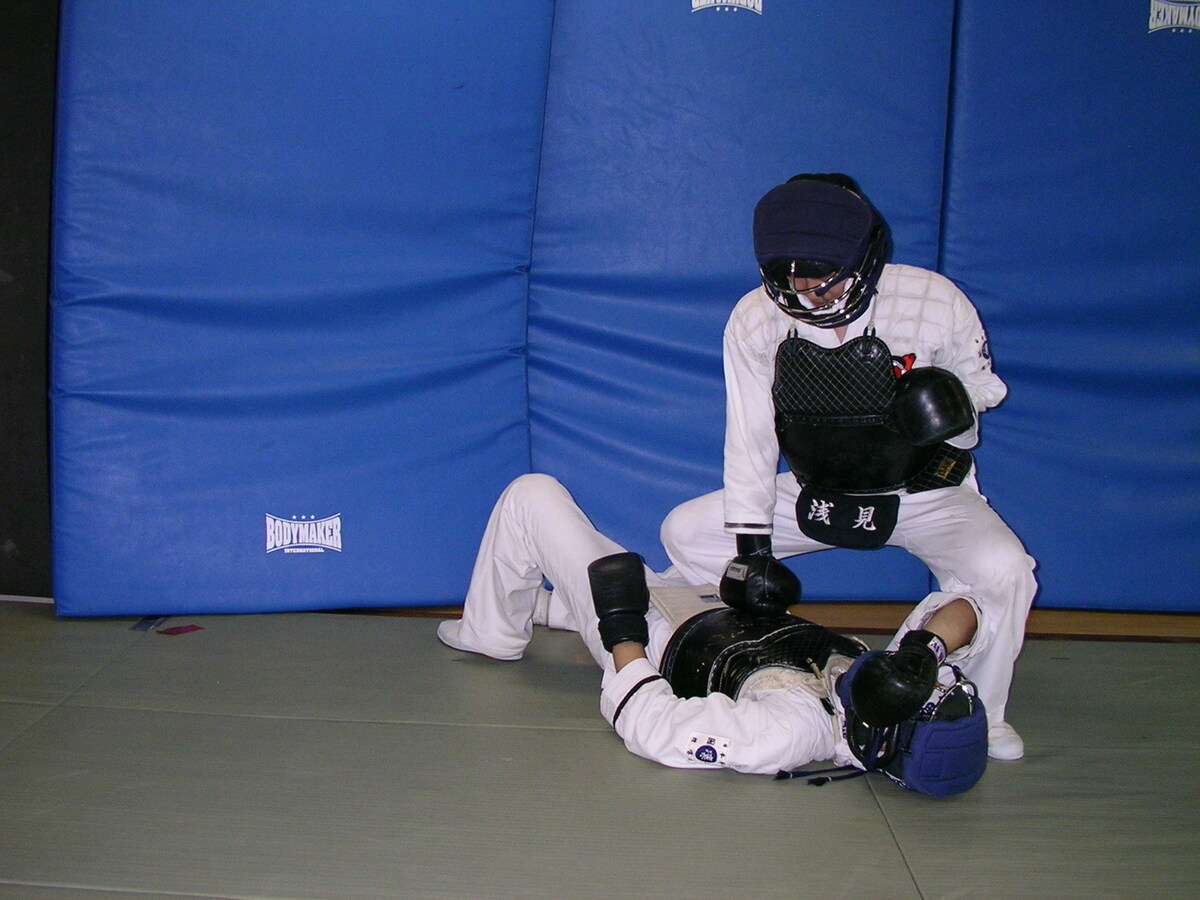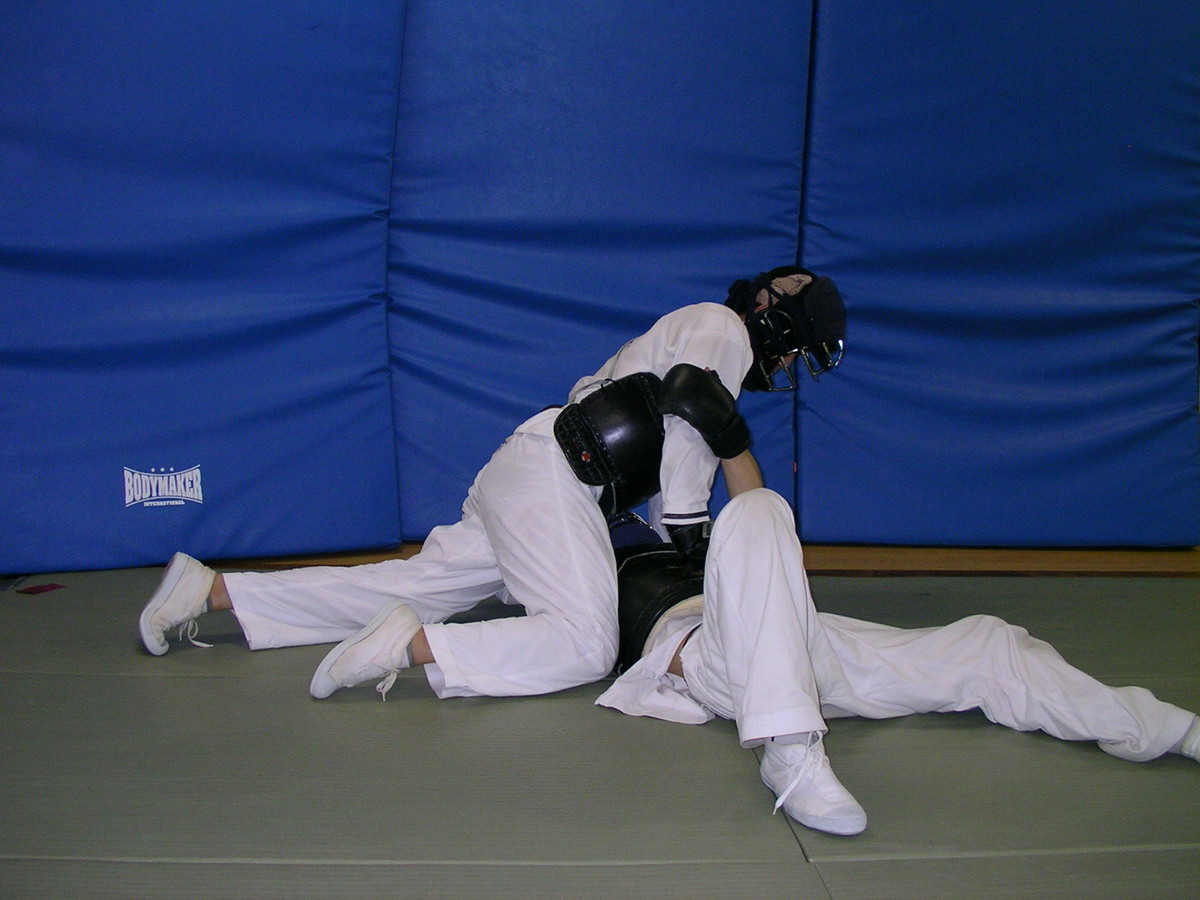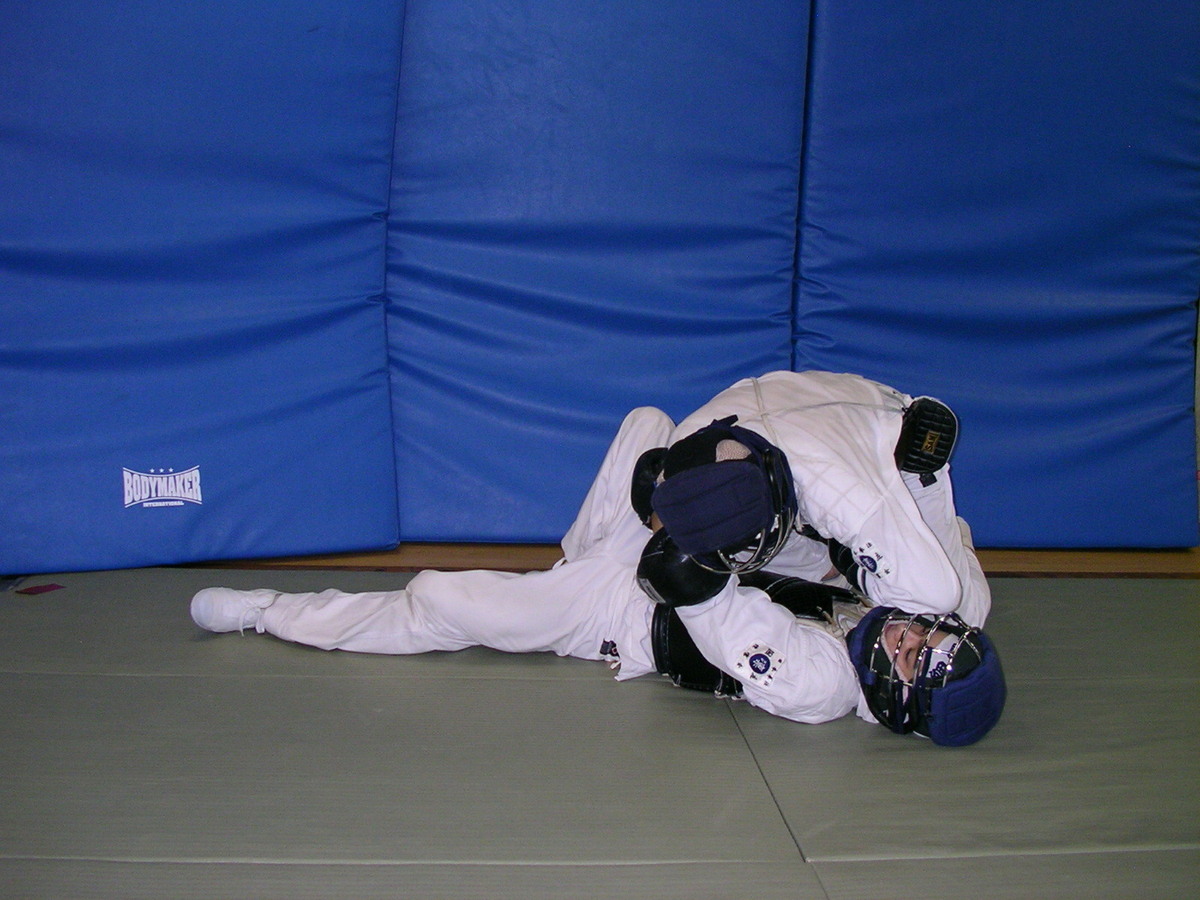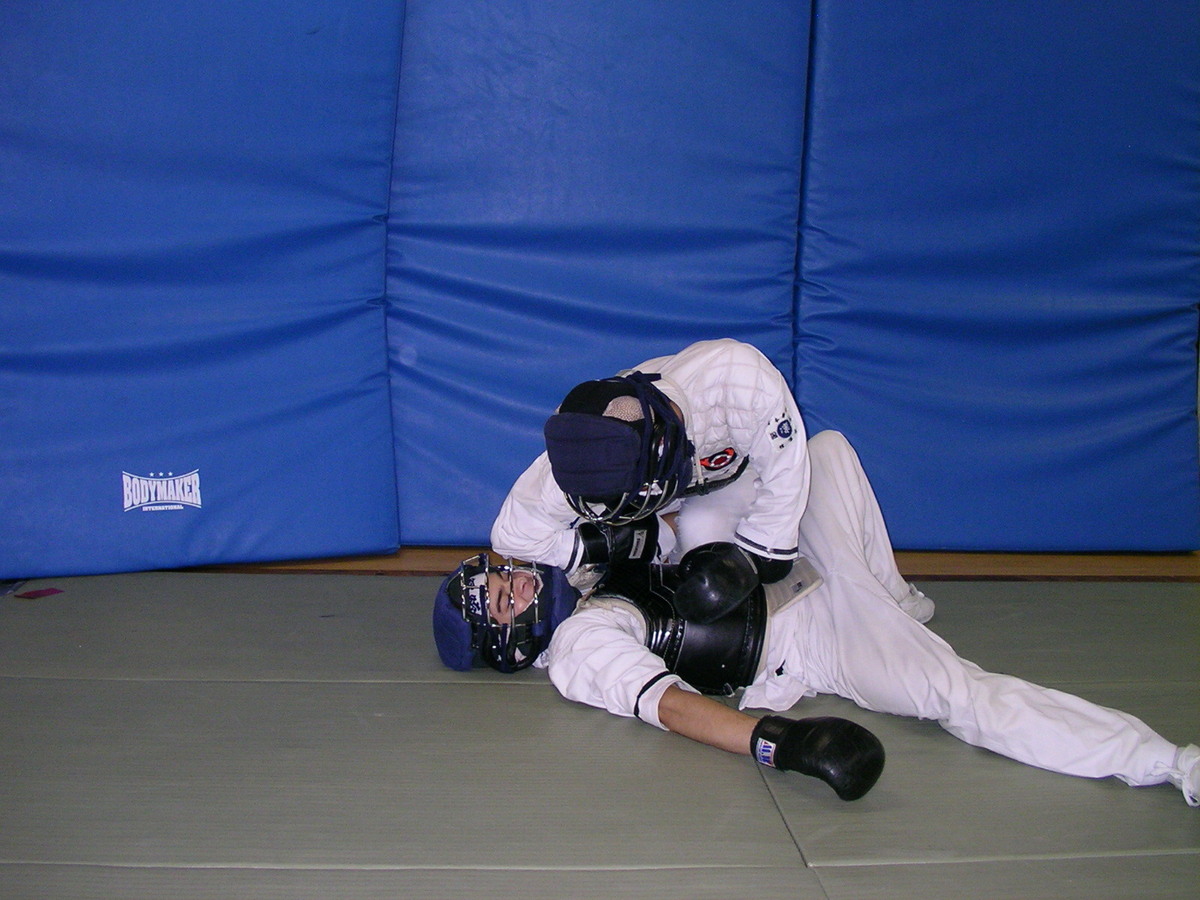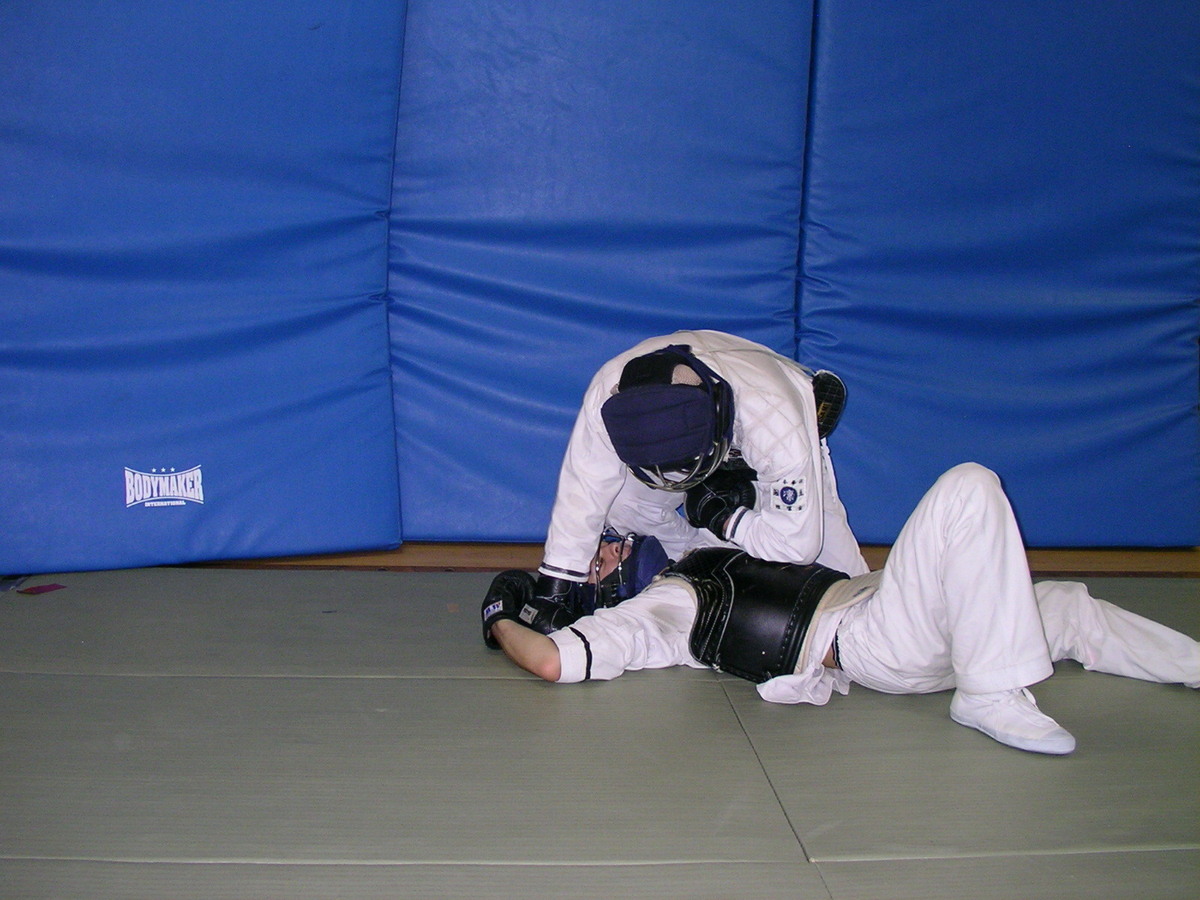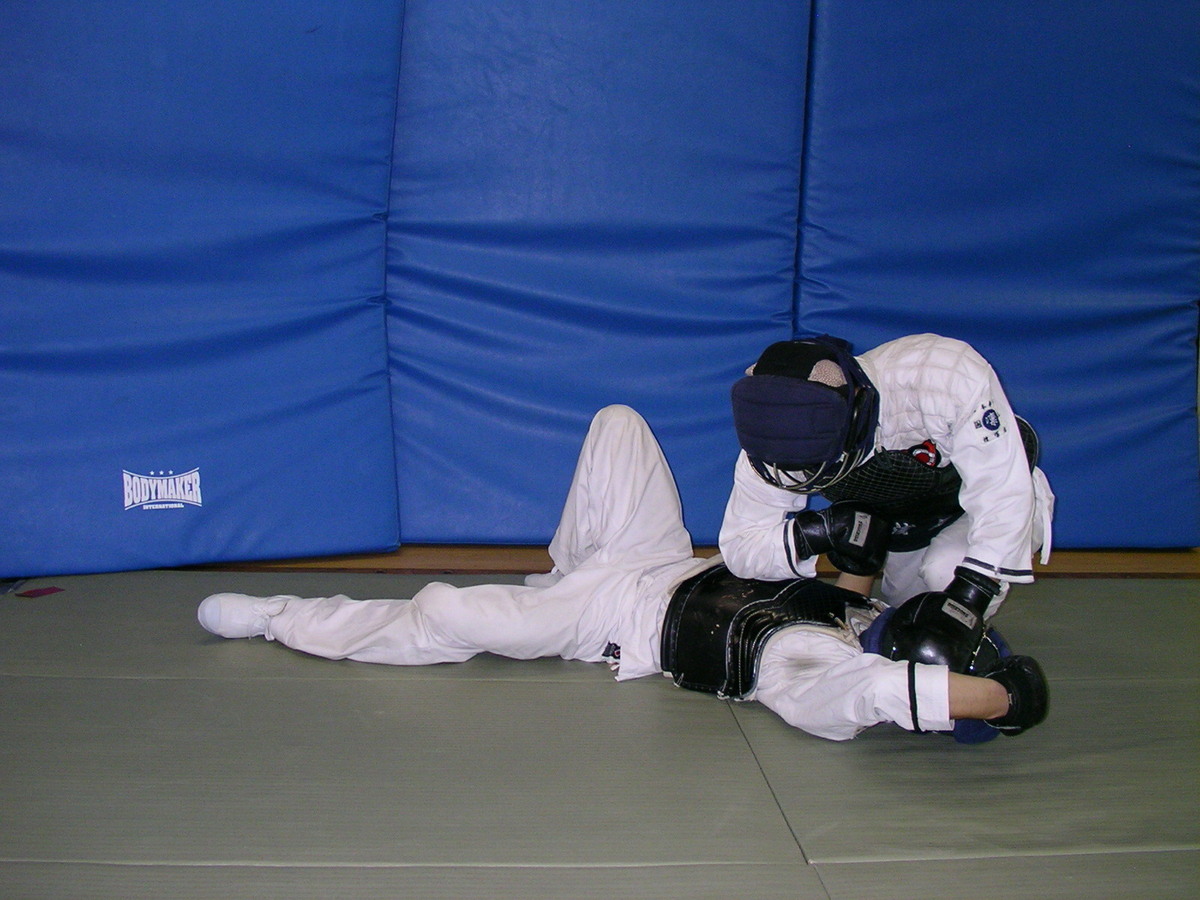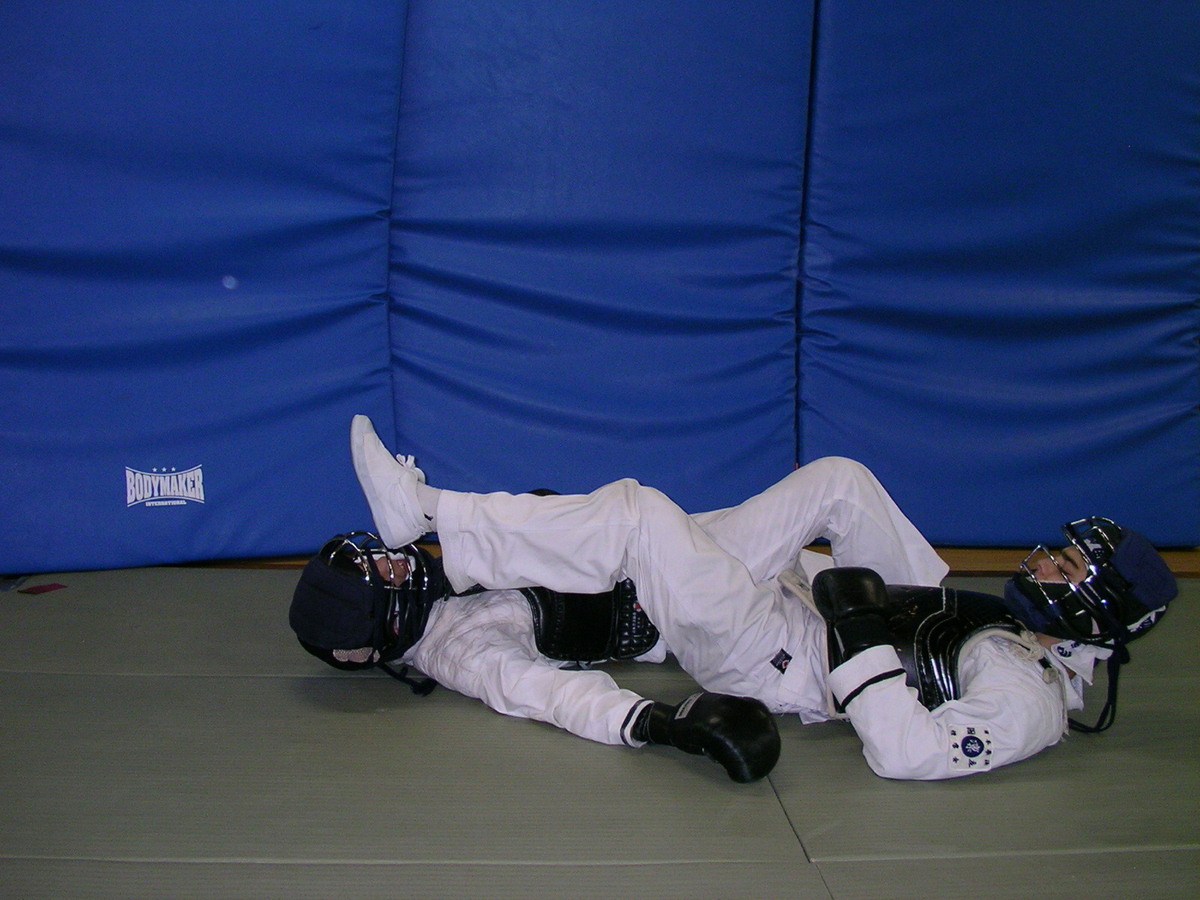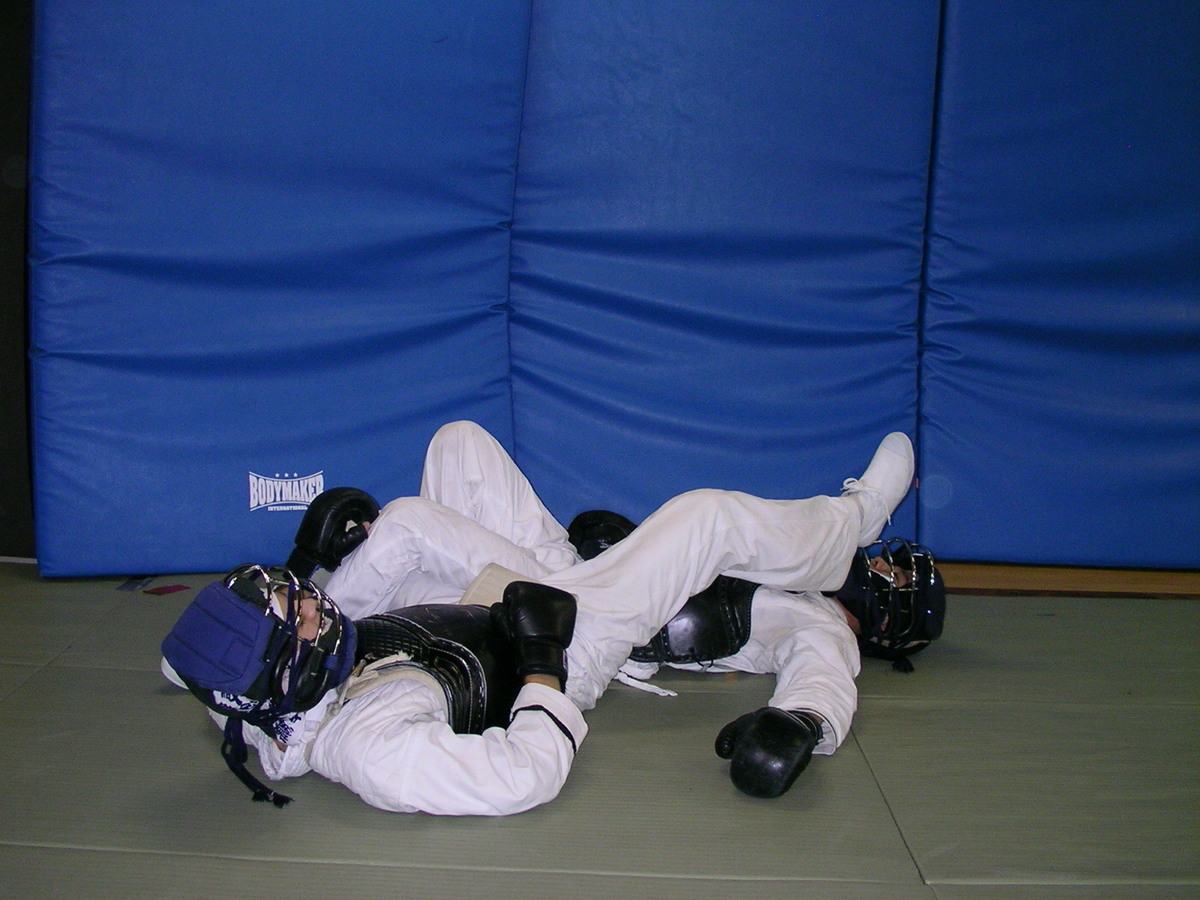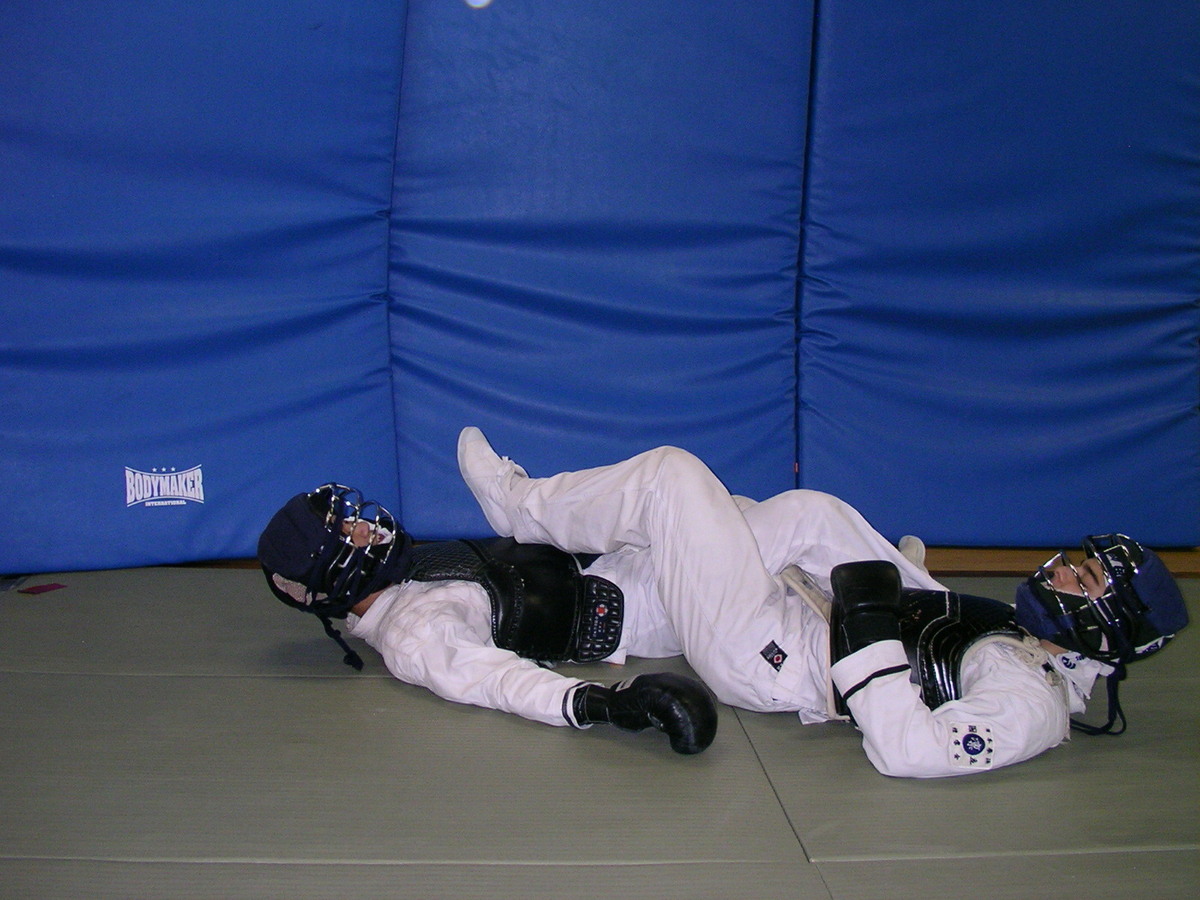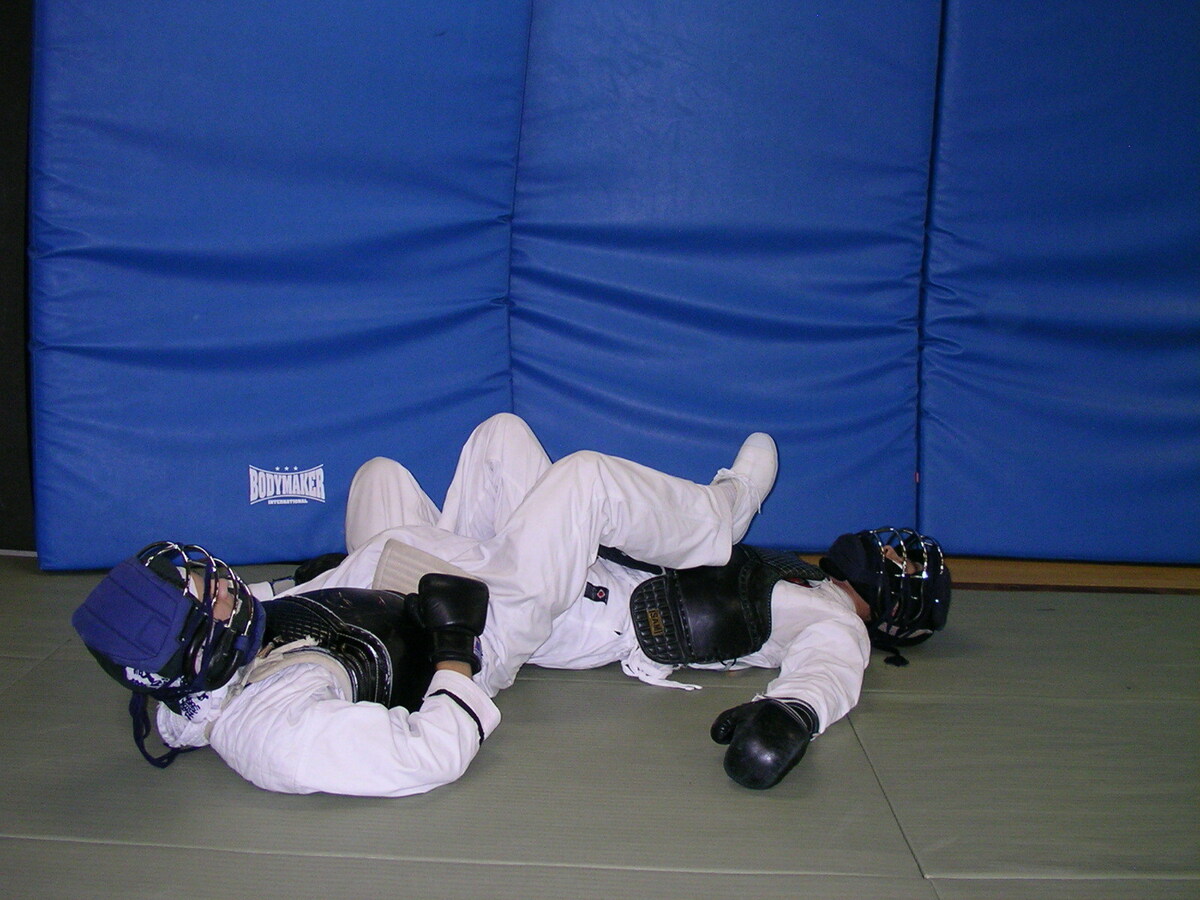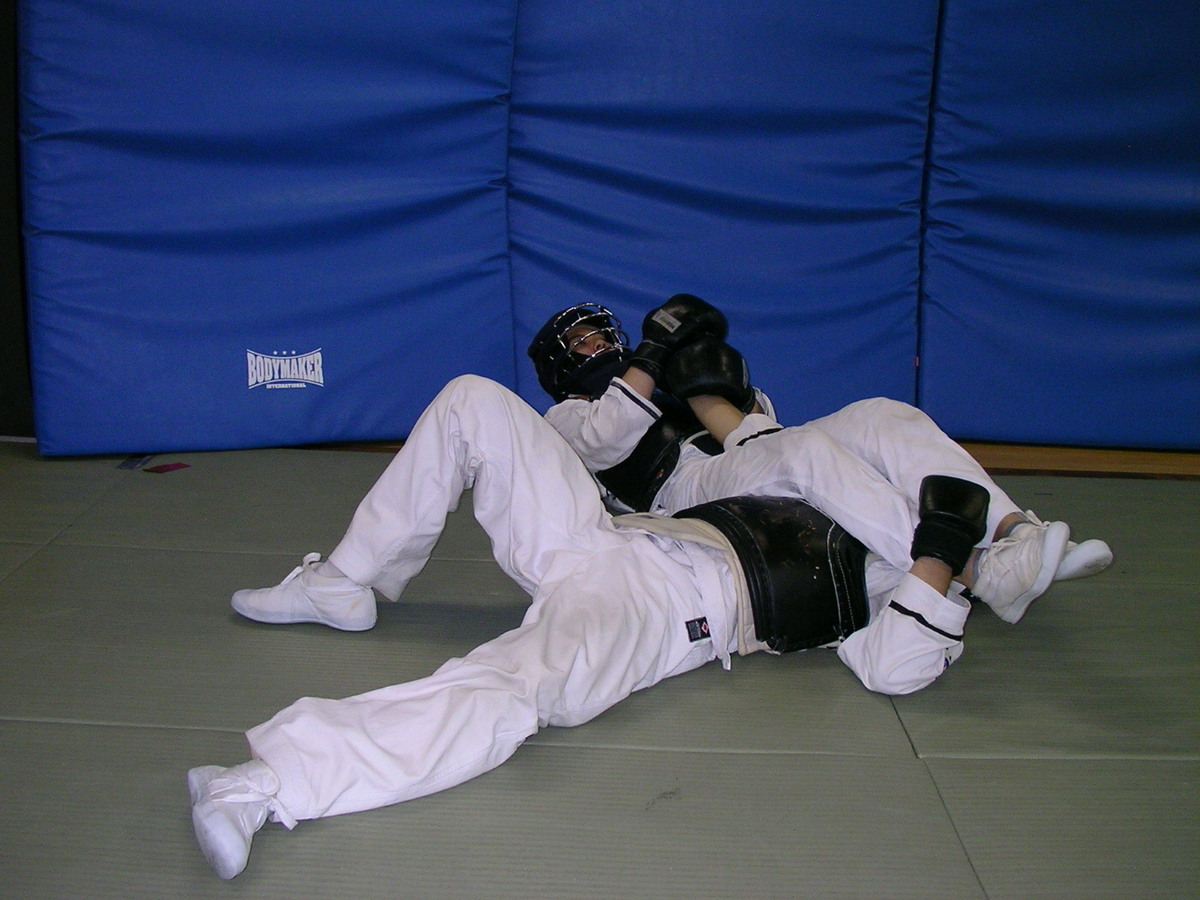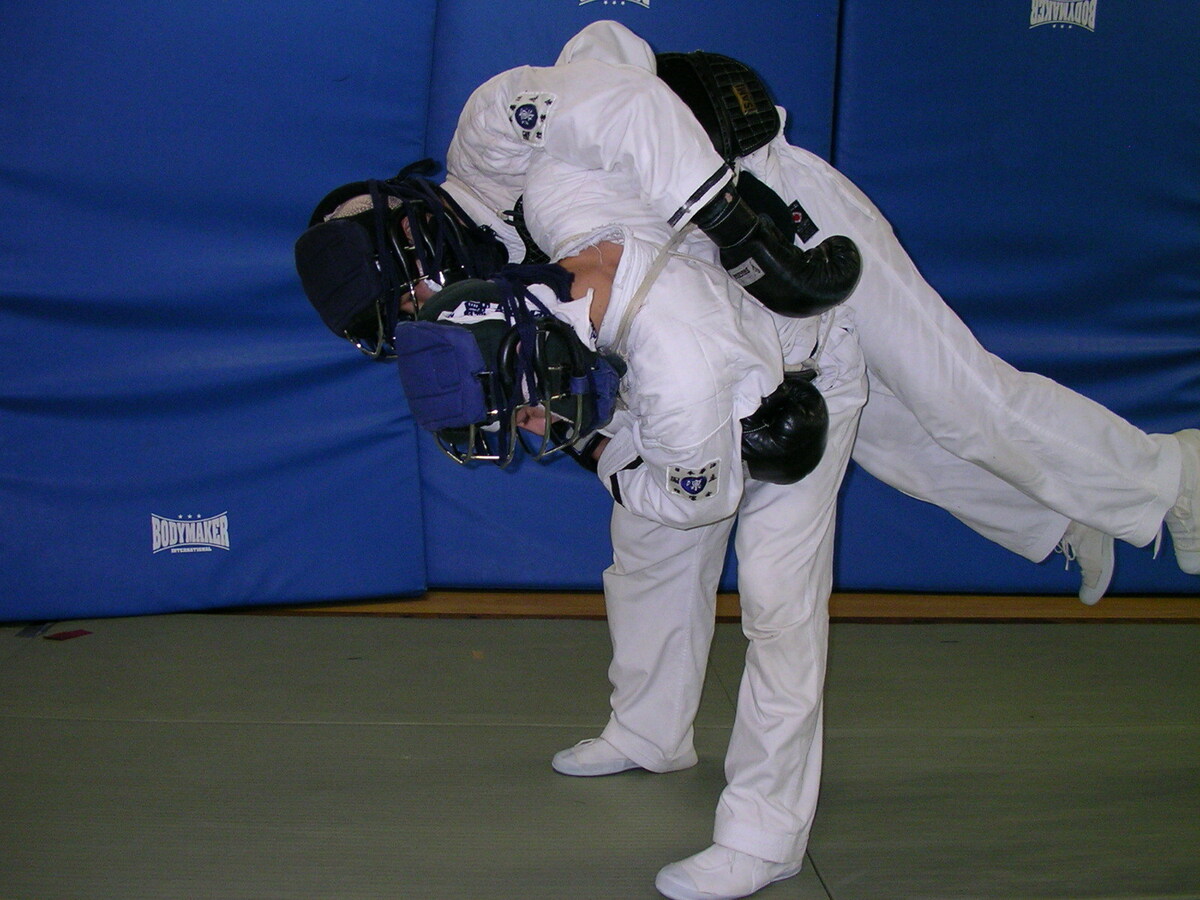VIDEO:
1. Nippon Kempo,
2. Toshu Kakuto Jyutsu,
3. Yoroi Kumiuchi Jyutsu,
4. Goshin Jyutsu.
INSTRUCTOR`S
TEST
The essence of Nippon Kempo
The terminology of Nippon Kempo shall be learned by heart and used throughout the training process.
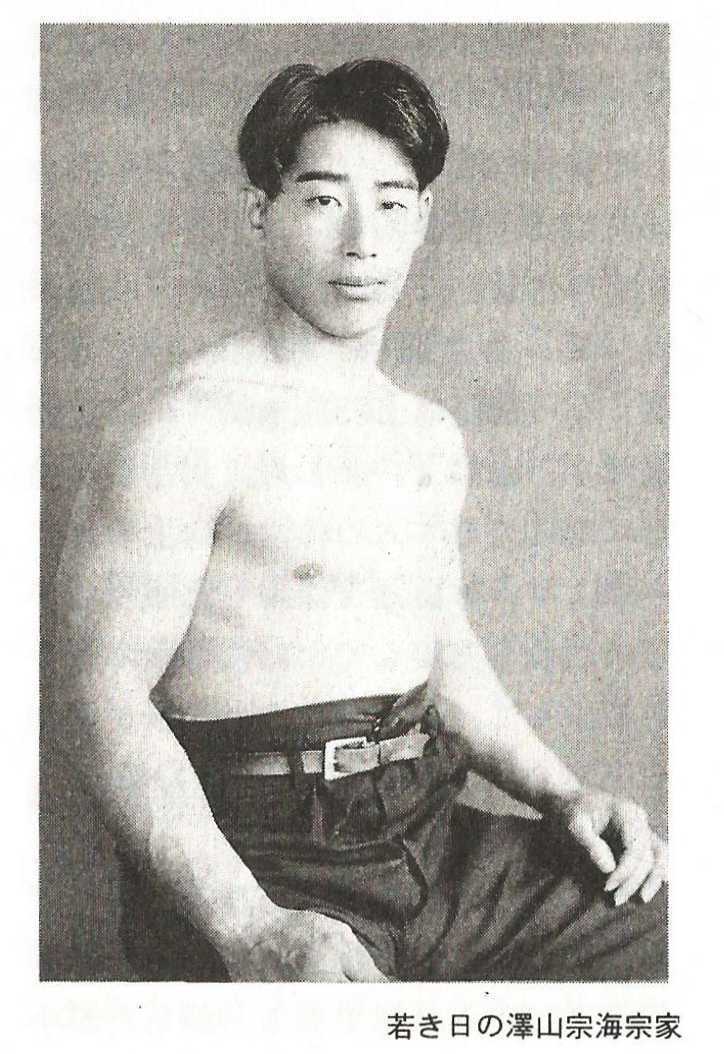 1906-1977
Nippon Kempo was founded in 1932 by Sawayama Muneomi.
1906-1977
Nippon Kempo was founded in 1932 by Sawayama Muneomi.
He also developed BOGU - the protective equipment:
- MEN - helmet
- DOU - waistcoat
- GUROBU - gloves
- MATA ATE - jockstrap
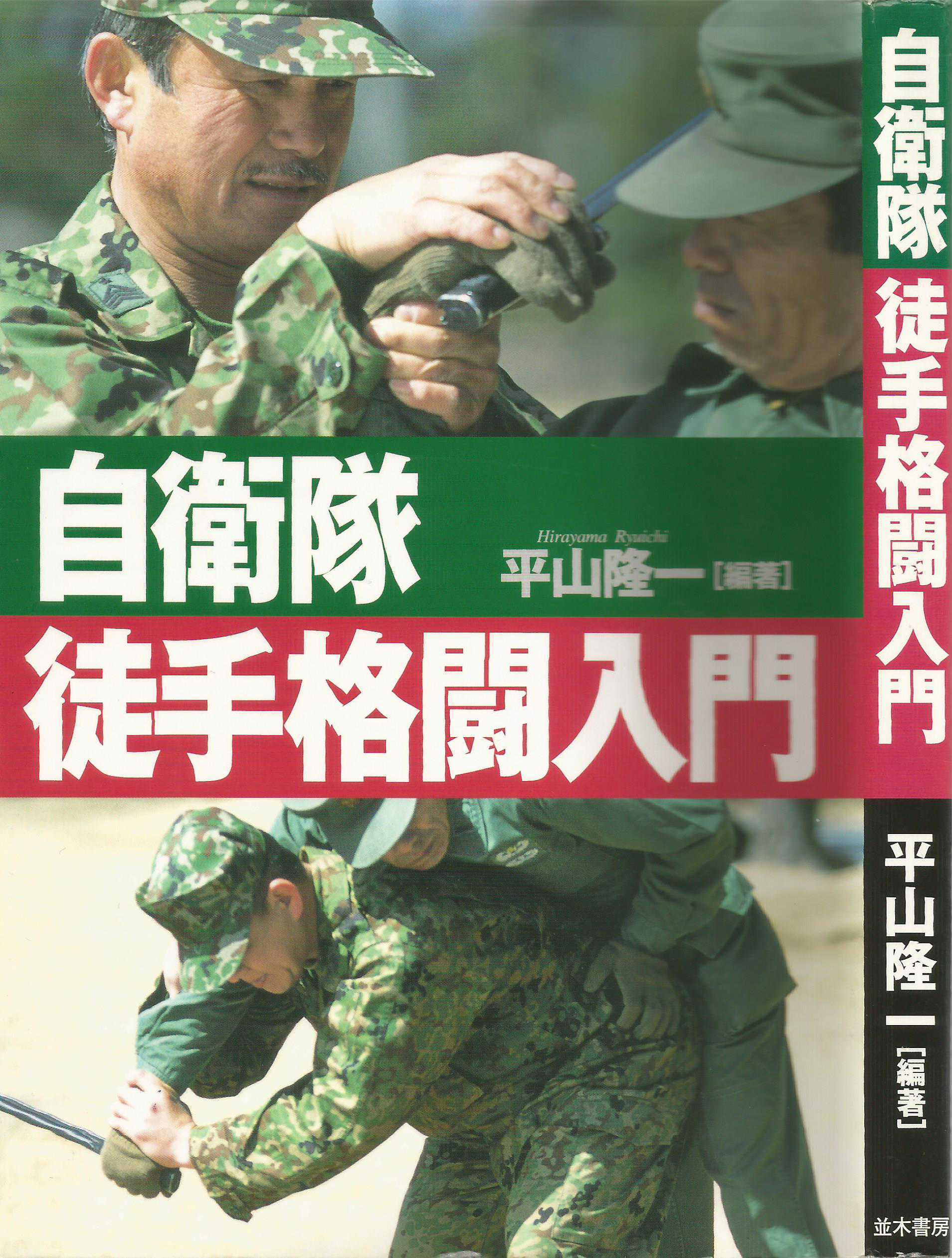
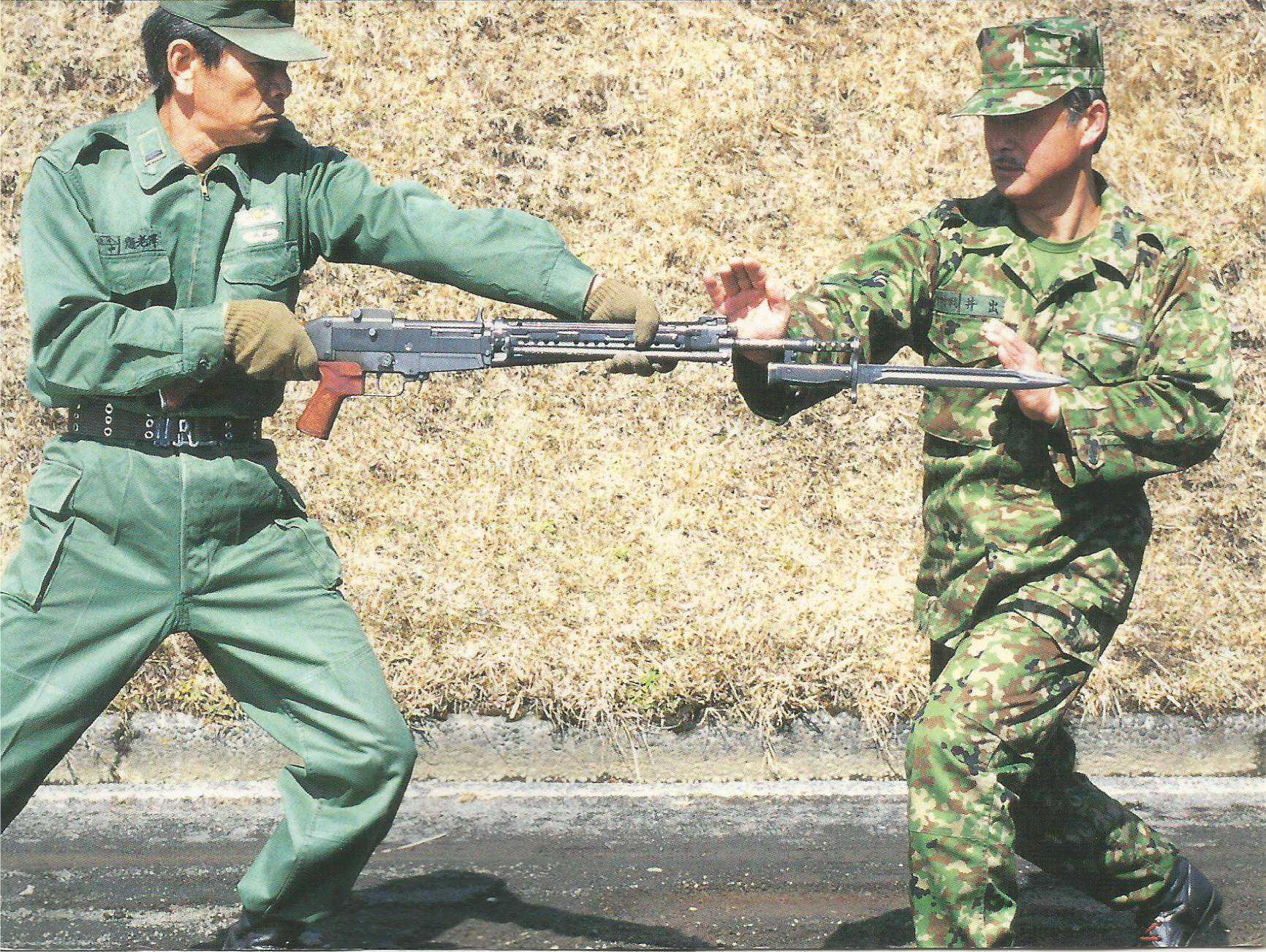
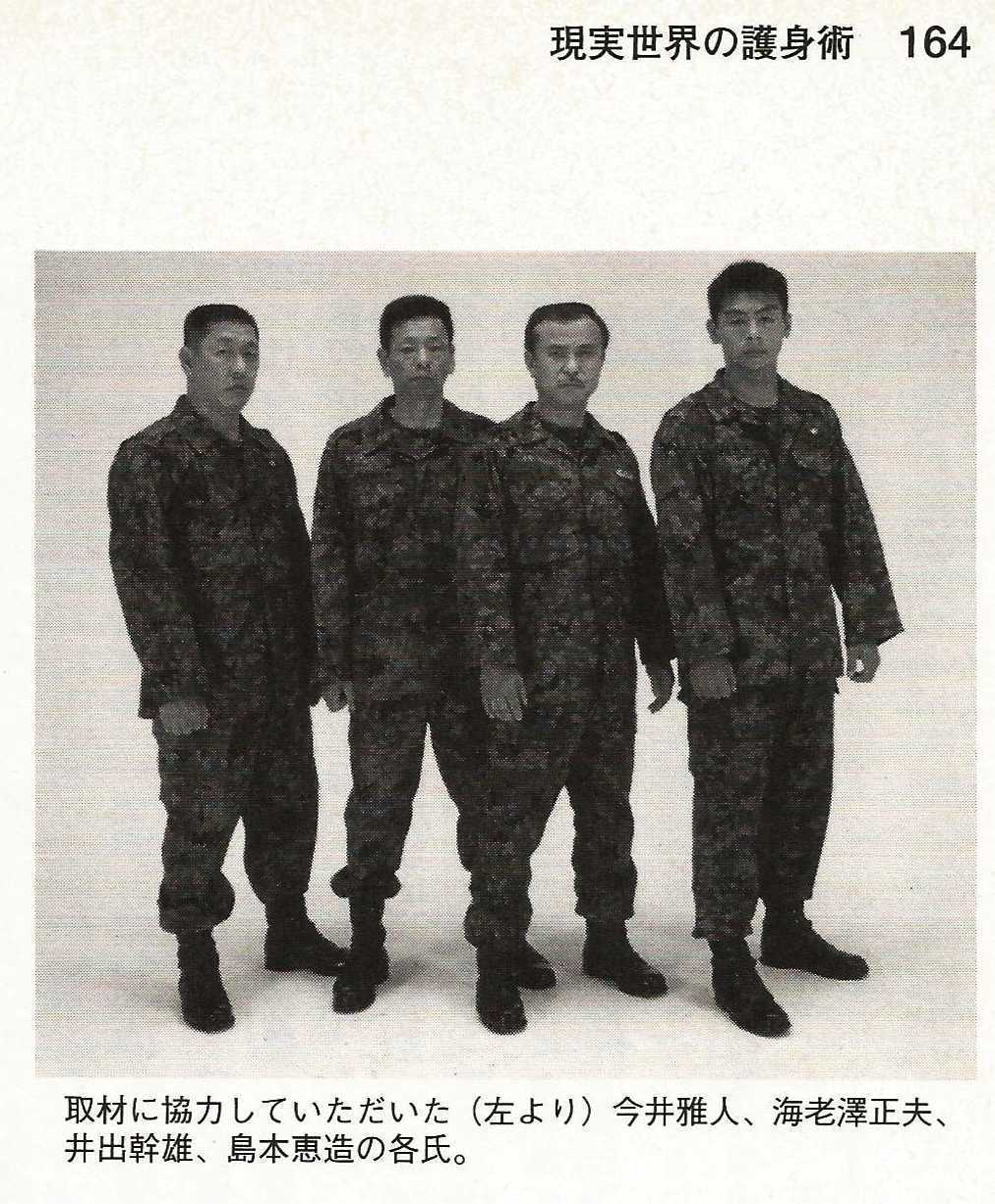
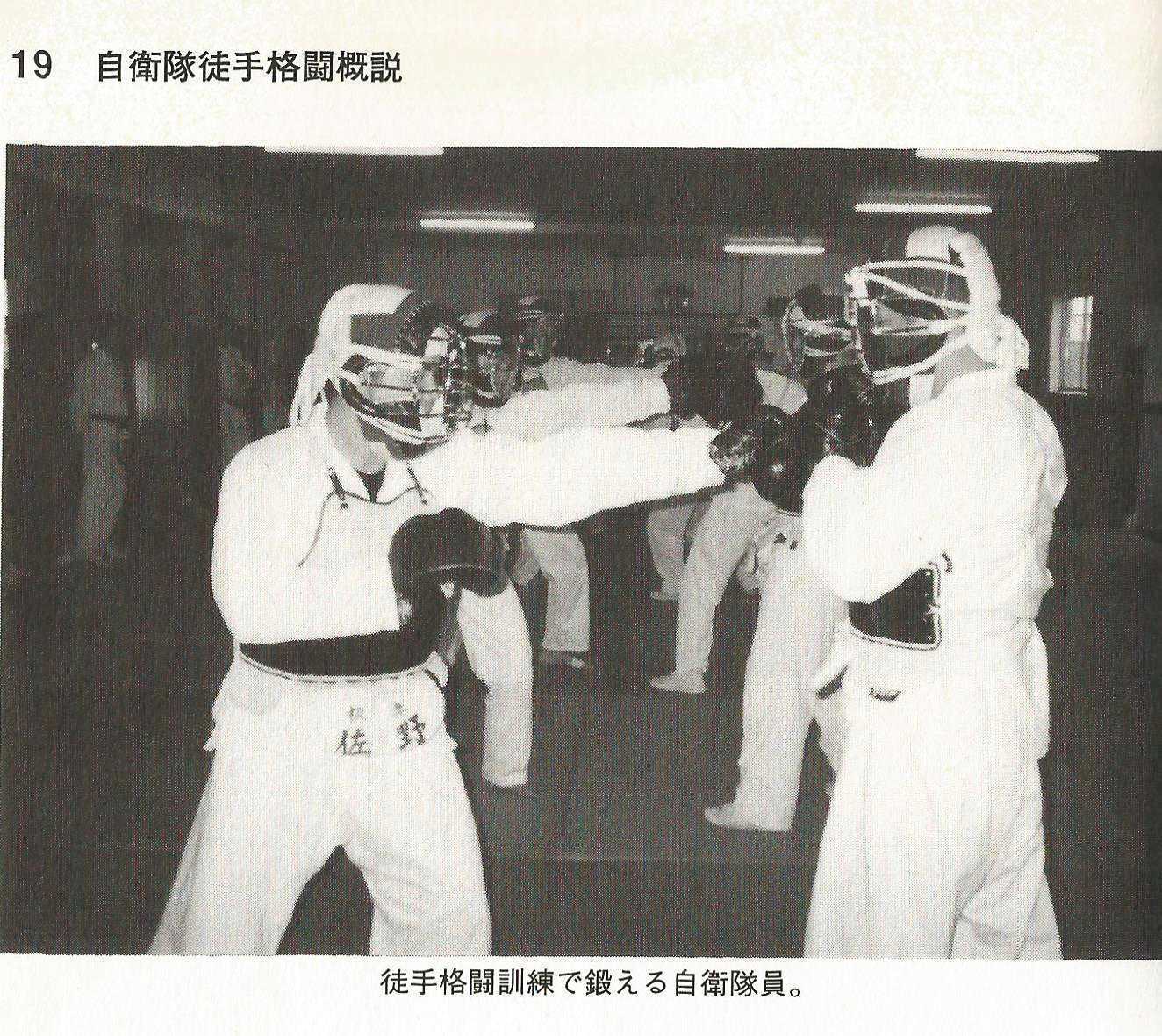
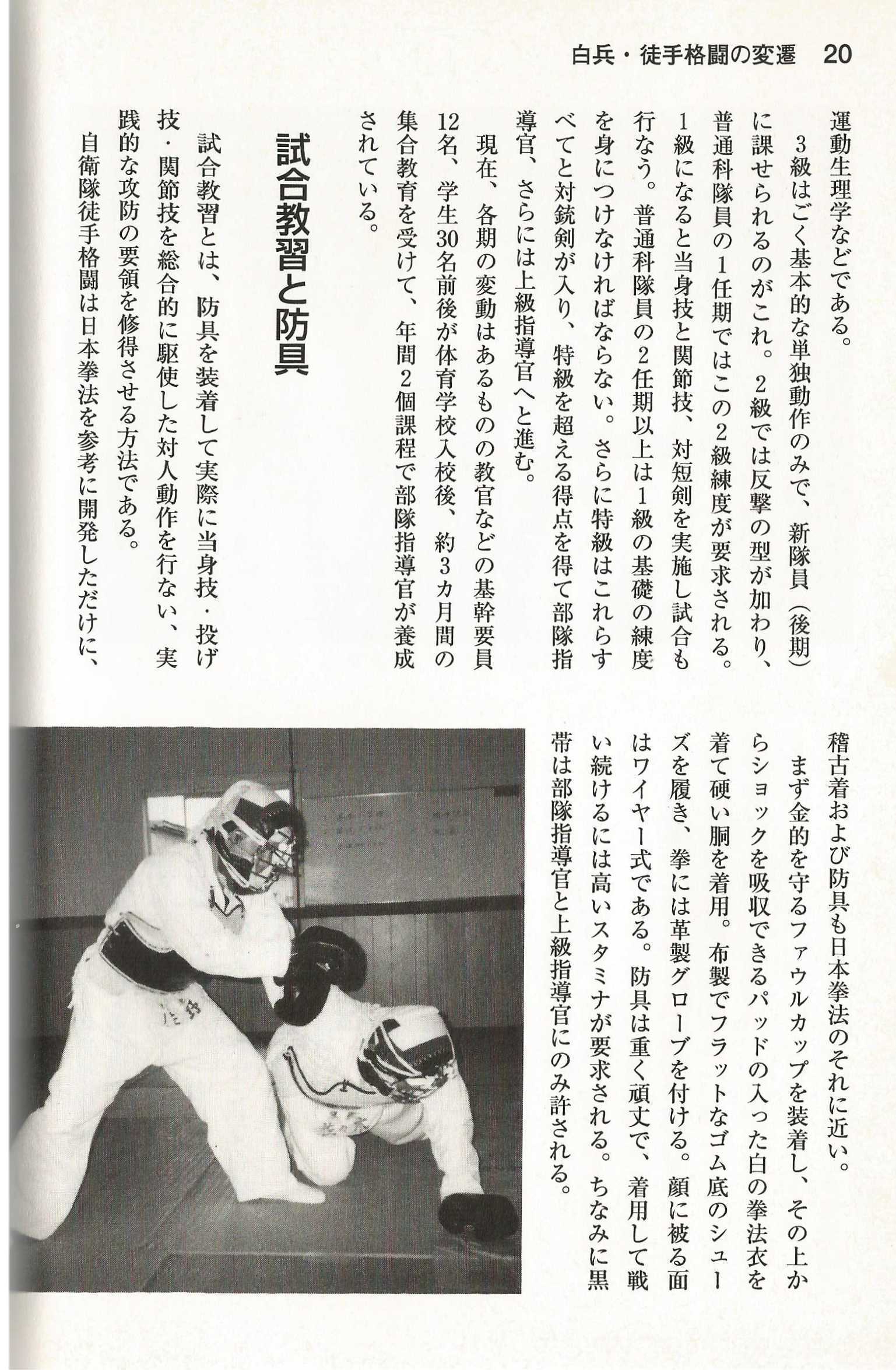
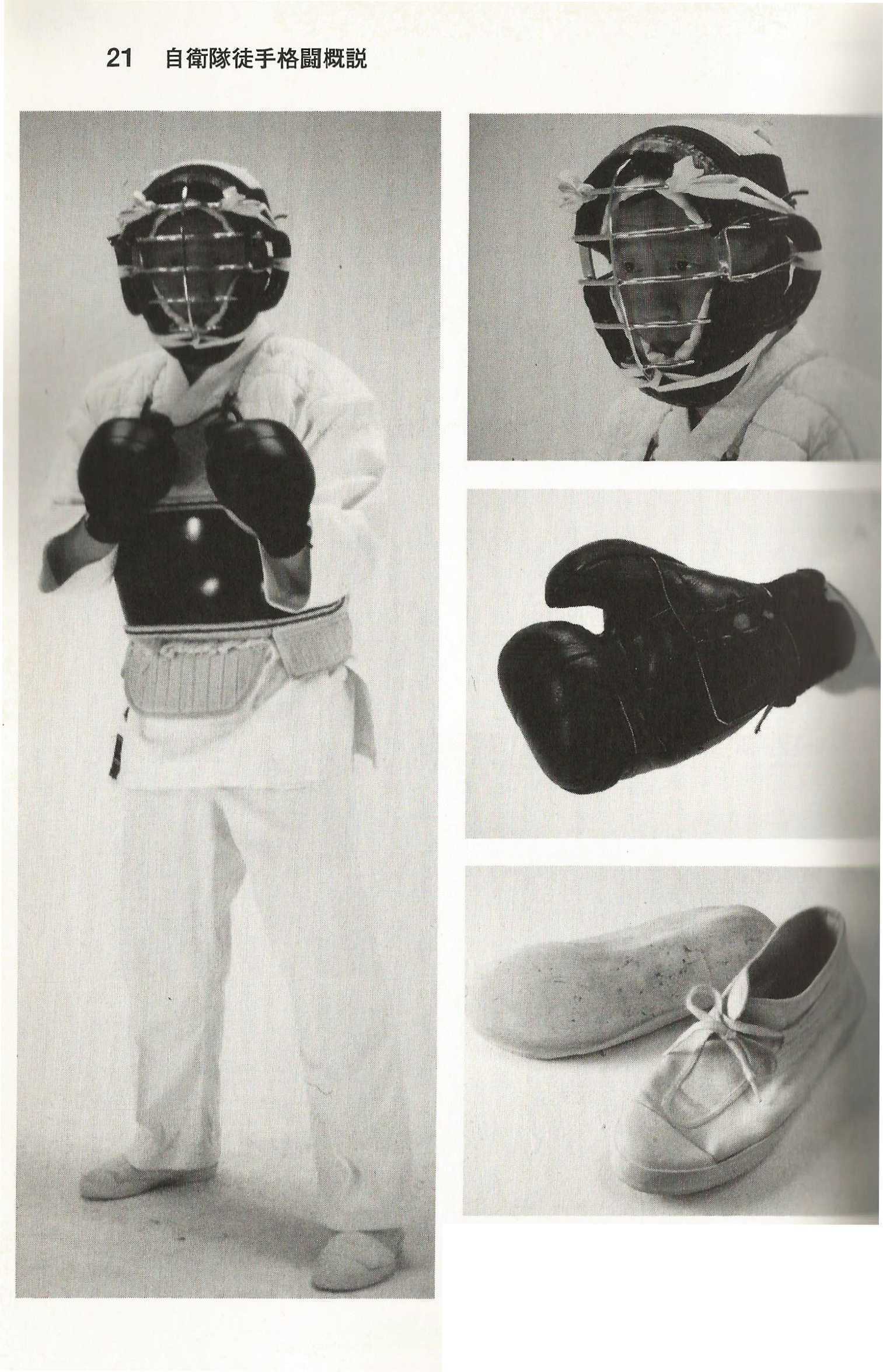
The protective equipment for Nippon Kempo is used in competition as well as in training process. The use of this equipment allows to minimize the risk of injury, since competitions as well as training are performed in full contact mode. This allows to evaluate the own abilities by means of delivering focused blows at the agile opponent.
Sawayama Muneomi compiled the following issues out of several martial arts:
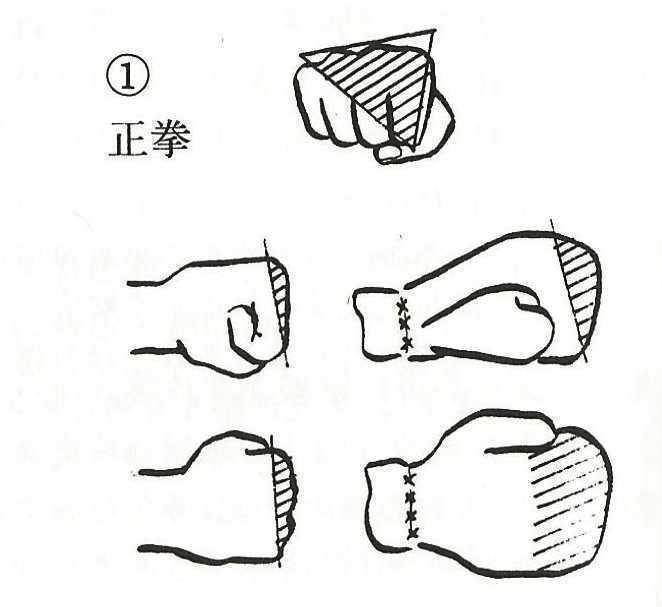
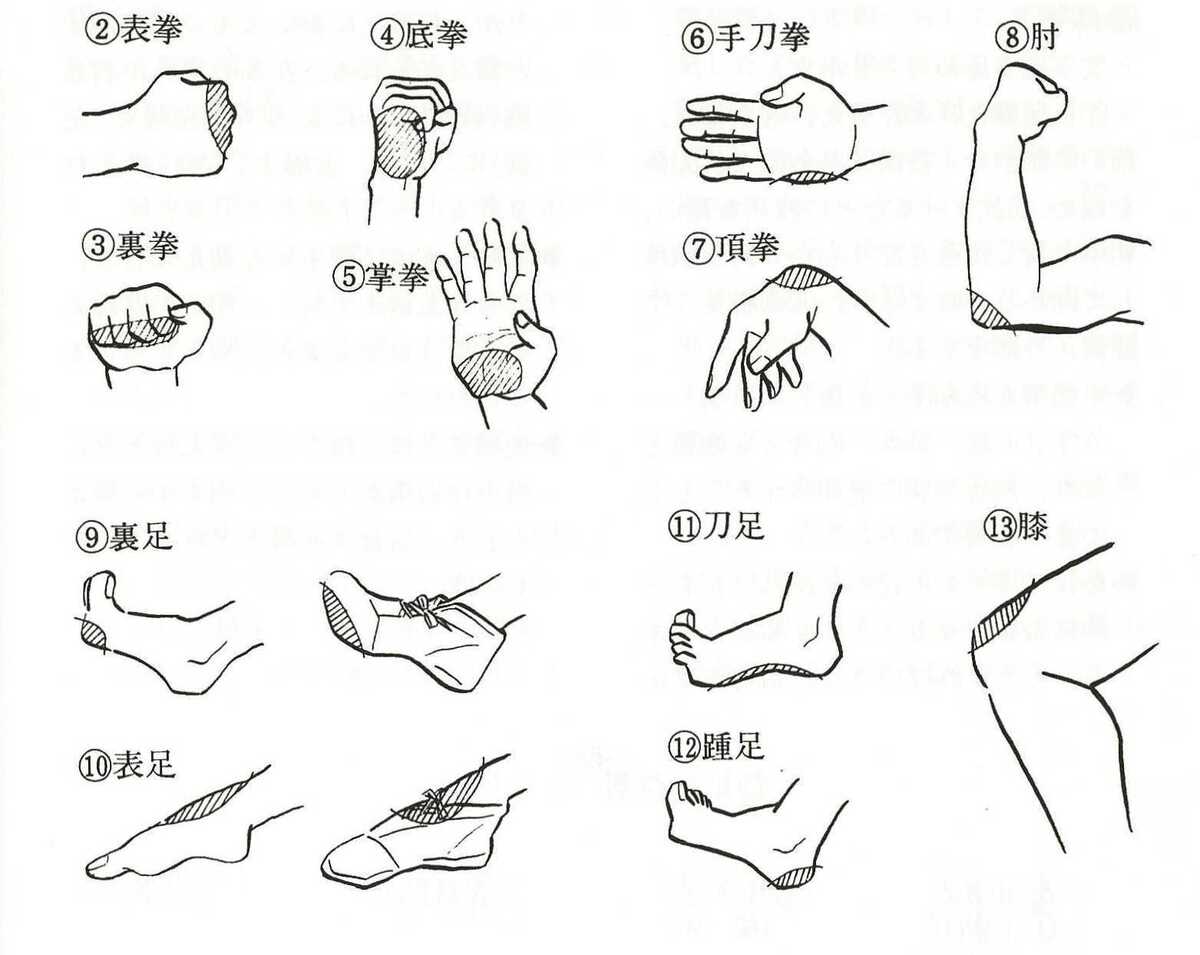
AKEN - hitting parts of the fist:
- FUSEIKEN - two bones of horizontally moved fist
- SOKKEN - two bones of vertically moved fist
- HYOKEN - backside of the fist
- RIKEN - inside part of the fist
- TAIKEN - bottom part of vertically moved fist
KAISHYOKEN - striking parts of the open hand:
- SHYOKEN - bottom part of the palm
- SHYUTOKEN -palm edge
- CHYOKEN - backside part of wrist
- HIJI - elbow
SOKKYAKU- striking parts of the feet
- RISOKU - fingertips
- HYOSOKU - leg lifting
- TOSOKU - foot edge
- SHYOSOKU - heel
- HIZA - knee
KAMAE - stands

- SHOMEN NO KAMAE - frontal stand
- CHYUDAN NO KAMAE - middle stand
- JYODAN NO KAMAE - upper stand
- GEDAN NO KAMAE - lower stand
ASHISABAKI - movements
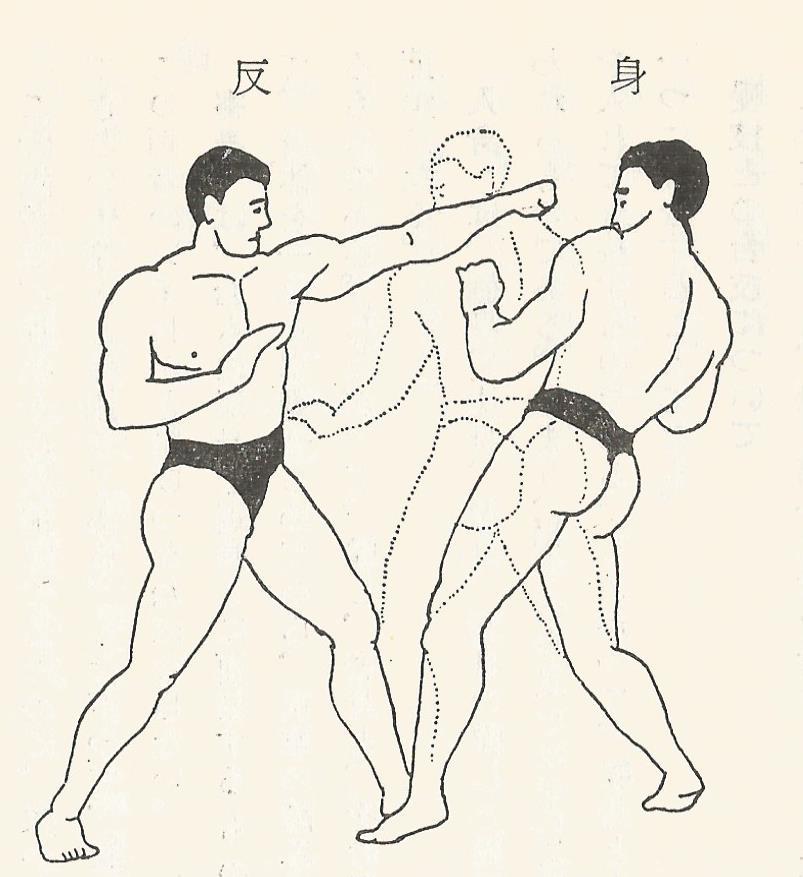
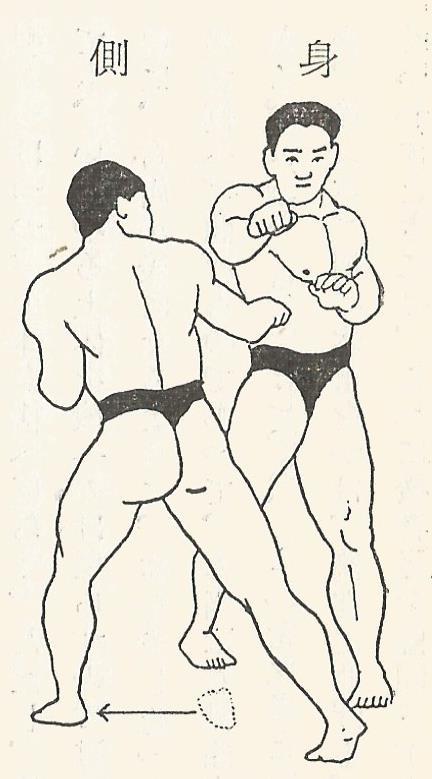
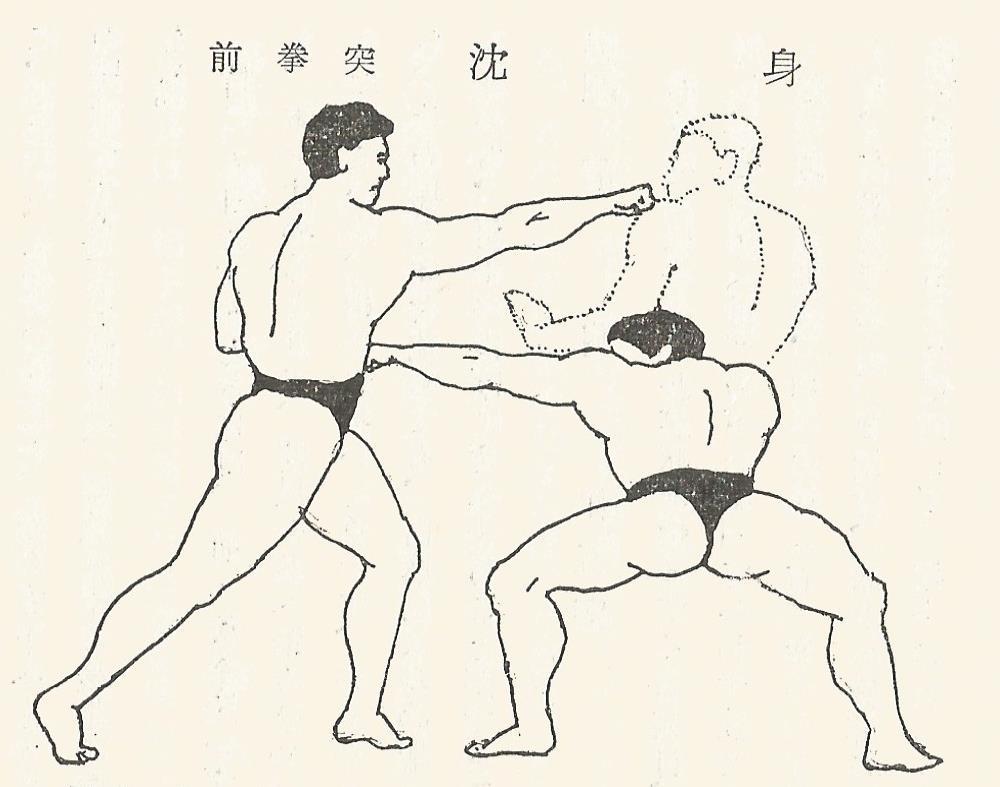
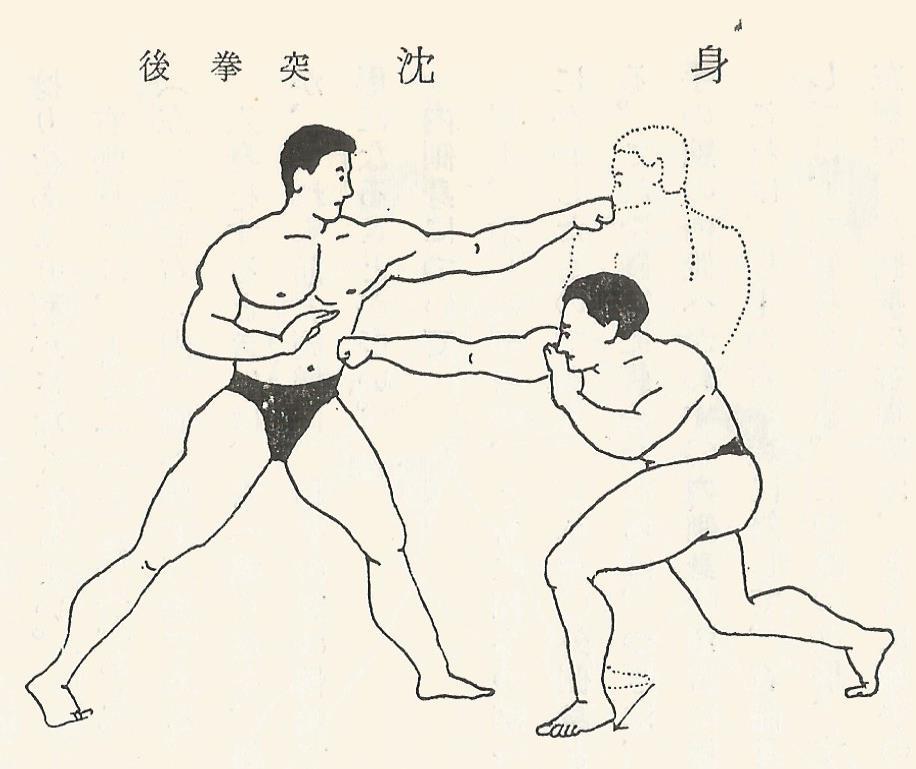
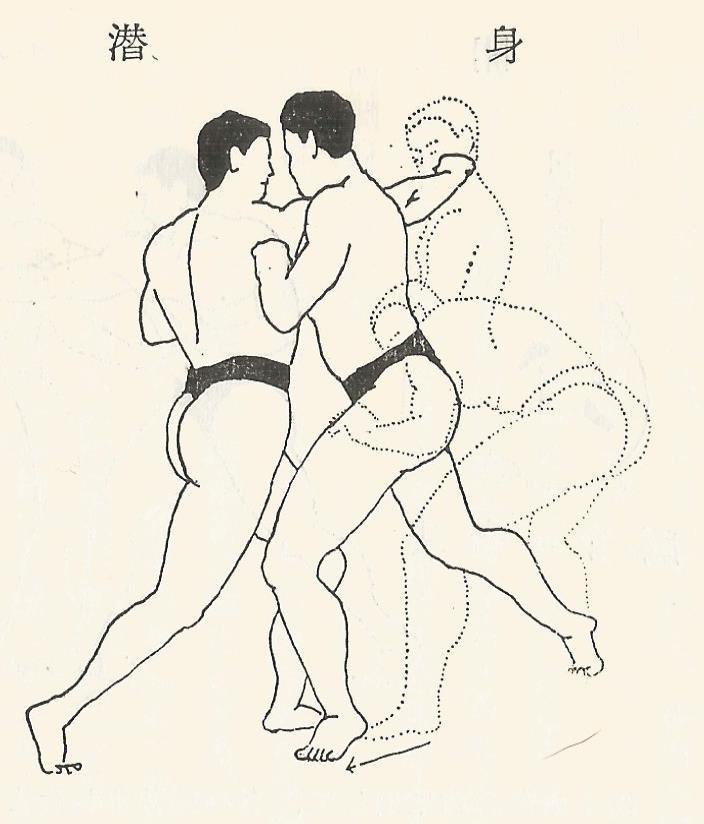
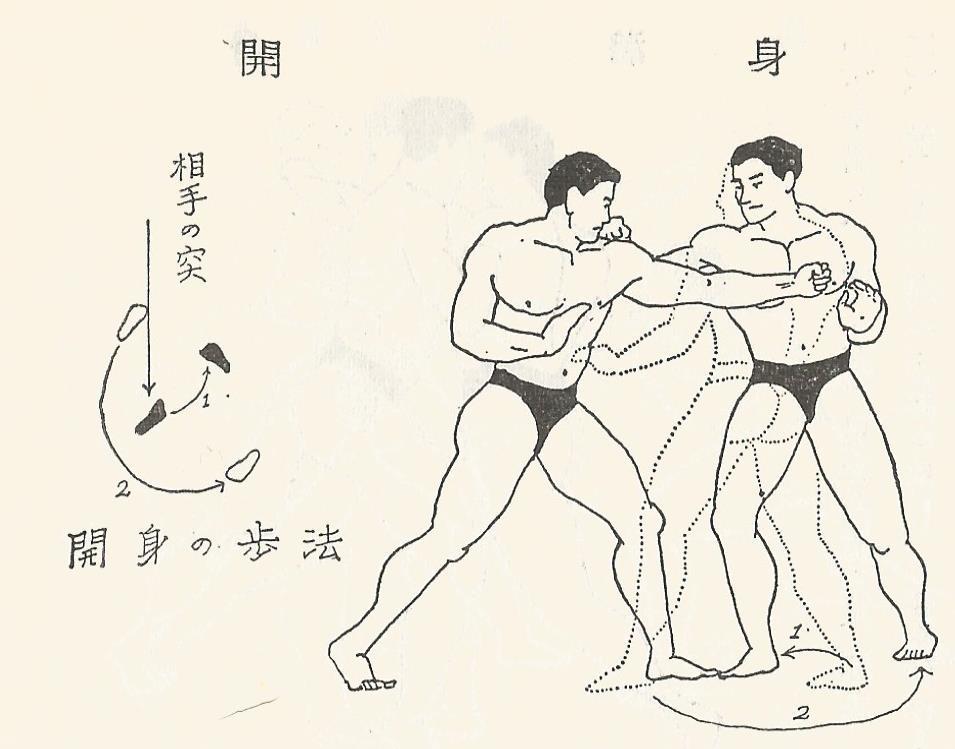
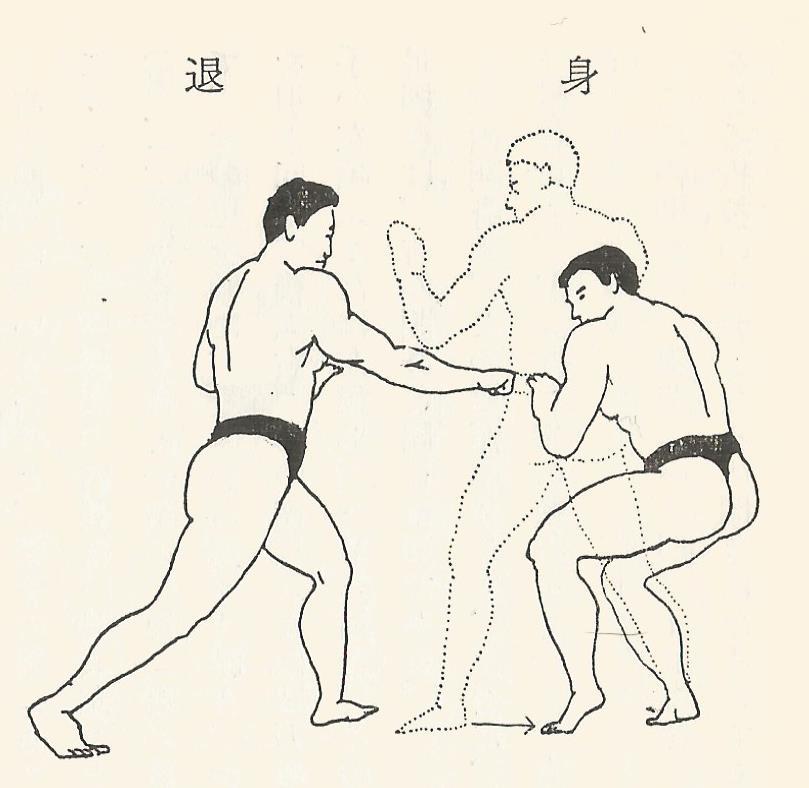
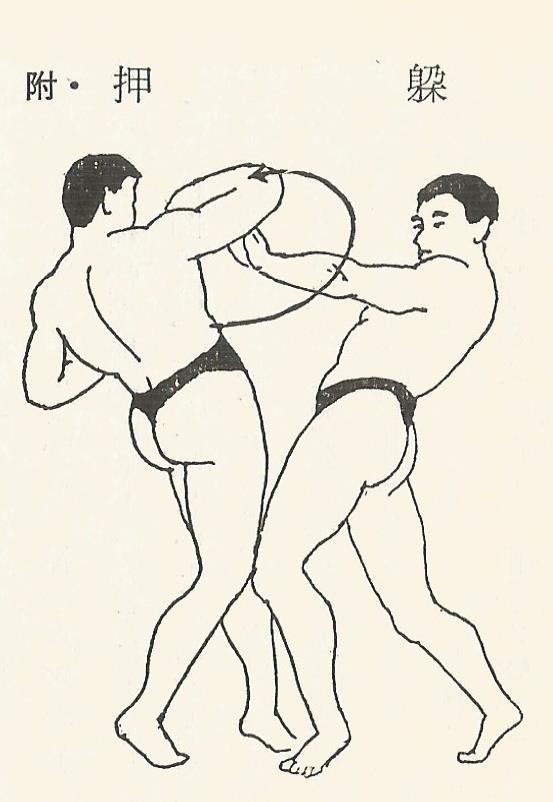
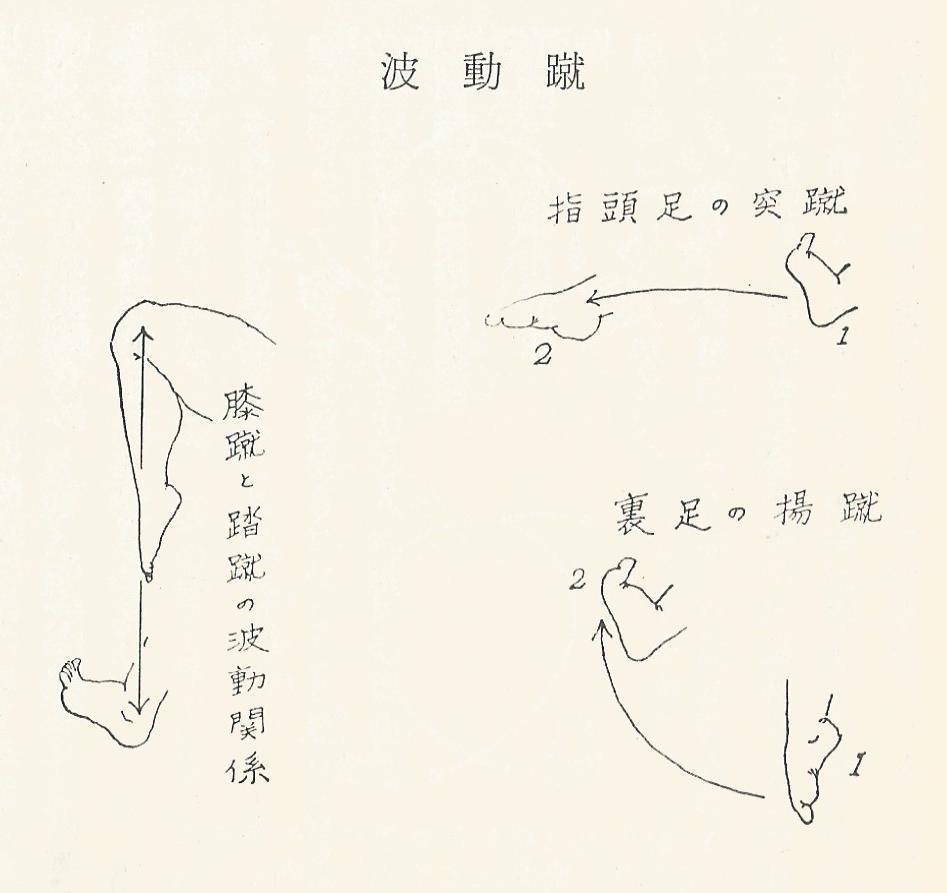
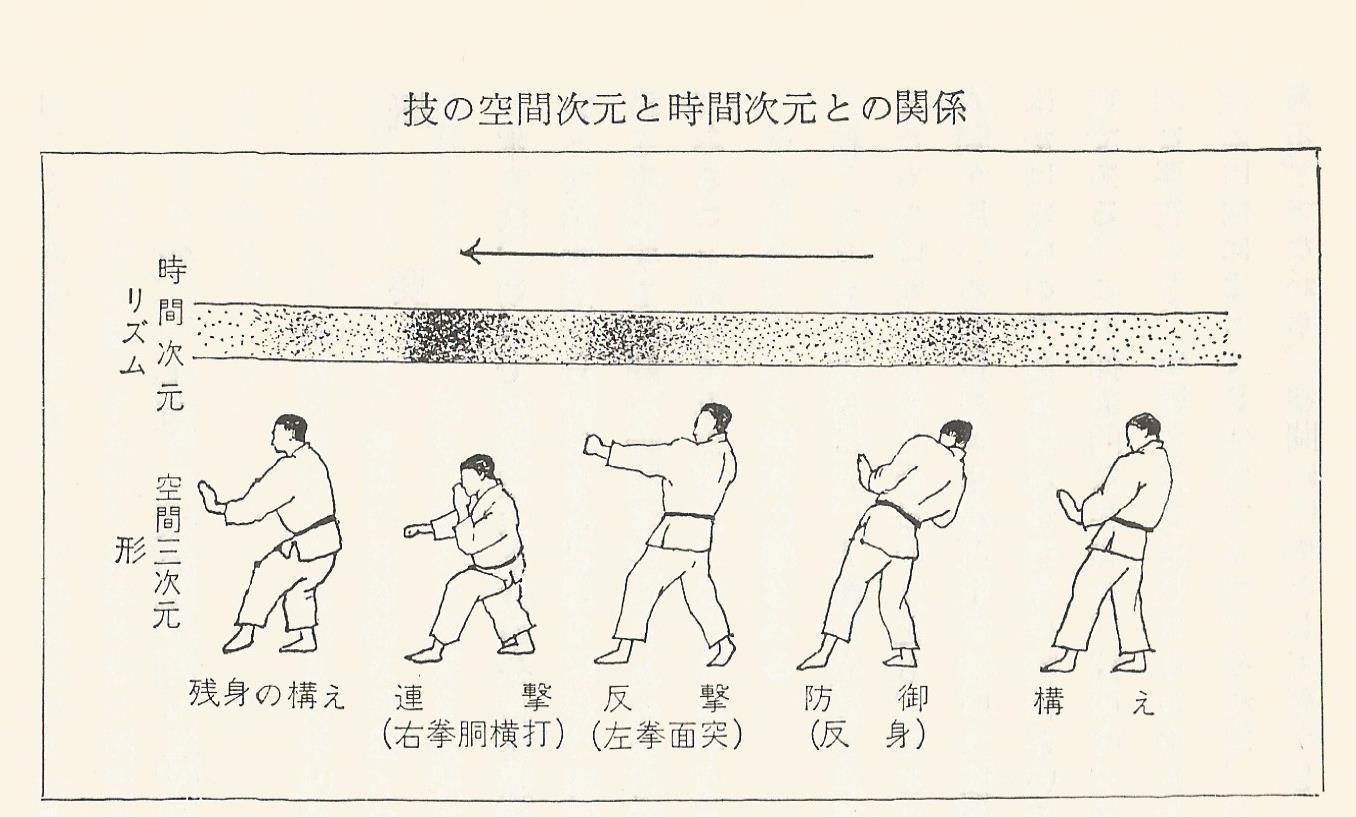
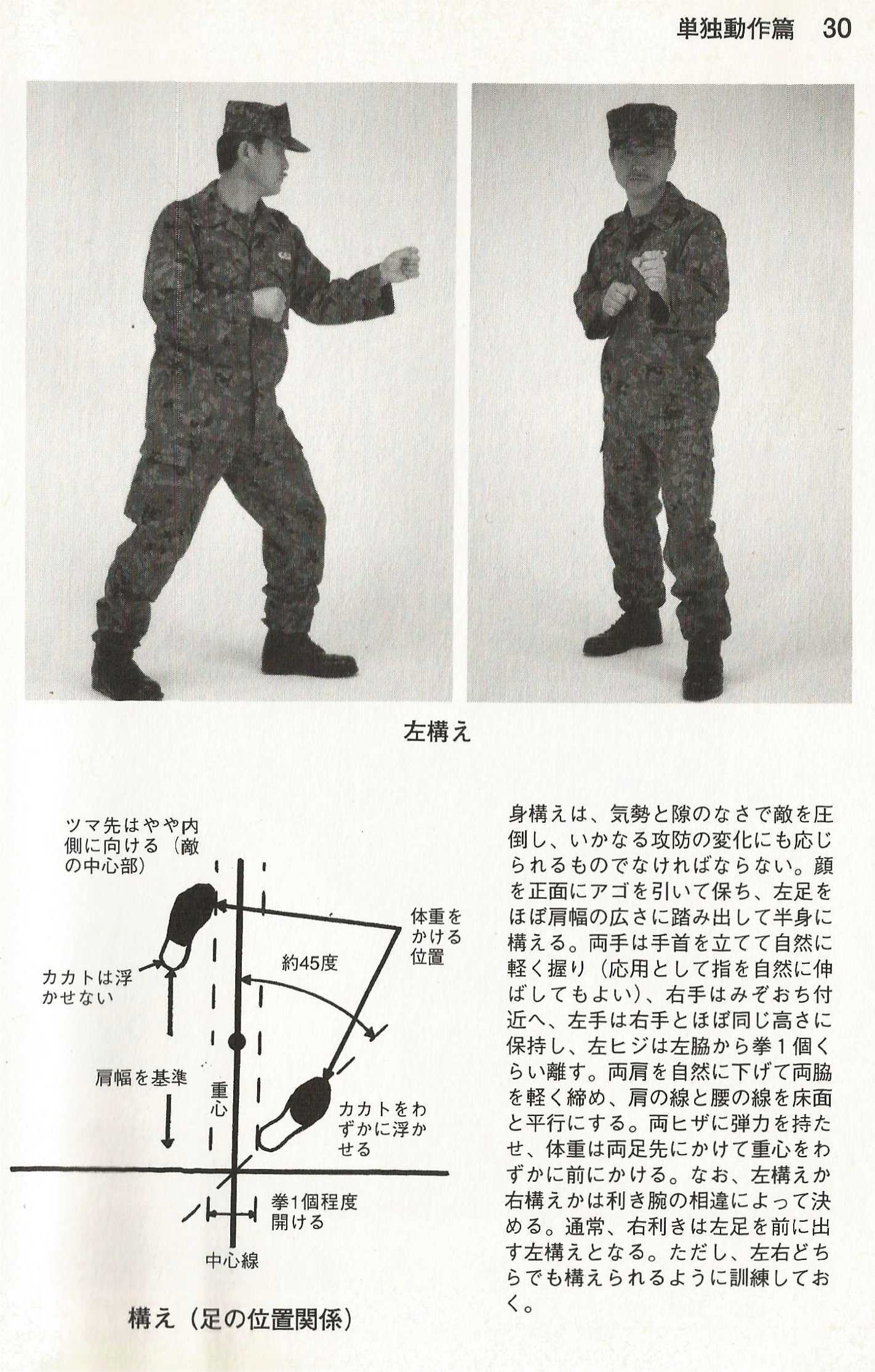
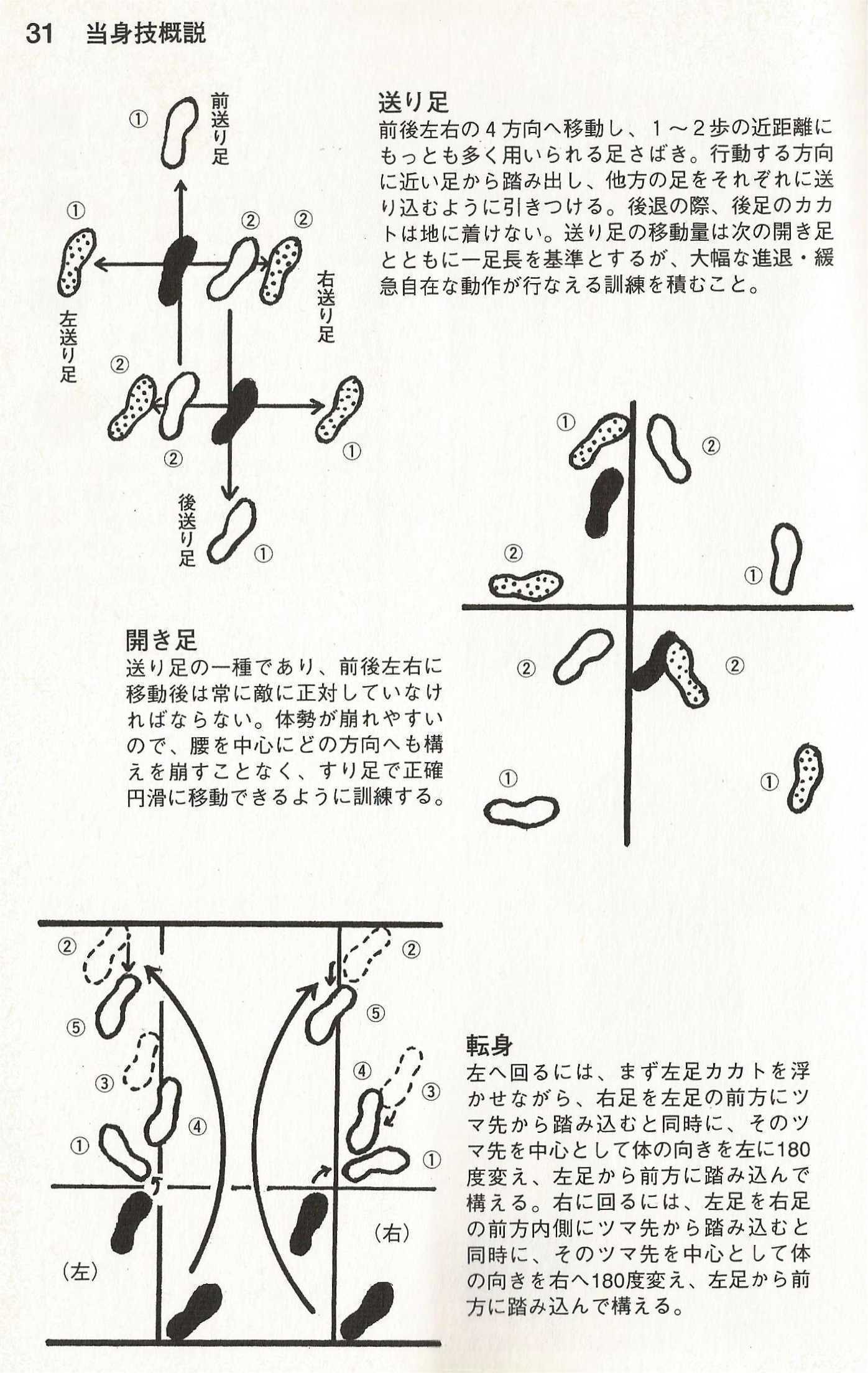
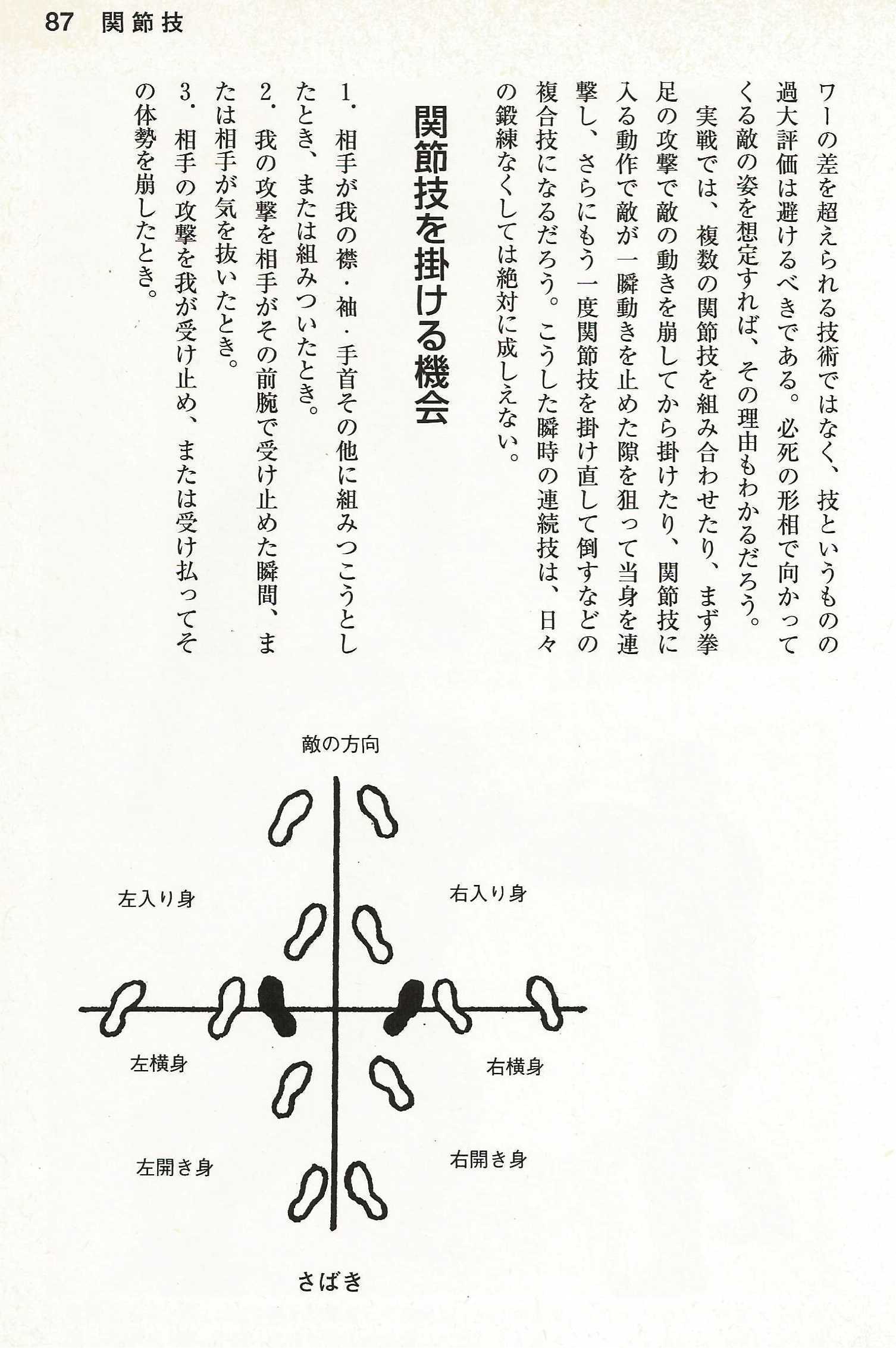
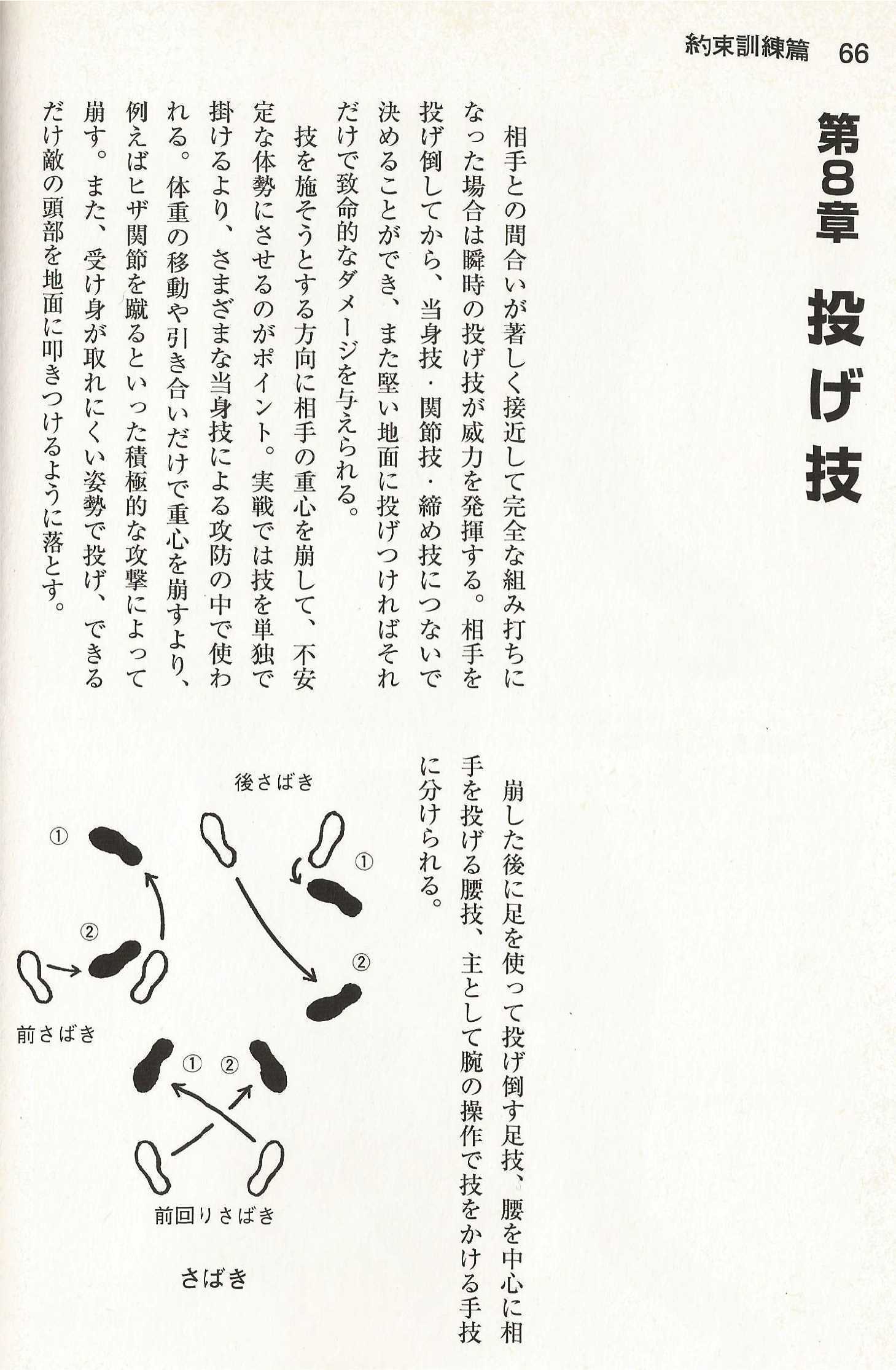
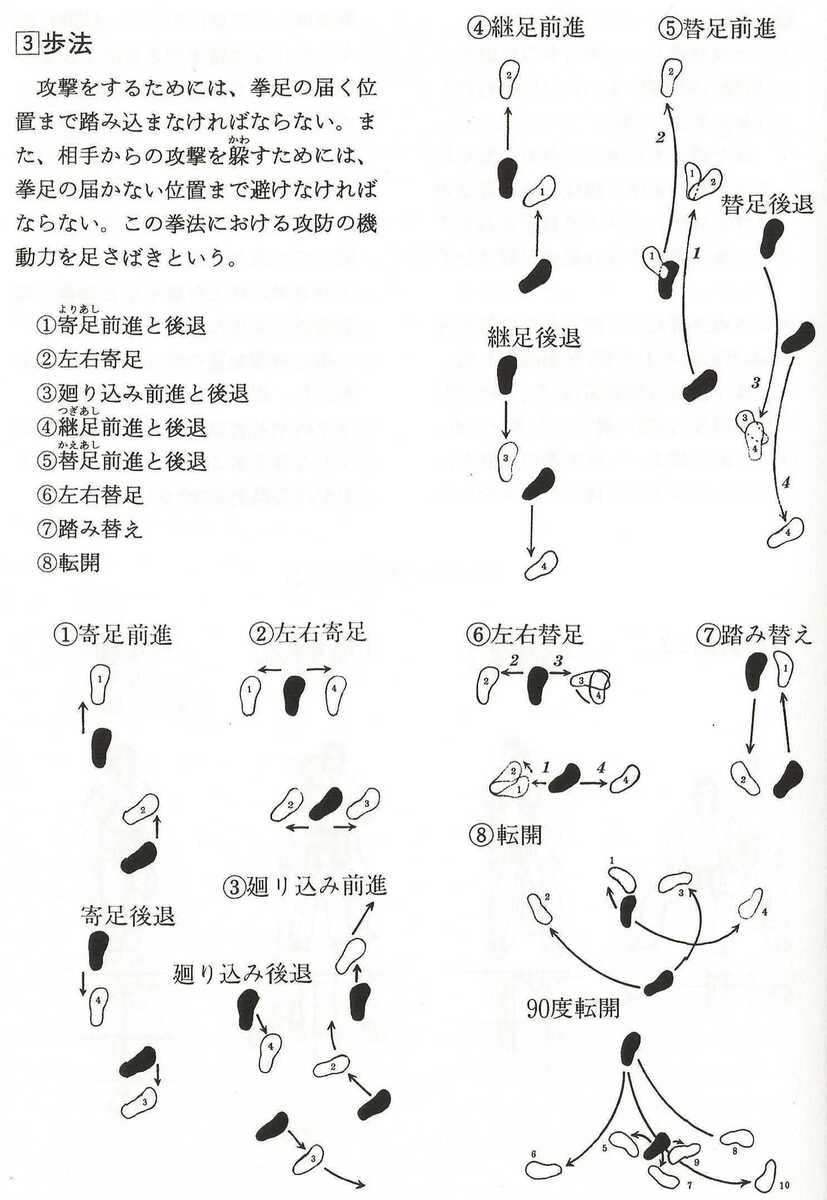
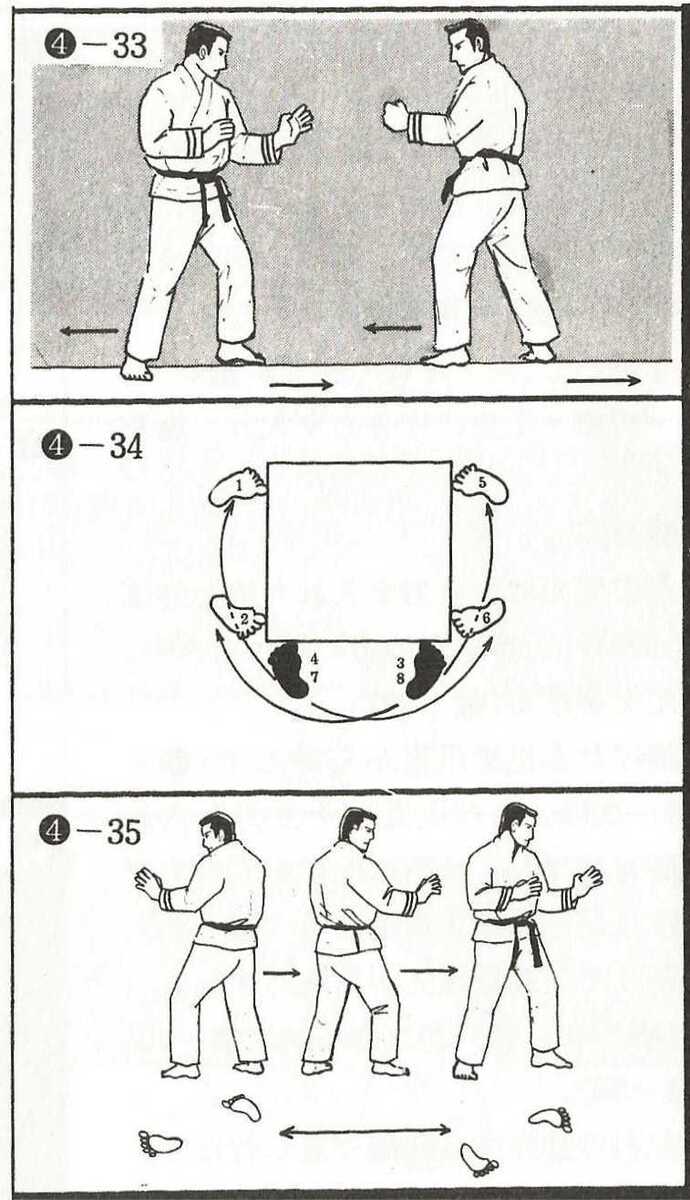
- MAWARI KOMI - moving around
- USHIRO-MAE YORI ASHI - hopping step
- TSUGI ASHISI - chasse step
- KAEASHI - lunging
- FUMIKAE - changing of the feet stand without movement
- TENKAI - yeilding sideward
- SORIMI - yeilding backward
- SHIZUMIMI - yeilding forward
- HINERIMI - leg movement sideward
- KUGURIMI - ducking under arm
- OTOSHIHIKIMI - pulling back hips
- HIRAKIMI - due to movement
UKEMI WAZA - insurance when you fall
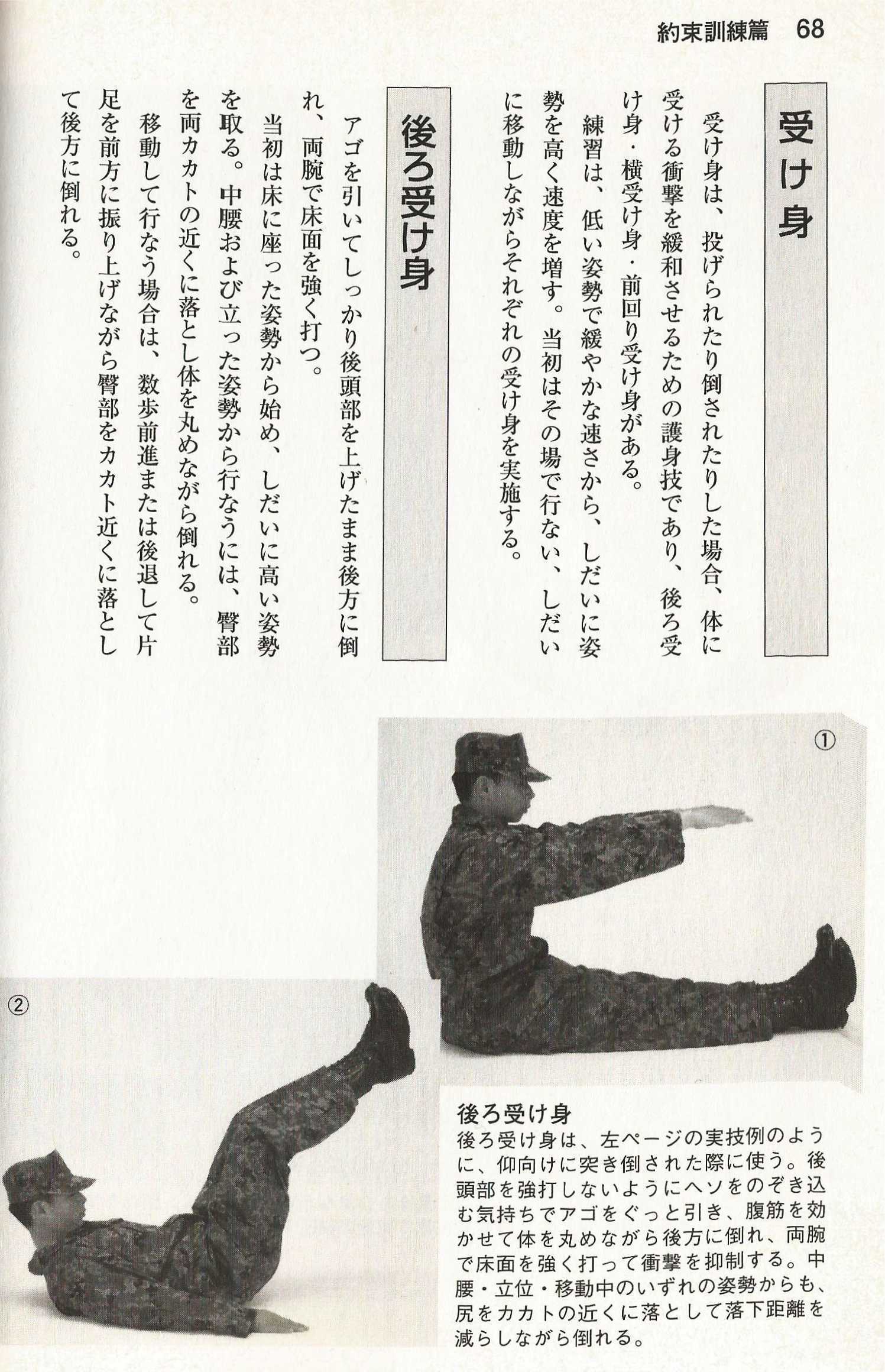
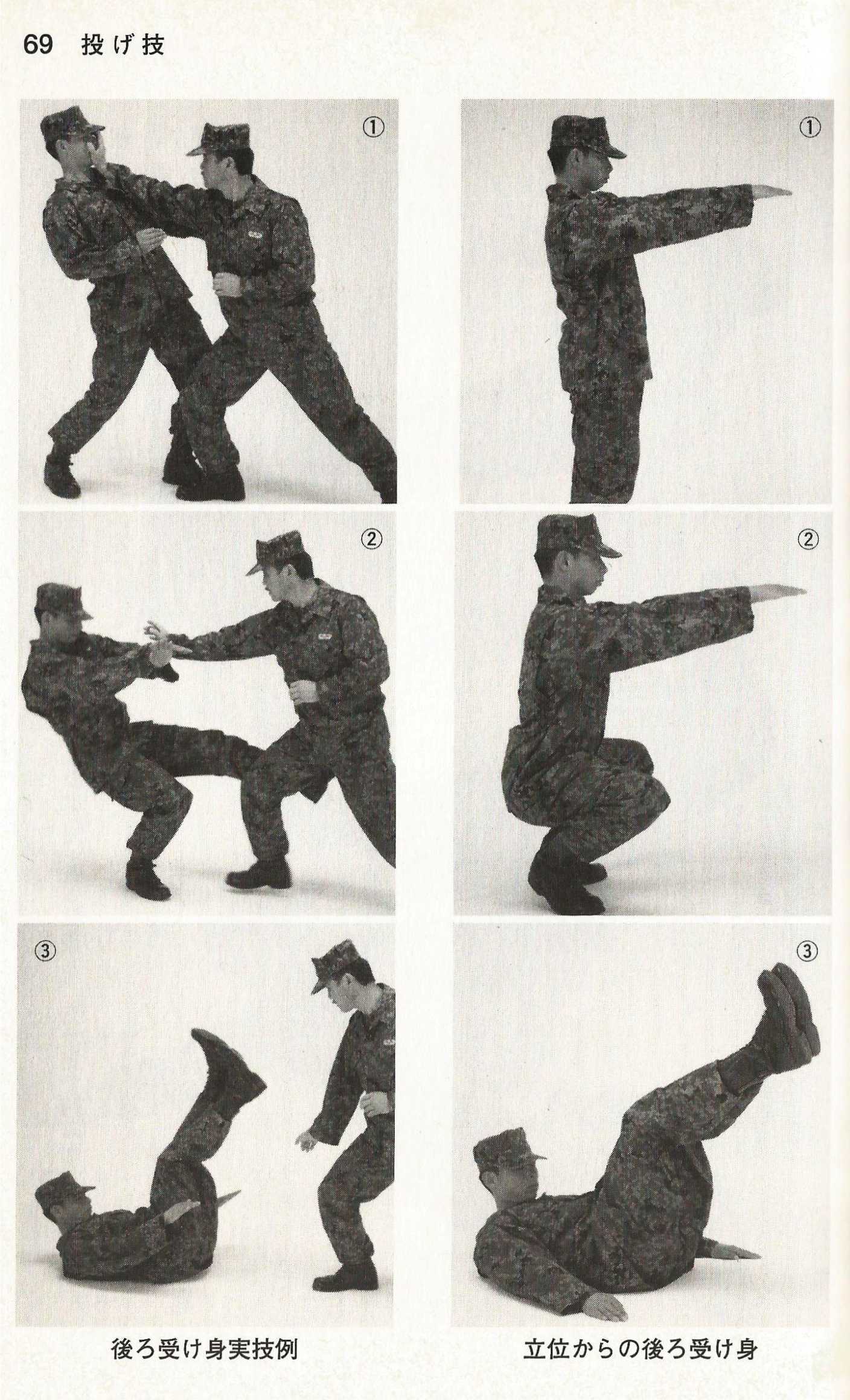
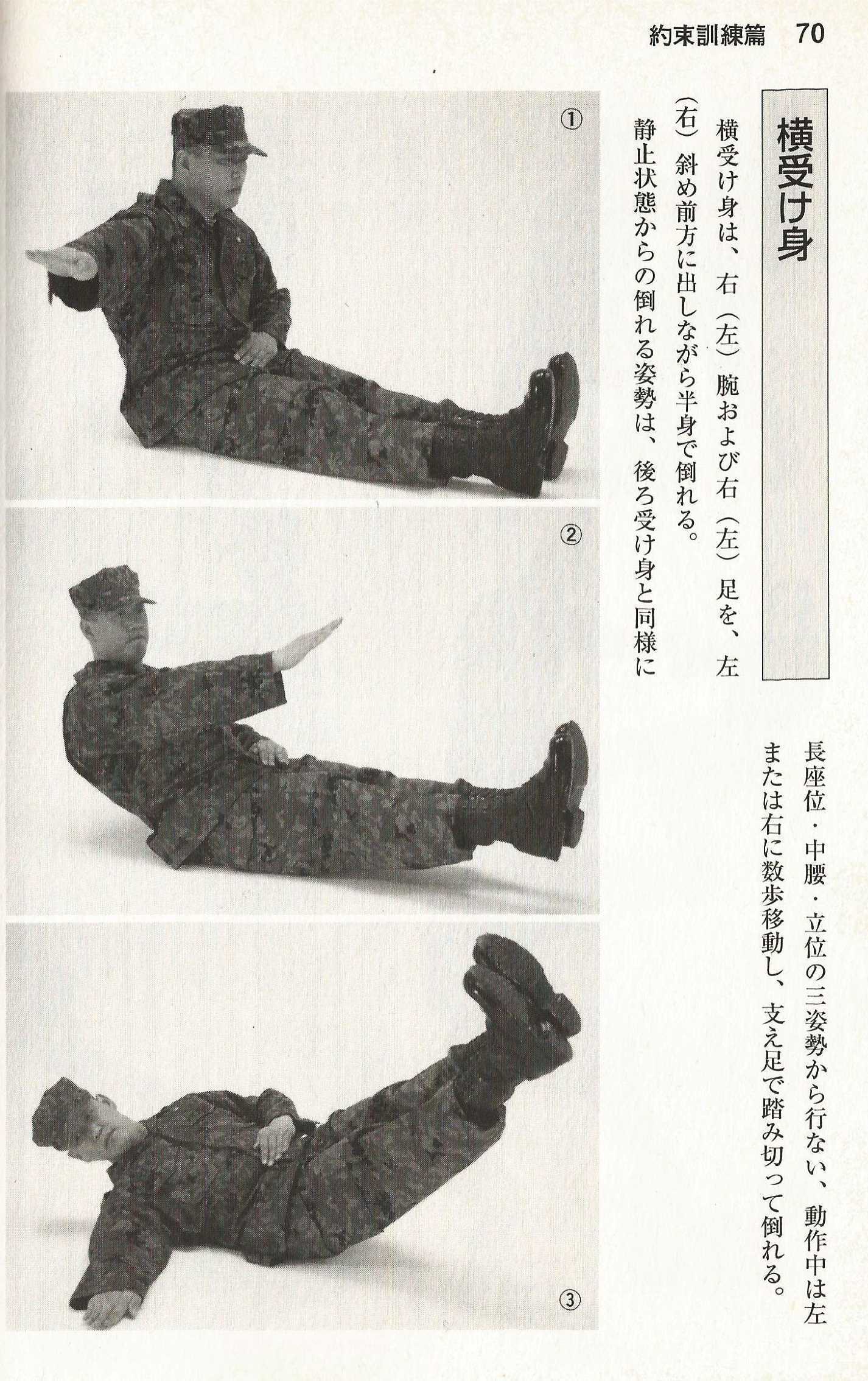
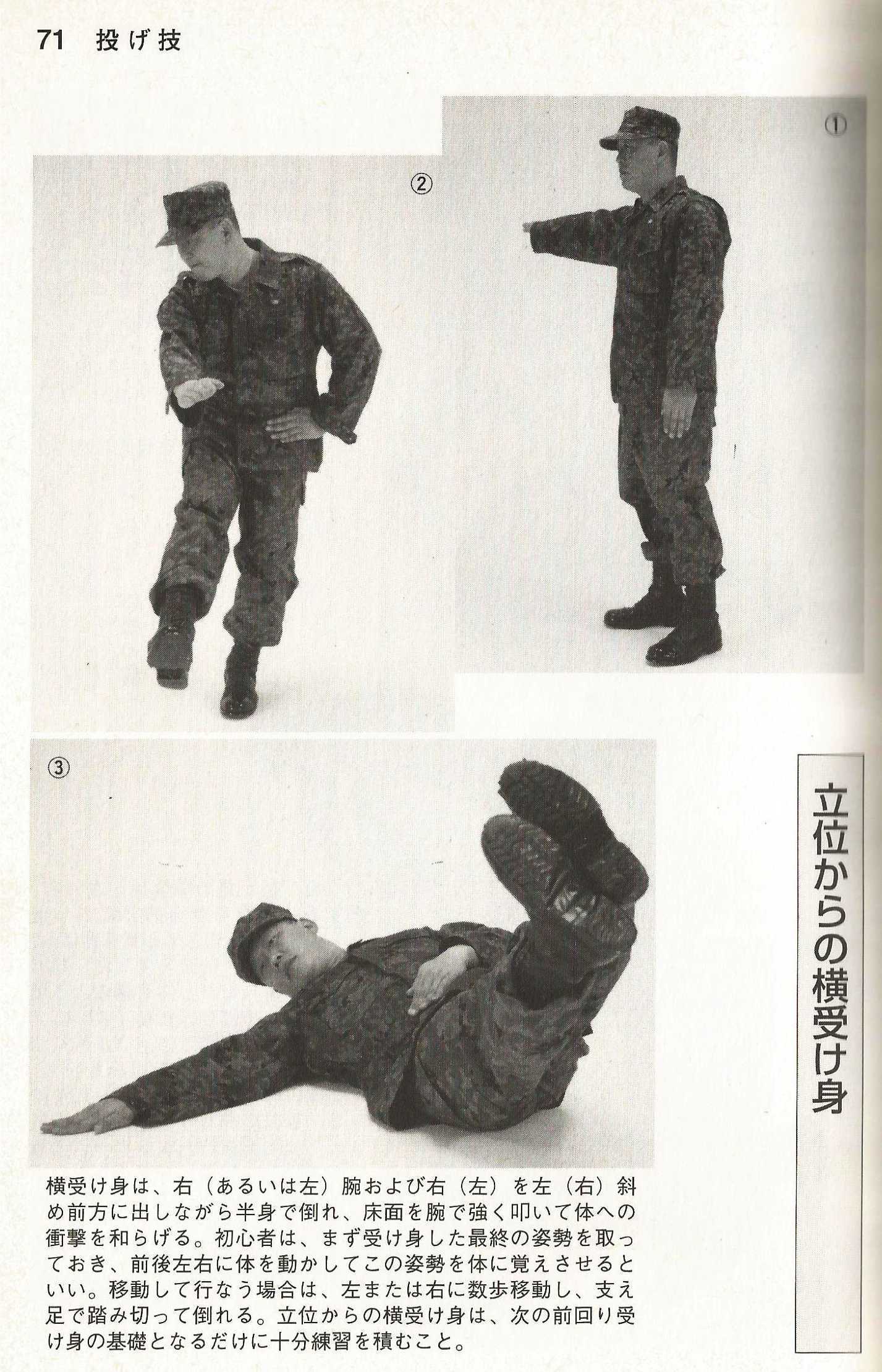
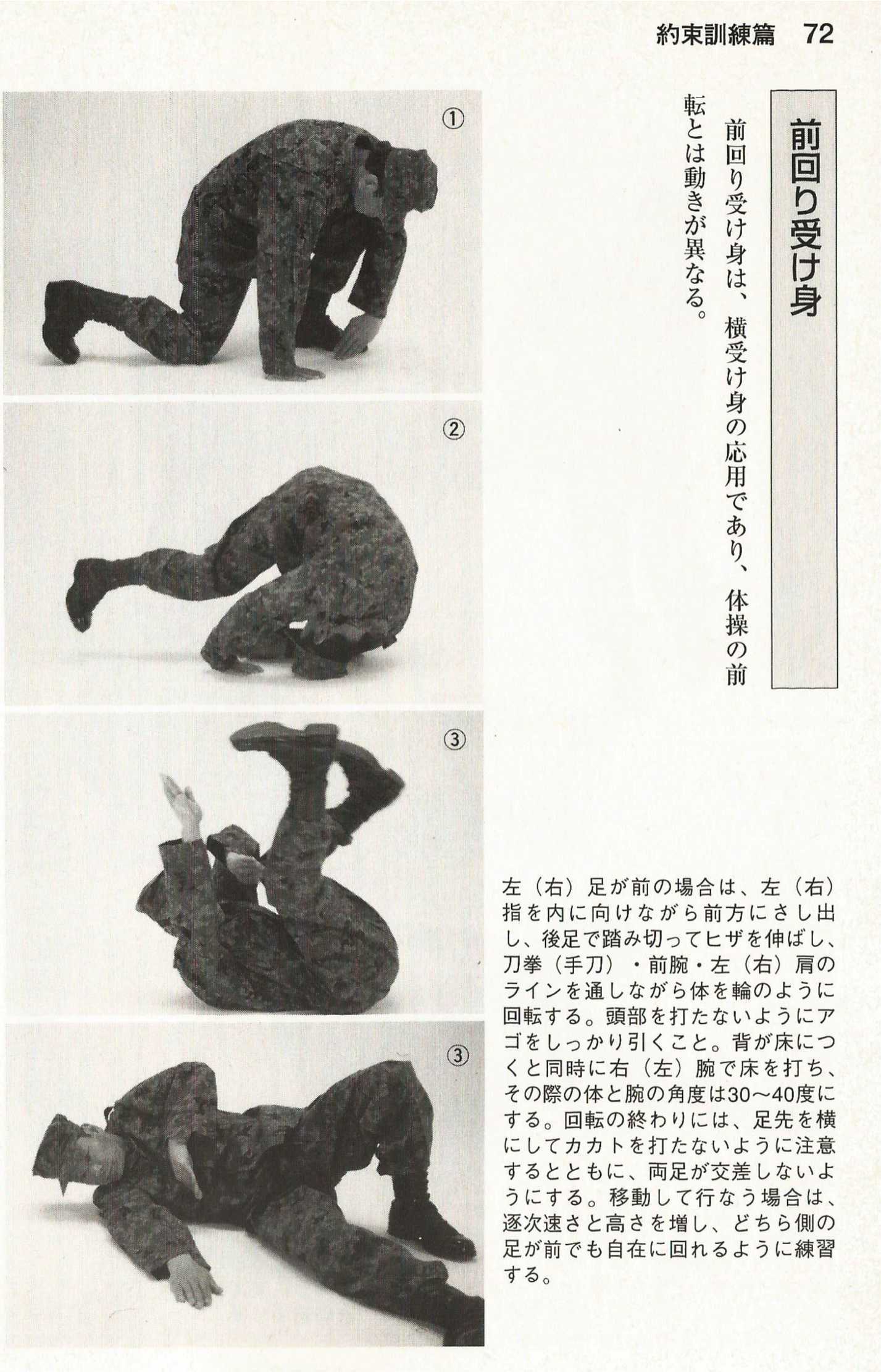
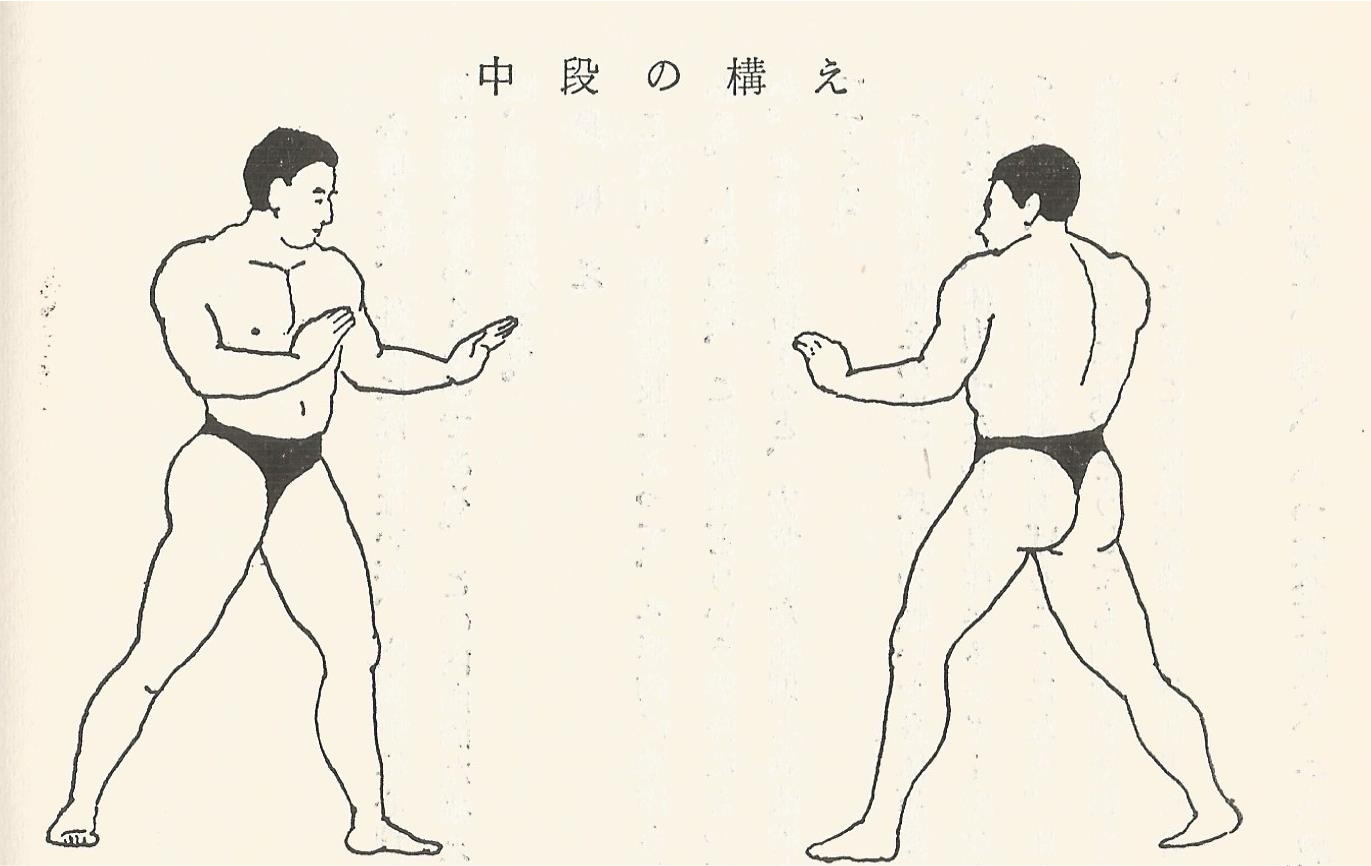
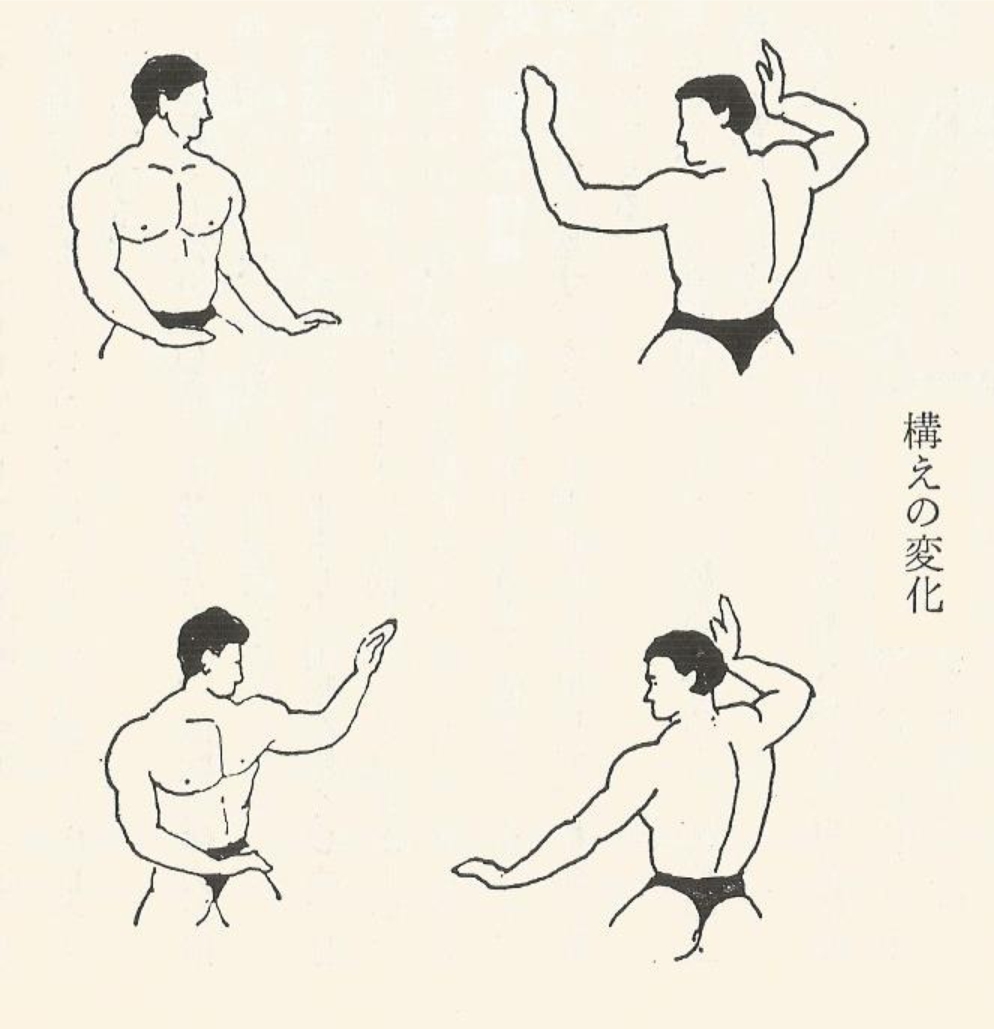
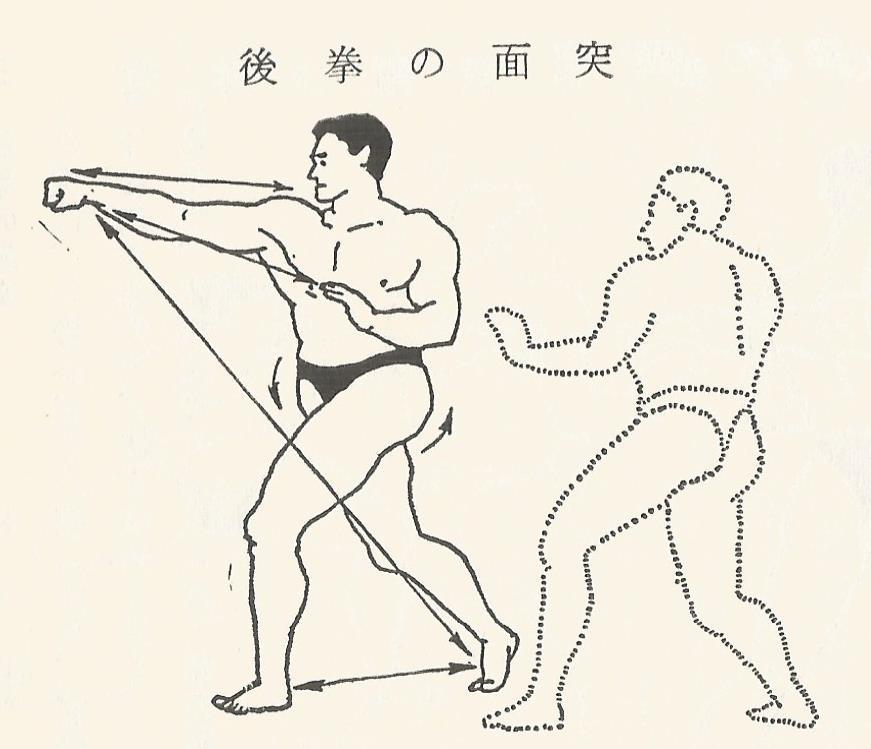
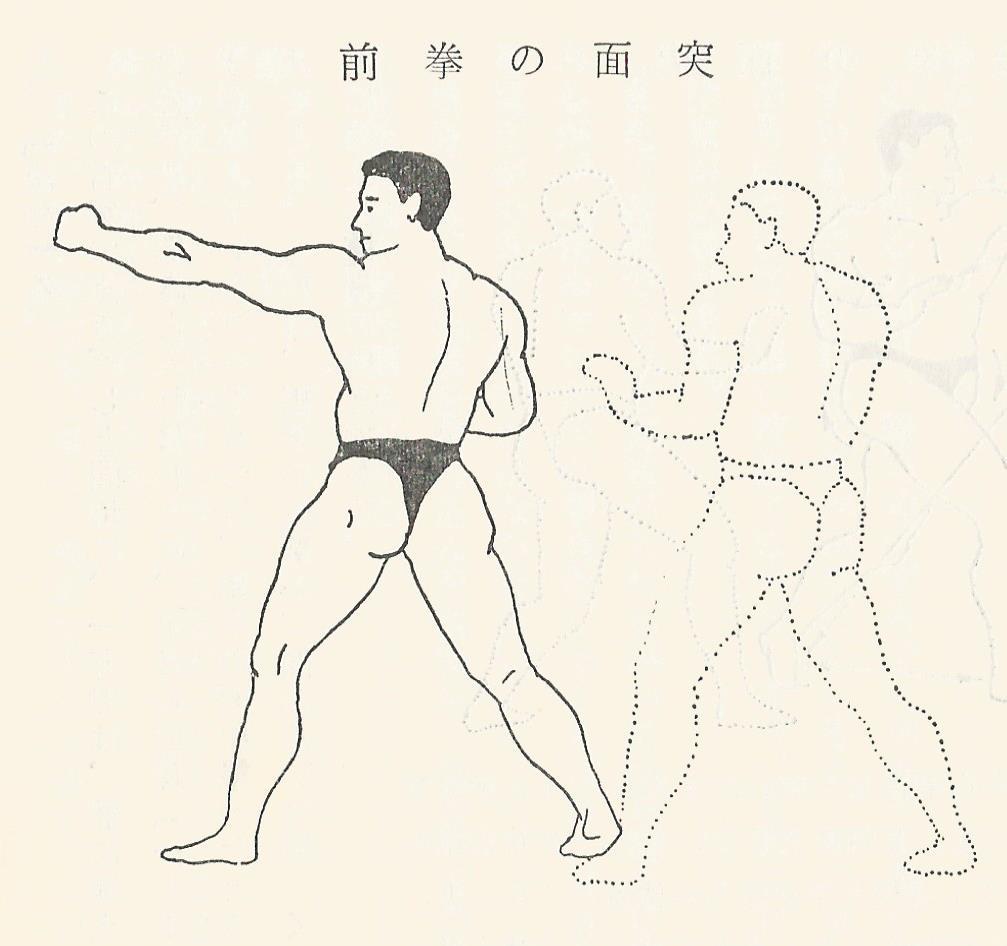

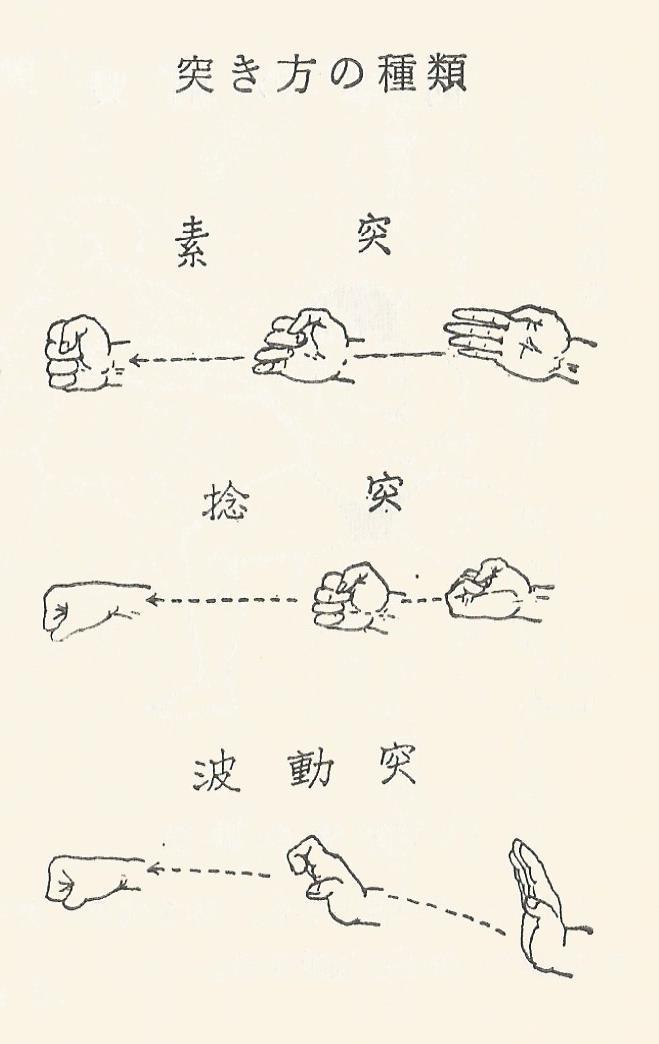
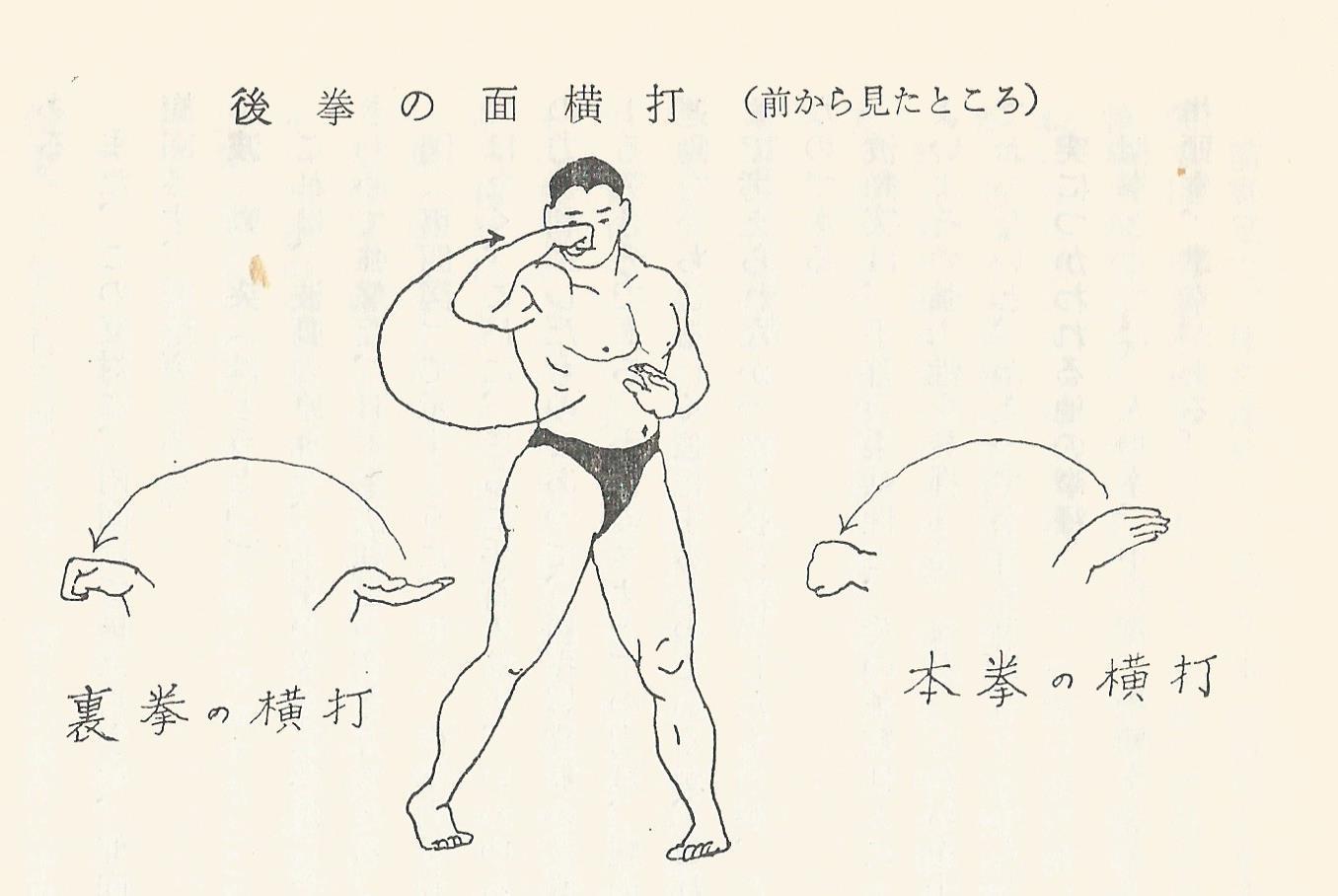
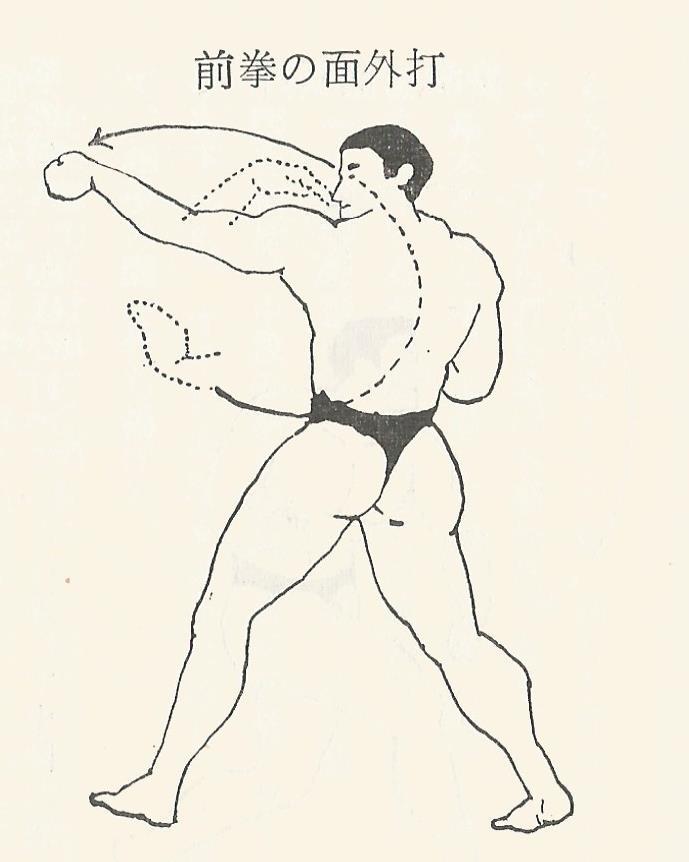
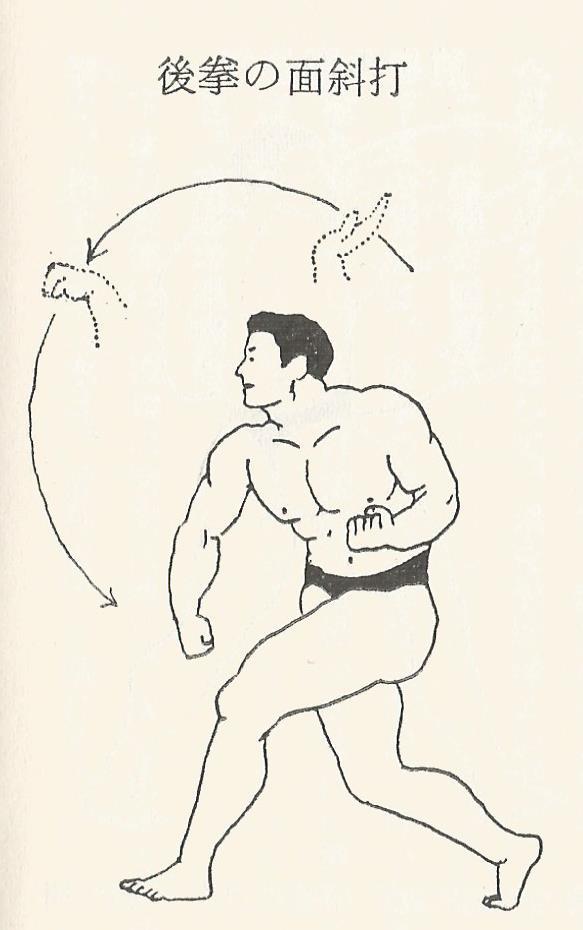

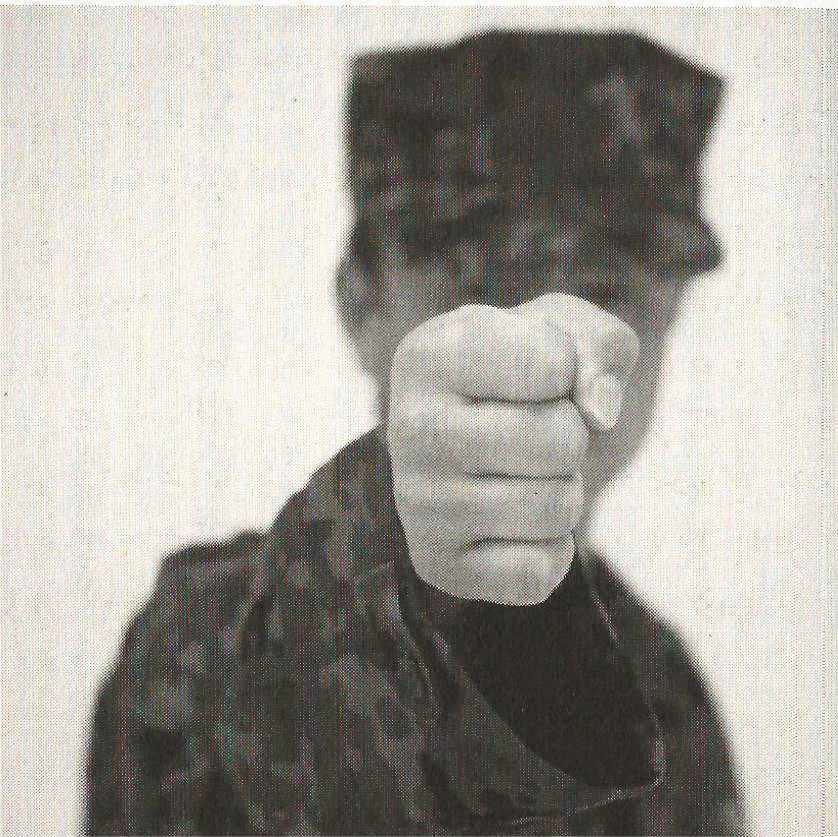
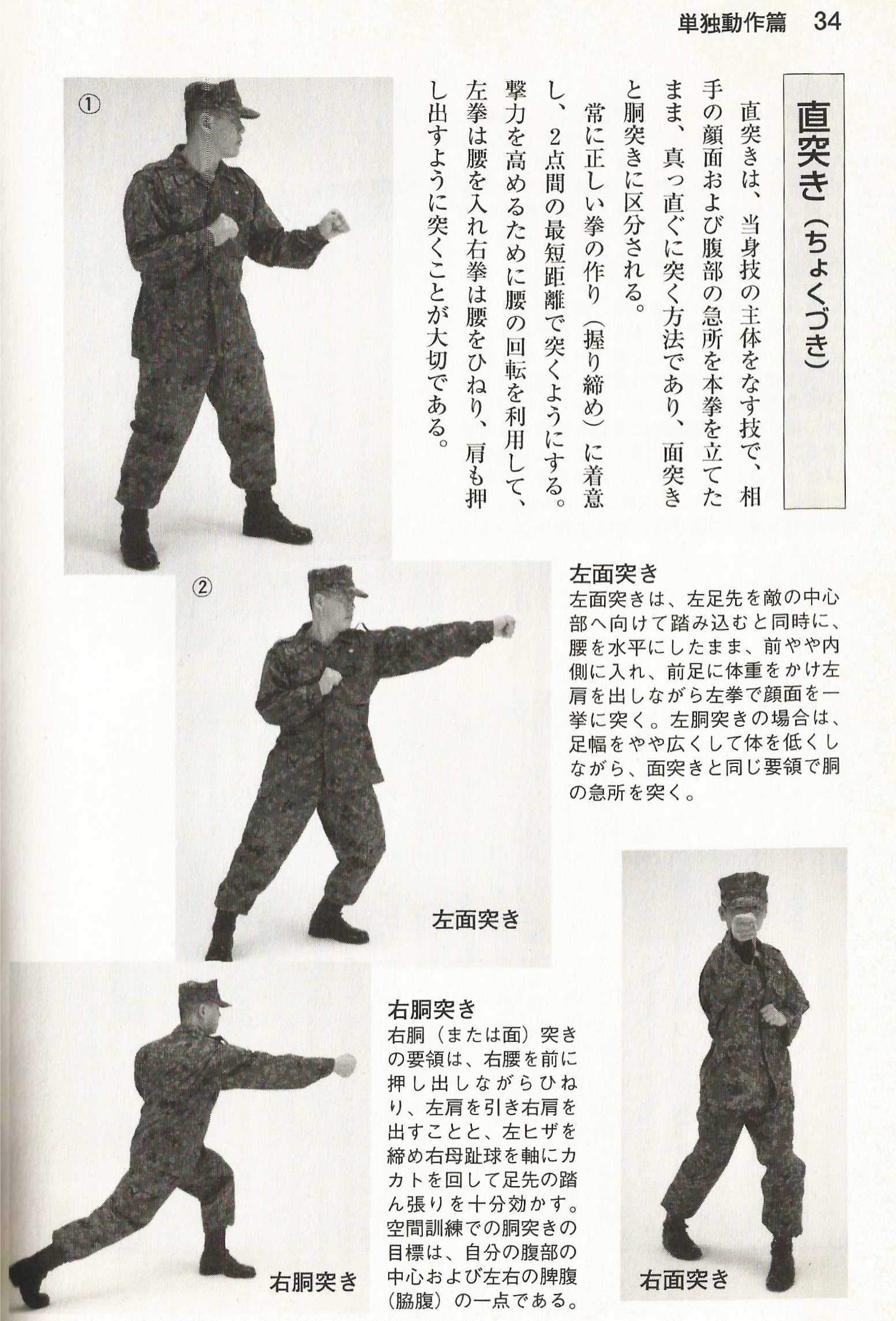
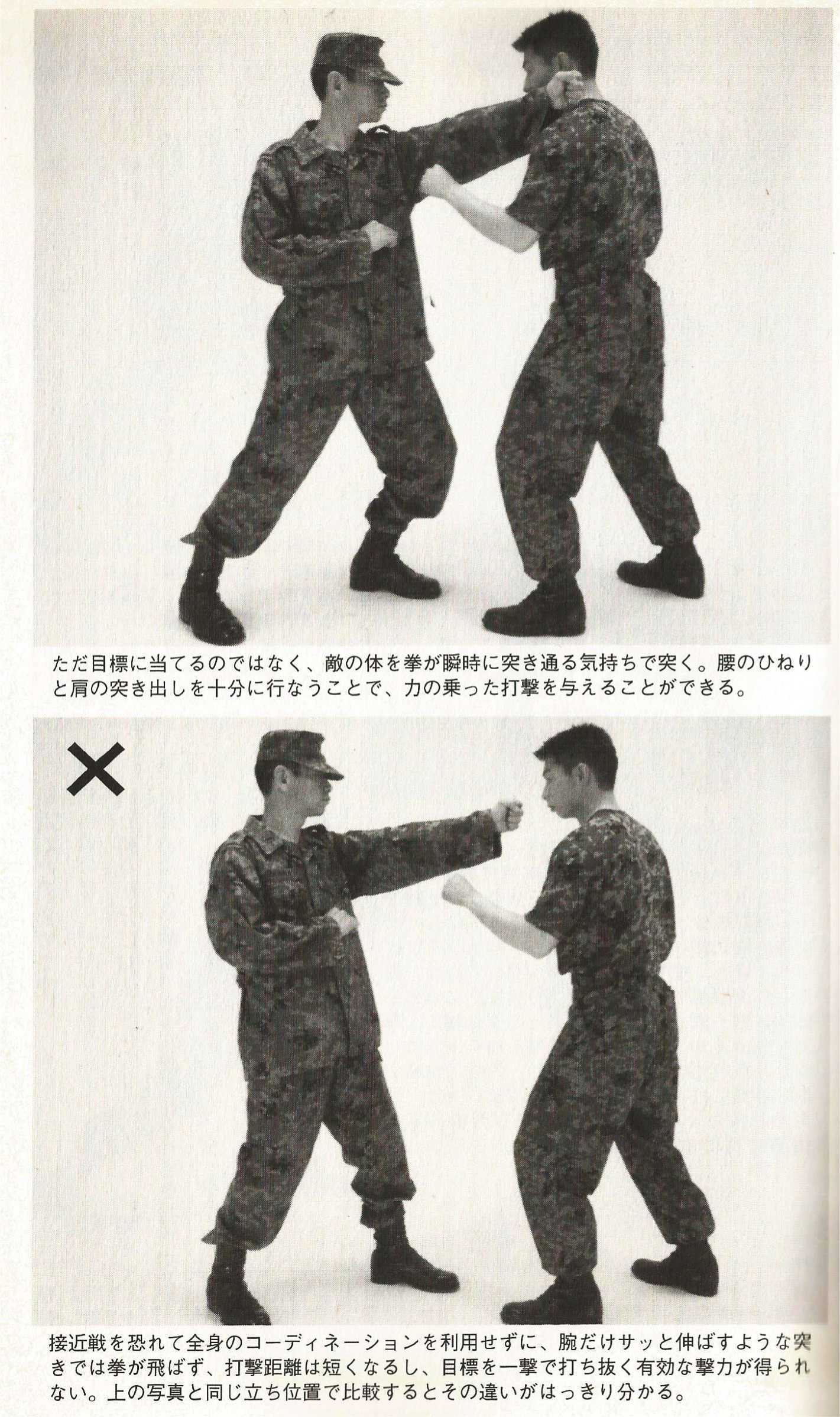
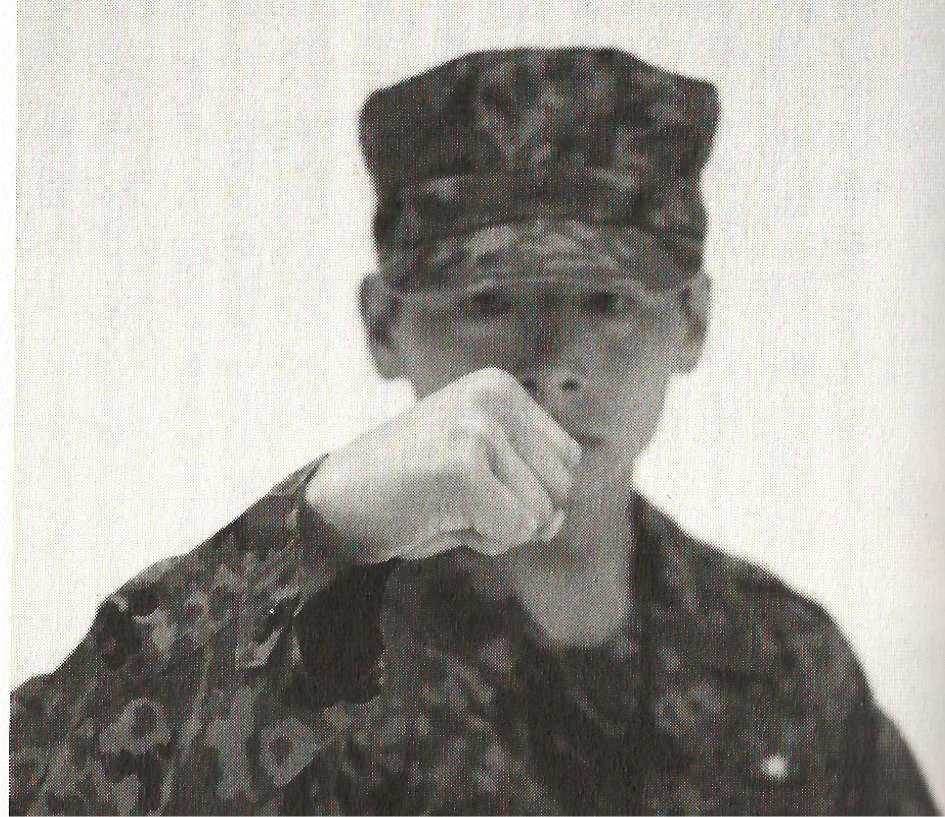
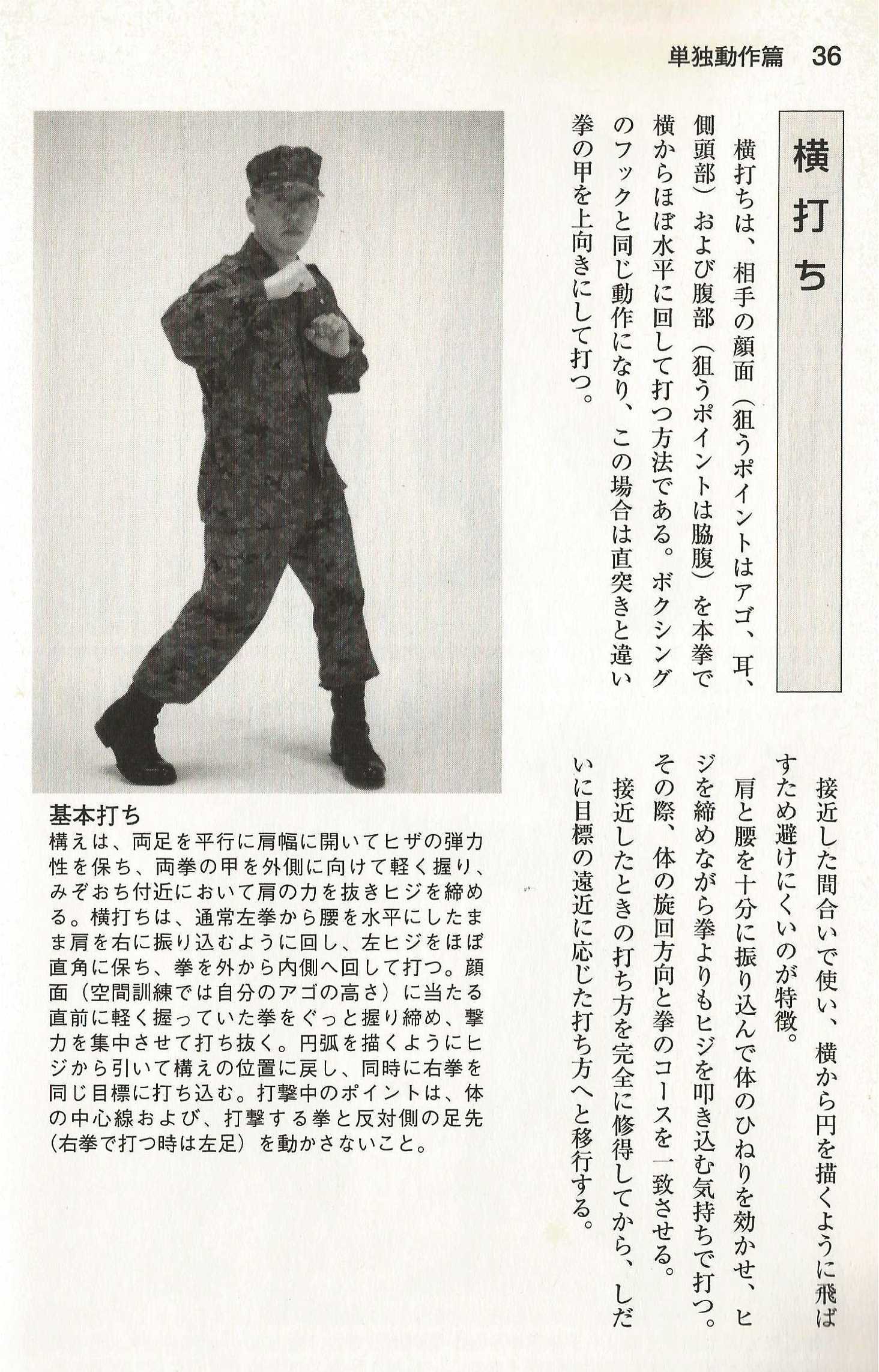
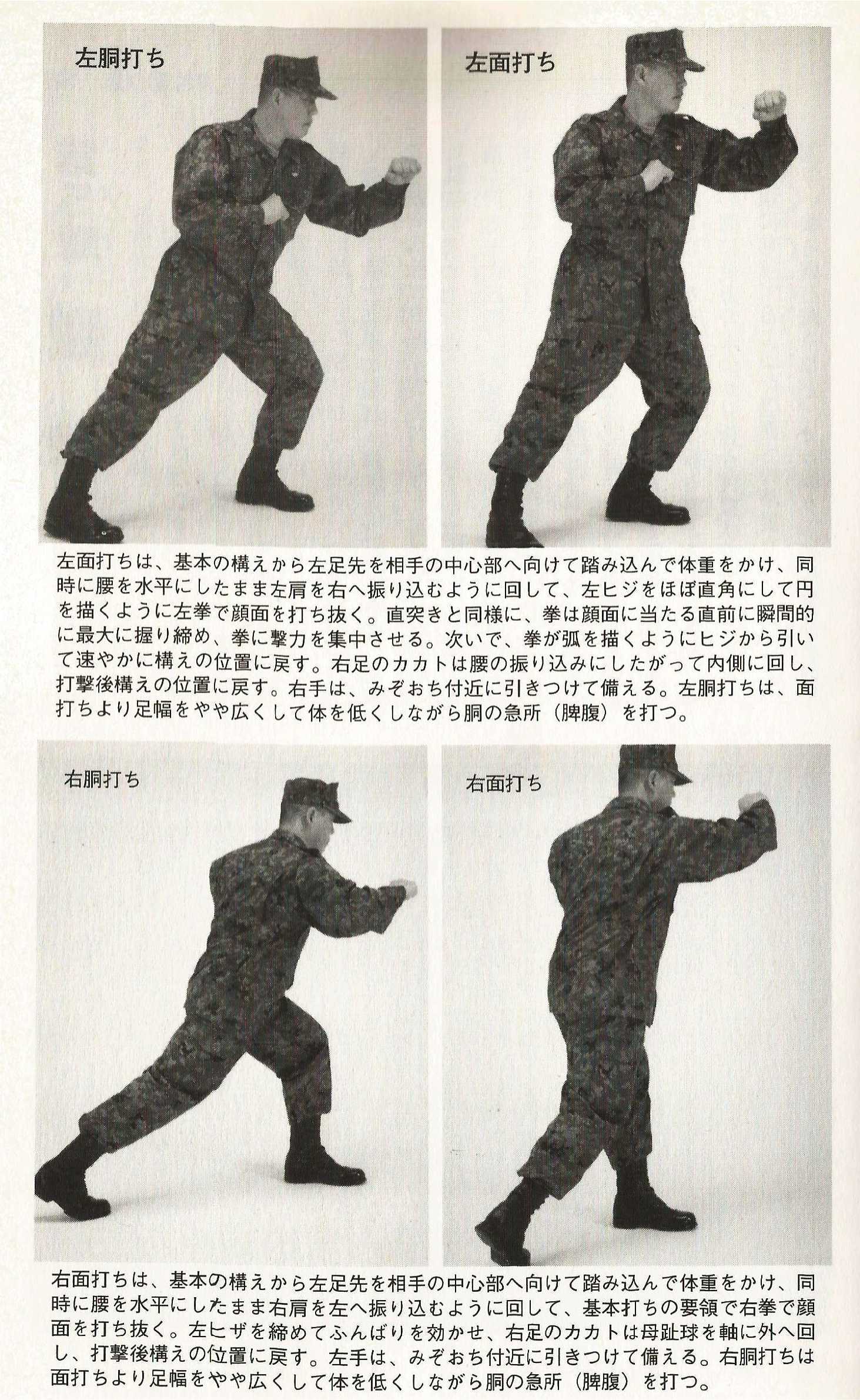
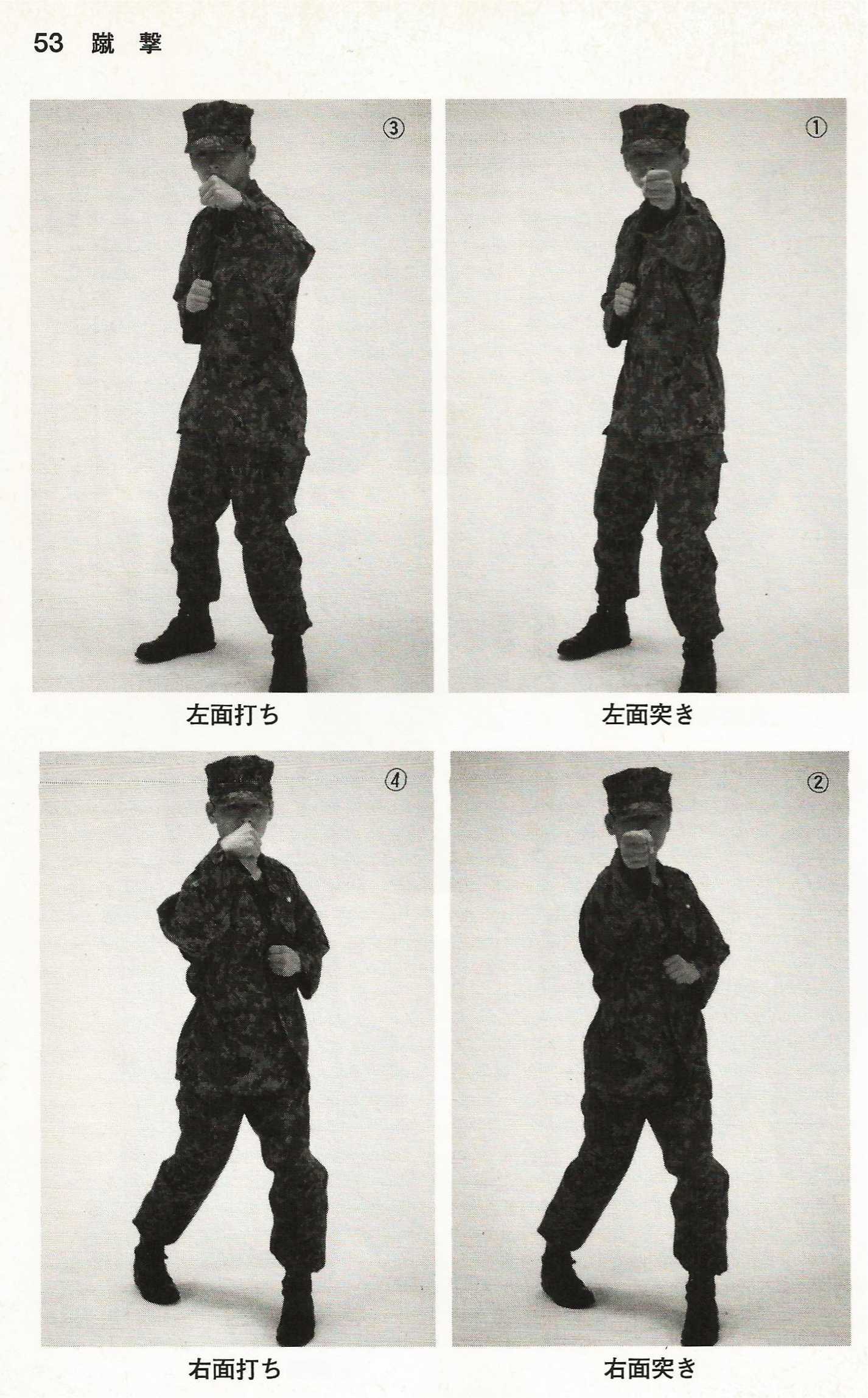
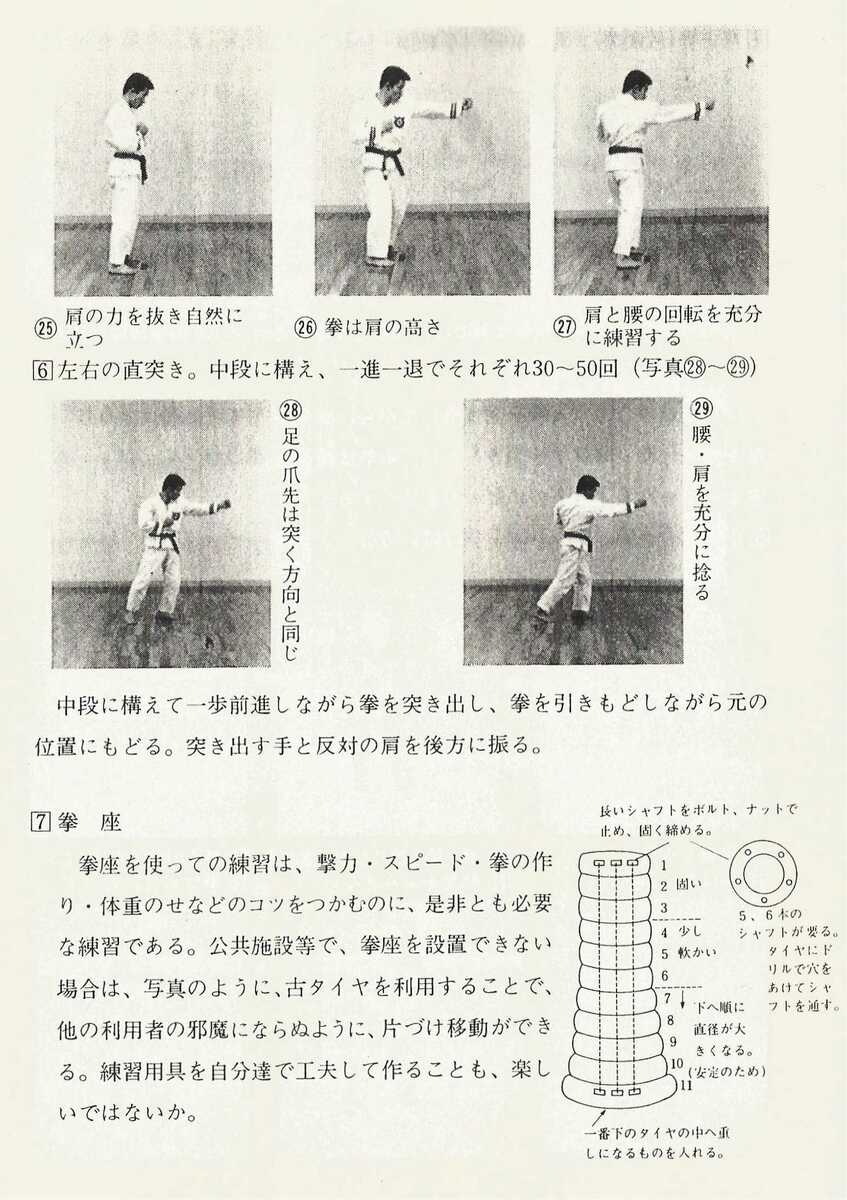
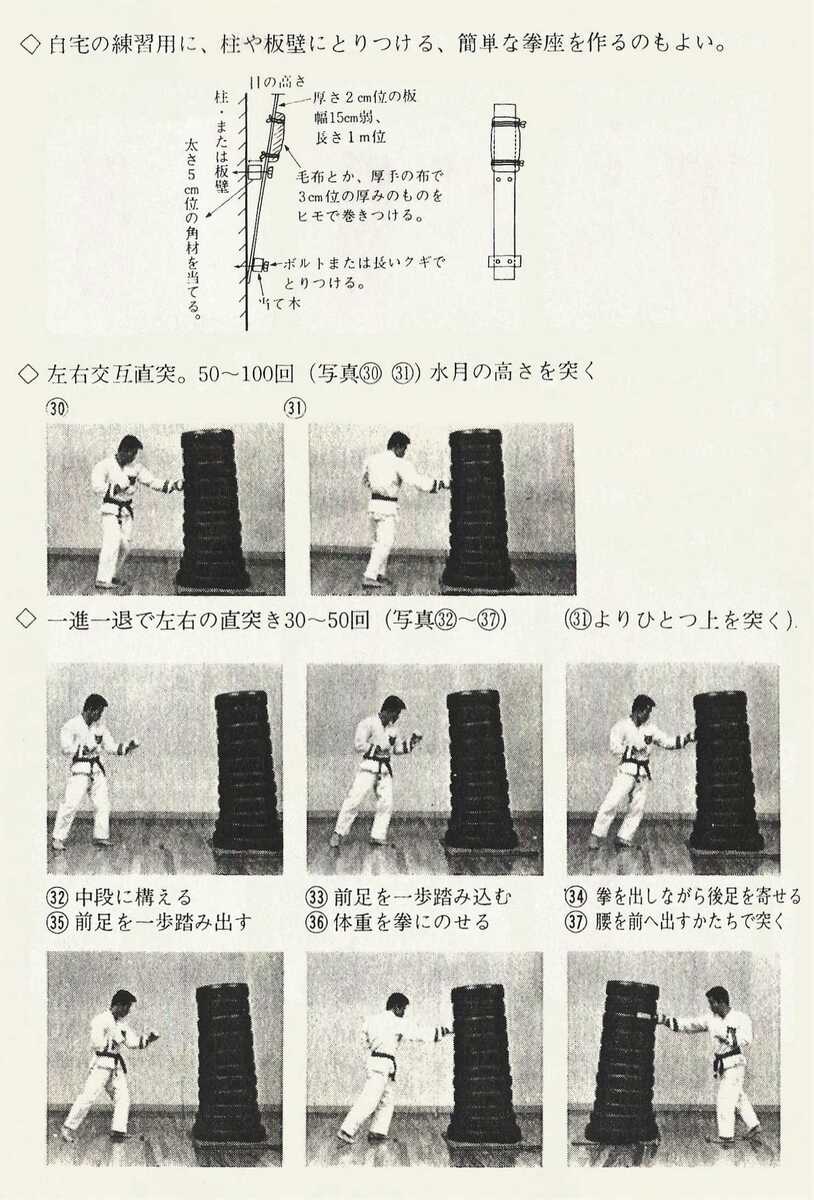
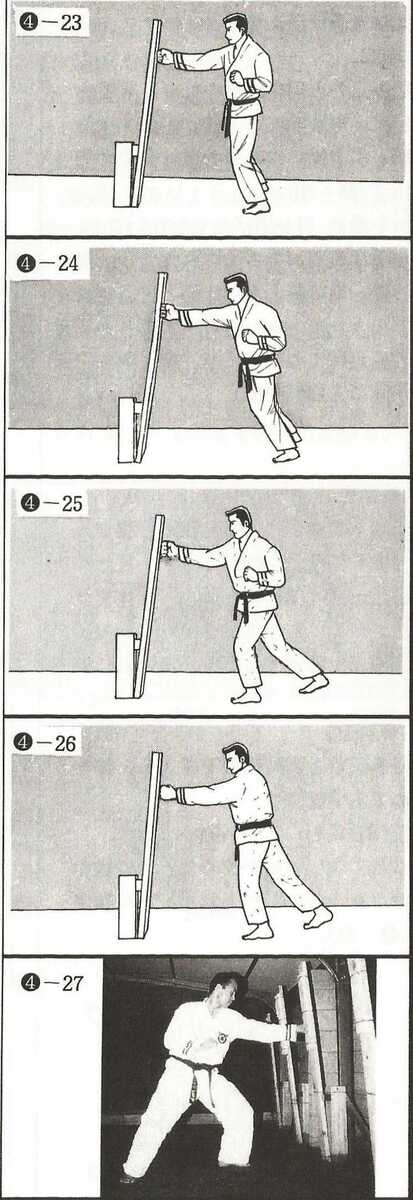
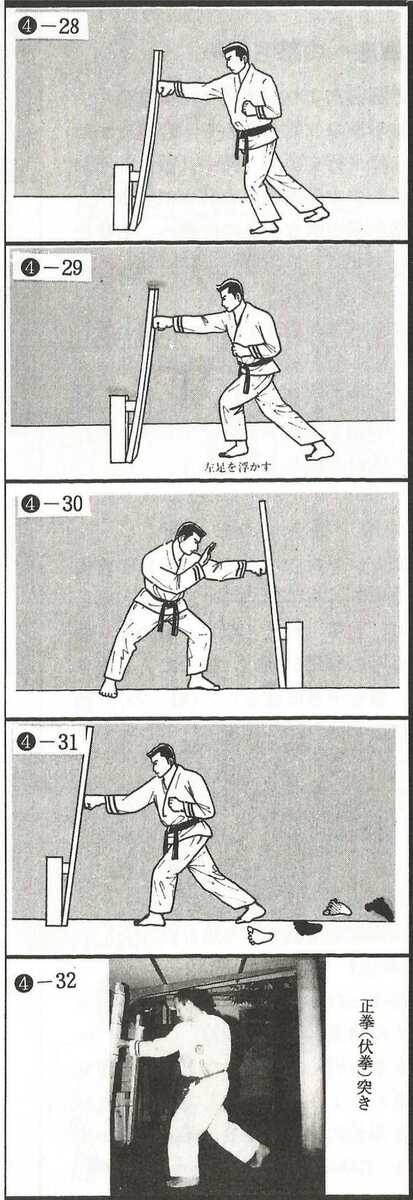
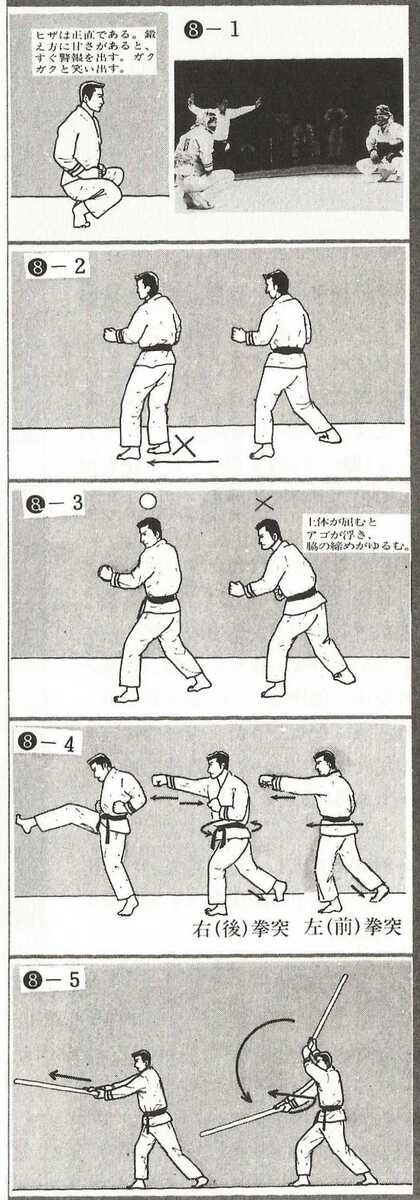
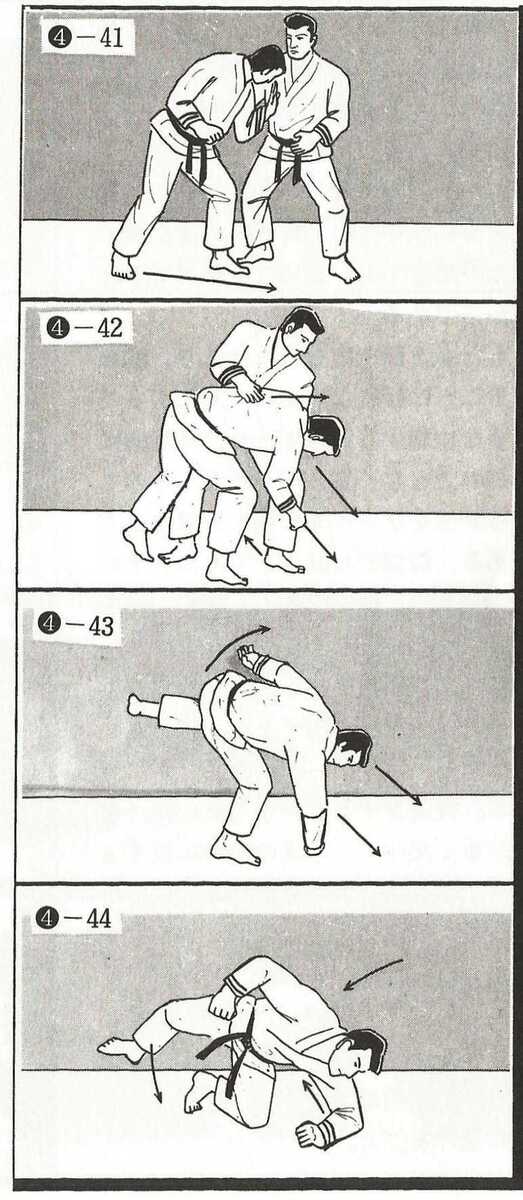
TSUKI –straight arm blows:
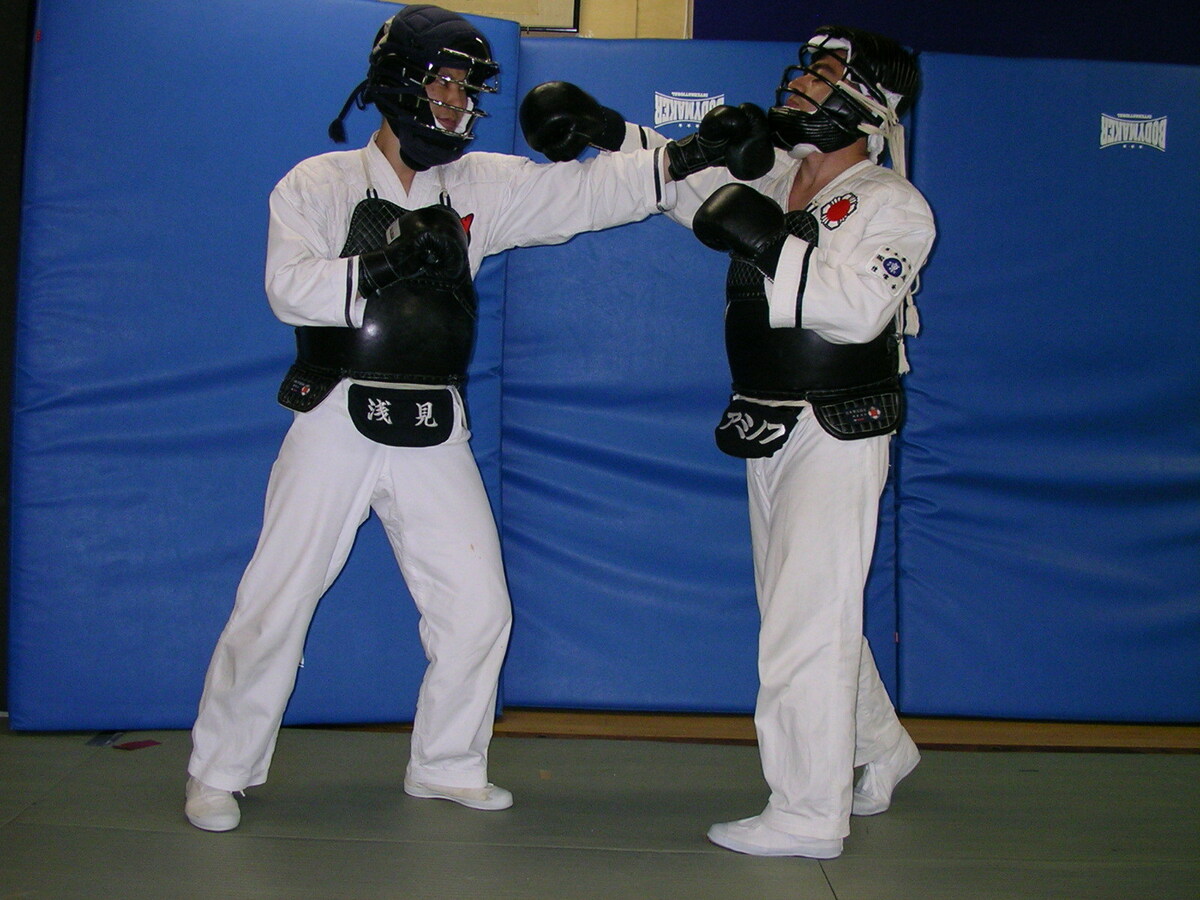
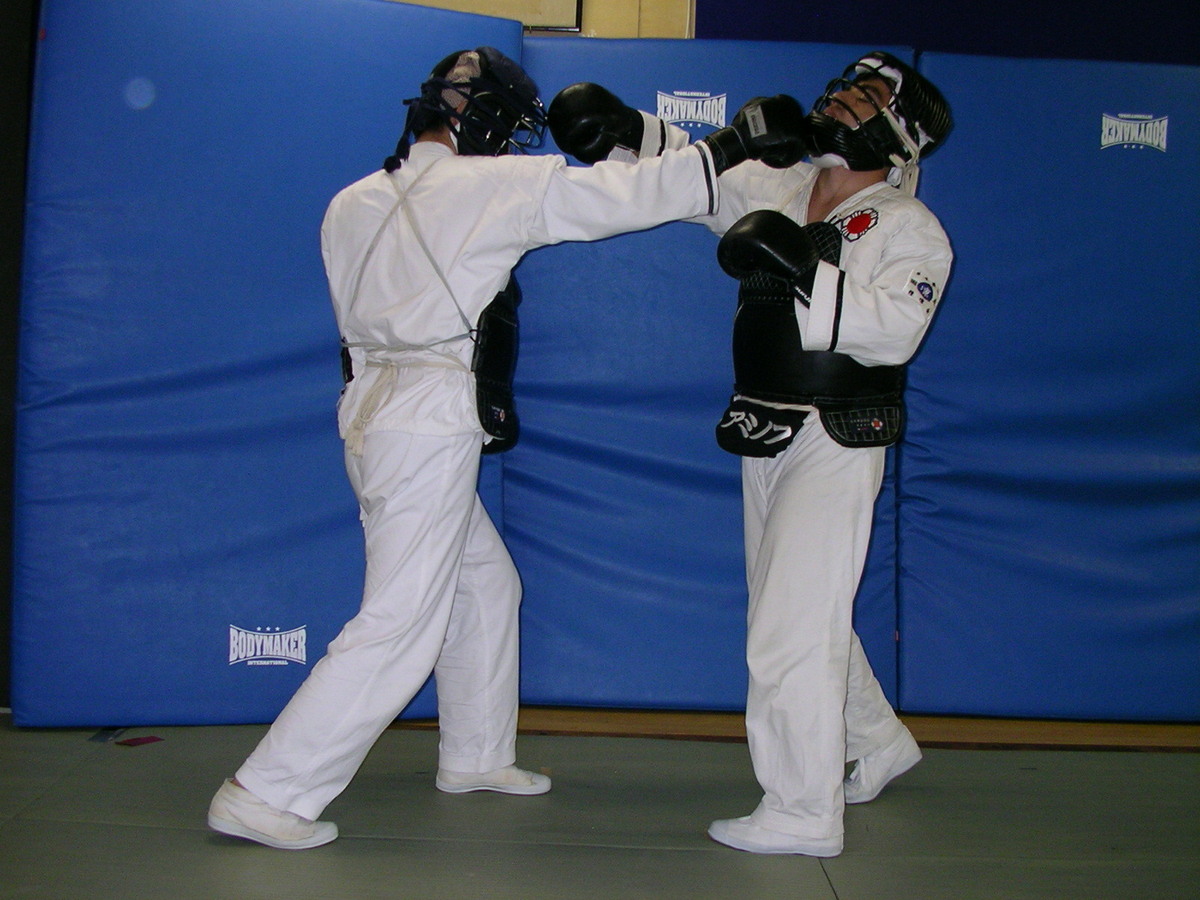
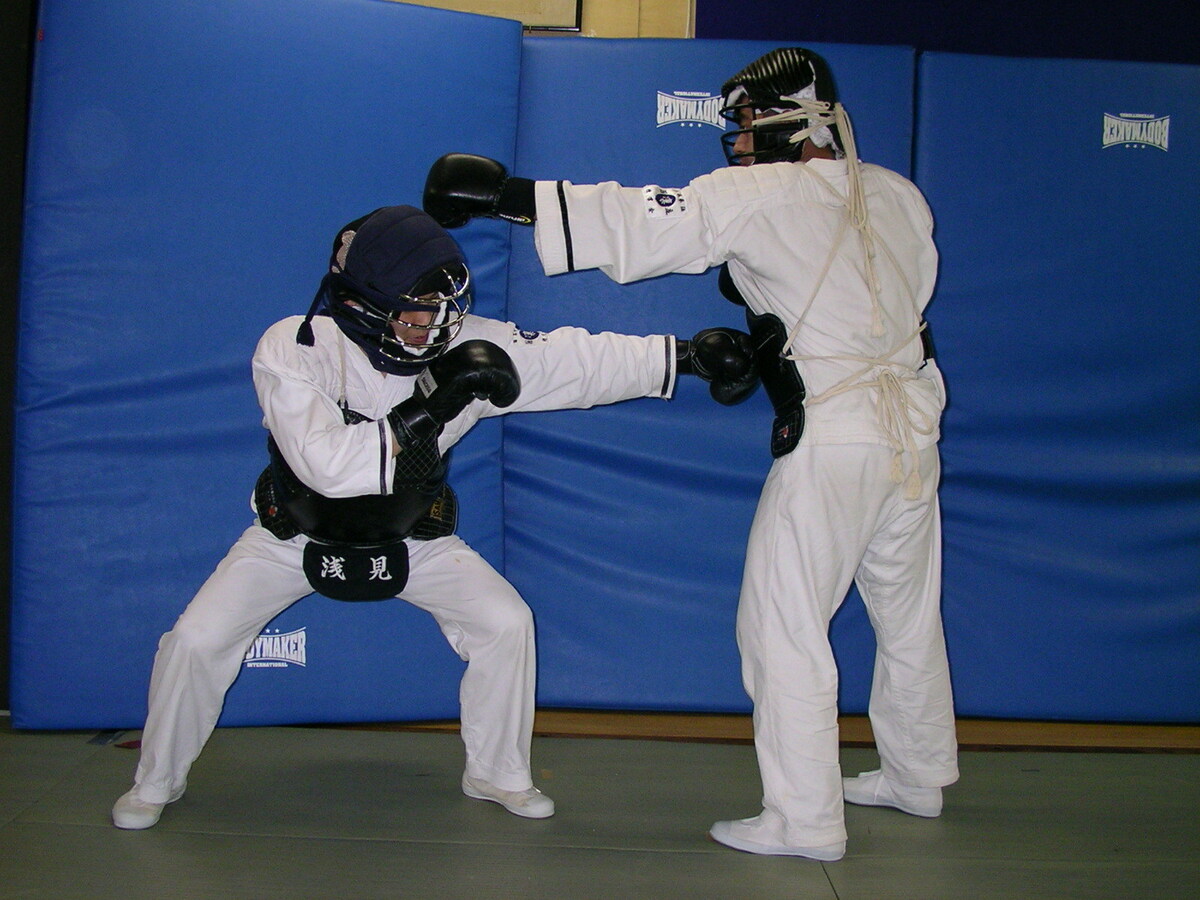
- HIDARI MEN DZUKI - straight blow with the left arm on the helmet
- MIGI MEN DZUKI - straight blow with the right arm on the helmet
- HIDARI DOU DZUKI - straight blow with the left arm on the waistcoat
- MIGI DOU DZUKI - straight blow with the right arm on the waistcoat
- REN GEKI - sequence of straight arm blows
YOKO UCHI – side arm blows:
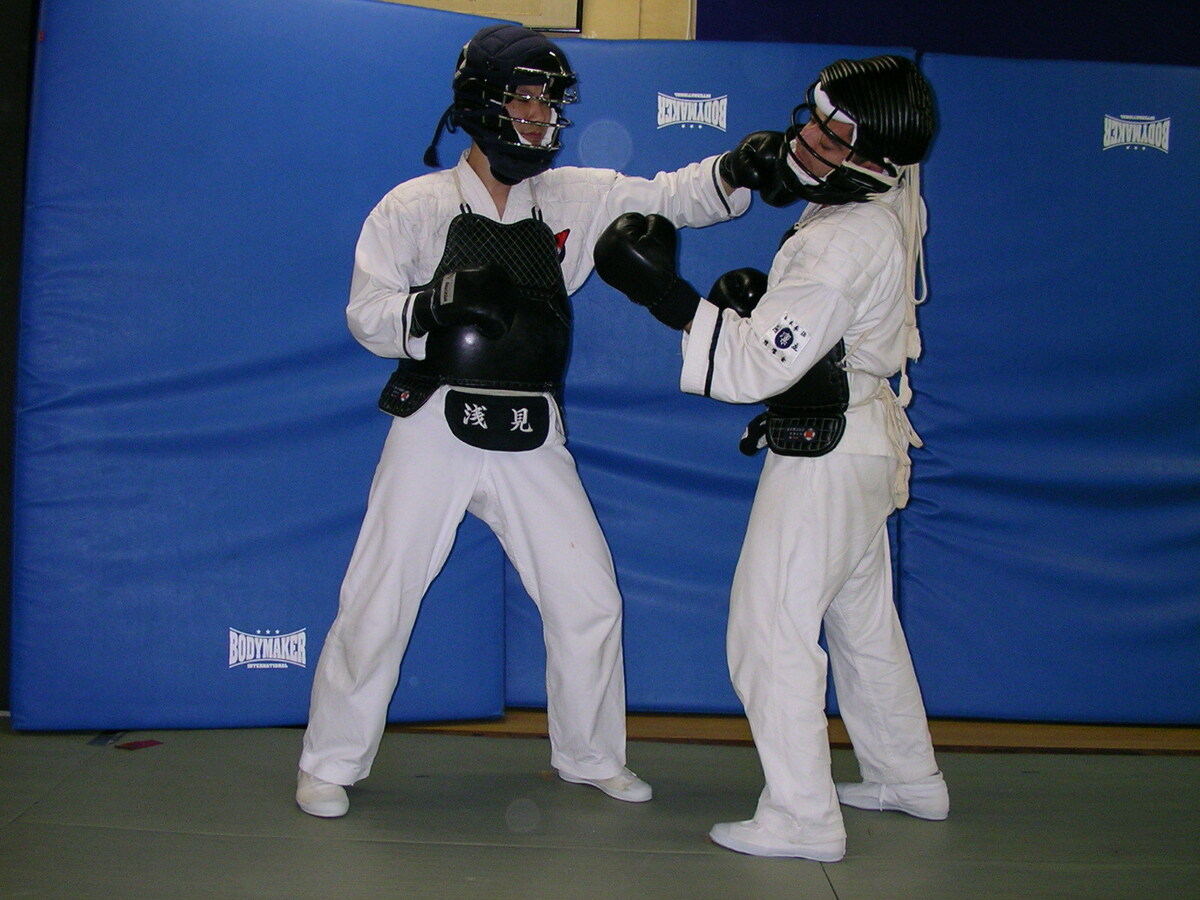
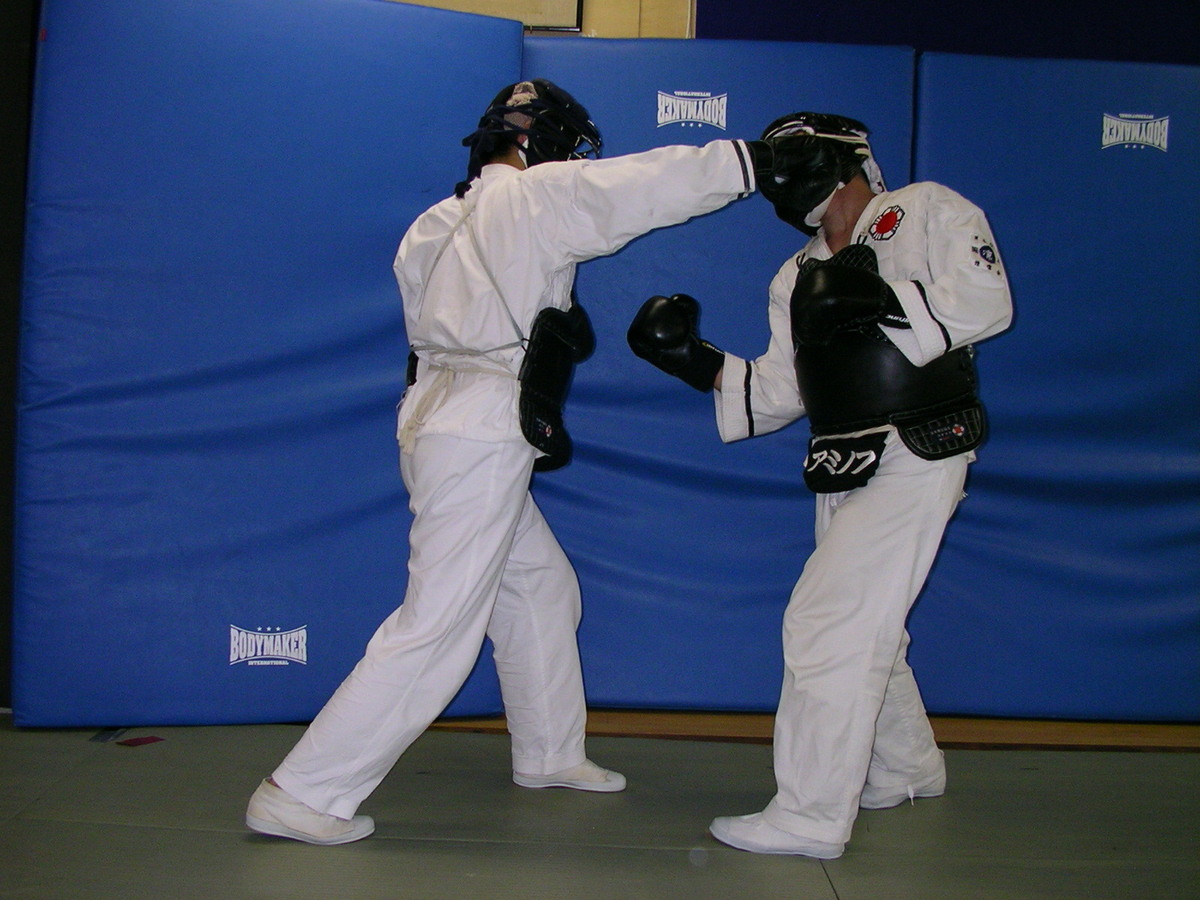
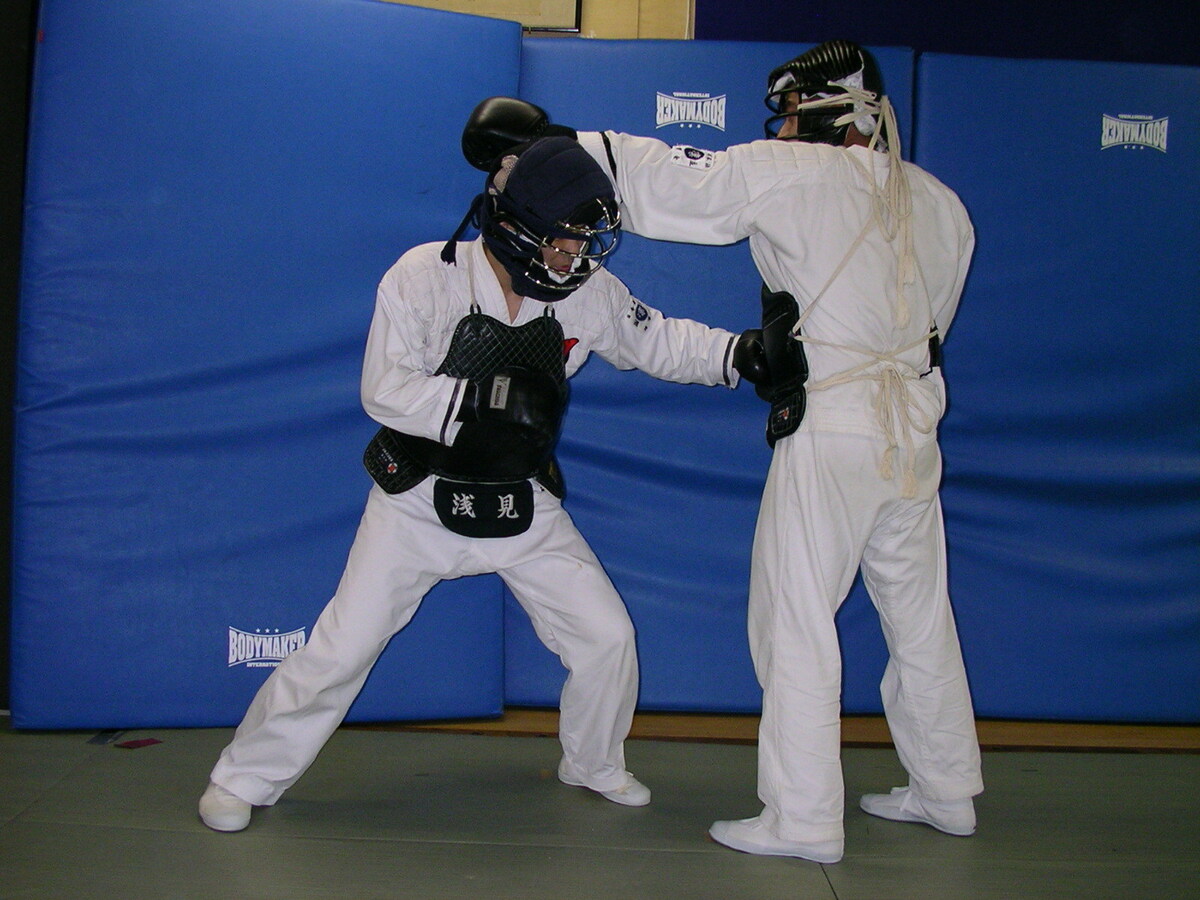
- HIDARI MEN YOKO UCHI - side blow with the left arm on the helmet
- MIGI MEN YOKO UCHI - side blow with the right arm on the helmet
- HIDARI MEN YOKO UCHI - side blow with the left arm on the waistcoat
- MIGI DOU YOKO UCHI - side blow with the right arm on the waistcoat
- REN DA- sequence of side arm blows
SOTO UCHI – swinging arm blows:
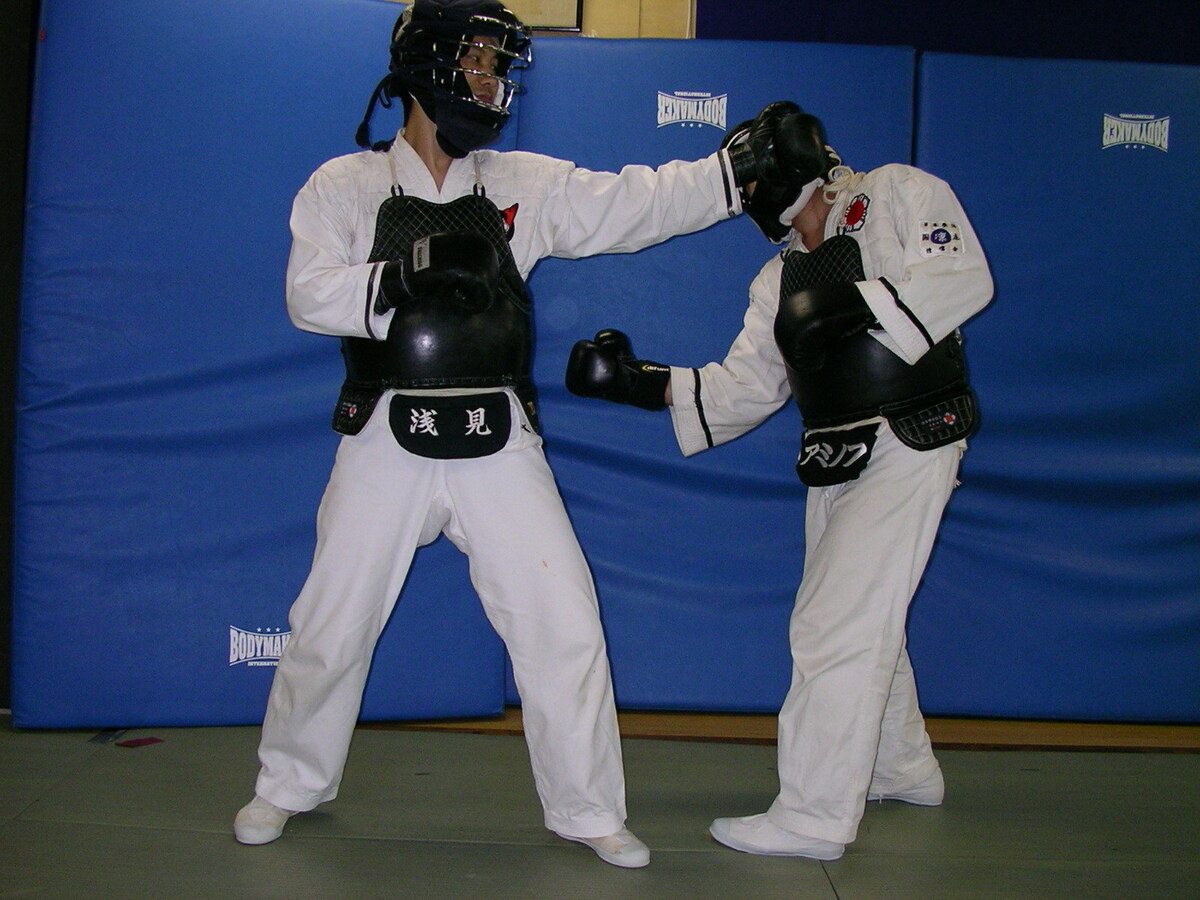
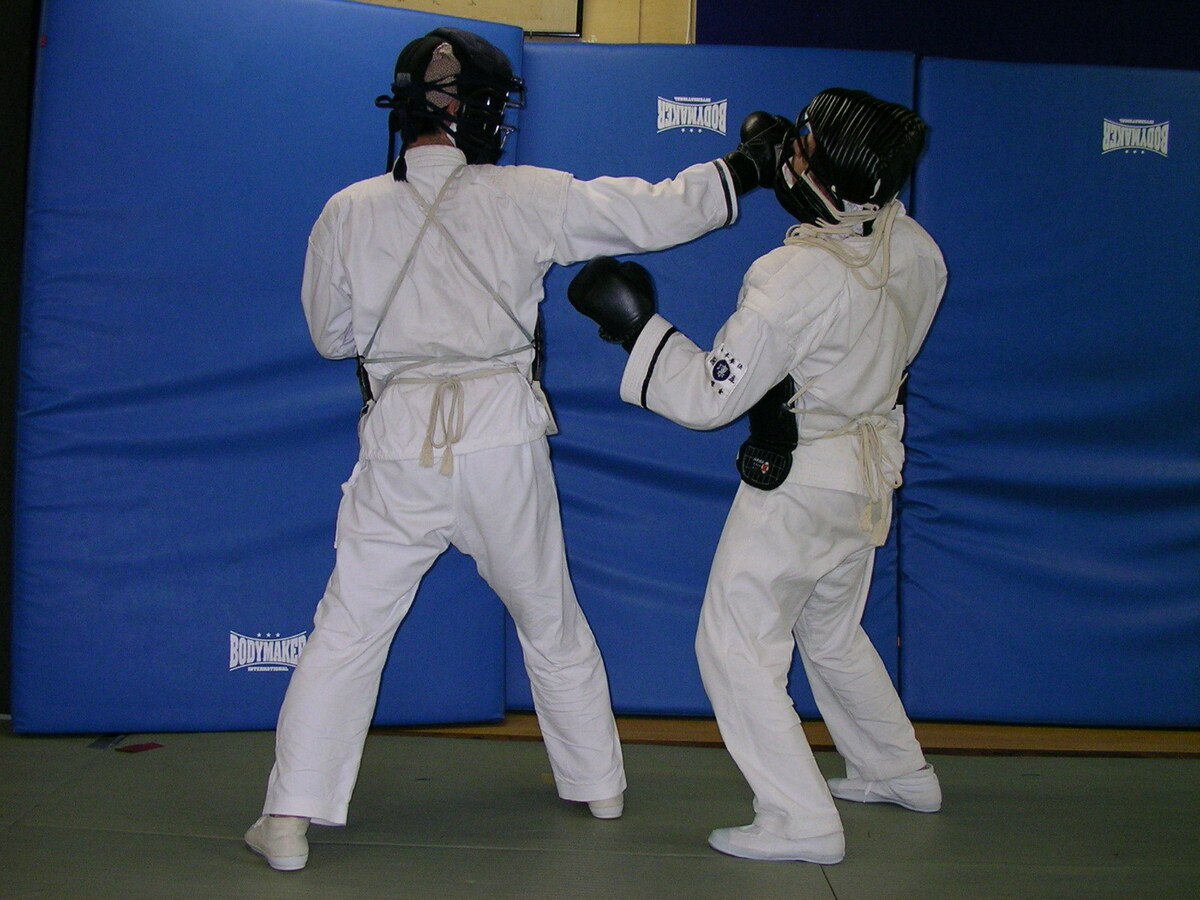
- HIDARI MEN SOTO UCHI - swinging left arm blow on the helmet
- MIGI MEN SOTO UCHI - swinging right arm blow on the helmet
OROSHI UCHI – top down arm blows:
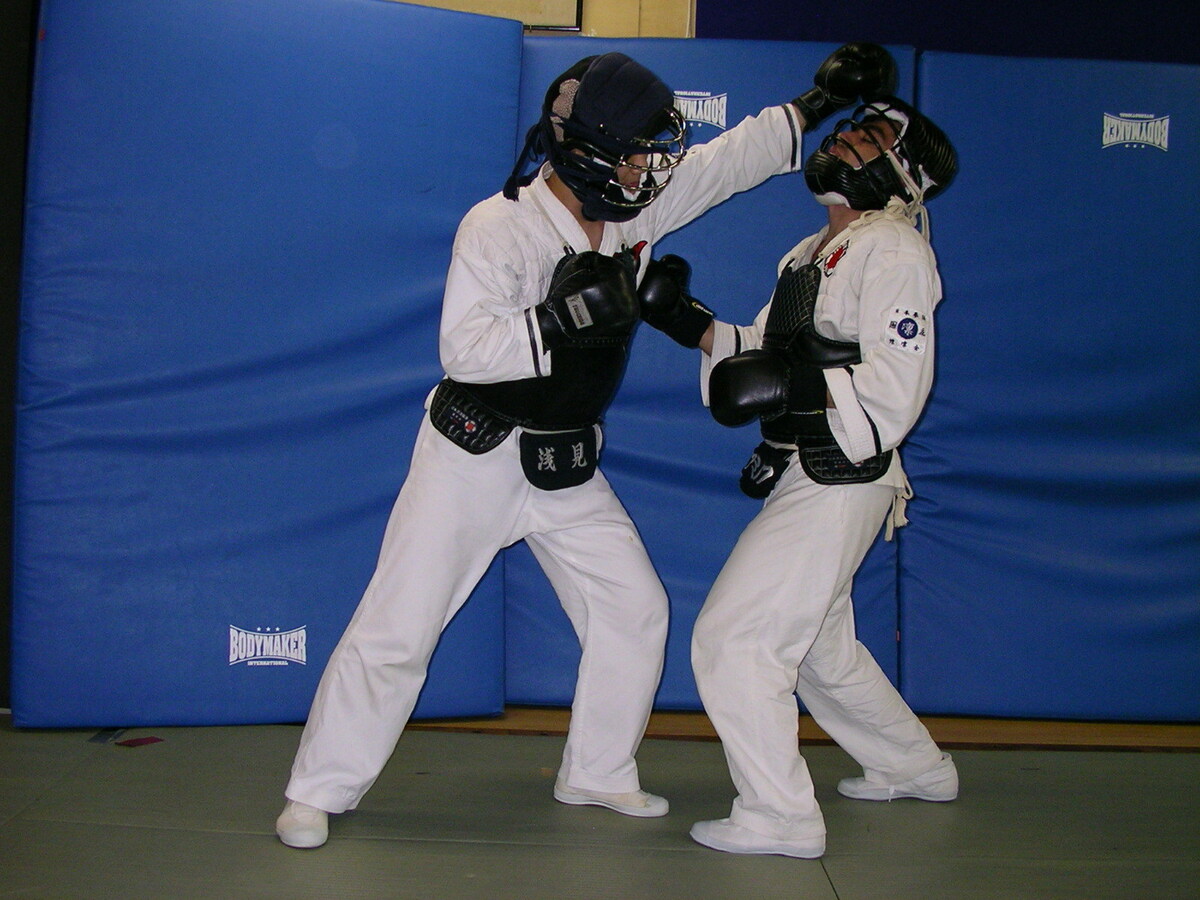
- HIDARI MEN OROSHI UCHI - left arm top down blow on the helmet
- MIGI MEN OROSHI UCHI - right arm top down blow on the helmet
AGE UCHI – bottom up arm blows:
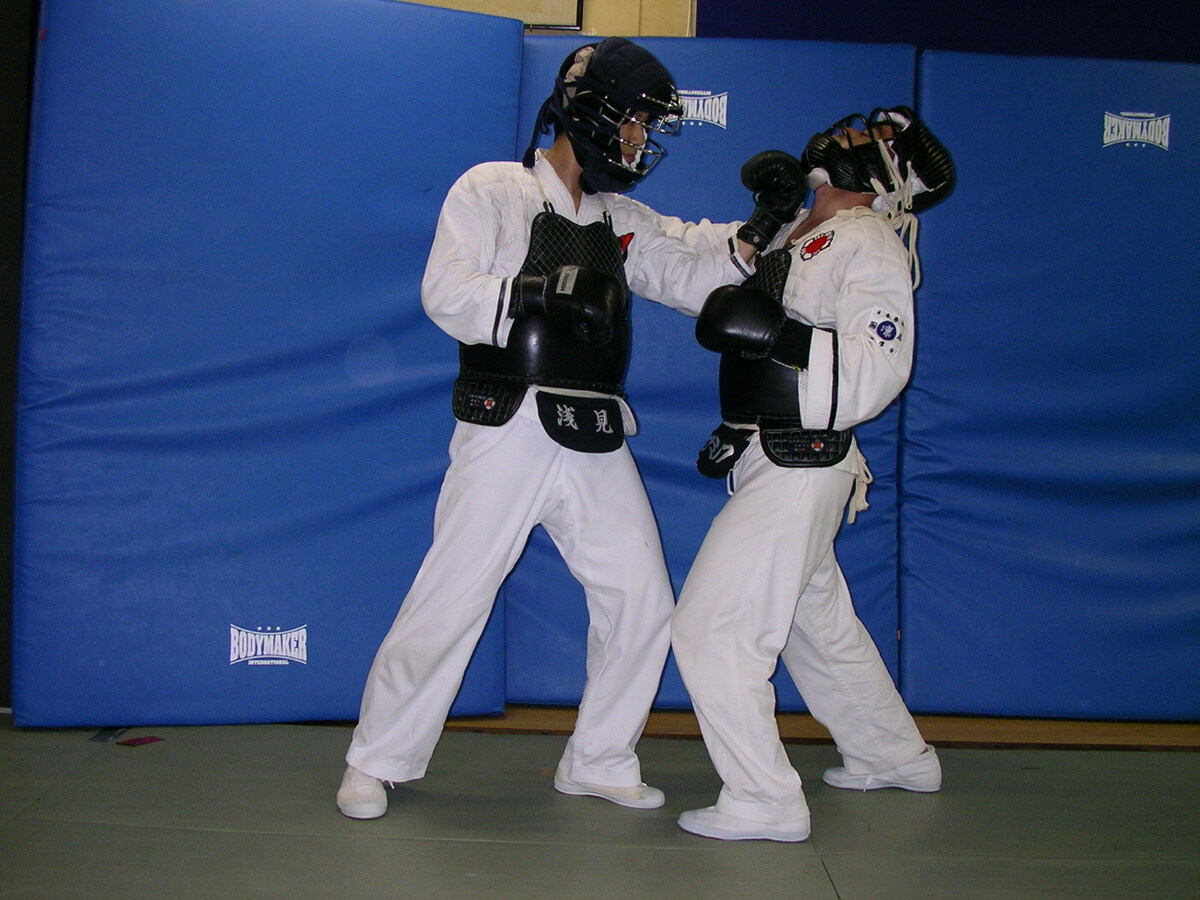
- HIDARI MEN AGE UCHI - left arm bottom up blow on the helmet
- MIGI MEN AGE UCHI - right arm bottom up blow on the helmet
HIJI UCHI – elbow blows:
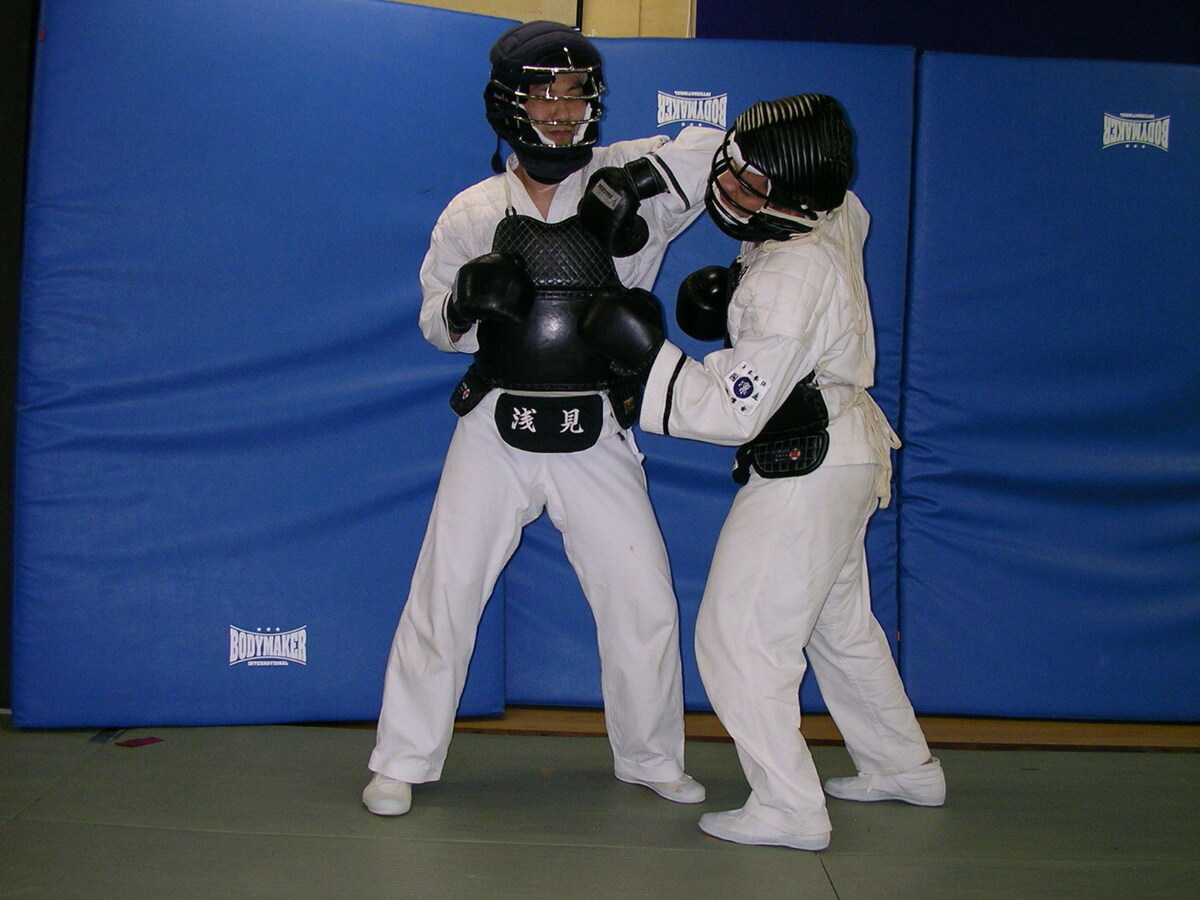
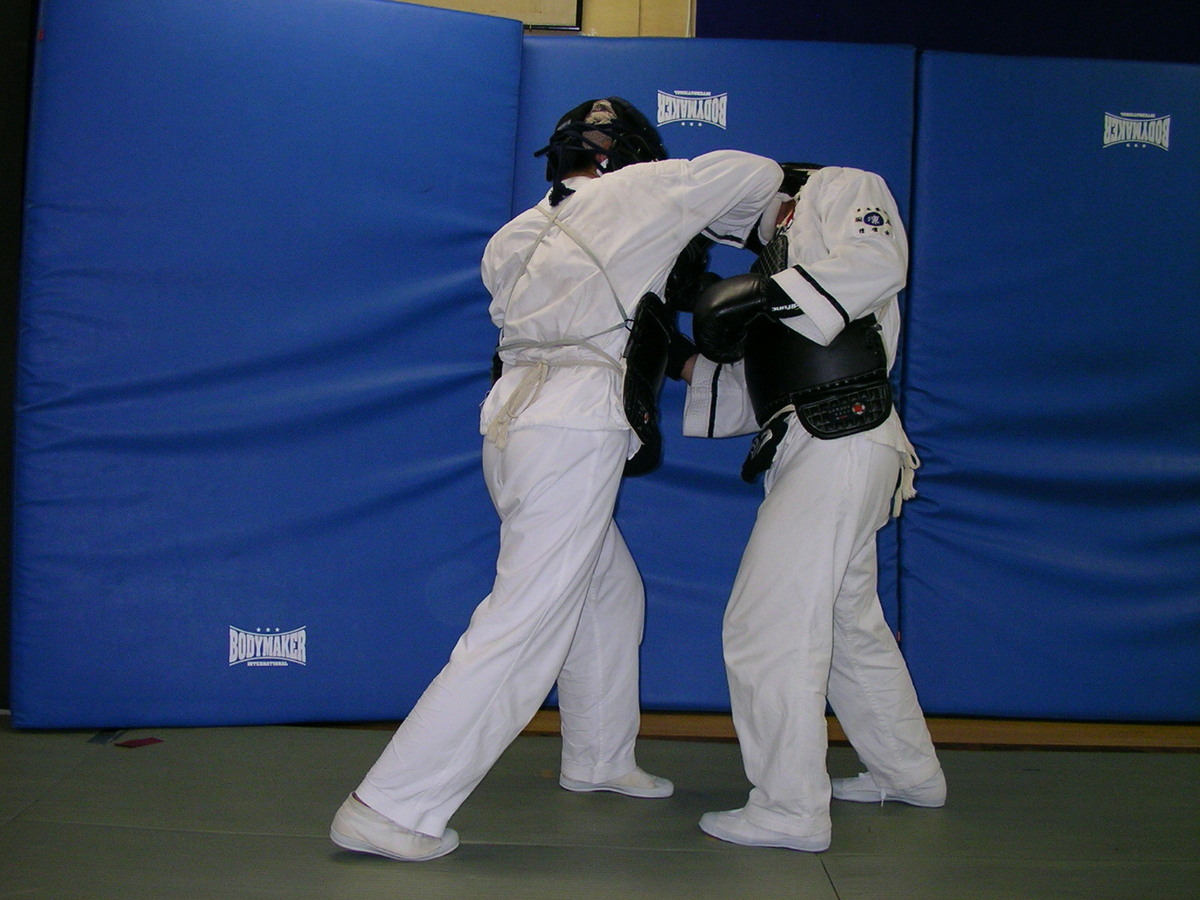

- HIDARI MEN HIJI UCHI - left elbow blow on the helmet
- MIGI MEN HIJI UCHI - right elbow blow on the helmet
- HIDARI DOU HIJI UCHI - left elbow blow on the waistcoat
- MIGI DOU HIJI UCHI - right elbow blow on the waistcoat
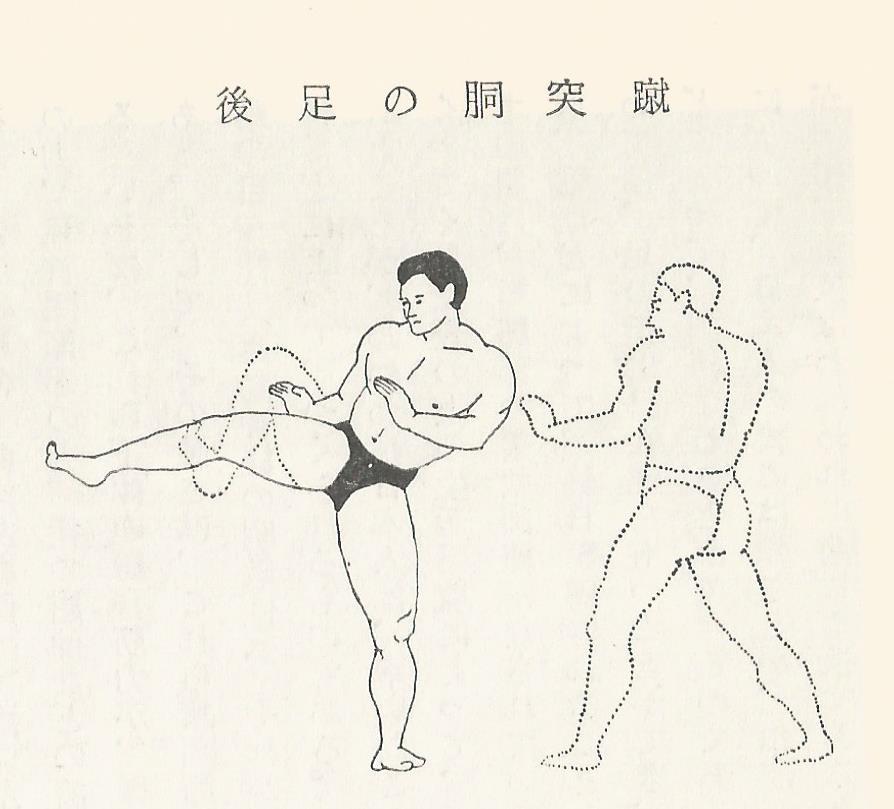
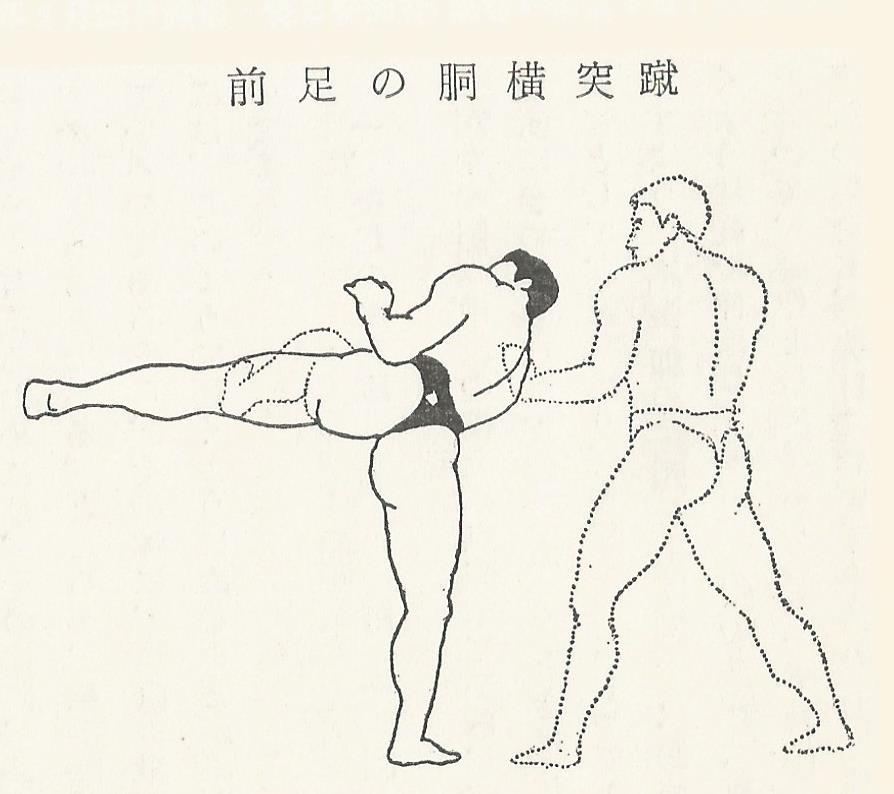
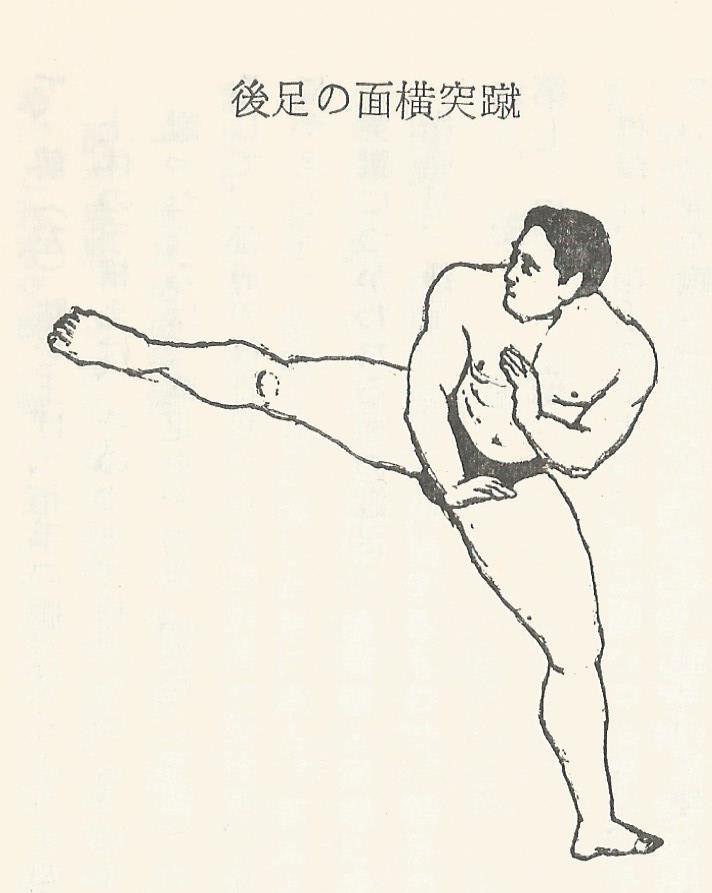
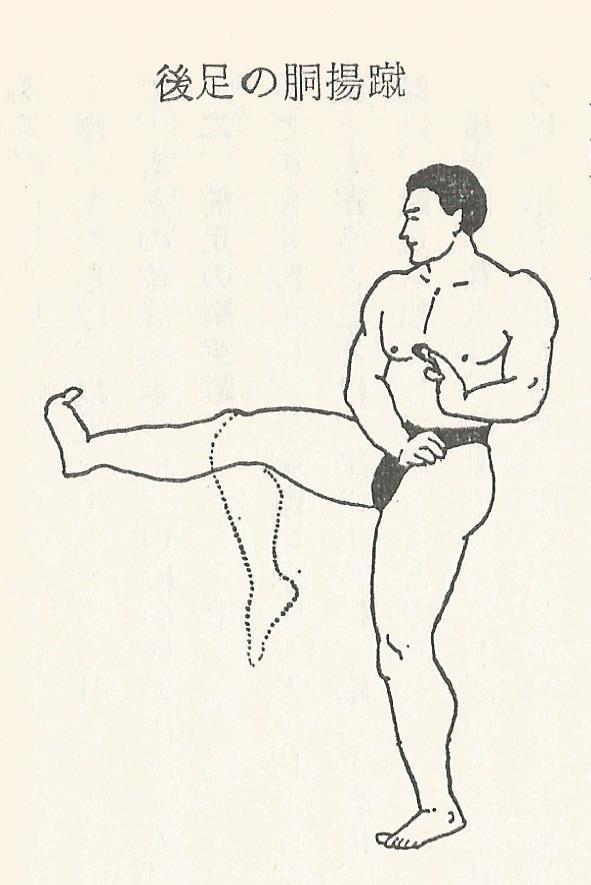
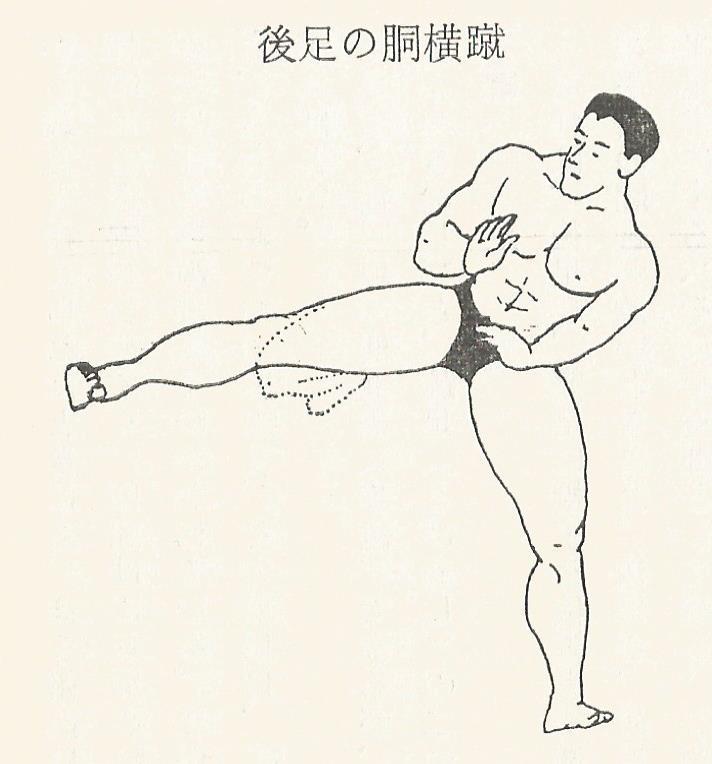

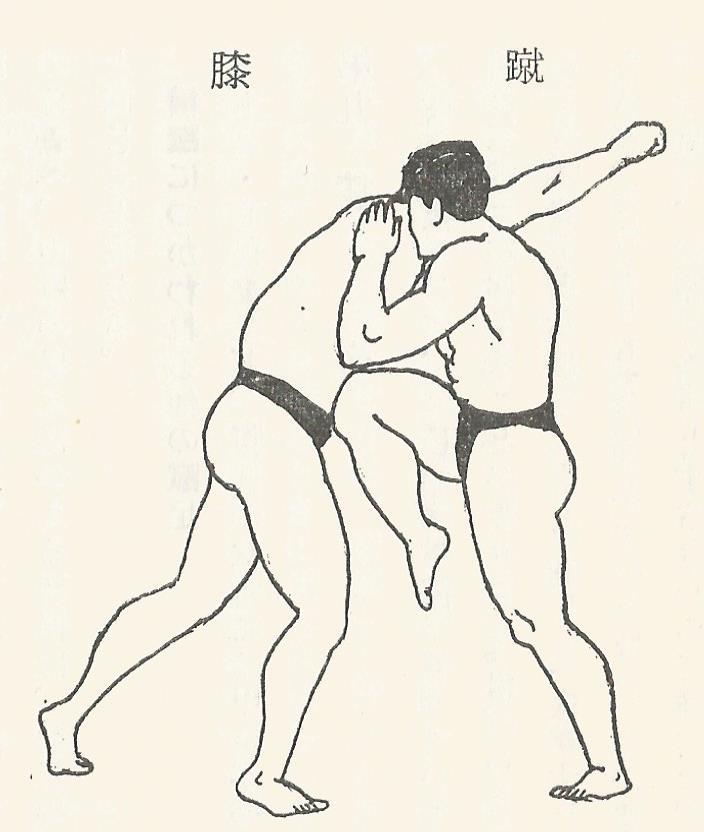
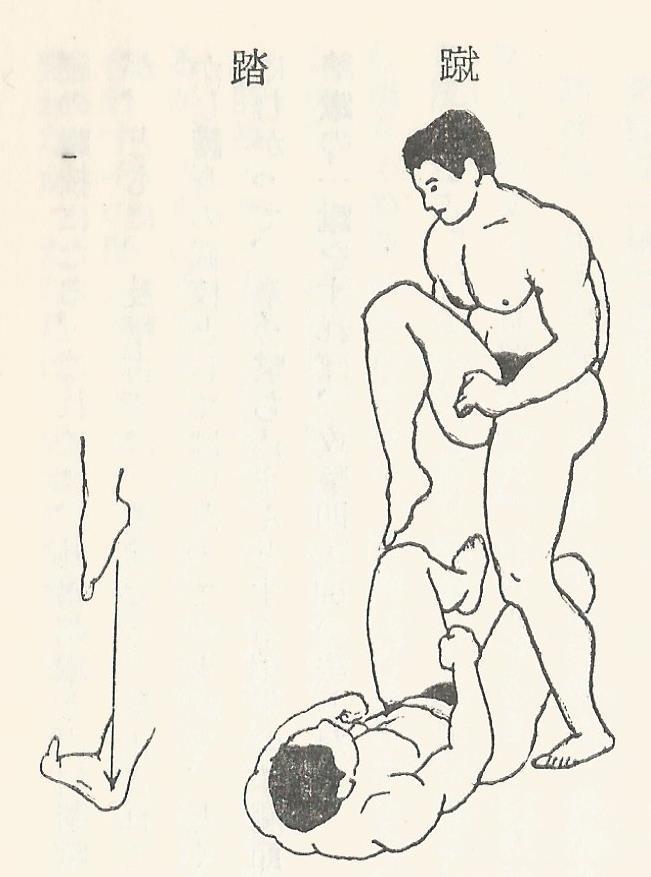
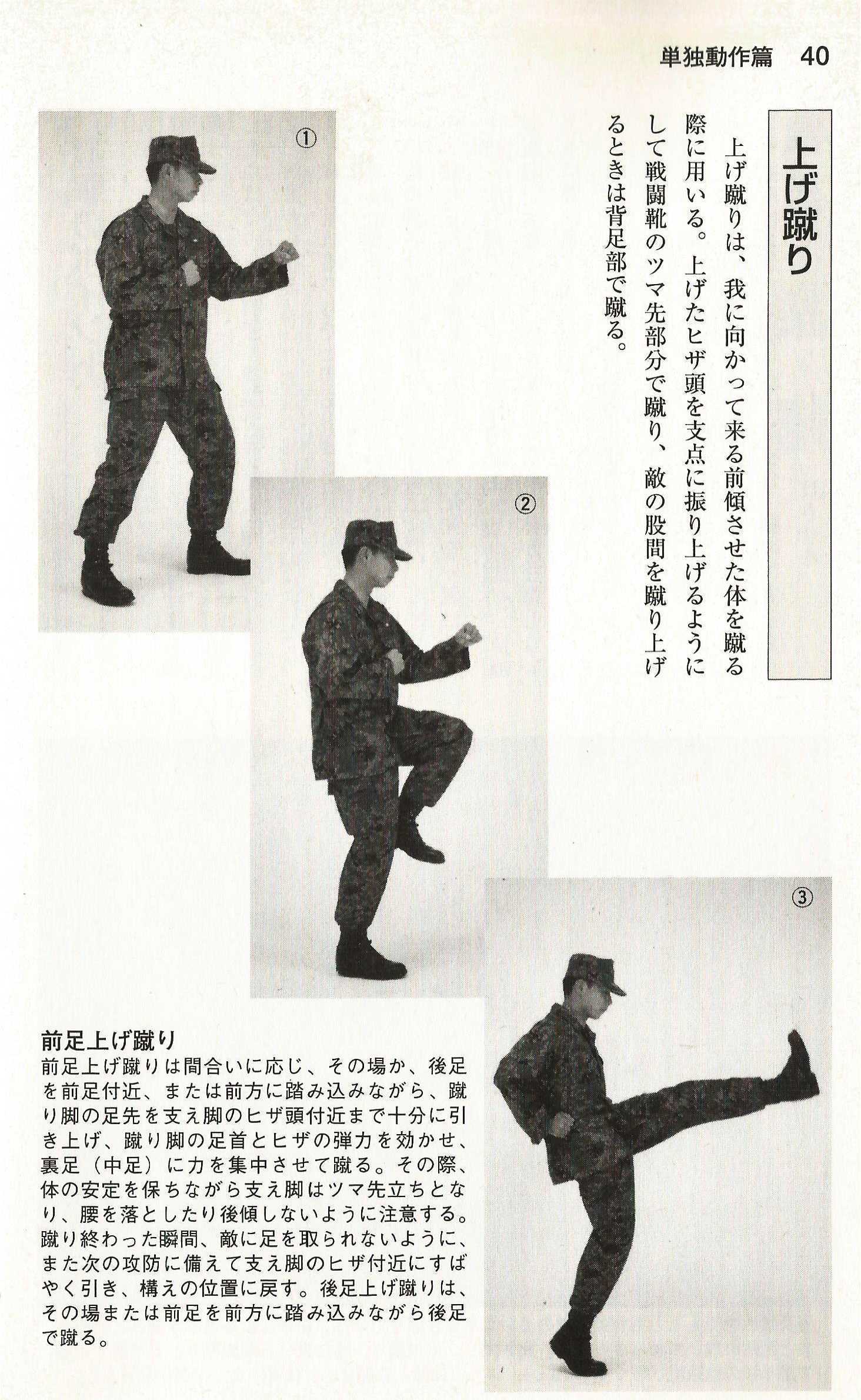
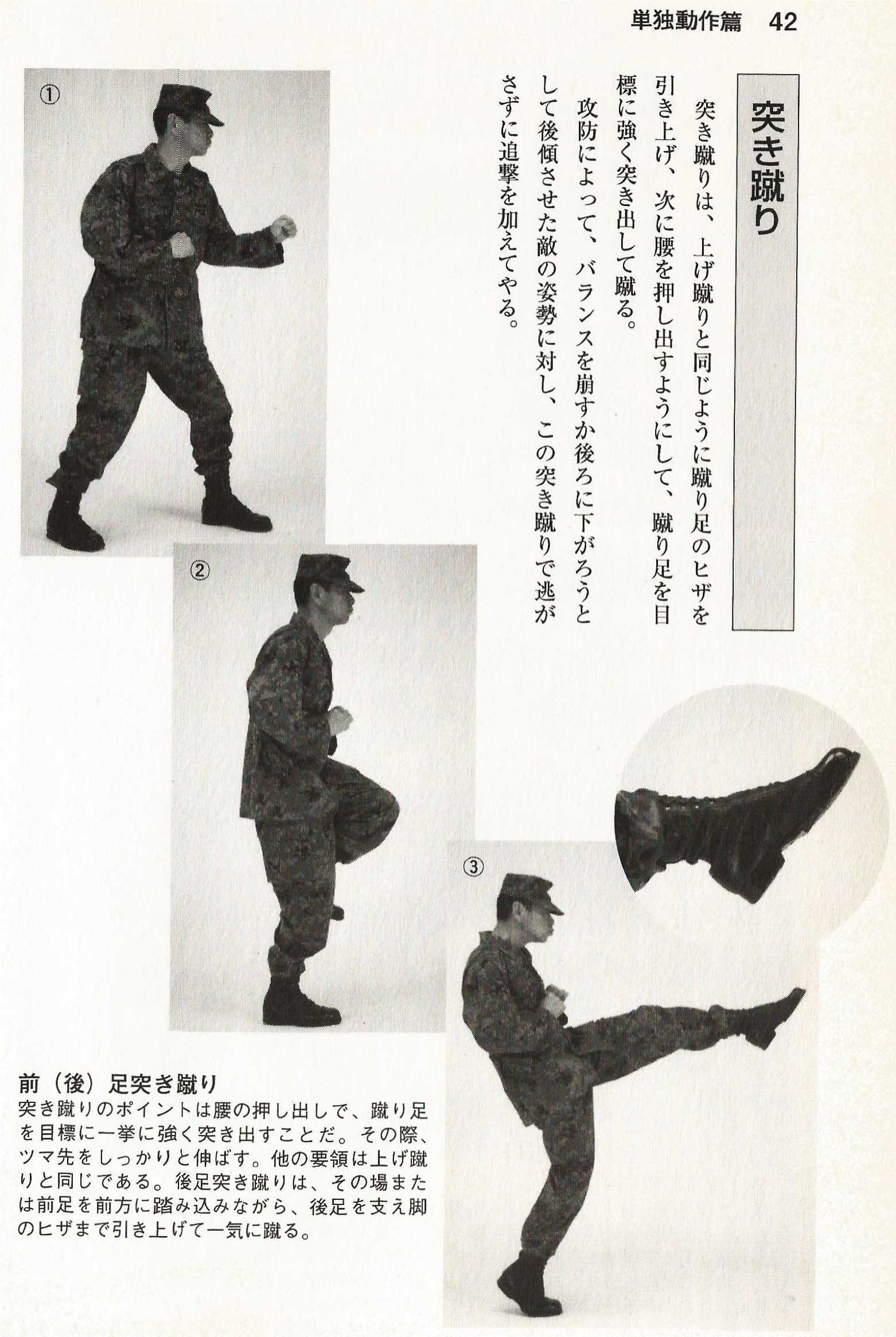
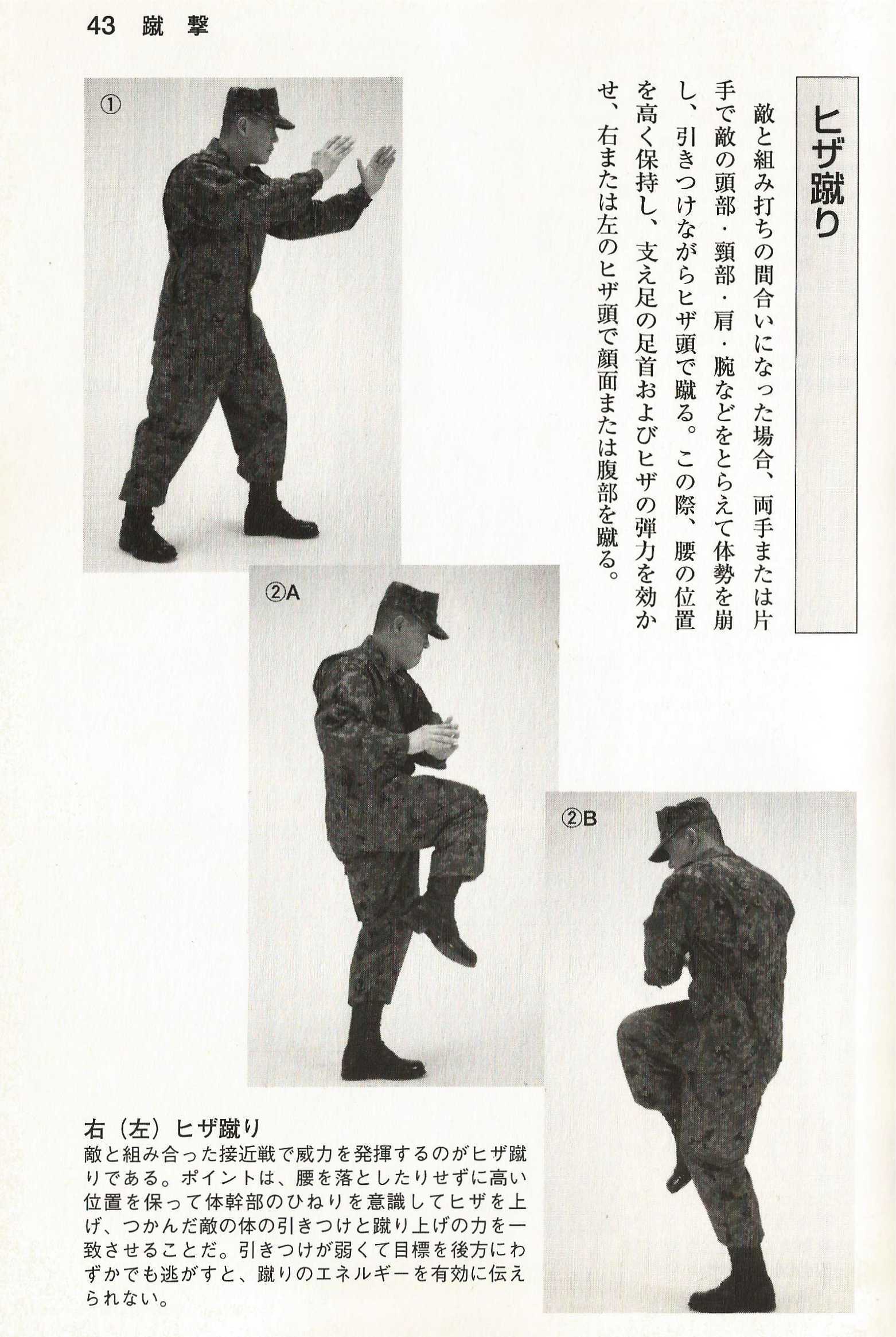
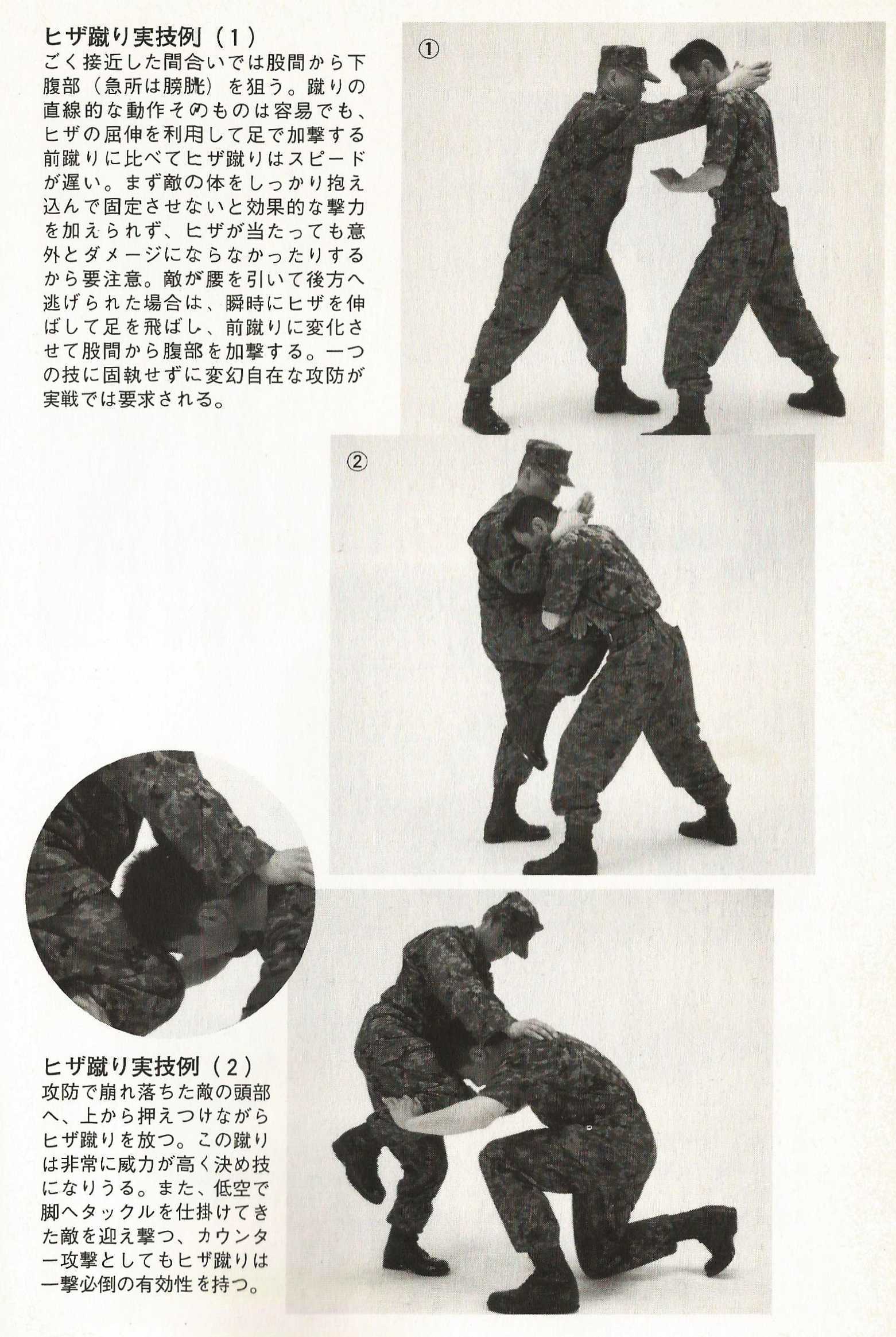
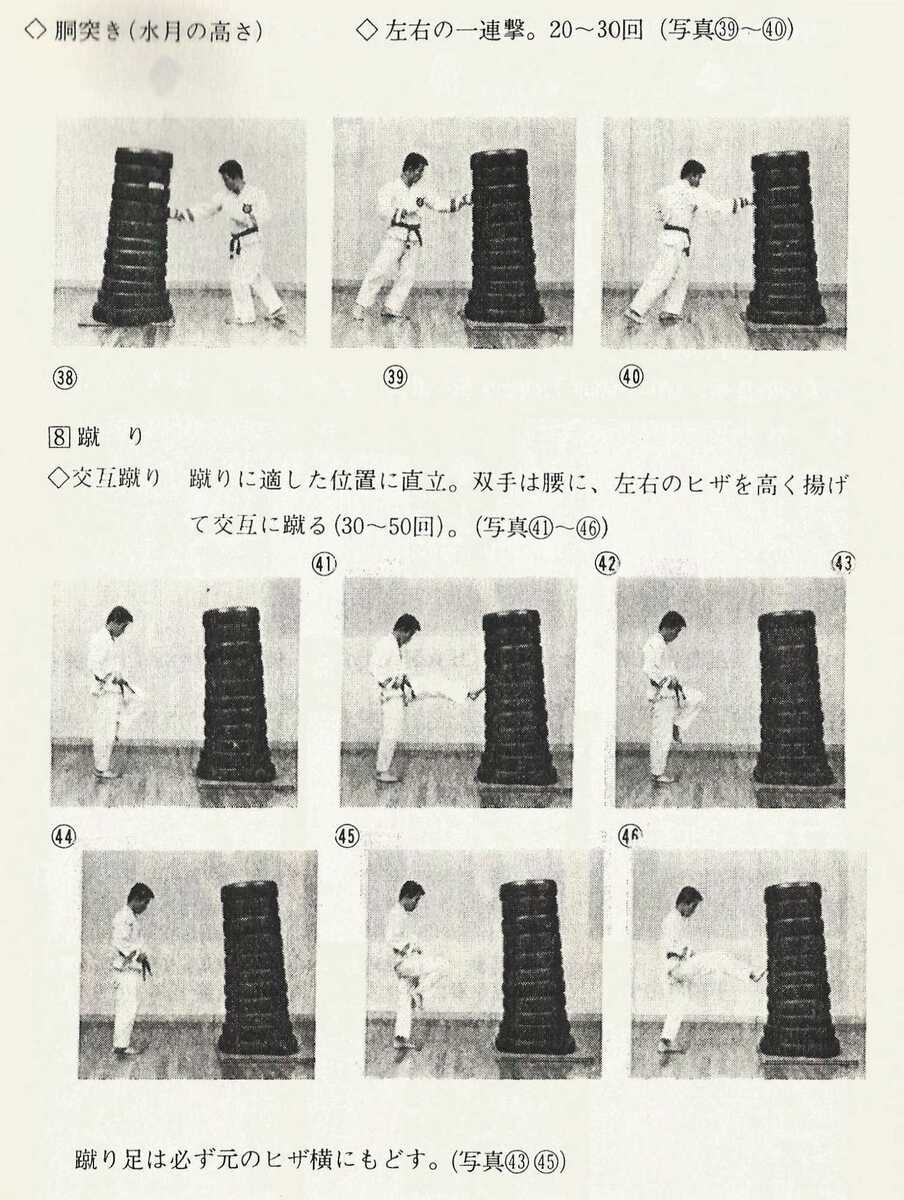
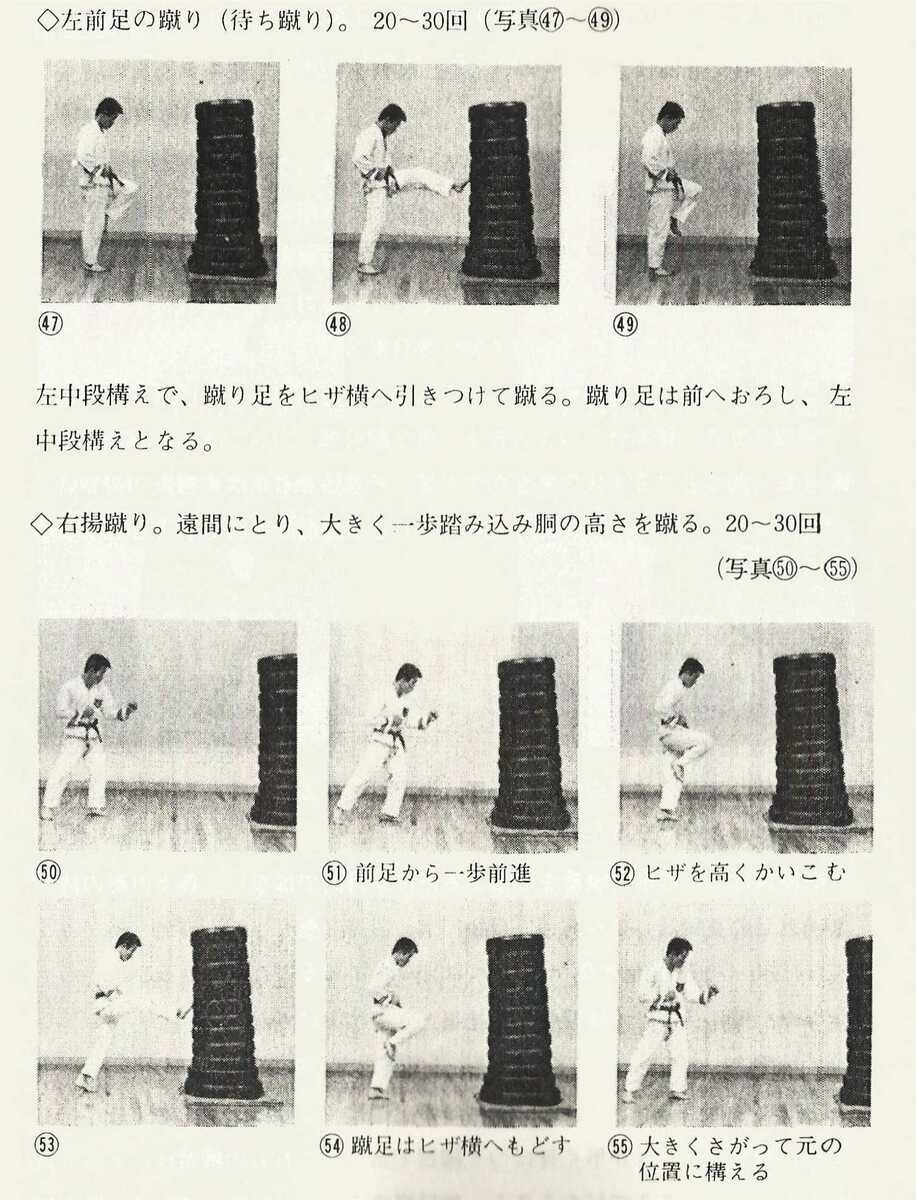
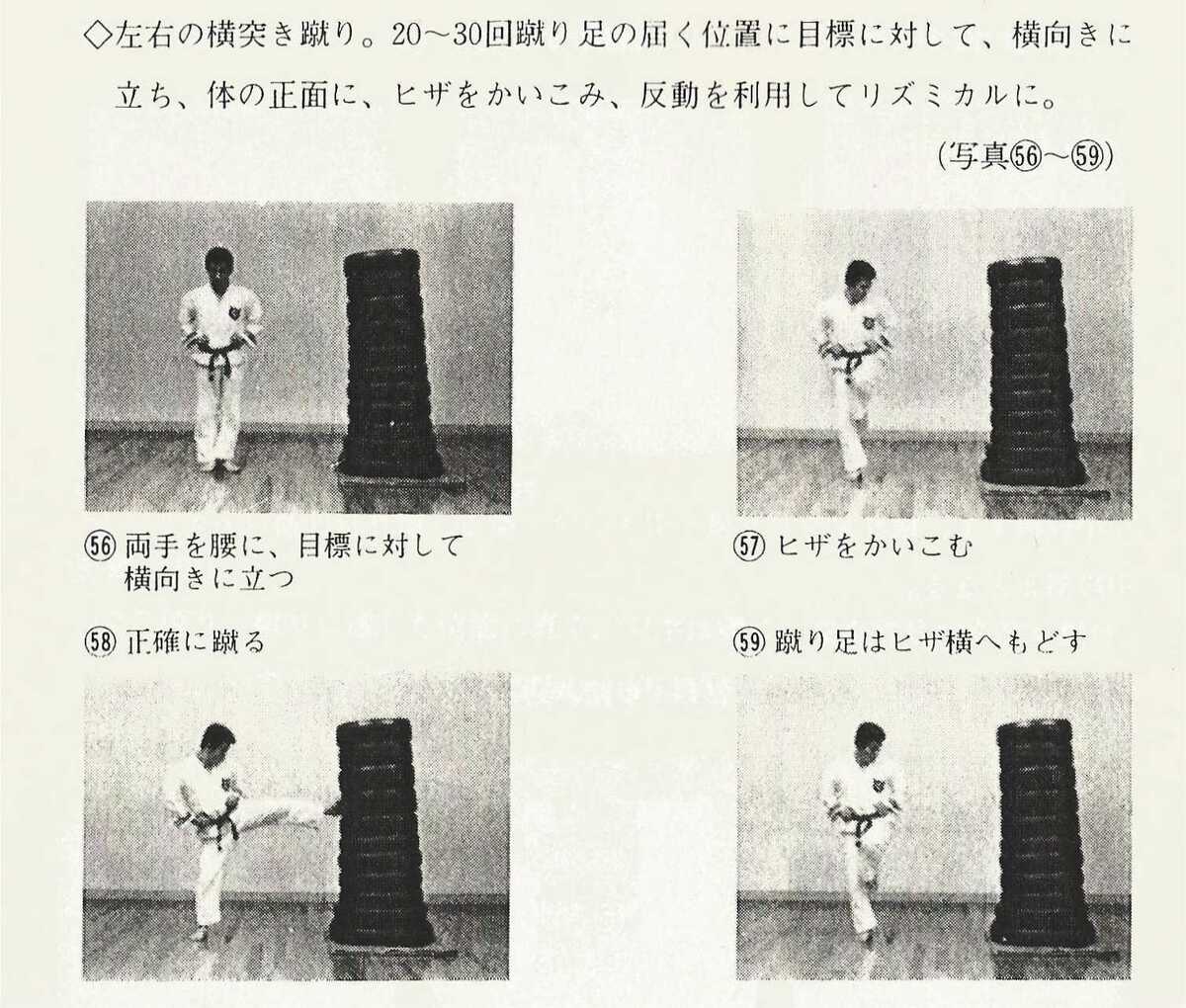
OTOSHI GERI – top down leg blow with the heel
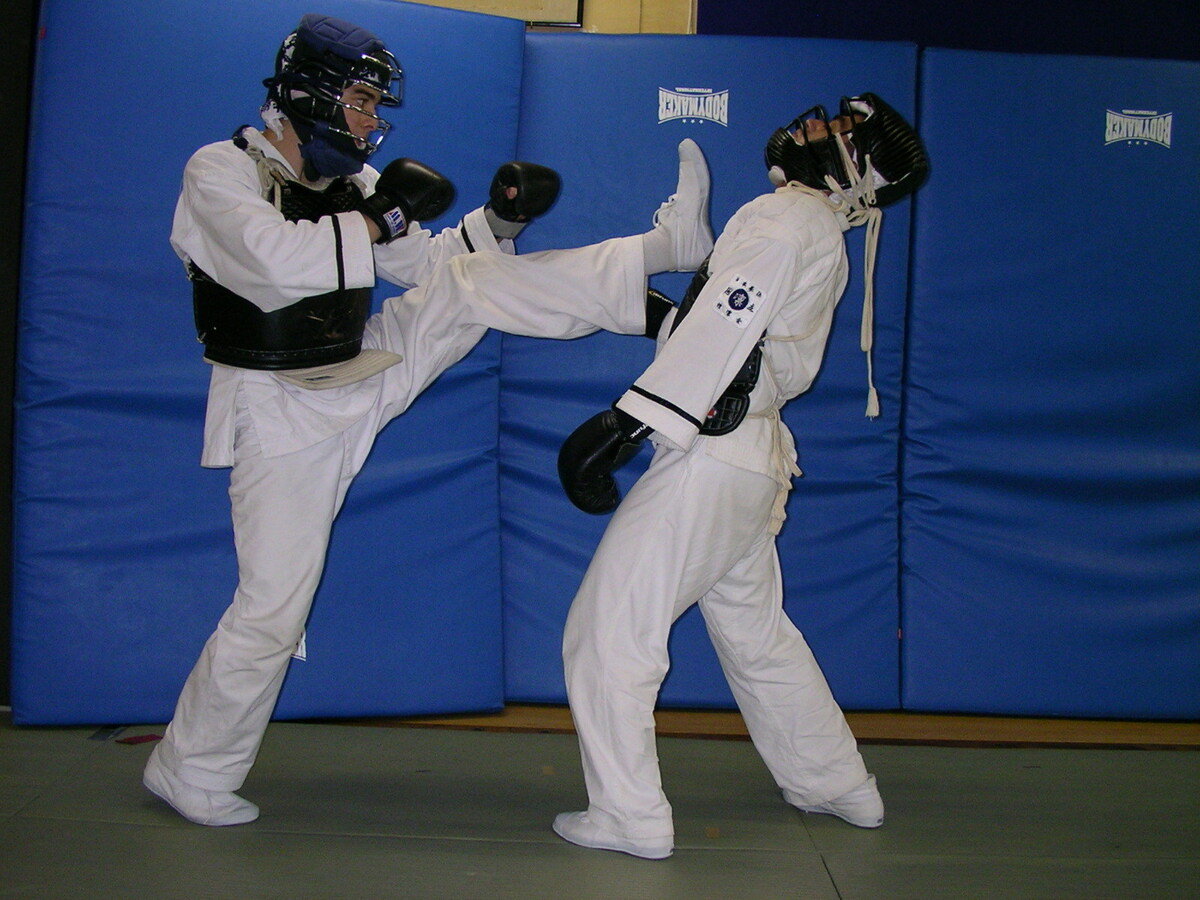
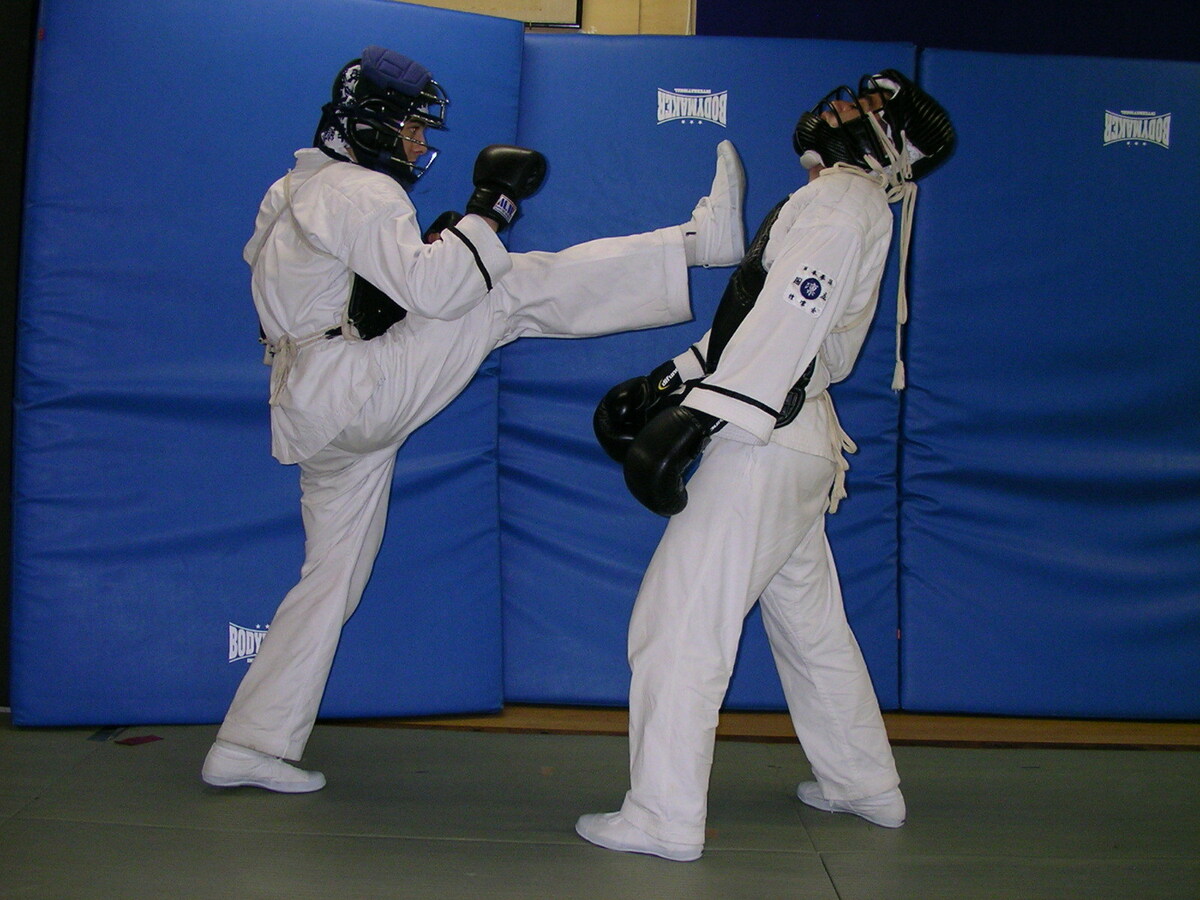
- HIDARI MEN OTOSHI GERI - left leg top down blow with the heel on the helmet
- MIGI MEN OTOSHI GERI - right leg top down blow with the heel on the helmet
- HIDARI DOU OTOSHI GERI - left leg top down blow with the heel on the waistcoat
- MIGI DOU OTOSHI GERI - right leg top down blow with the heel on the waistcoat
TSUKI GERI – side leg blow with the front part of the foot bottom:
- HIDARI MEN TSUKI GERI - left leg side blow on the helmet
- MIGI MEN TSUKI GERI - right leg side blow on the helmet
- HIDARI DOU TSUKI GERI - left leg side blow on the waistcoat
- MIGI DOU TSUKI GERI - right leg side blow on the waistcoat
AGE GERI – straight bottom up leg blow:
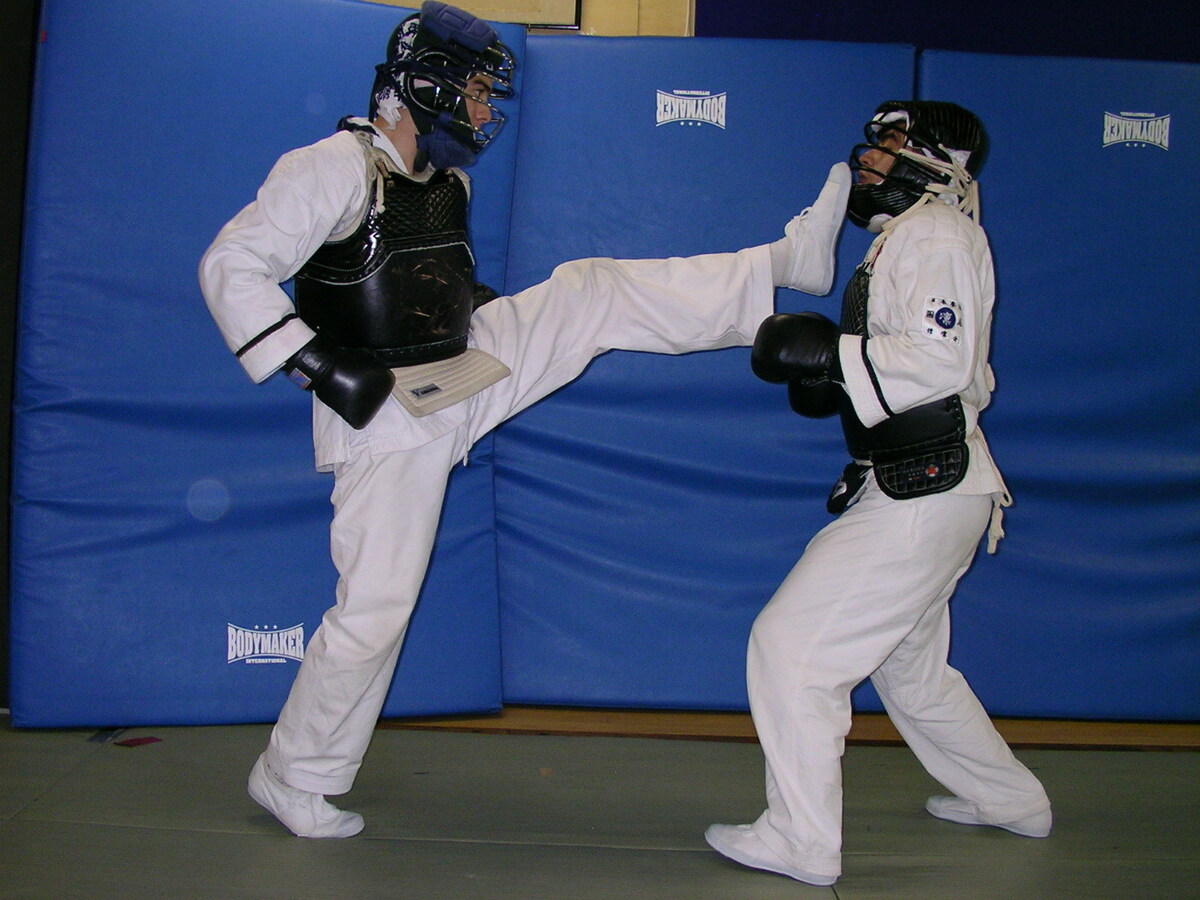
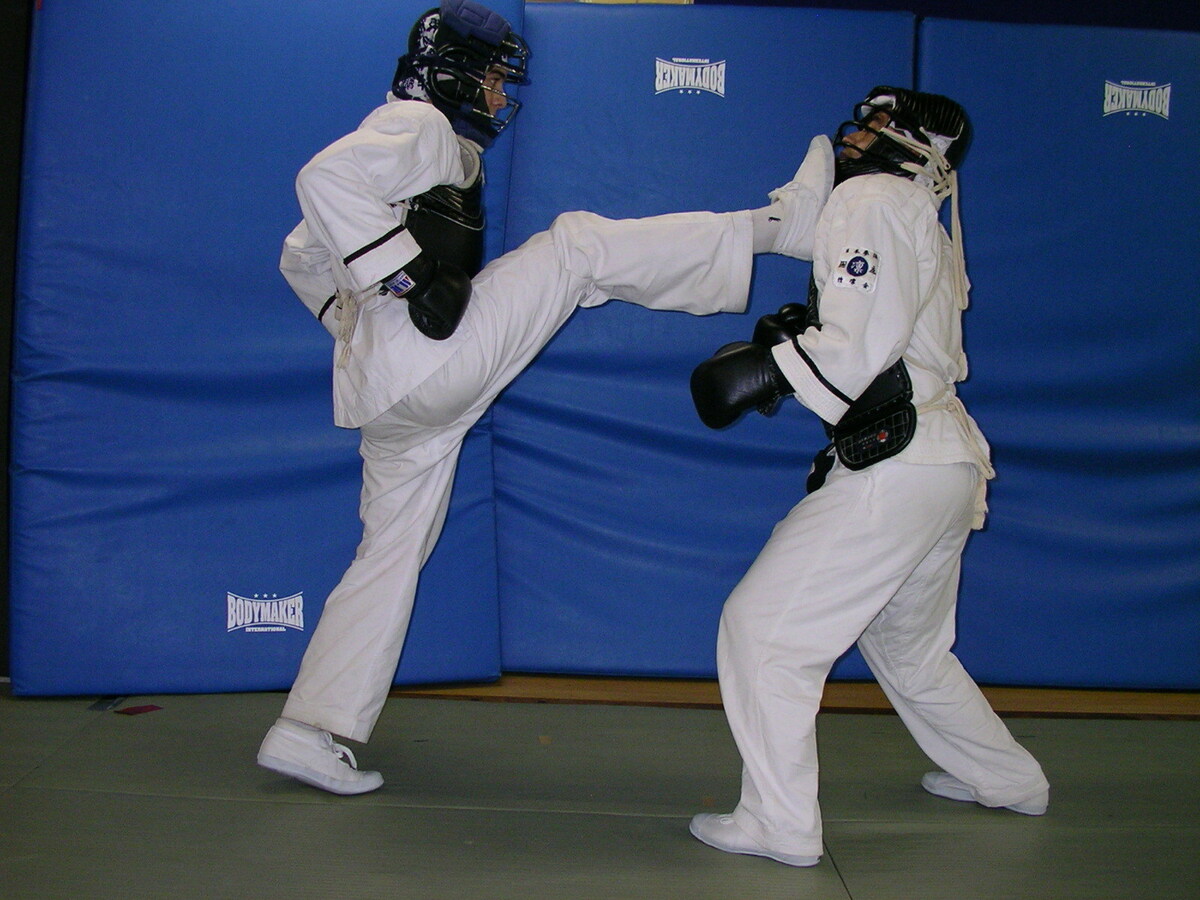
- HIDARI MEN AGE GERI - straight bottom up left leg blow on the helmet
- MIGI MEN AGE GERI - straight bottom up right leg blow on the helmet
- HIDARI DOU AGE GERI - straight bottom up left leg blow on the waistcoat
- MIGI DOU AGE GERI - straight bottom up right leg blow on the helmet
MAWASHI GERI – side blow with foot bottom lifting:
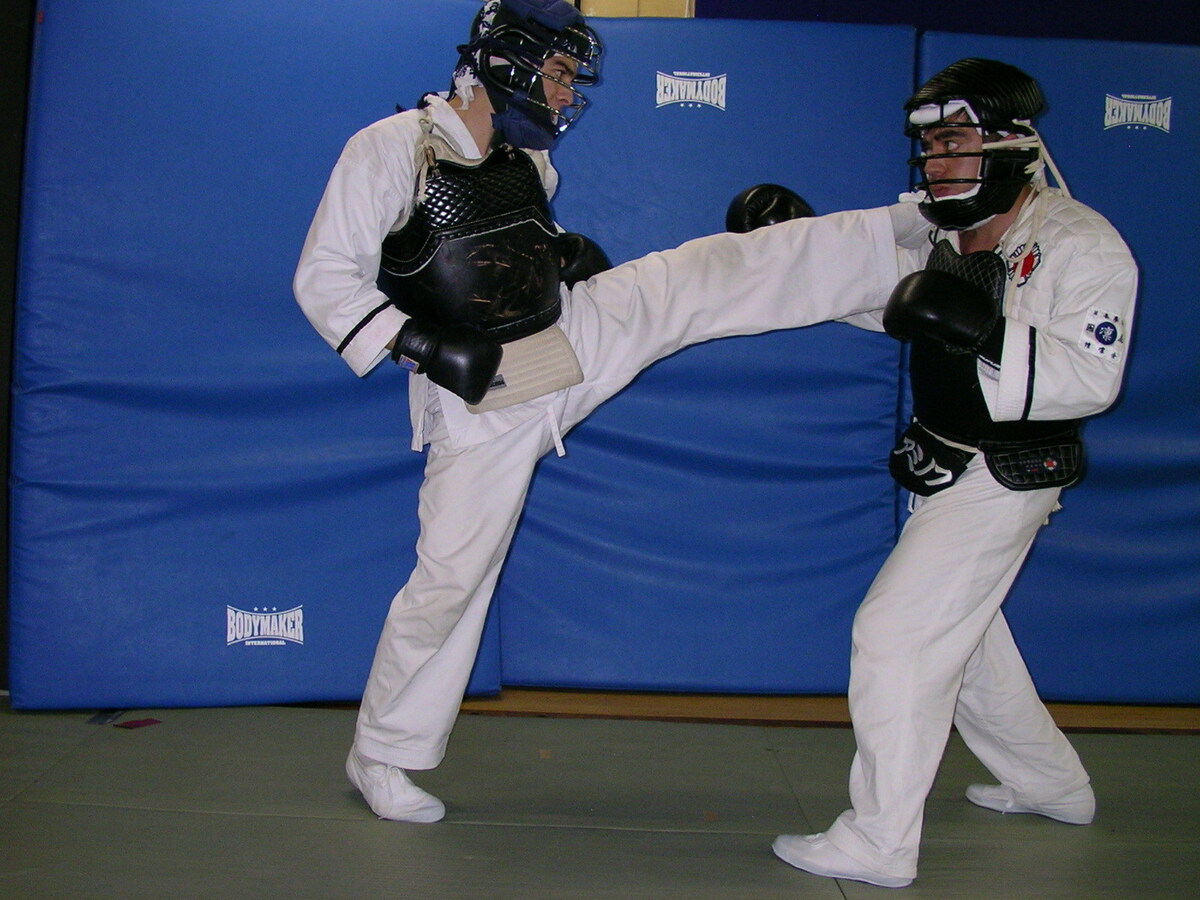
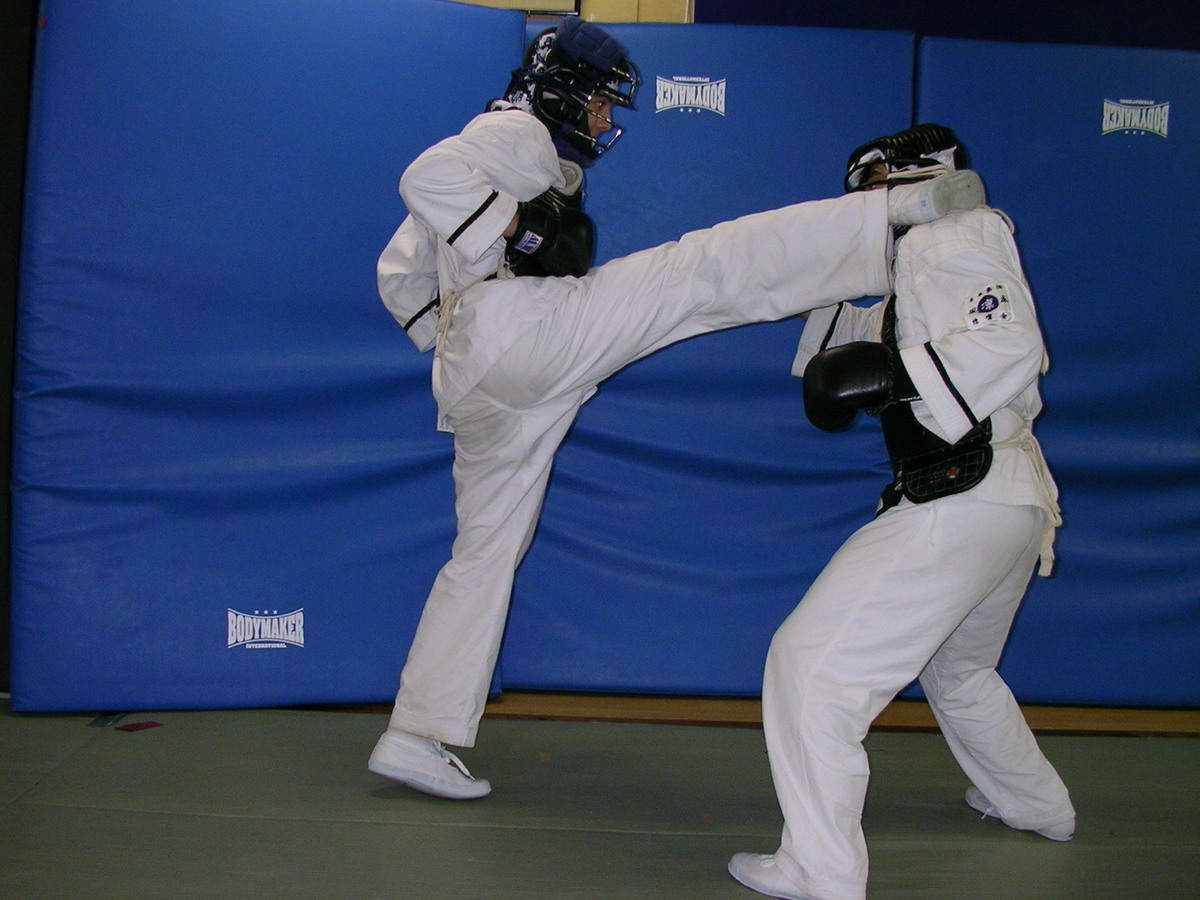
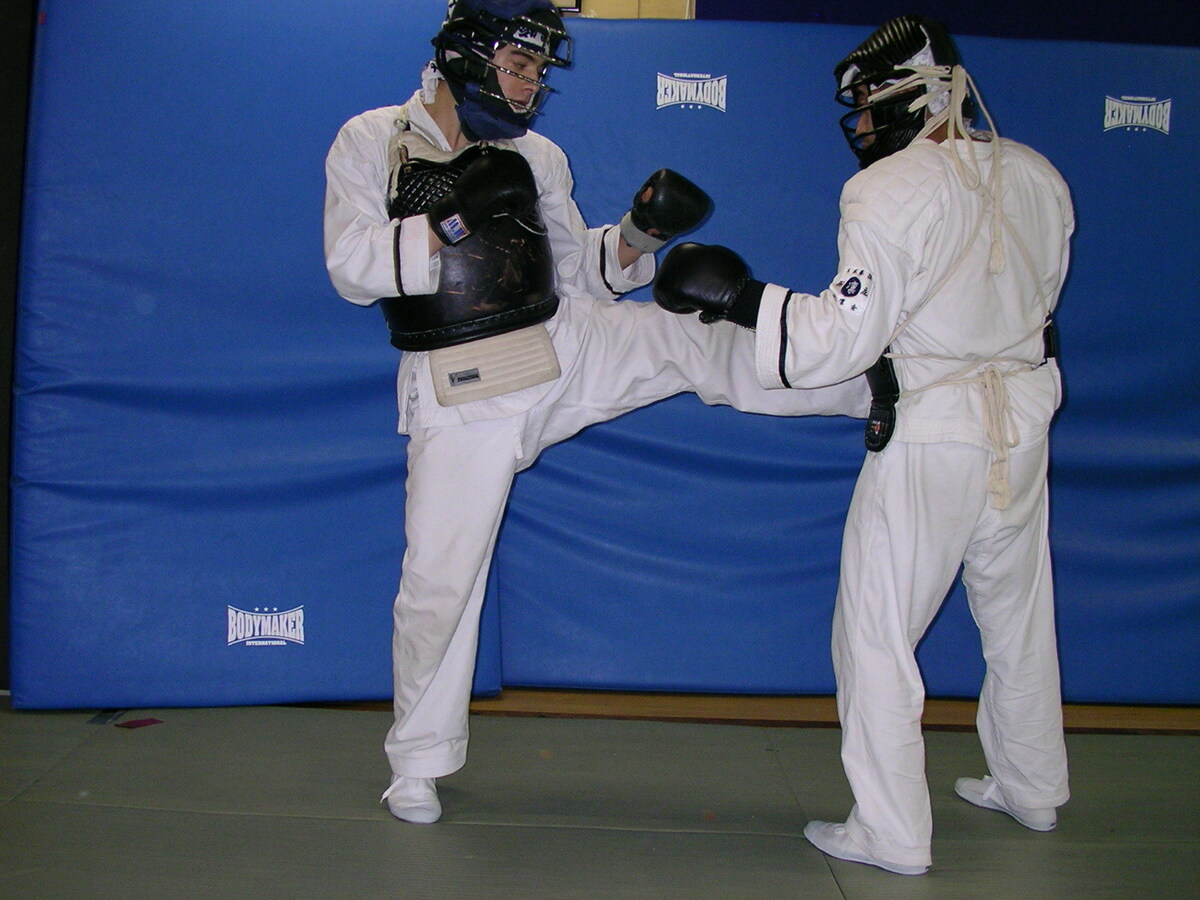
- HIDARI MEN MAWASHI GERI - side blow with the left foot bottom on the helmet
- MIGI MEN MAWASHI GERI - side blow with the right foot bottom on the helmet
- HIDARI DOU MAWASHI GERI - side blow with the left foot bottom on the waistcoat
- MIGI MEN MAWASHI GERI - side blow with the right foot bottom on the waistcoat
USHIRO MAWASHI GERI – blow with a turn of the foot bottom:
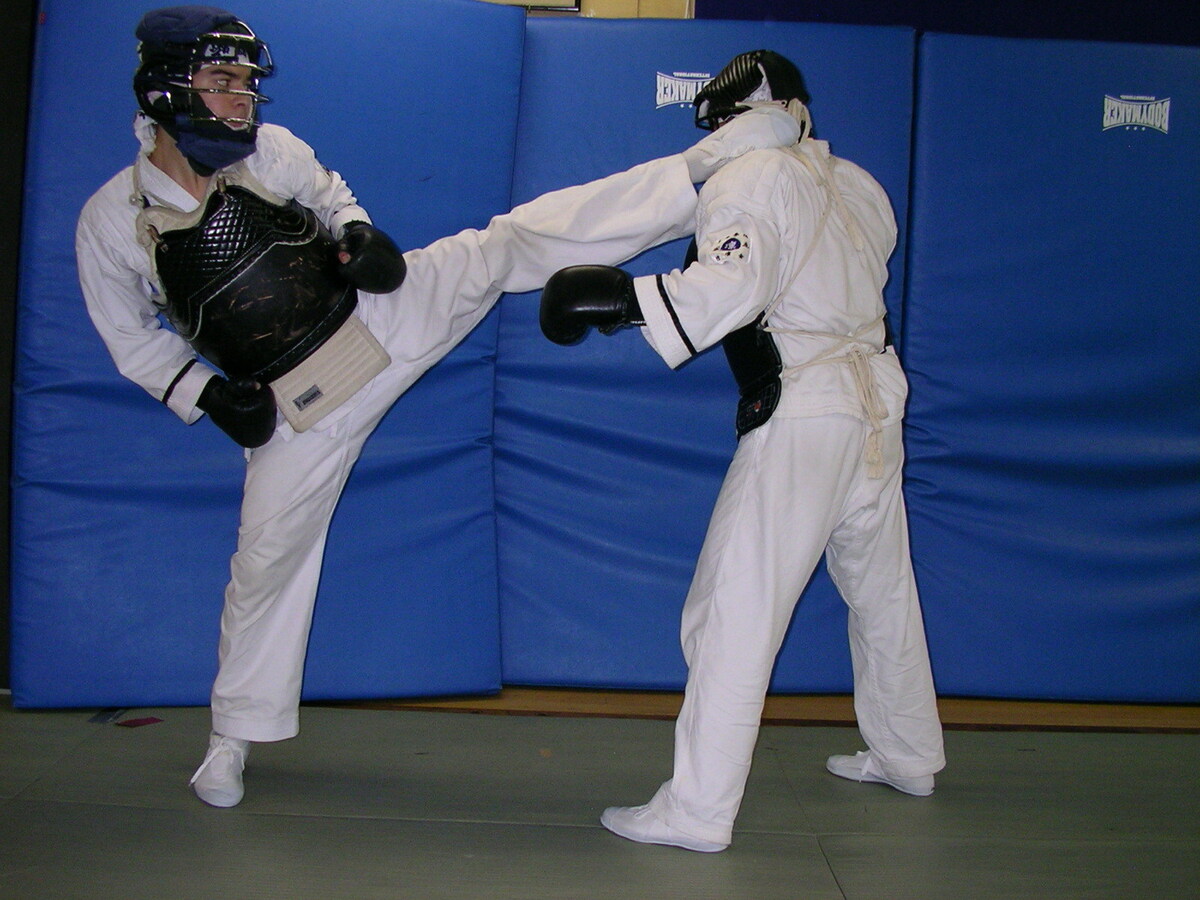
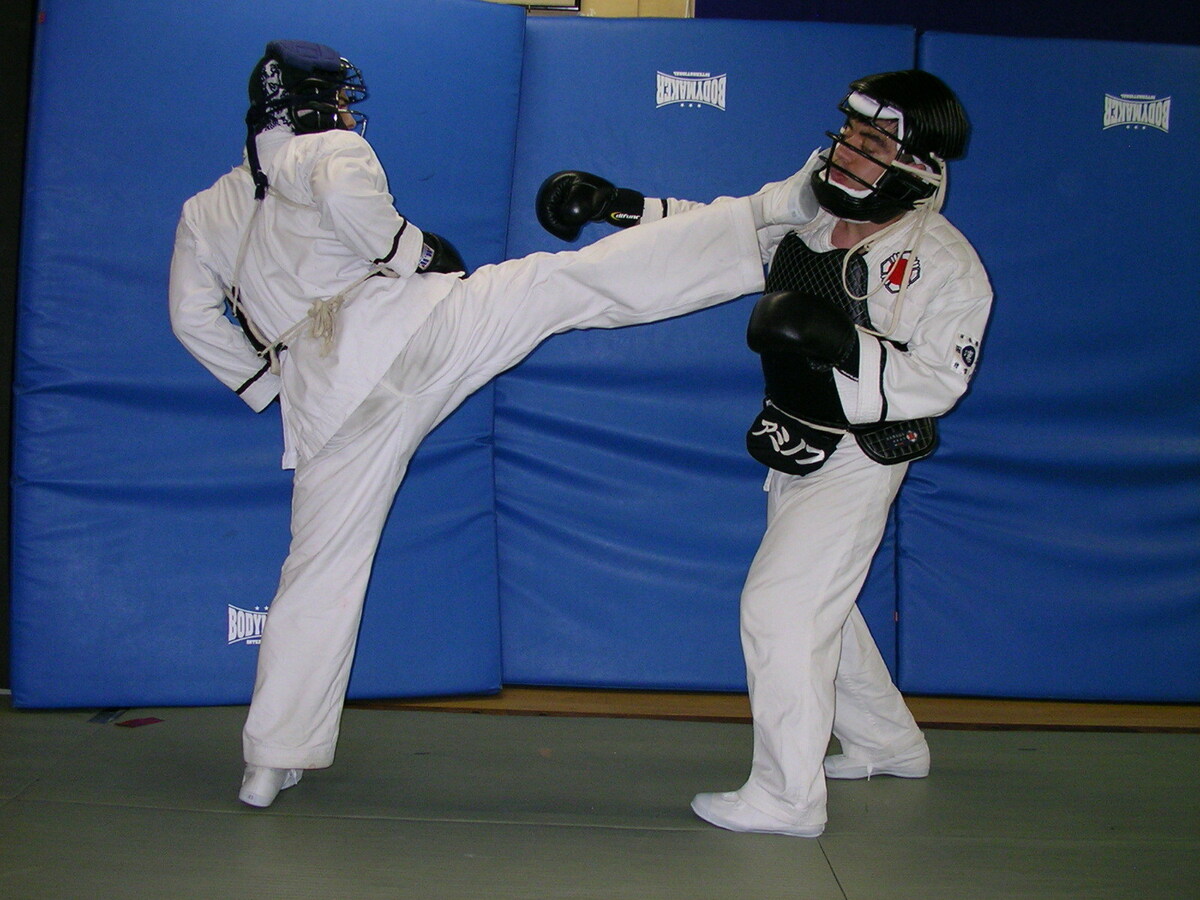
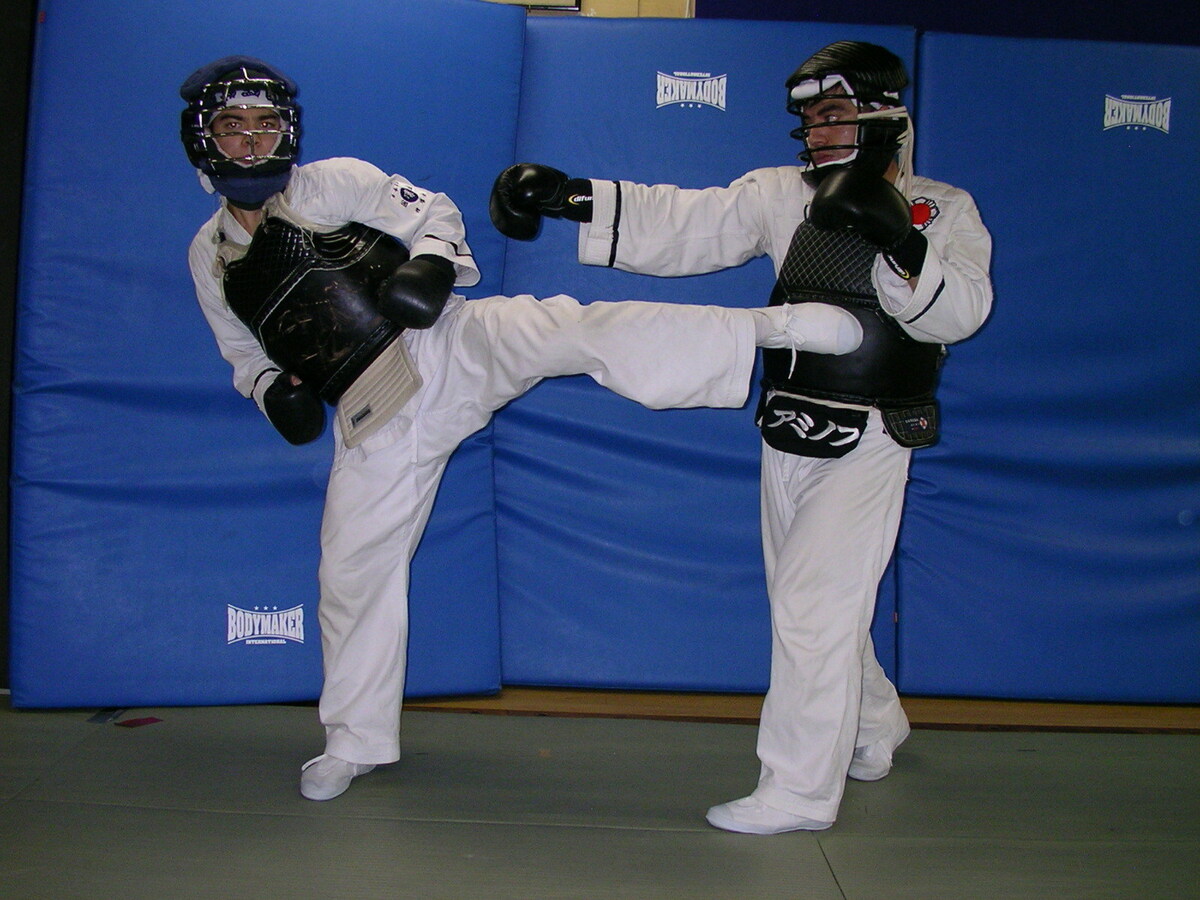
- HIDARI MEN USHIRO MAWASHI GERI - blow with a turn of the left foot bottom on the helmet
- MIGI MEN USHIRO MAWASHI GERI - blow with a turn of the right foot bottom on the helmet
- HIDARI DOU USHIRO MAWASHI GERI - blow with a turn of the left foot bottom on the waistcoat
- MIGI DOU USHIRO MAWASHI GERI - blow with a turn of the right foot bottom on the waistcoat
FUMI GERI – top down leg blow on the lying down opponent:


- HIDARI MEN FUMI GERI - left leg blow on the helmet of the lying down opponent
- MIGI MEN FUMI GERI - right leg blow on the helmet of the lying down opponent
- HIDARI DOU FUMI GERI - left leg blow on the waistcoat of the lying down opponent
- MIGI DOU FUMI GERI - right leg blow on the waistcoat of the lying down opponent
HIZA GERI – knee blow:
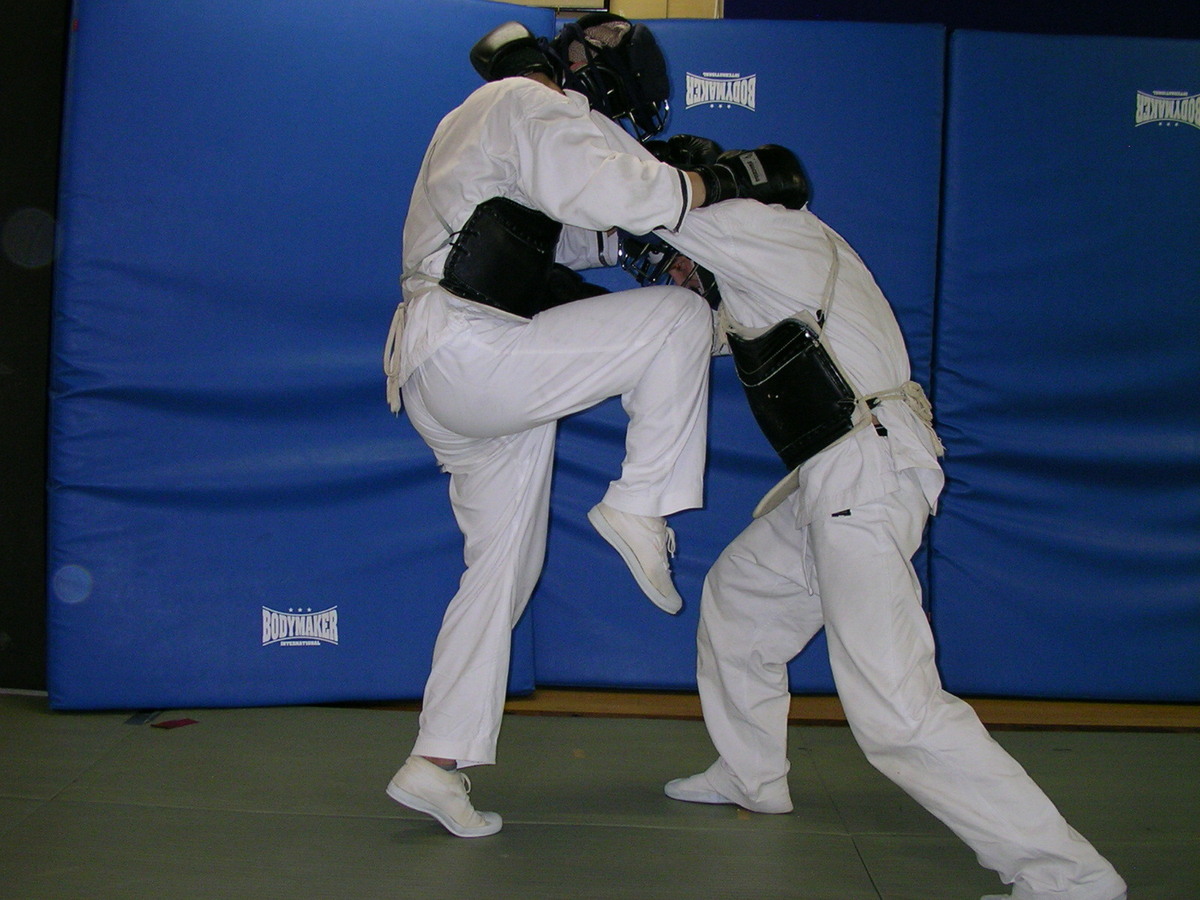
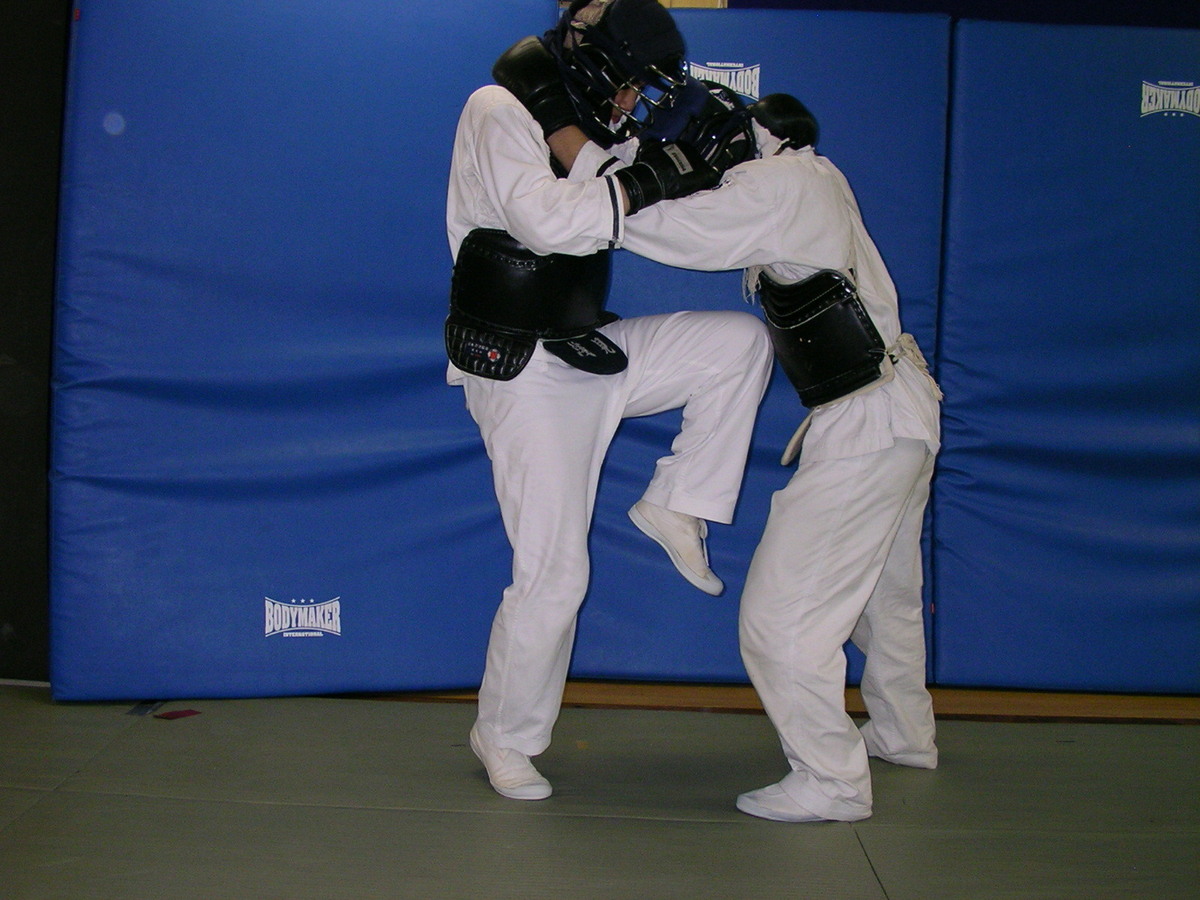
- HIDARI MEN HIZA GERI - left knee blow on the helmet
- MIGI MEN HIZA GERI - right knee blow on the helmet
- HIDARI DOU HIZA GERI - left knee blow on the waistcoat
- MIGI MEN HIZA GERI - right knee blow on the waistcoat
KUMI UCHI YORI TSUKI – finishing arm blow on the lying down opponent during wrestling:
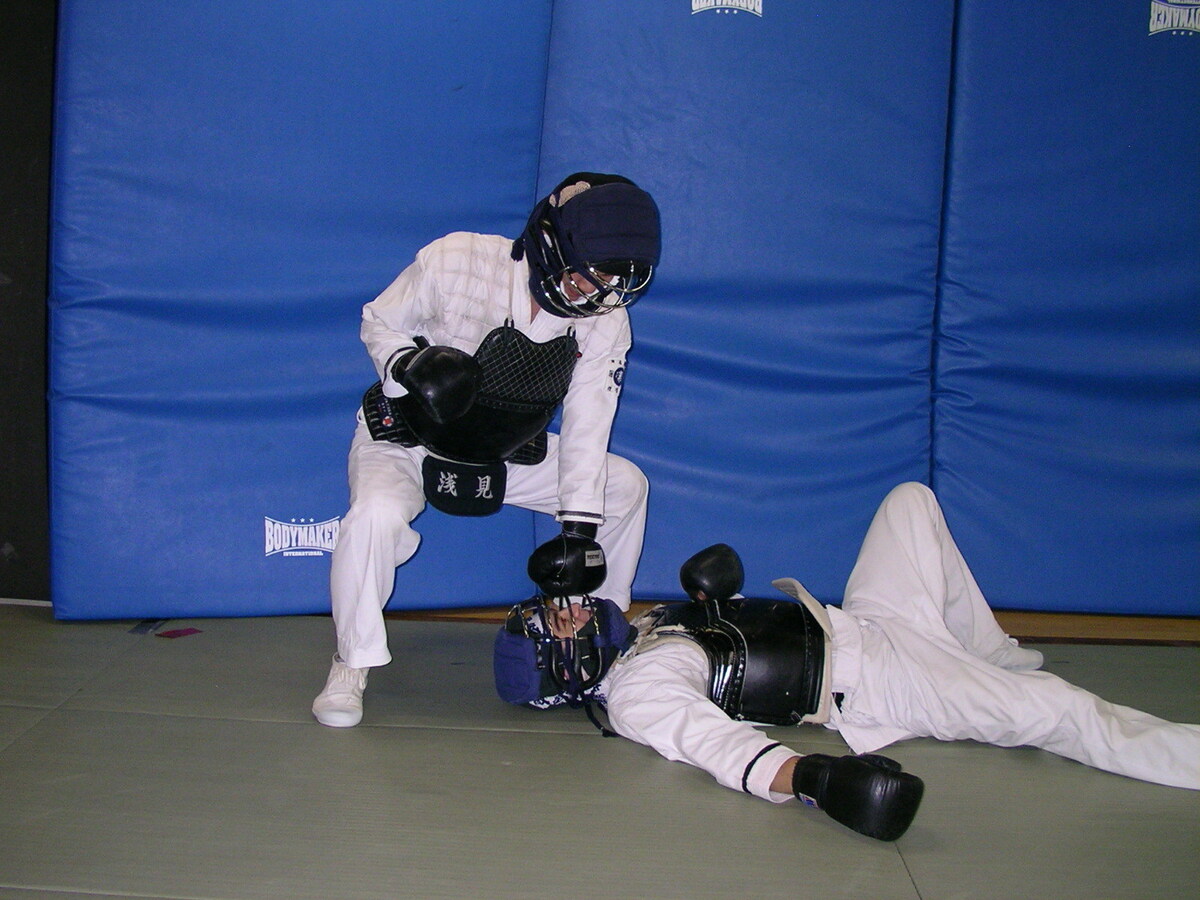
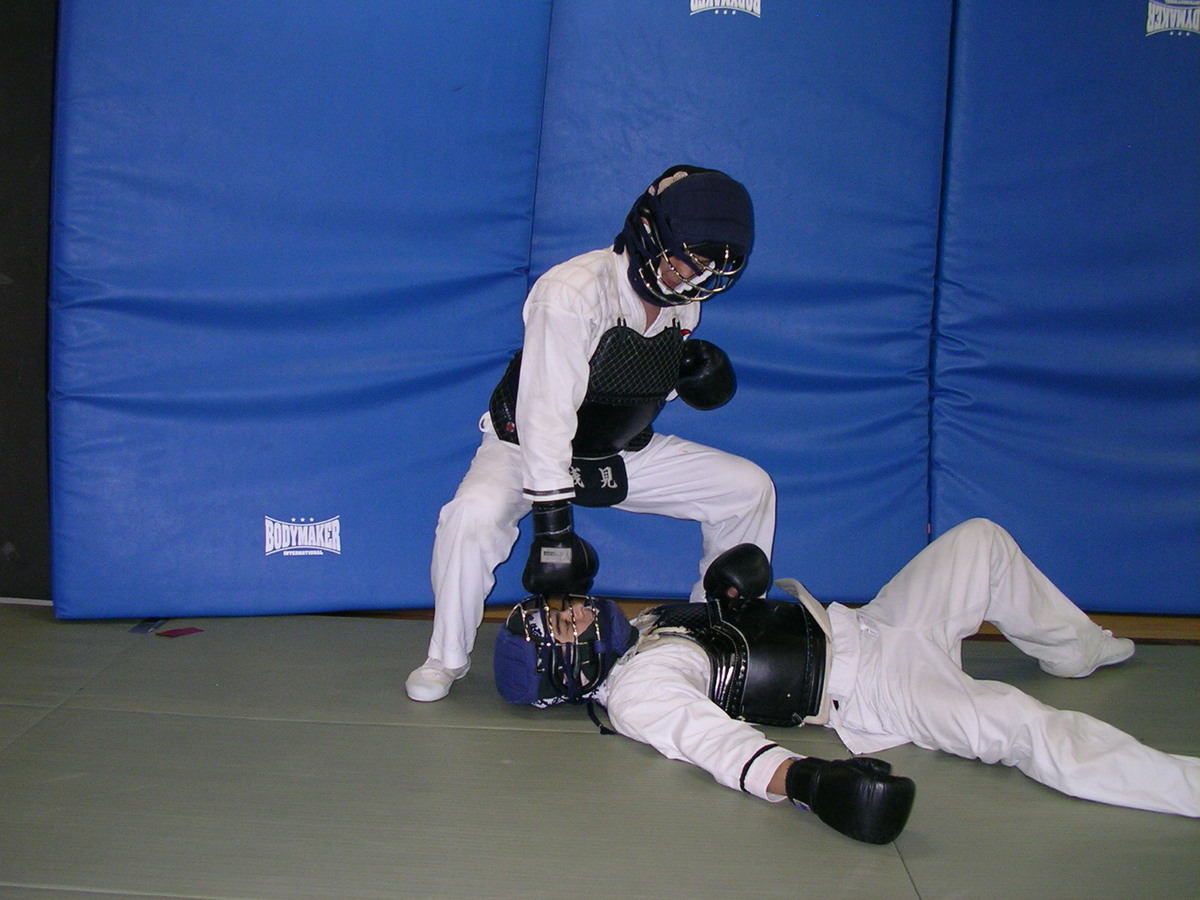
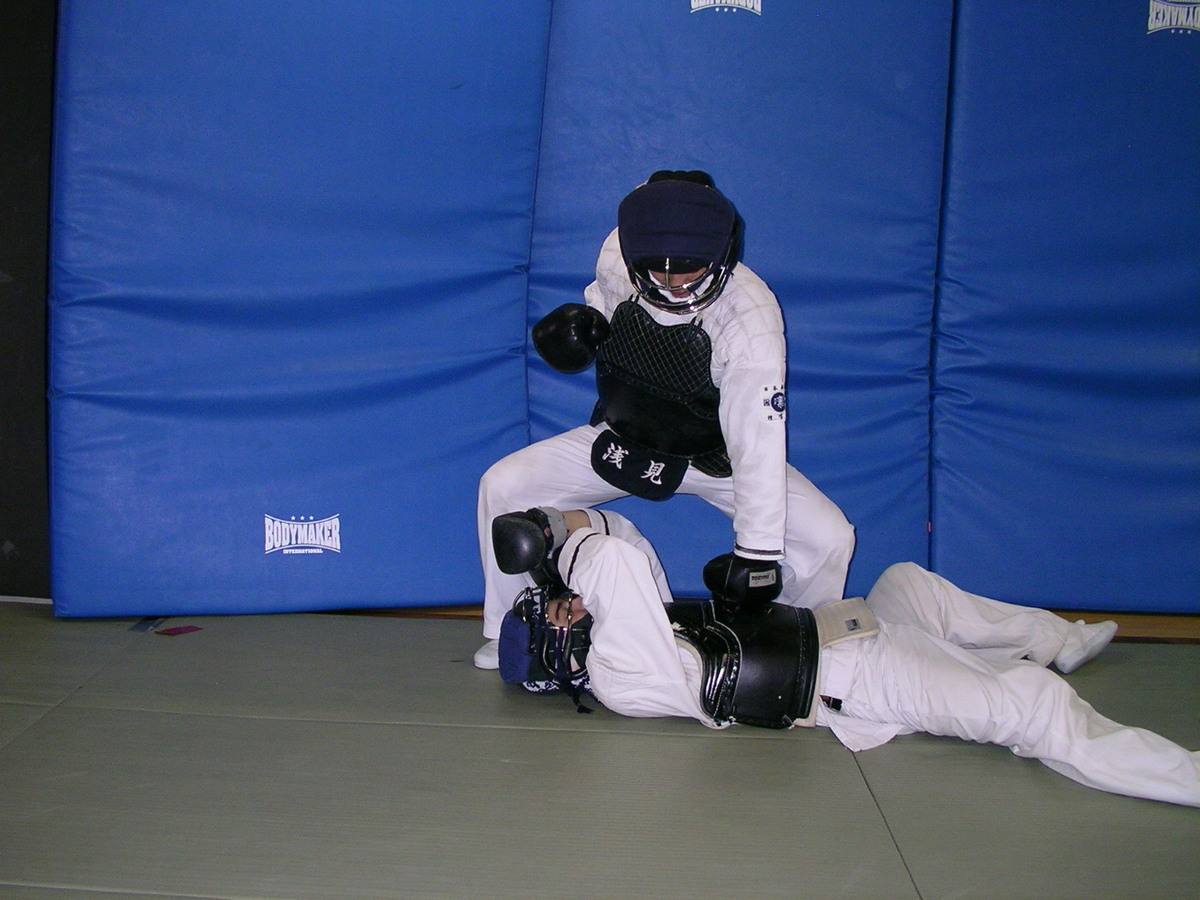
- KUMI UCHI YORI TSUKI HIDARI MEN DZUKI - finishing left arm blow on the helmet
- KUMI UCHI YORI TSUKI MIGI MEN DZUKI - finishing right arm blow on the helmet
- KUMI UCHI YORI TSUKI HIDARI DOU DZUKI - finishing left arm blow on the waistcoat
- KUMI UCHI YORI TSUKI MIGI DOU DZUKI - finishing right arm blow on the waistcoat
KUMI UCHI YORI HIZA GERI – finishing knee blow on the lying down opponent during wrestling:
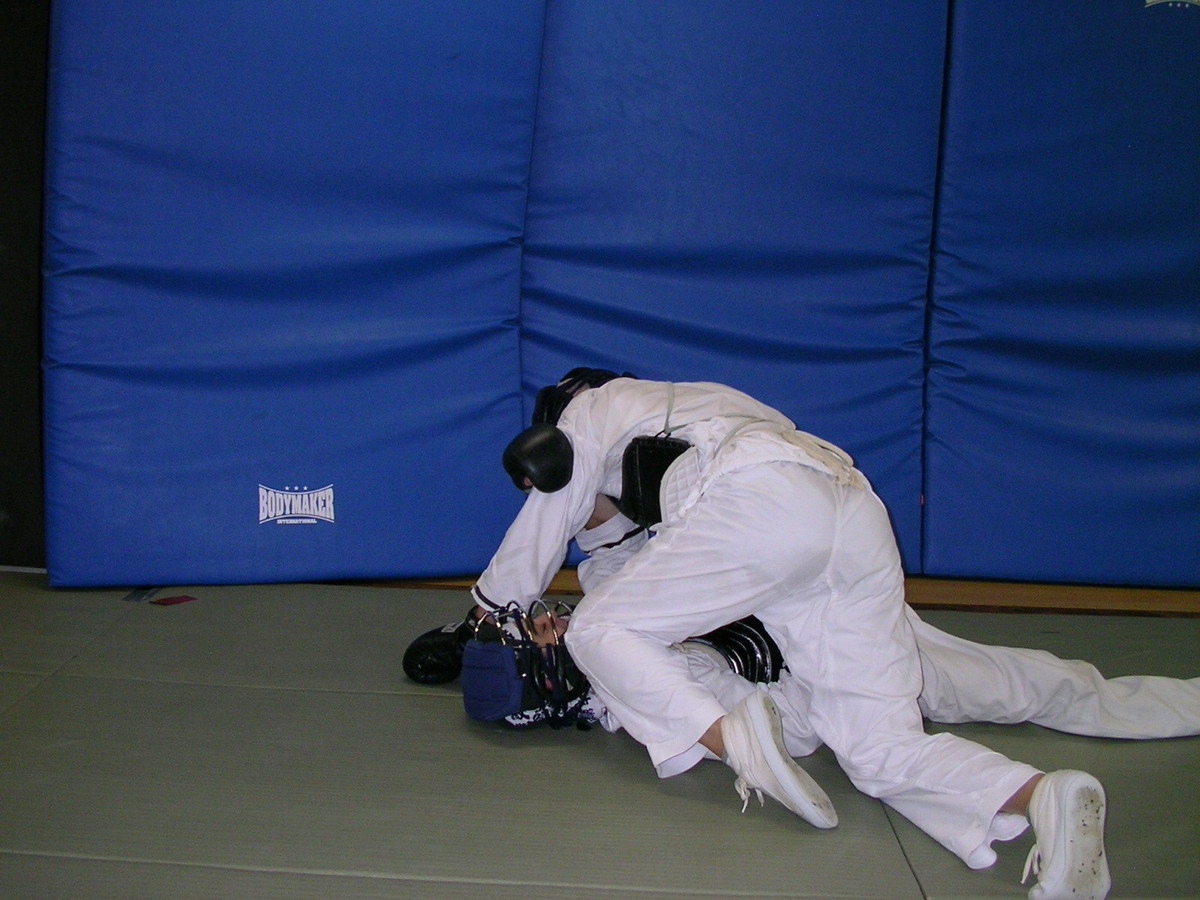
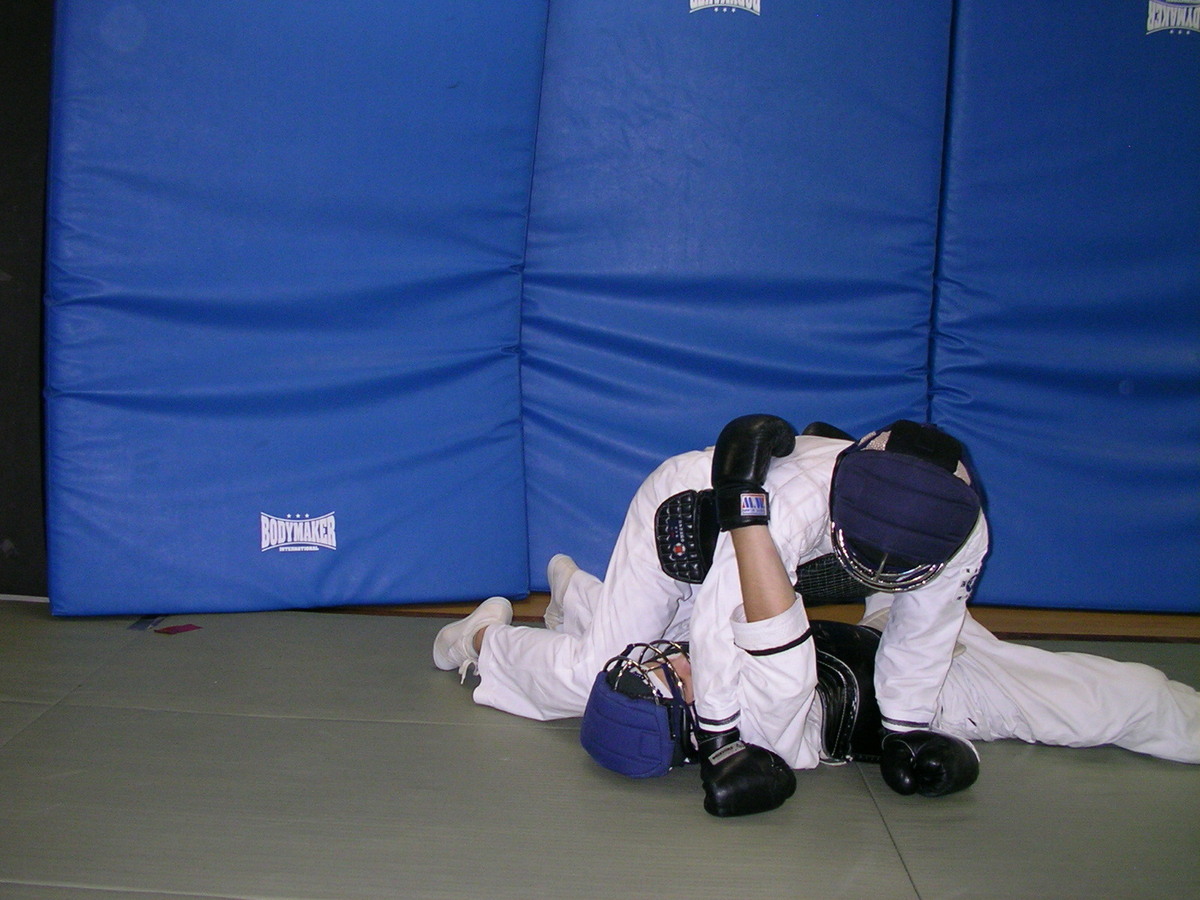
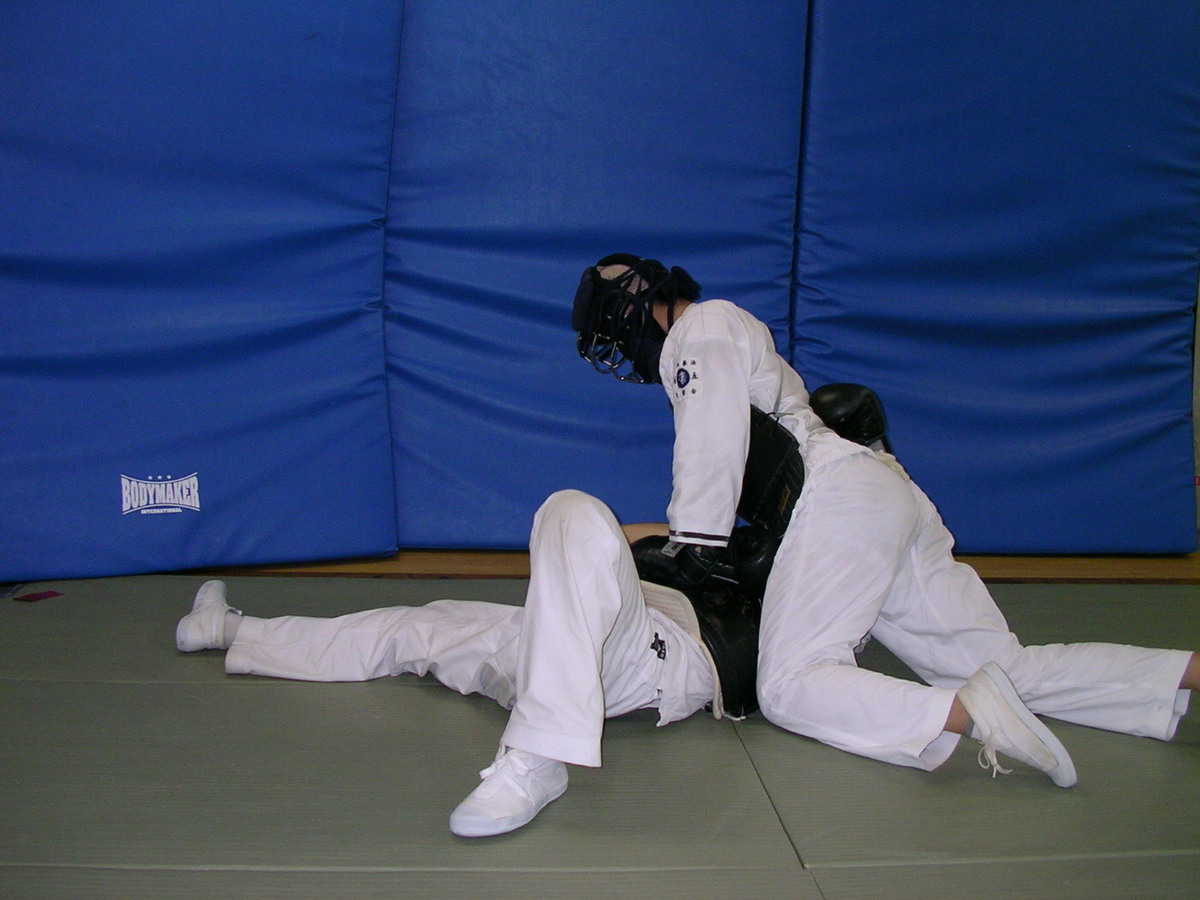
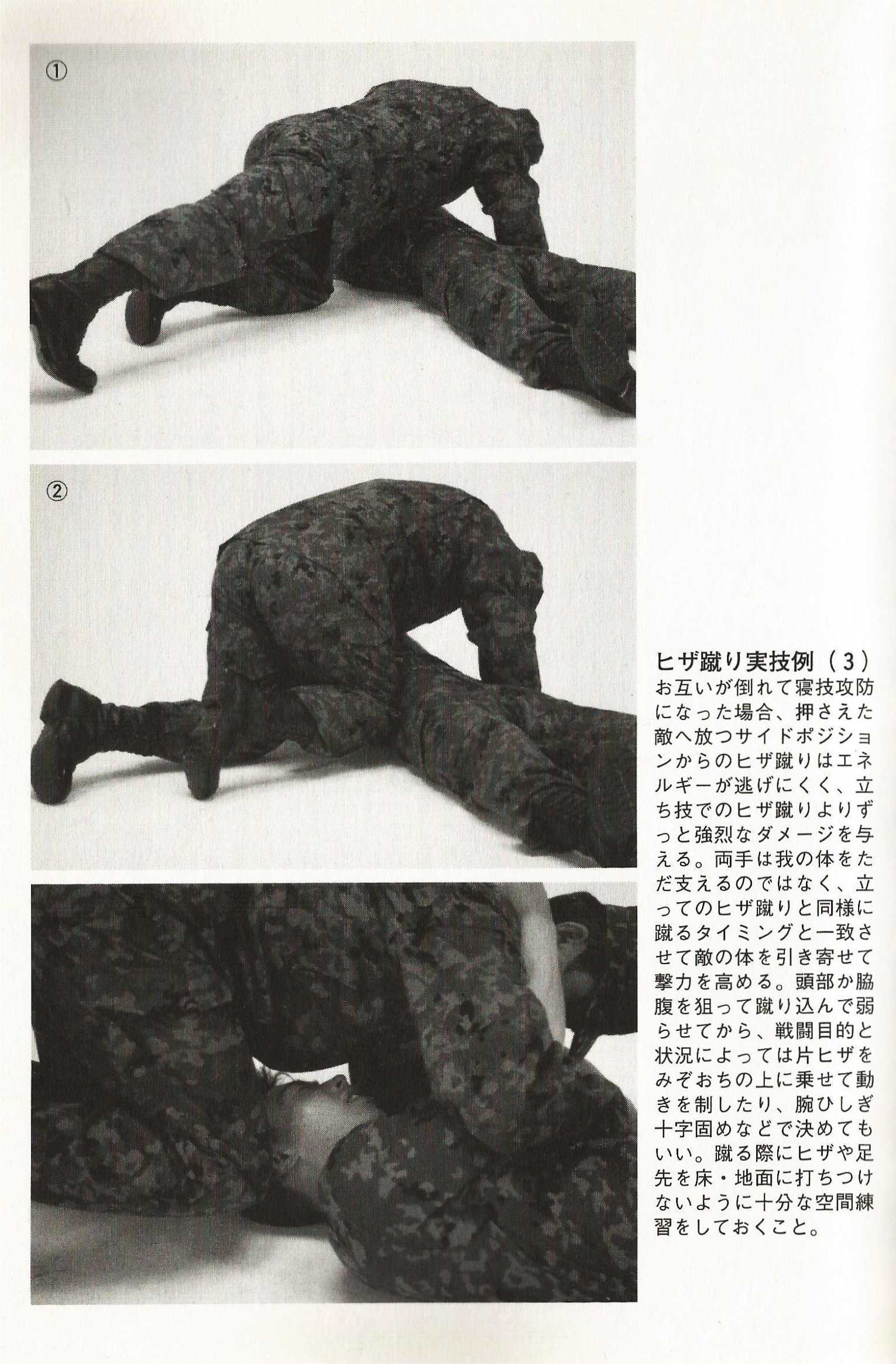
- KUMI UCHI YORI HIDARI MEN HIZA GERI - finishing left knee blow on the helmet
- KUMI UCHI YORI MIGI MEN HIZA GERI - finishing right knee blow on the helmet
- KUMI UCHI YORI HIDARI DOU HIZA GERI - finishing left knee blow on the waistcoat
- KUMI UCHI YORI MIGI DOU HIZA GERI - finishing right knee blow on the waistcoat
KUMI UCHI YORI HUJI UCHI - finishing elbow blow on the lying down opponent during wrestling:
- KUMI UCHI YORI HIDARI MEN HIJI UCHI - finishing left elbow blow on the helmet
- KUMI UCHI YORI MIGI MEN HIJI UCHI - finishing right elbow blow on the helmet
- KUMI UCHI YORI HIDARI DOU HIJI UCHI - finishing left elbow blow on the waistcoat
- KUMI UCHI YORI MIGI DOU HIJI UCHI - finishing right elbow blow on the waistcoat
KUMI UCHI YORI OTOSHI GERI - finishing top down leg blow by horizontal wrestling:
- KUMI UCHI YORI HIDARI MEN OTOSHI GERI - finishing left leg blow on the helmet in lying position
- KUMI UCHI YORI TSUKIORII HIDARI MEN OTOSHI GERI - finishing right leg blow on the helmet in lying position
- KUMI UCHI YORI HIDARI DOU OTOSHI GERI - finishing right leg blow on the waistcoat in lying position
- KUMI UCHI YORI MIGI MEN OTOSHI GERI - finishing right leg blow on the waistcoat in lying position
GYAKU WAZA – technique for performing a joint lock:
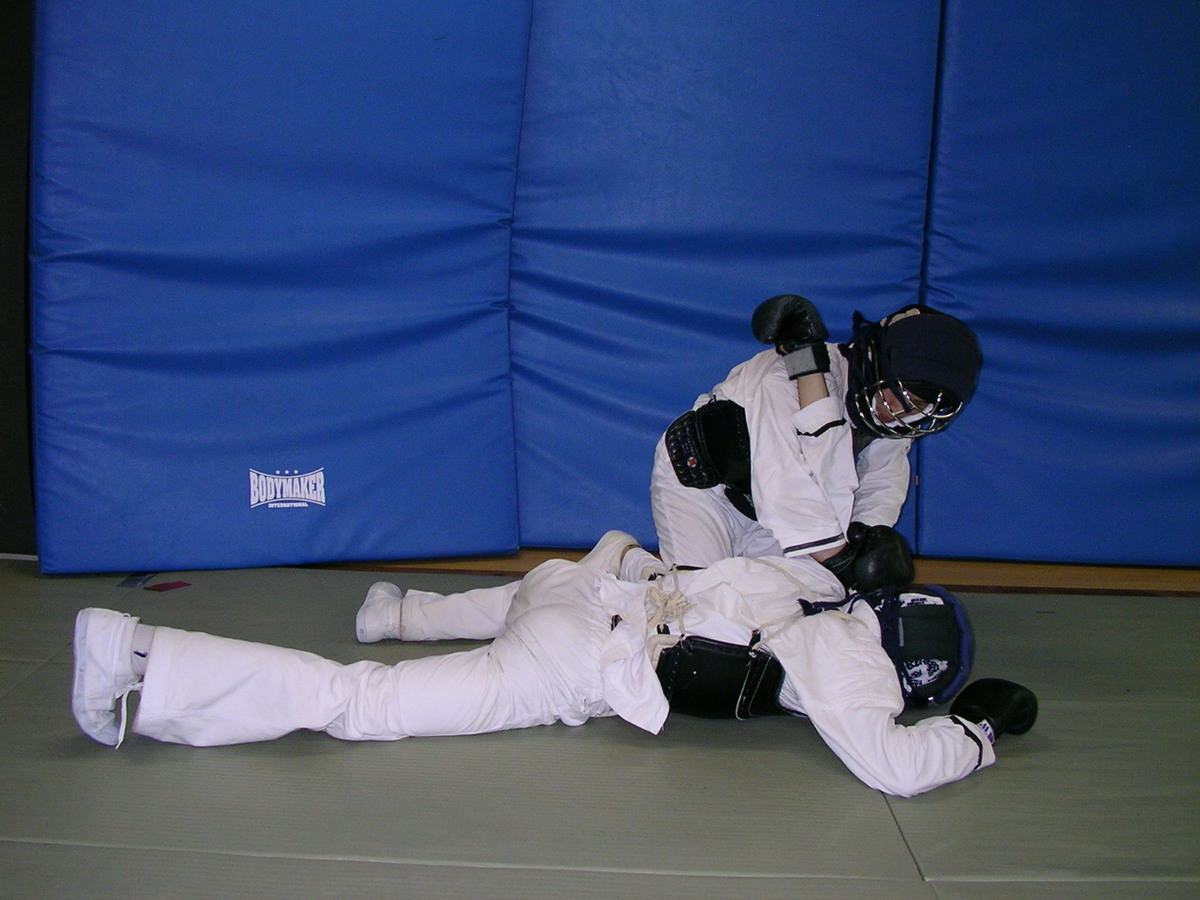
- GYAKU WAZA HIDARI UDE - technique for performing a joint lock on the left arm
- GYAKU WAZA MIGI UDE - technique for performing a joint lock on the right arm
- NAGE WAZA TORI GYAKU- throw technique and subsequently performing of a joint lock
NAGE WAZA – throw technique :
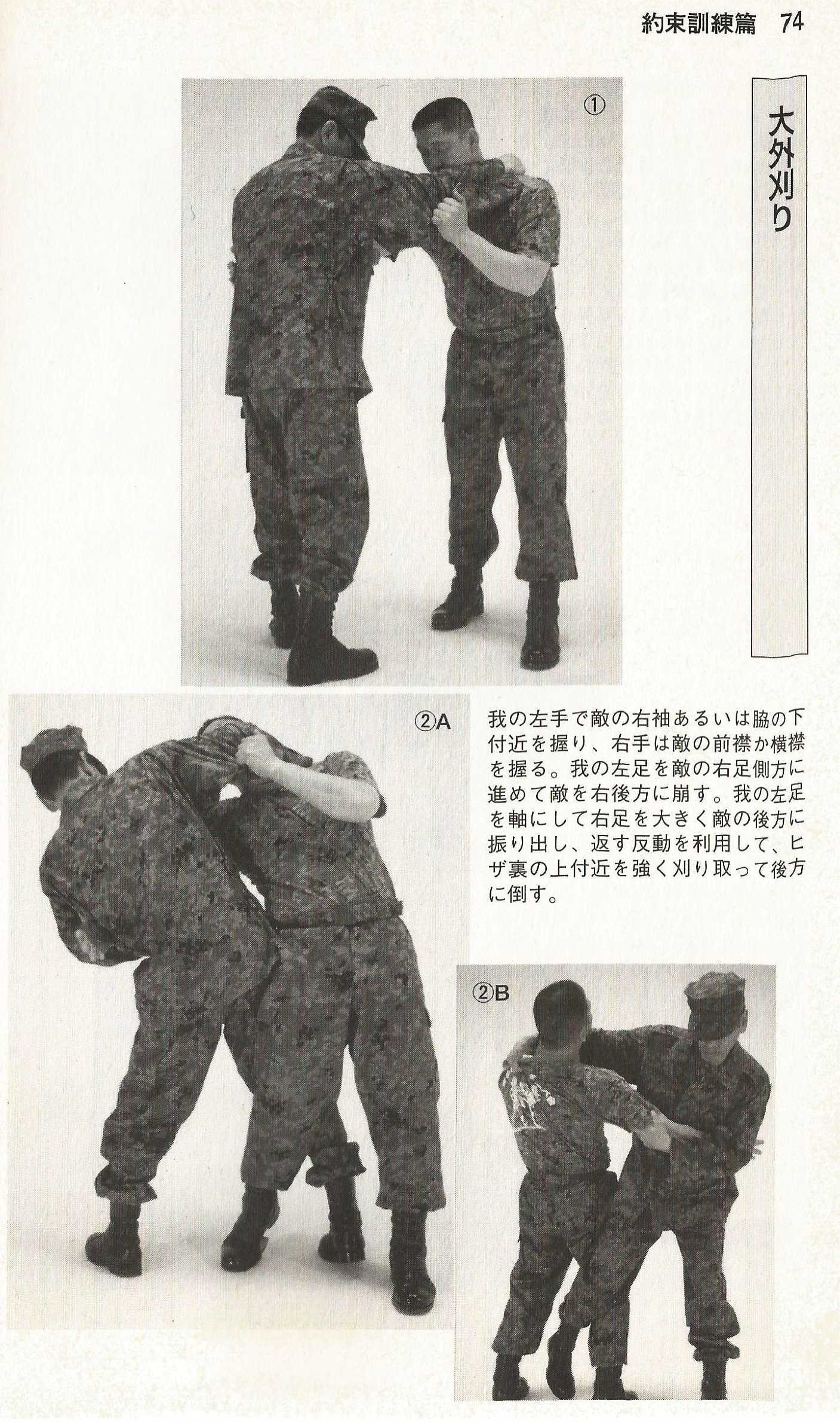
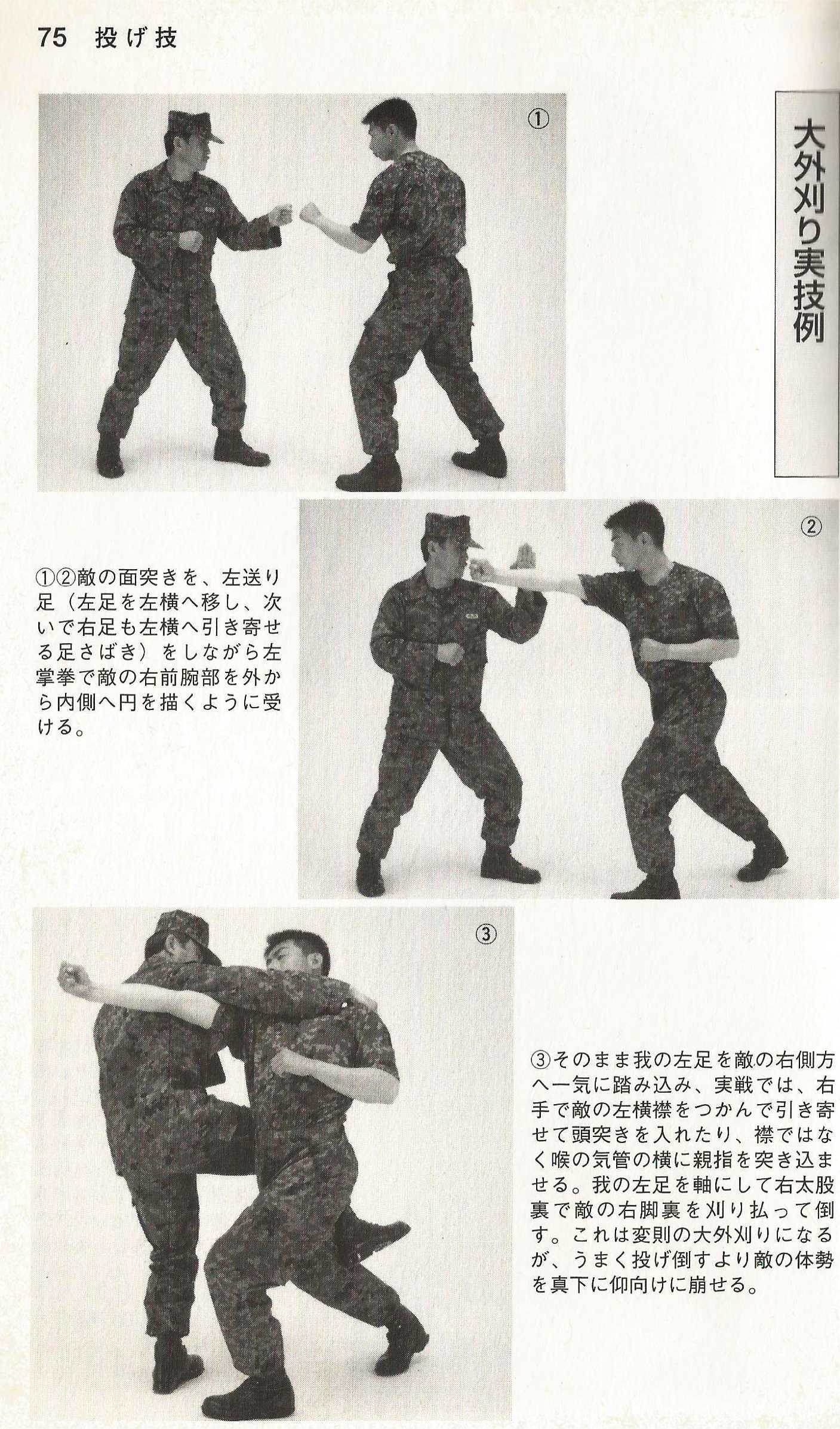
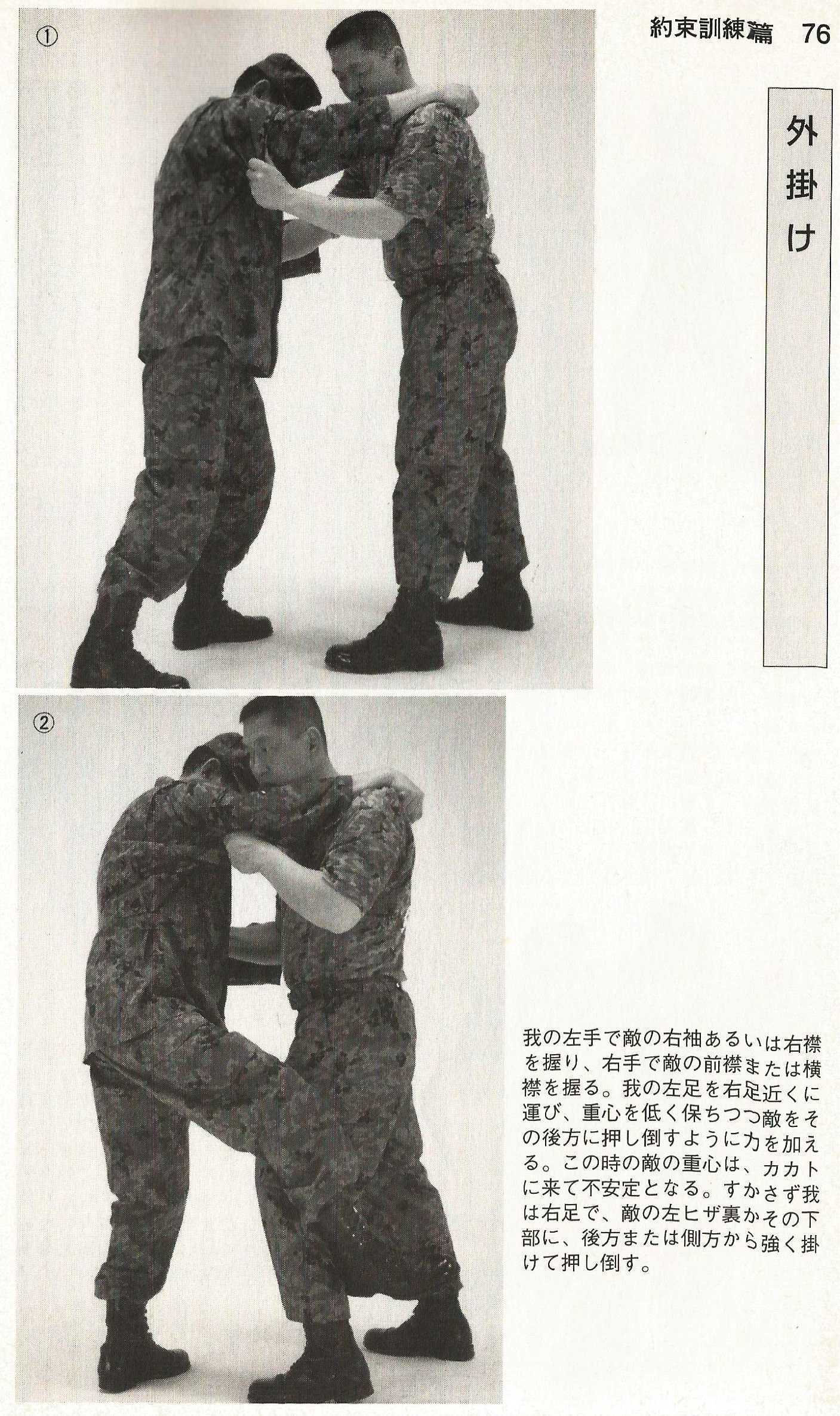
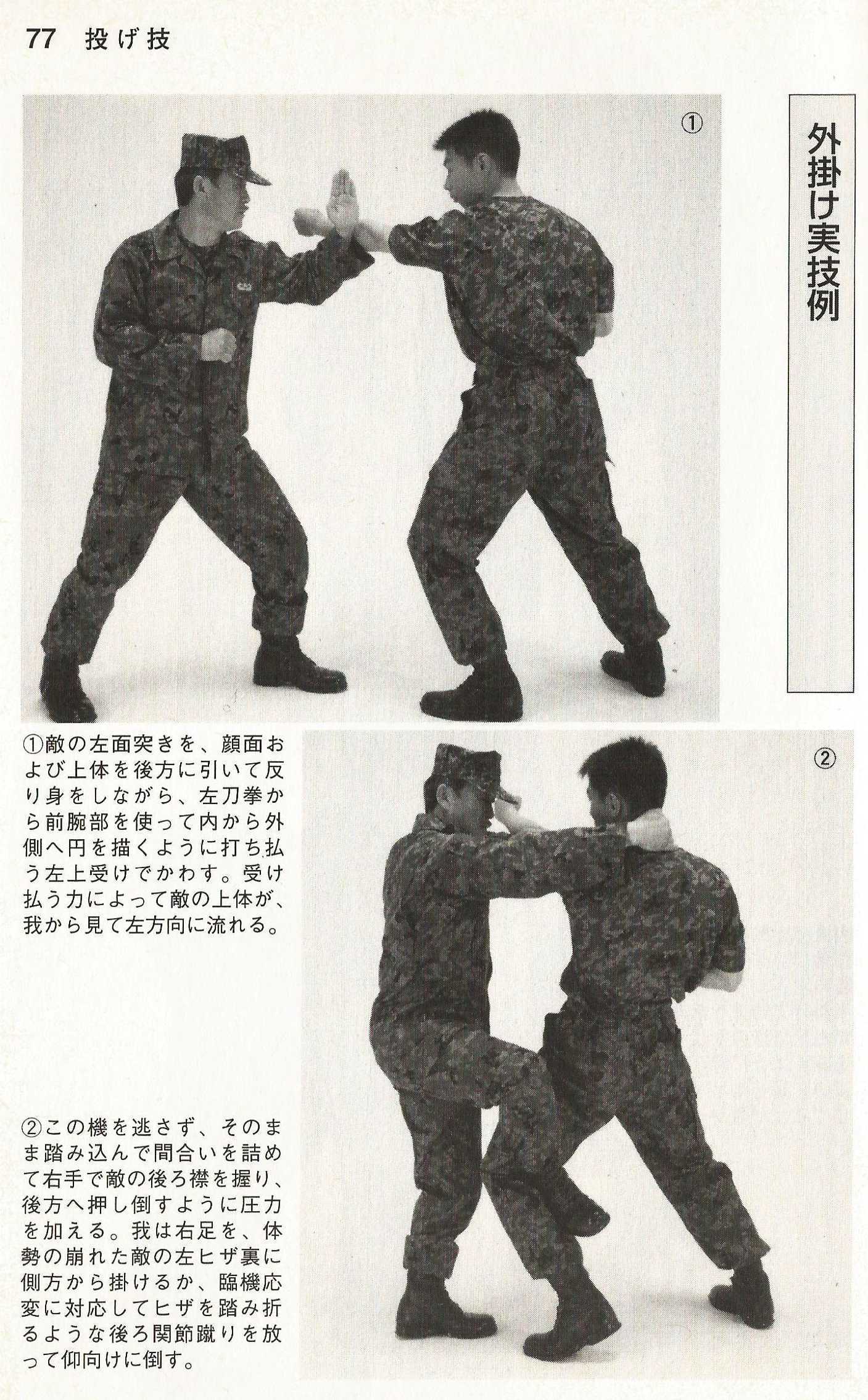
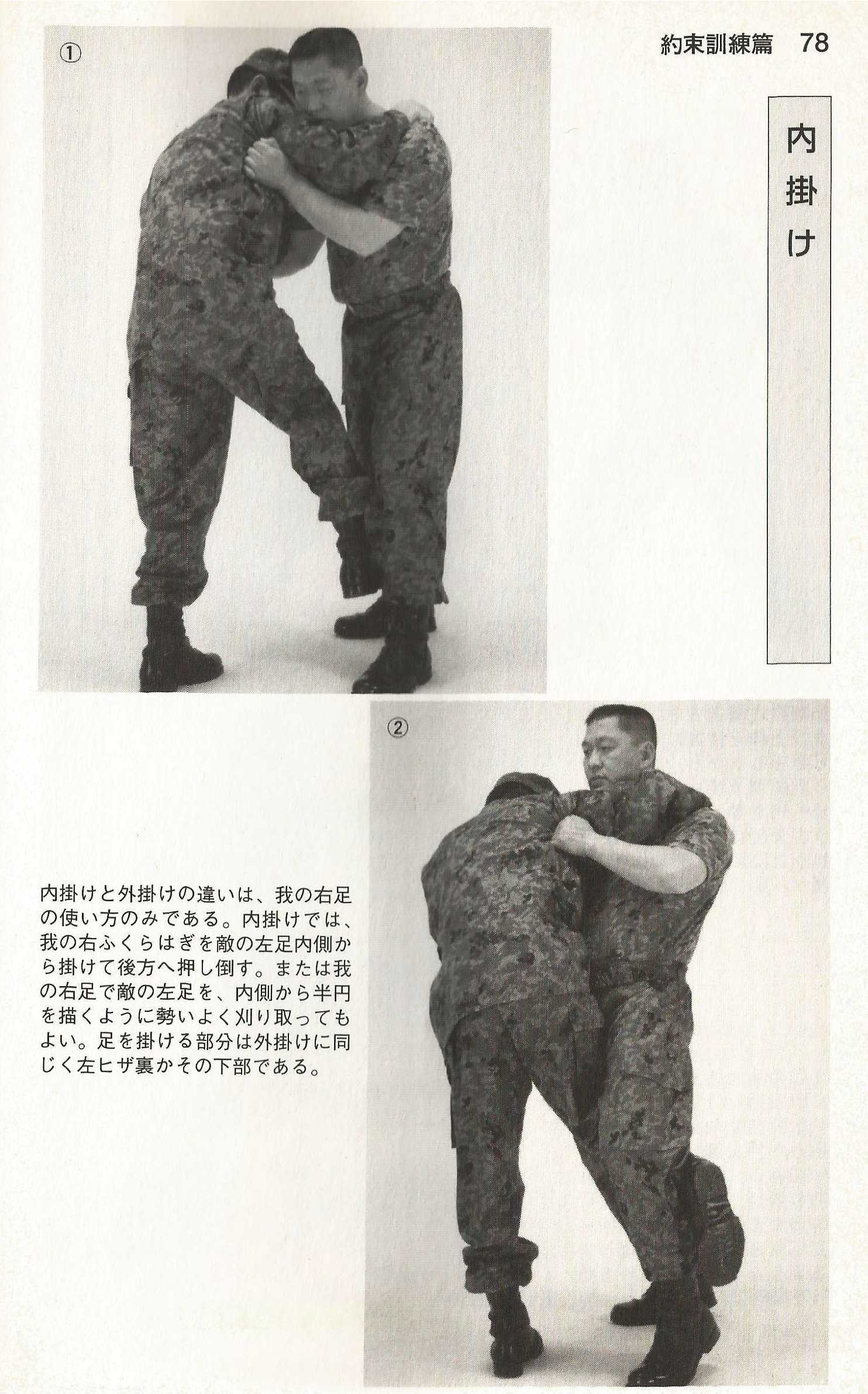
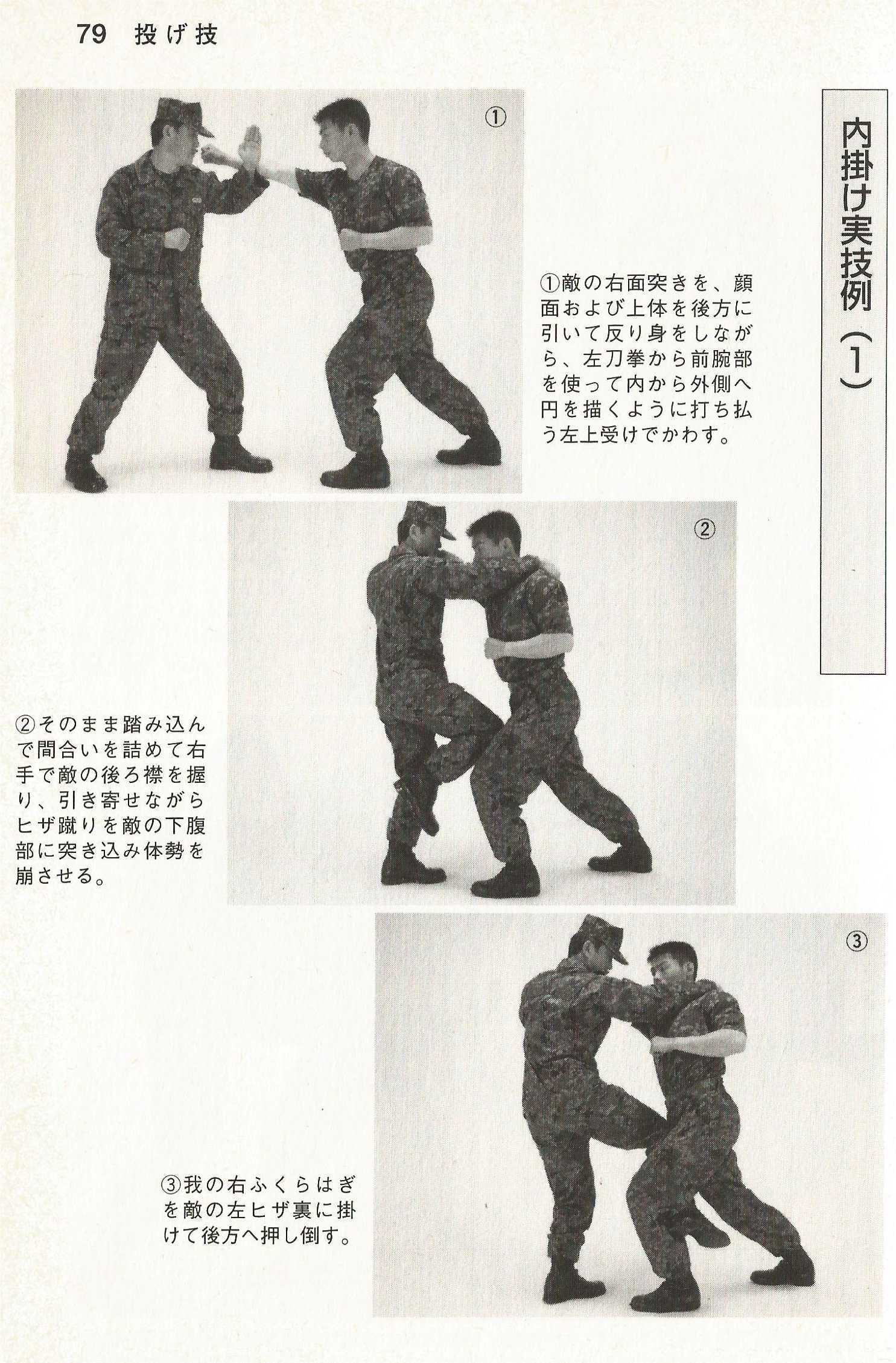
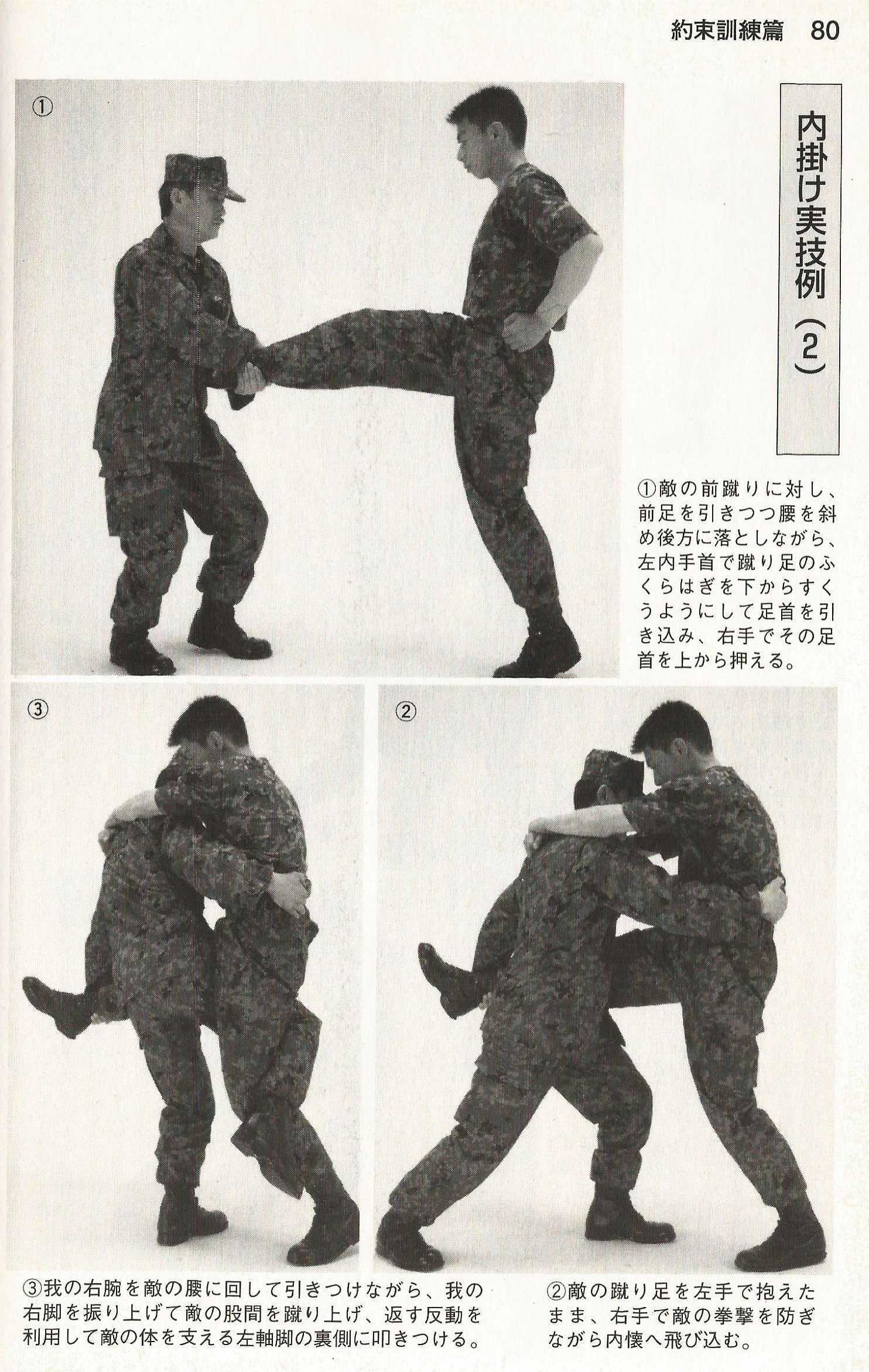
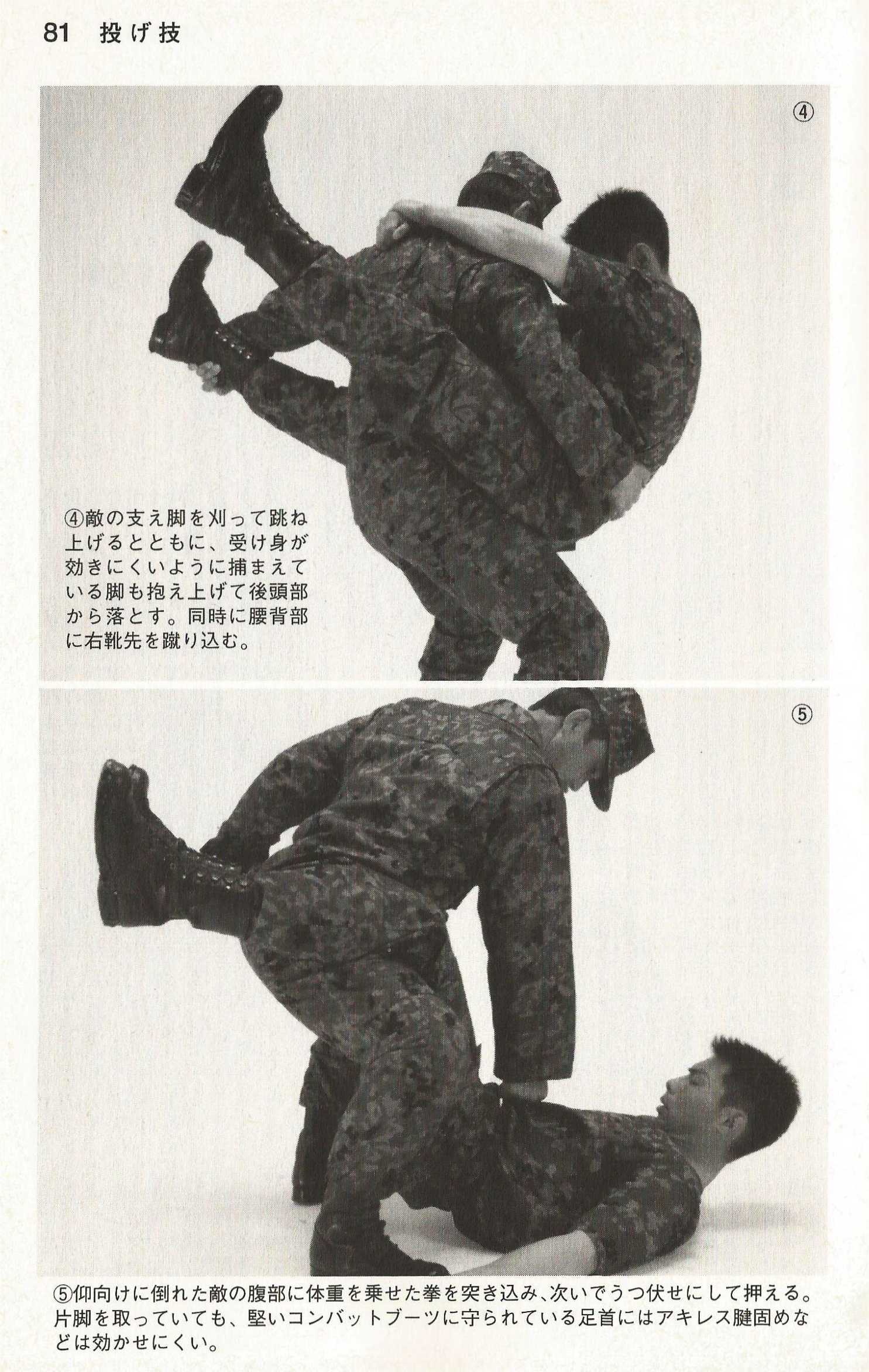
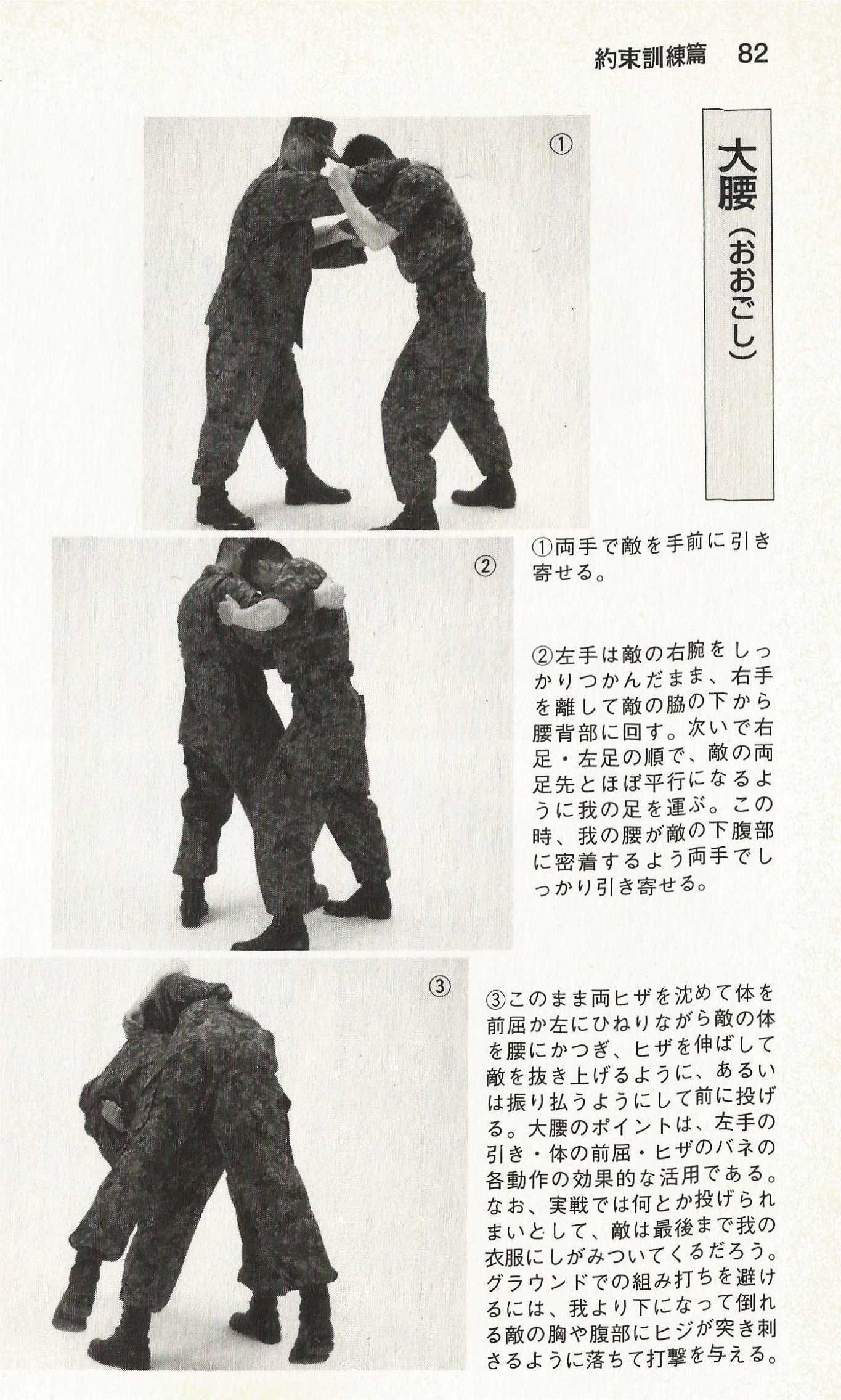
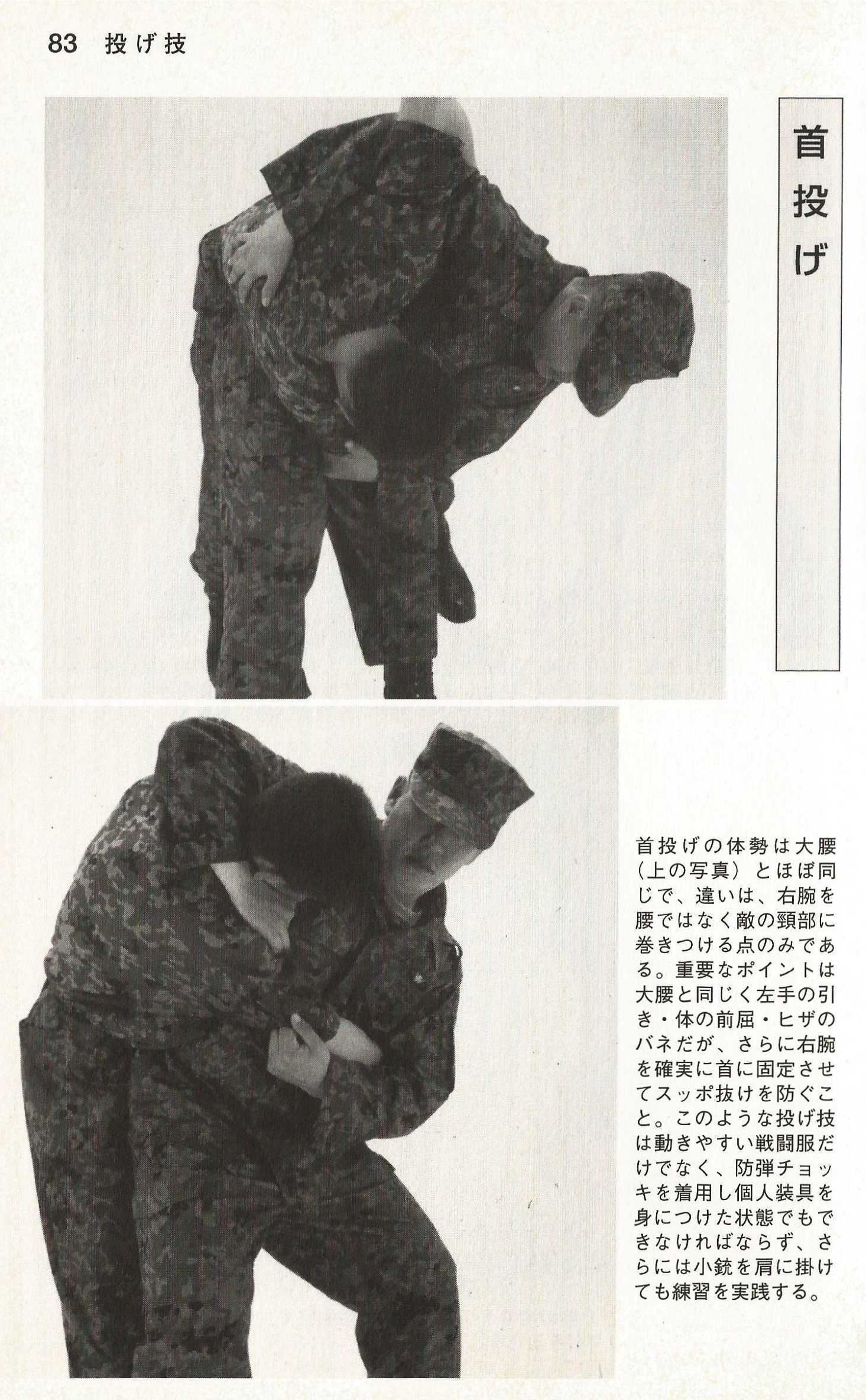
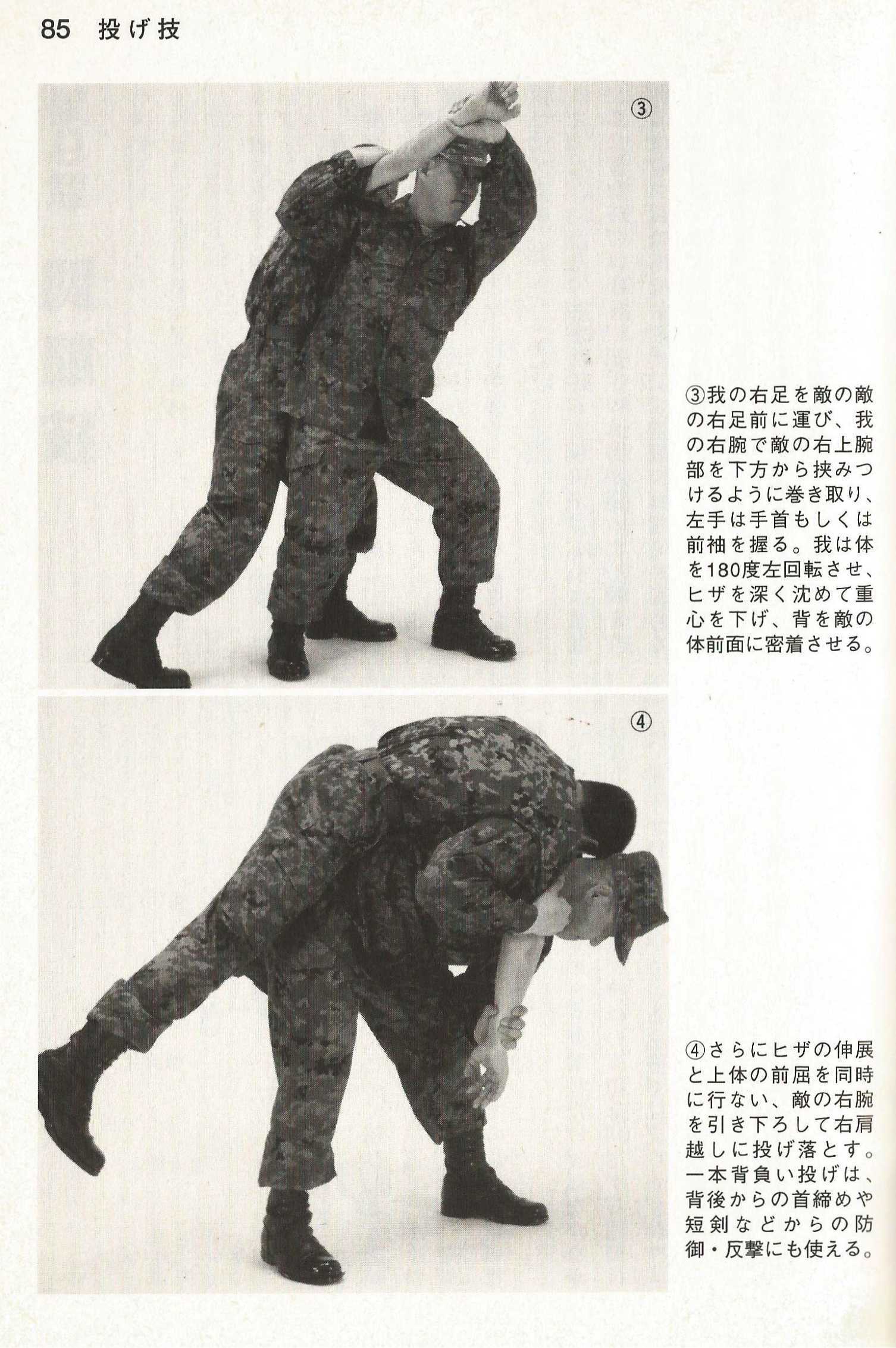
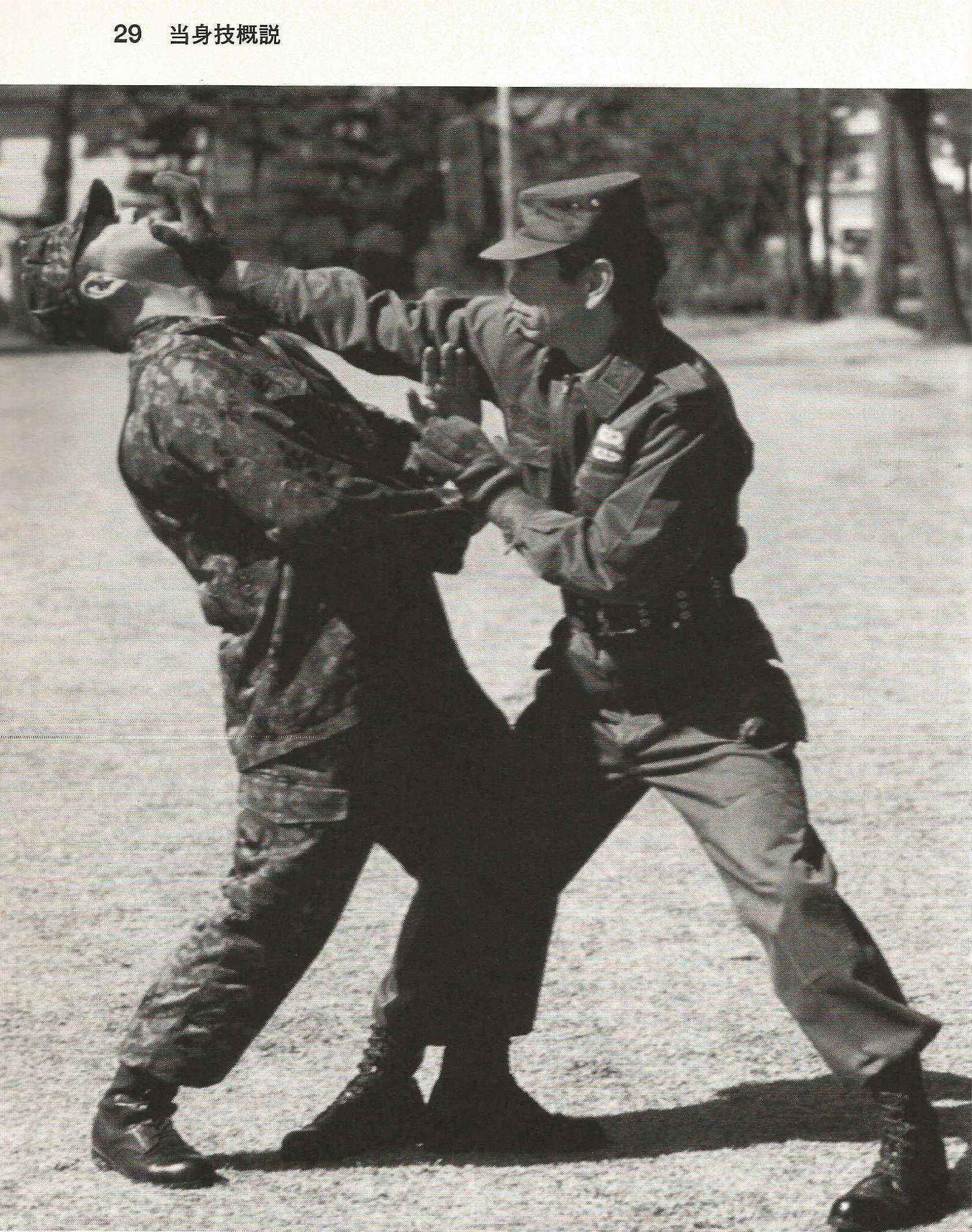
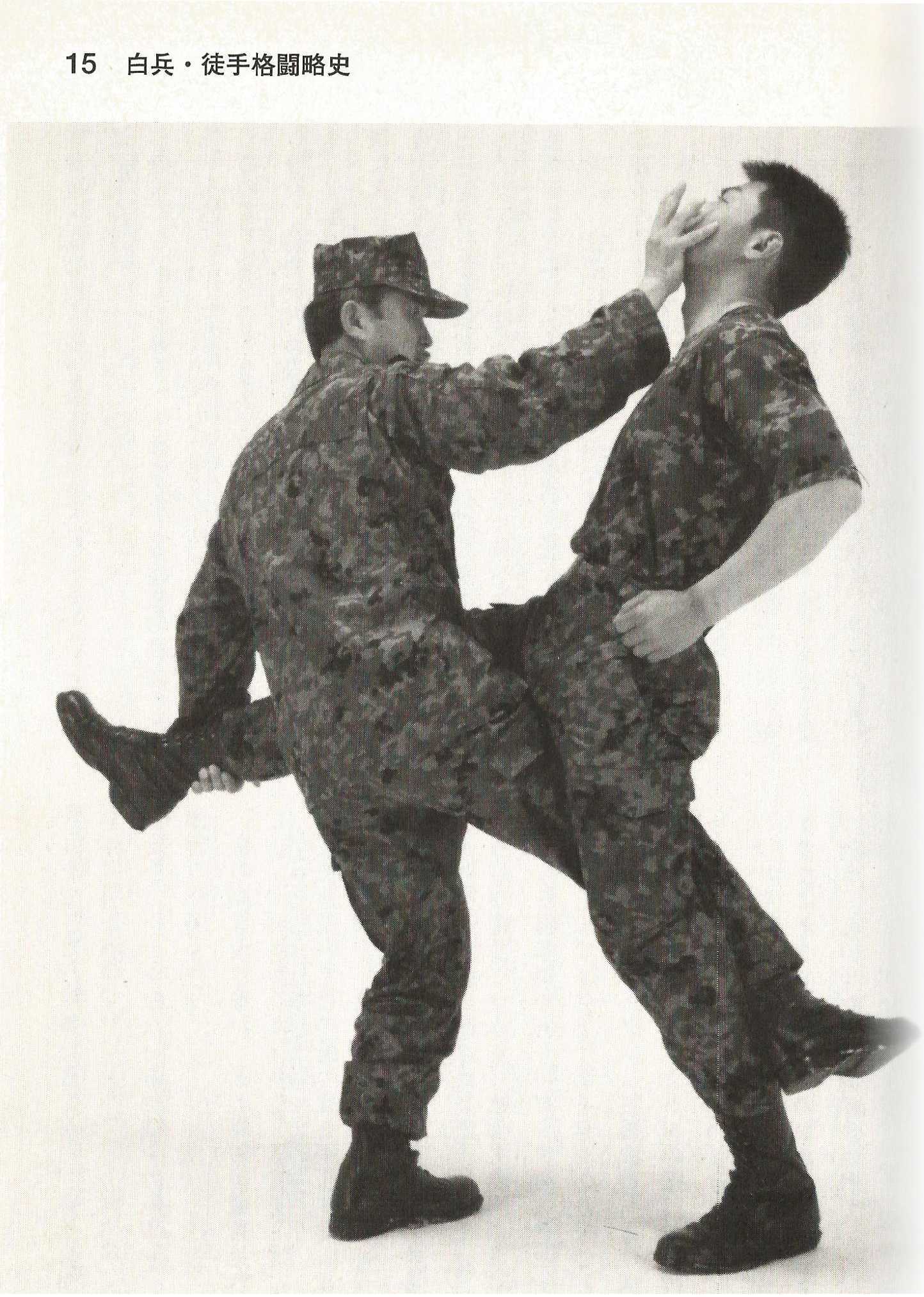
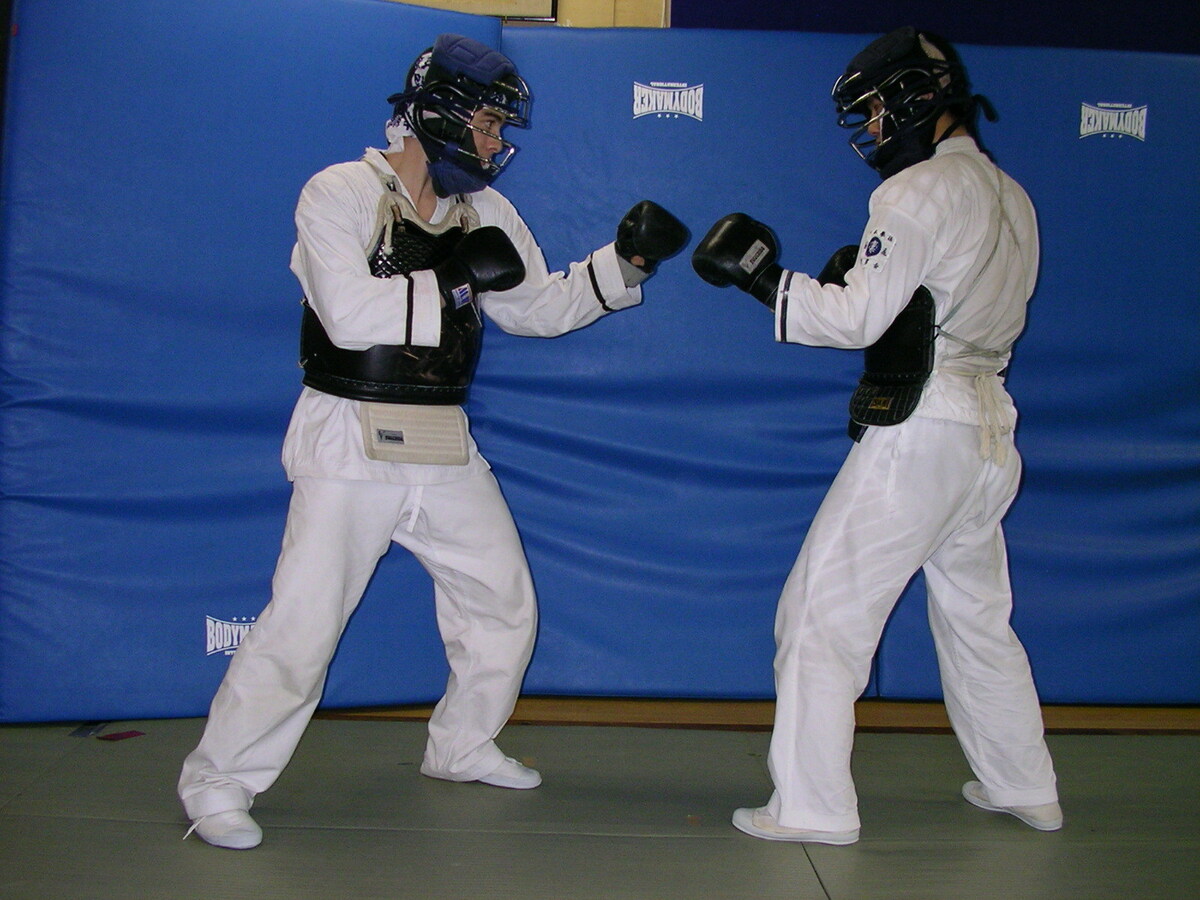
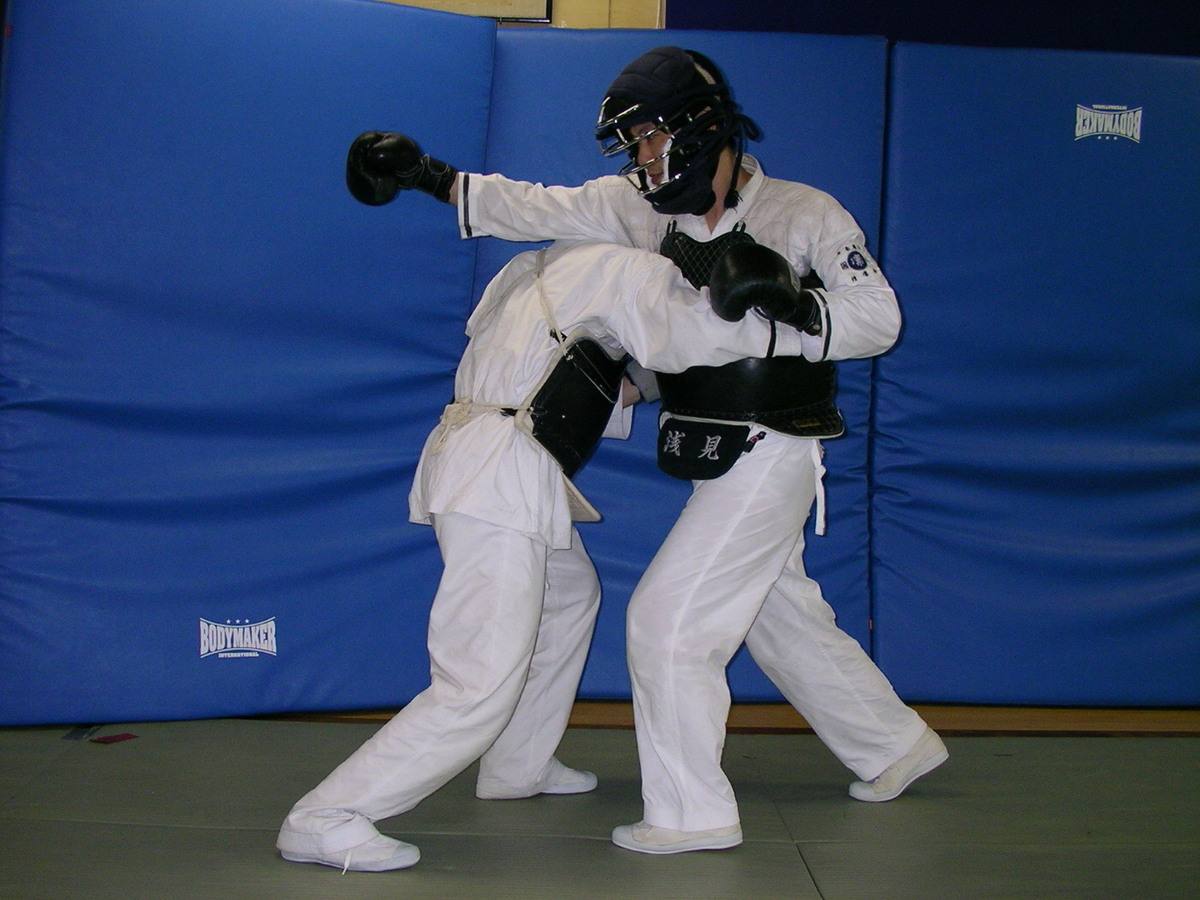
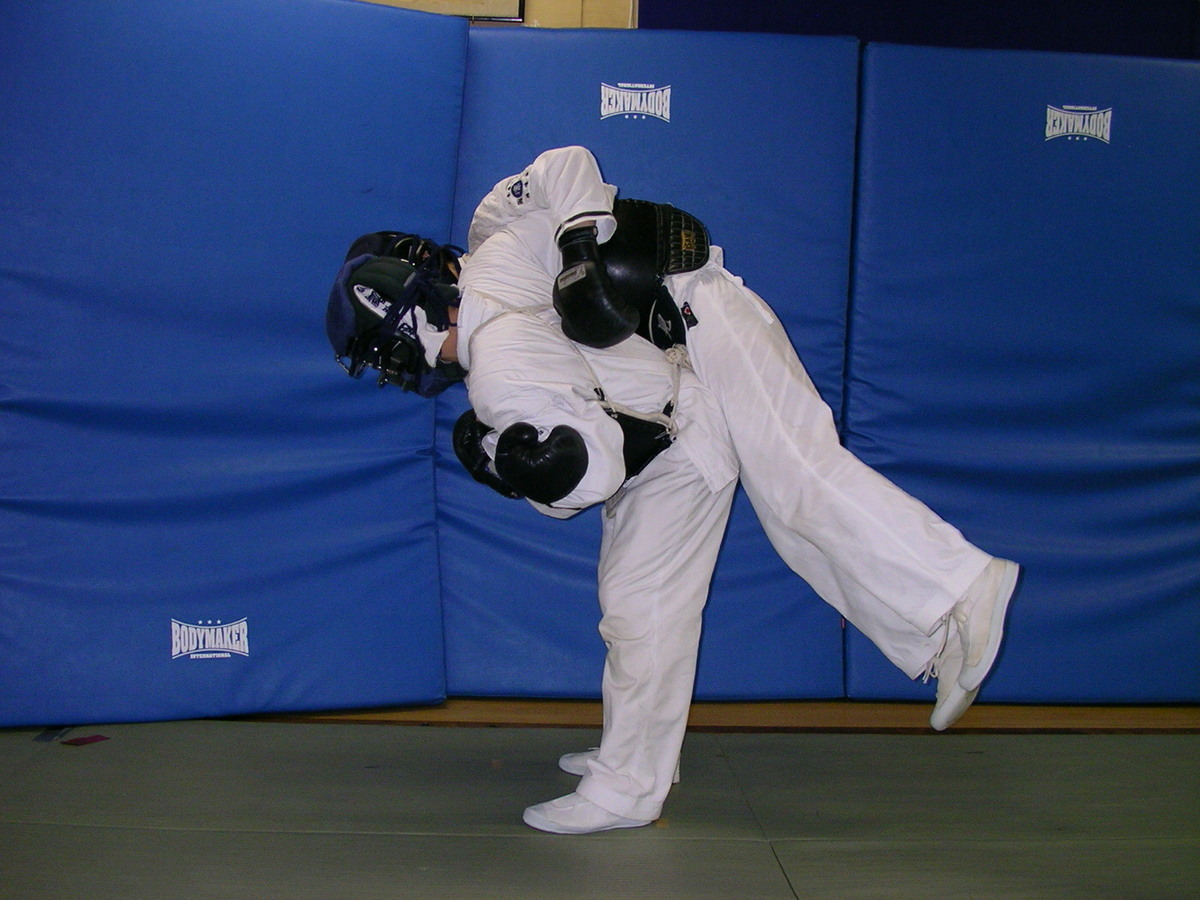
- NAGE WAZA YORI HIDARI MEN DZUKI - throw technique and subsequent finishing left arm blow on the helmet
- NAGE WAZA YORI MIGI MEN DZUKI - throw technique and subsequent finishing right arm blow on the helmet
- NAGE WAZA YORI HIDARI DOU DZUKI - throw technique and subsequent finishing left arm blow on the waistcoat
- NAGE WAZA YORI MIGI DOU DZUKI - throw technique and subsequent finishing right arm blow on the waistcoat
- NAGE WAZA YORI HIDARI MEN HIZA GERI - throw technique and finishing left knee blow on the helmet
- NAGE WAZA YORI MIGI MEN HIZA GERI - throw technique and finishing right knee blow on the helmet
- NAGE WAZA YORI HIDARI DOU HIZA GERI - throw technique and finishing left knee blow on the waistcoat
- NAGE WAZA YORI MIGI DOU HIZA GERI - throw technique and finishing right knee blow on the waistcoat
- NAGE WAZA YORI HIDARI MEN FUMI GERI - throw technique and finishing left leg blow on the helmet
- NAGE WAZA YORI MIGI MEN FUMI GERI - throw technique and finishing right leg blow on the helmet
- NAGE WAZA YORI HIDARI DOU FUMI GERI - throw technique and finishing left leg blow on the waistcoat
- NAGE WAZA YORI MIGI DOU FUMI GERI - throw technique and finishing right leg blow on the waistcoat
UKE - protective blocks
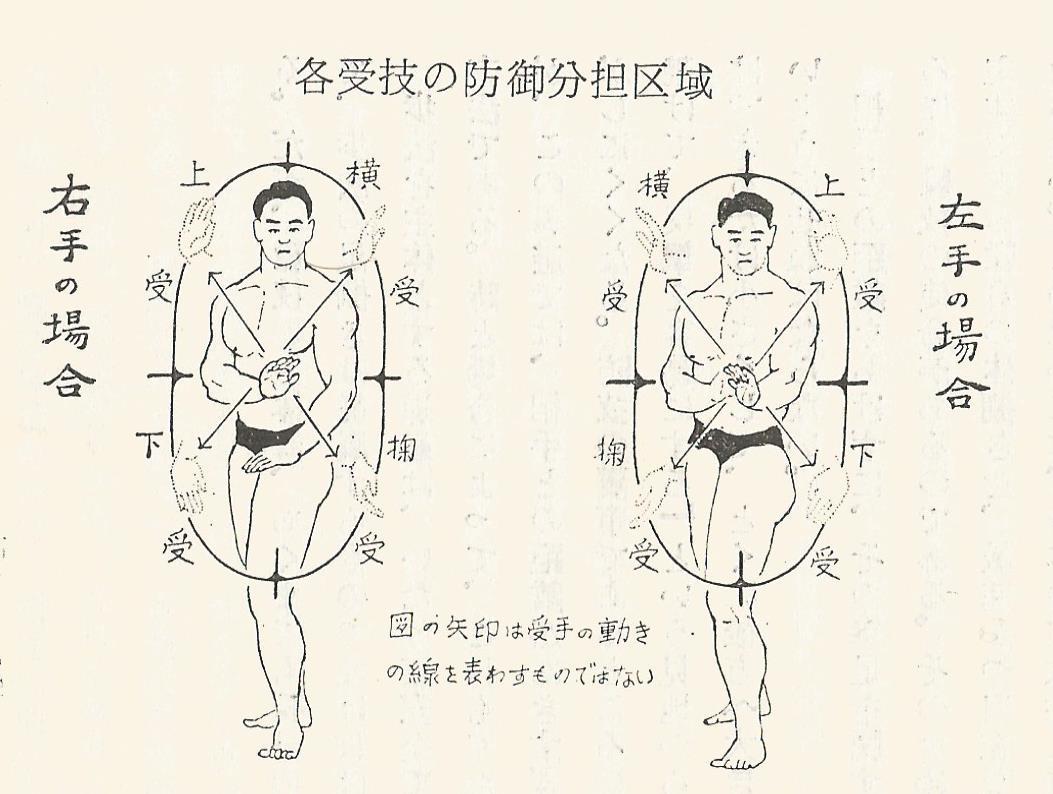
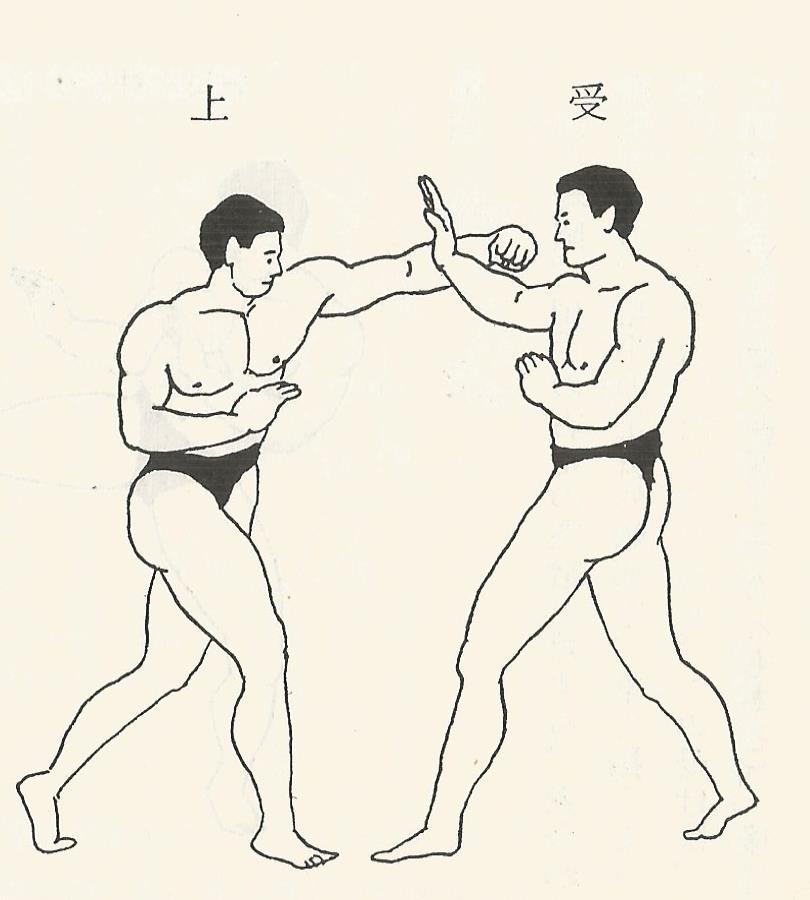
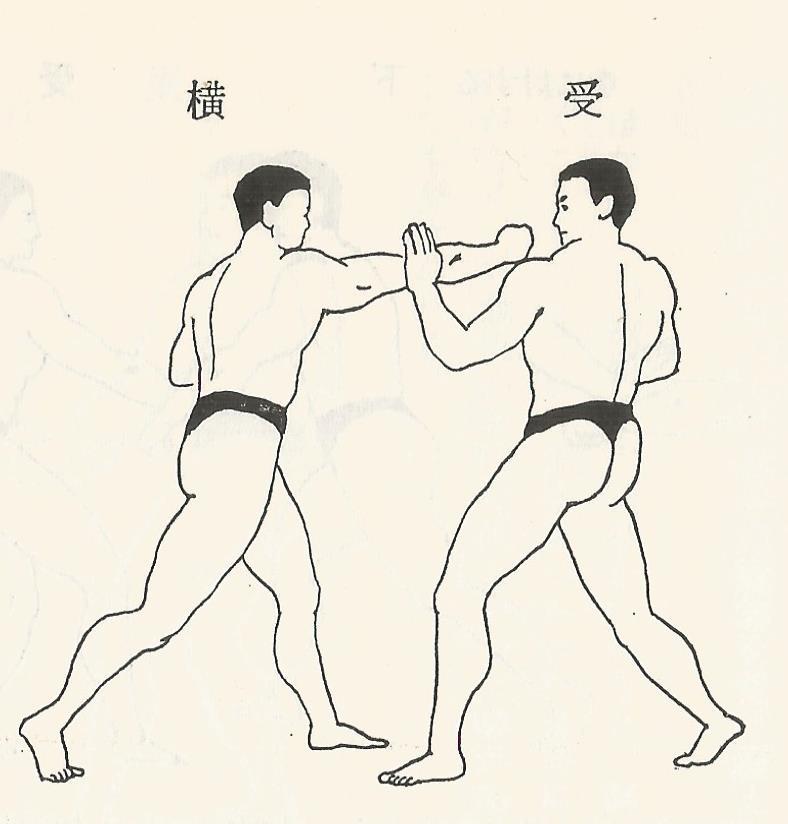
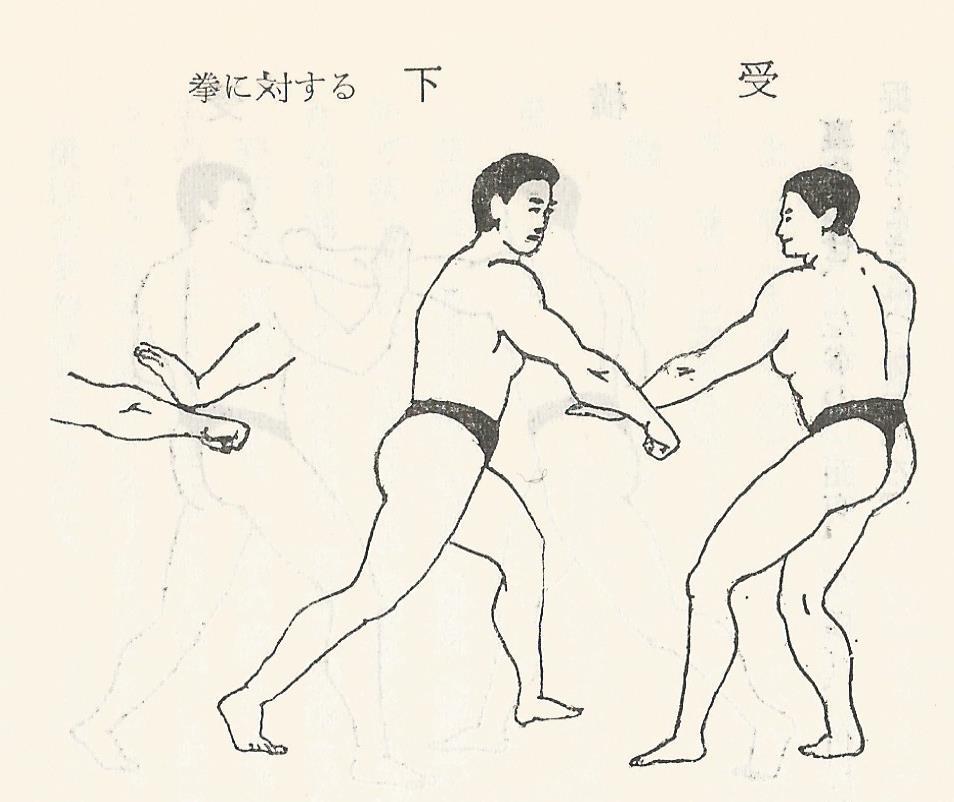
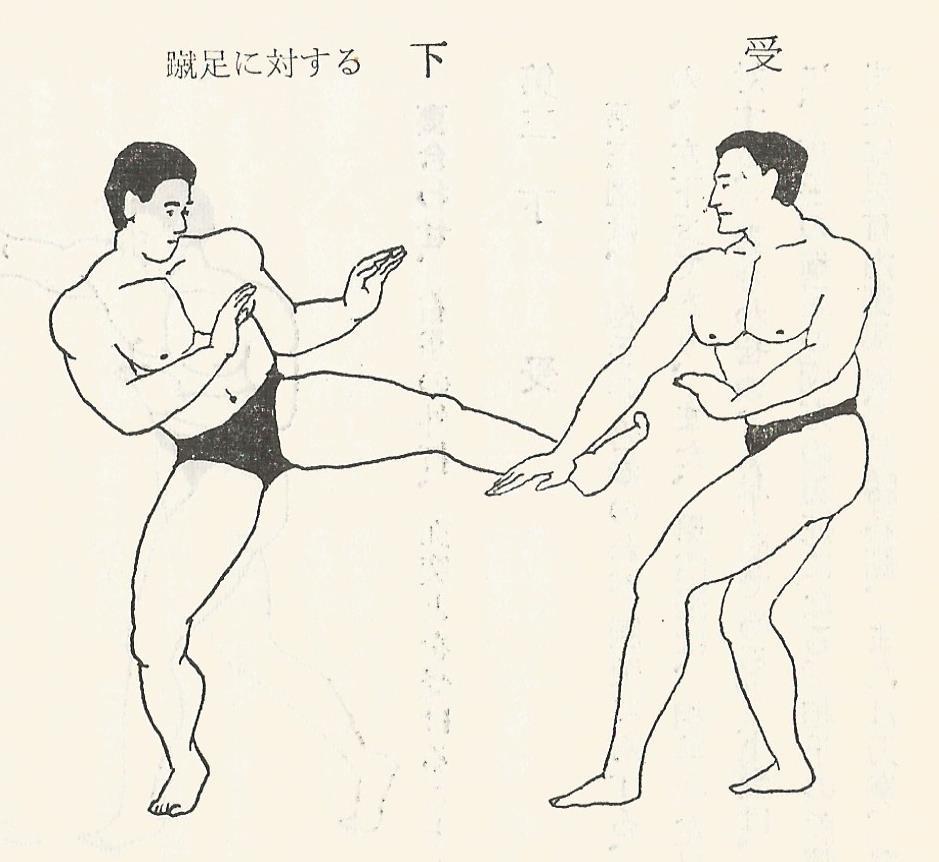
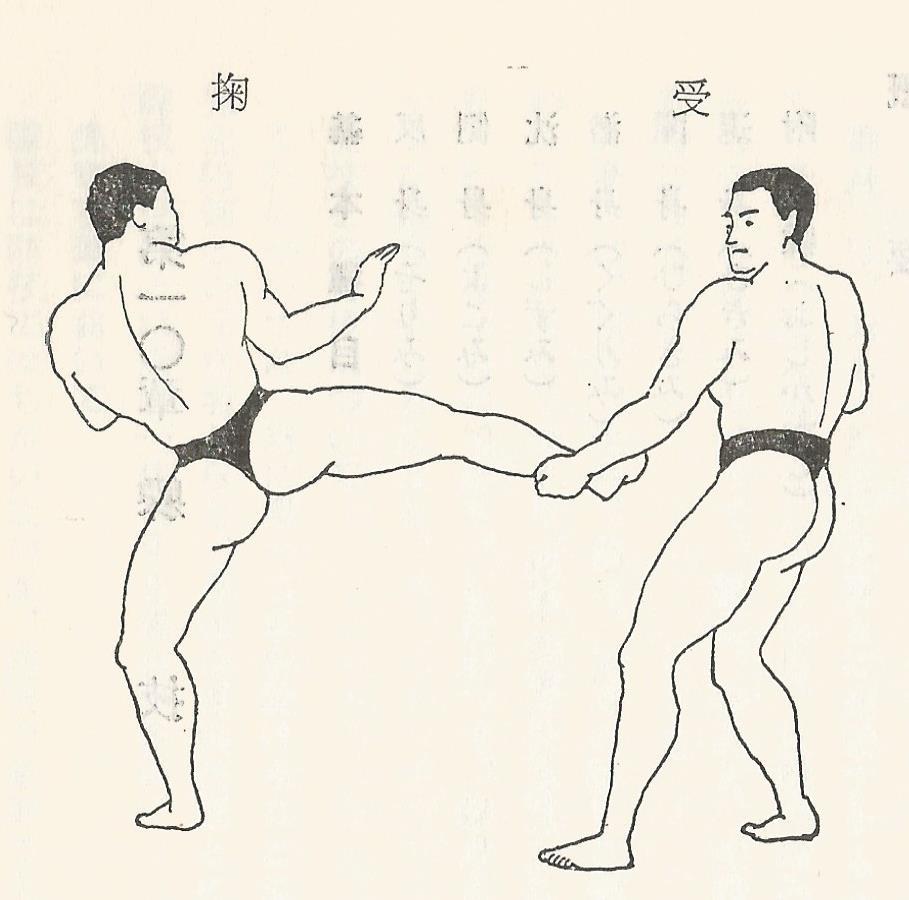
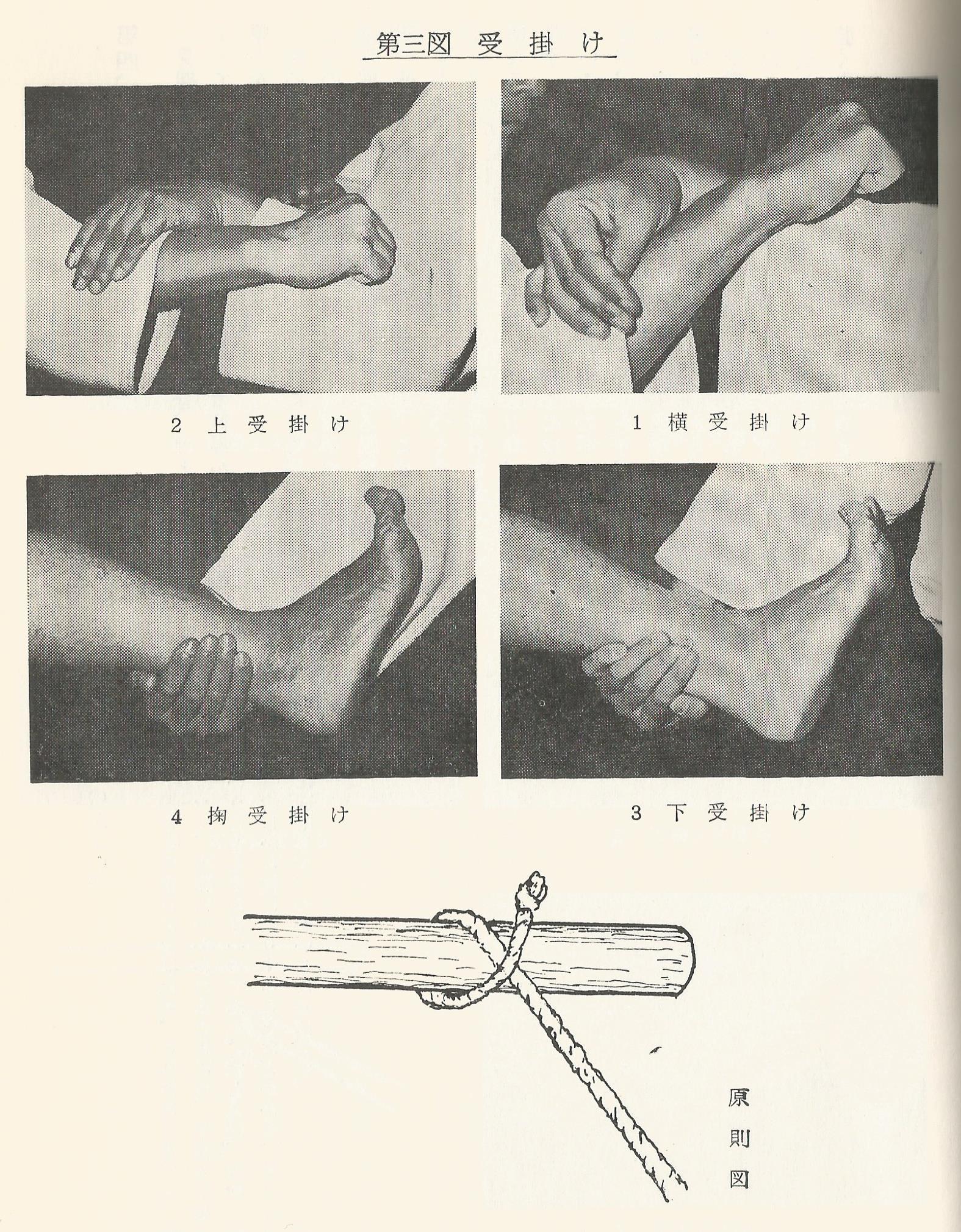
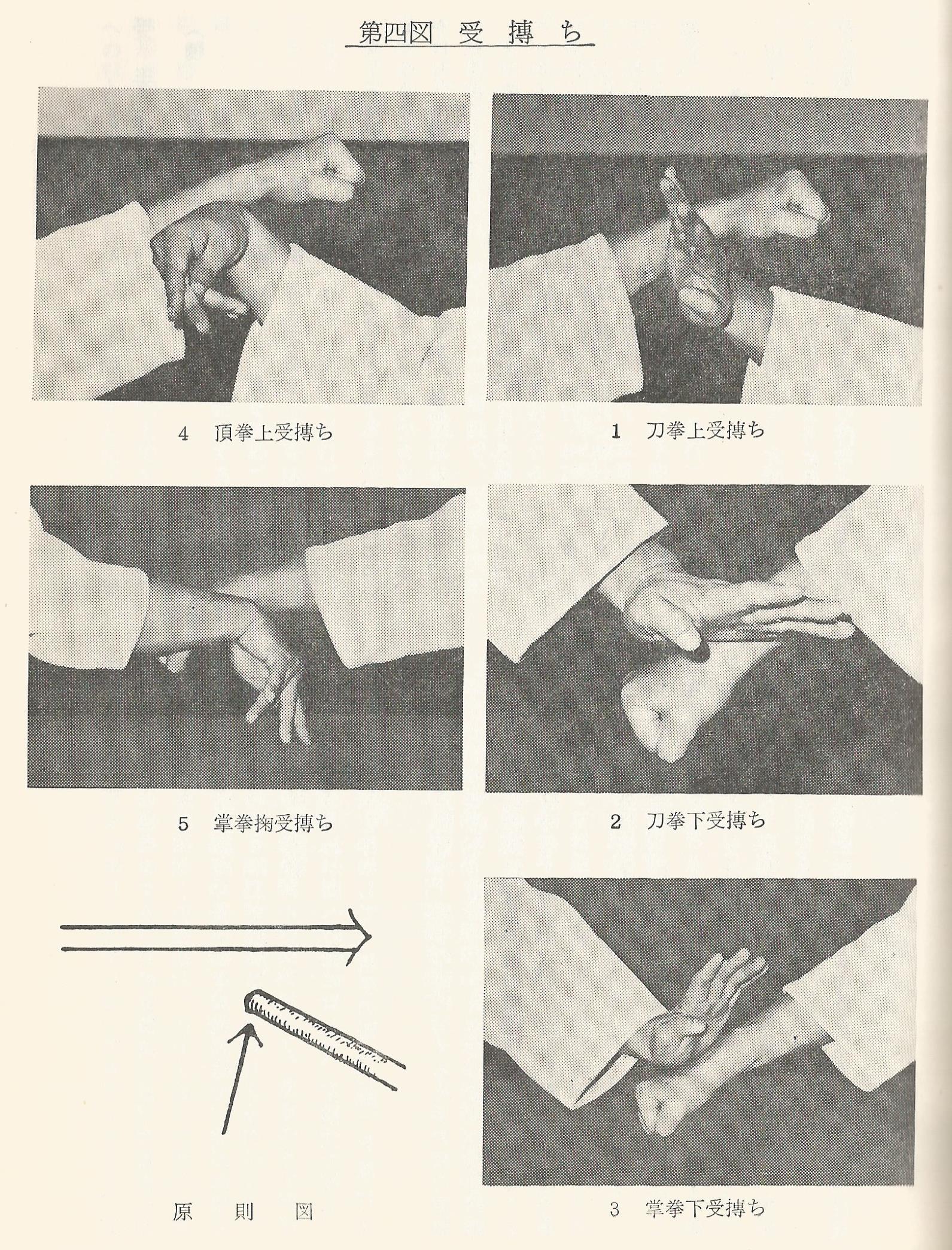
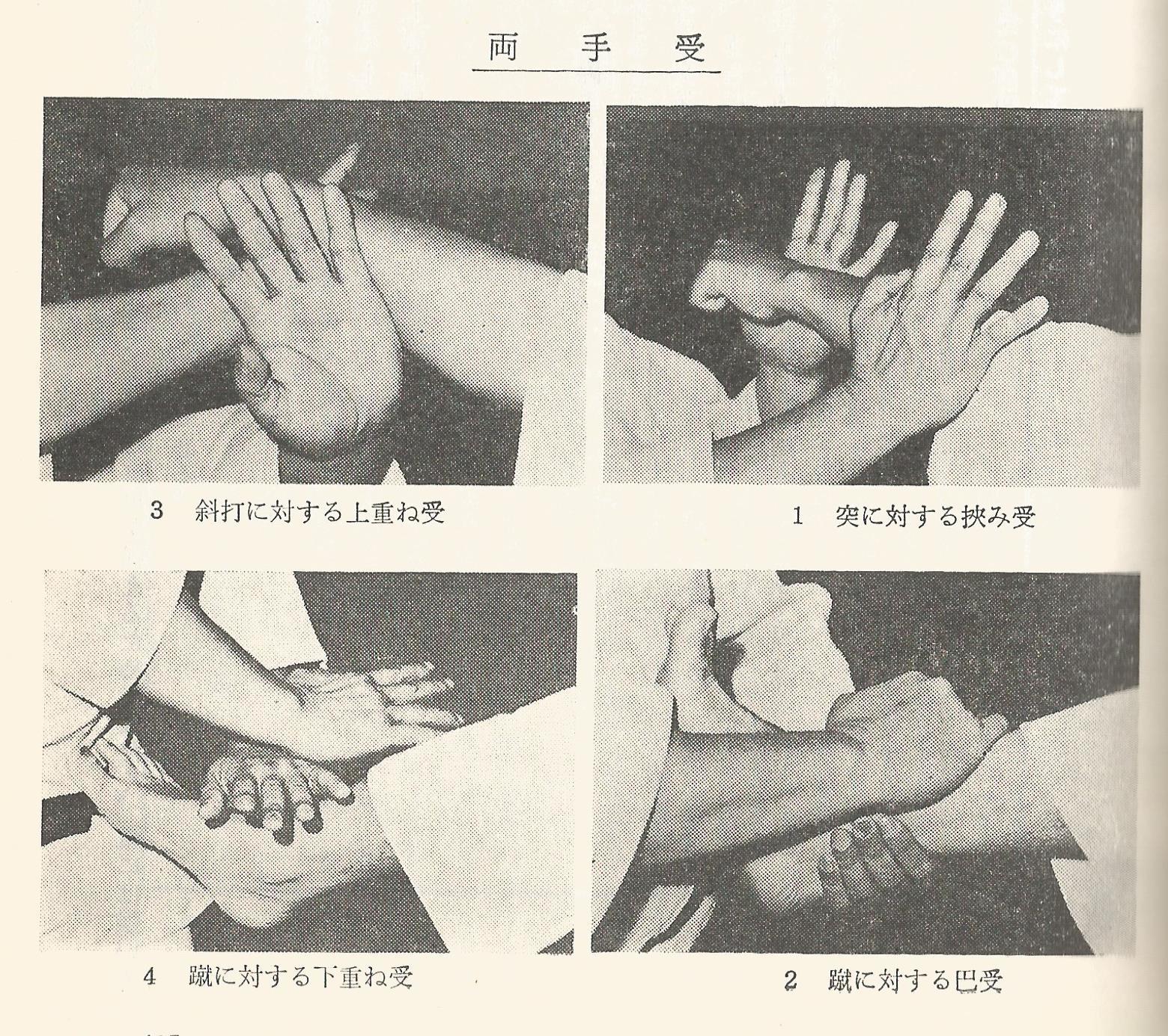
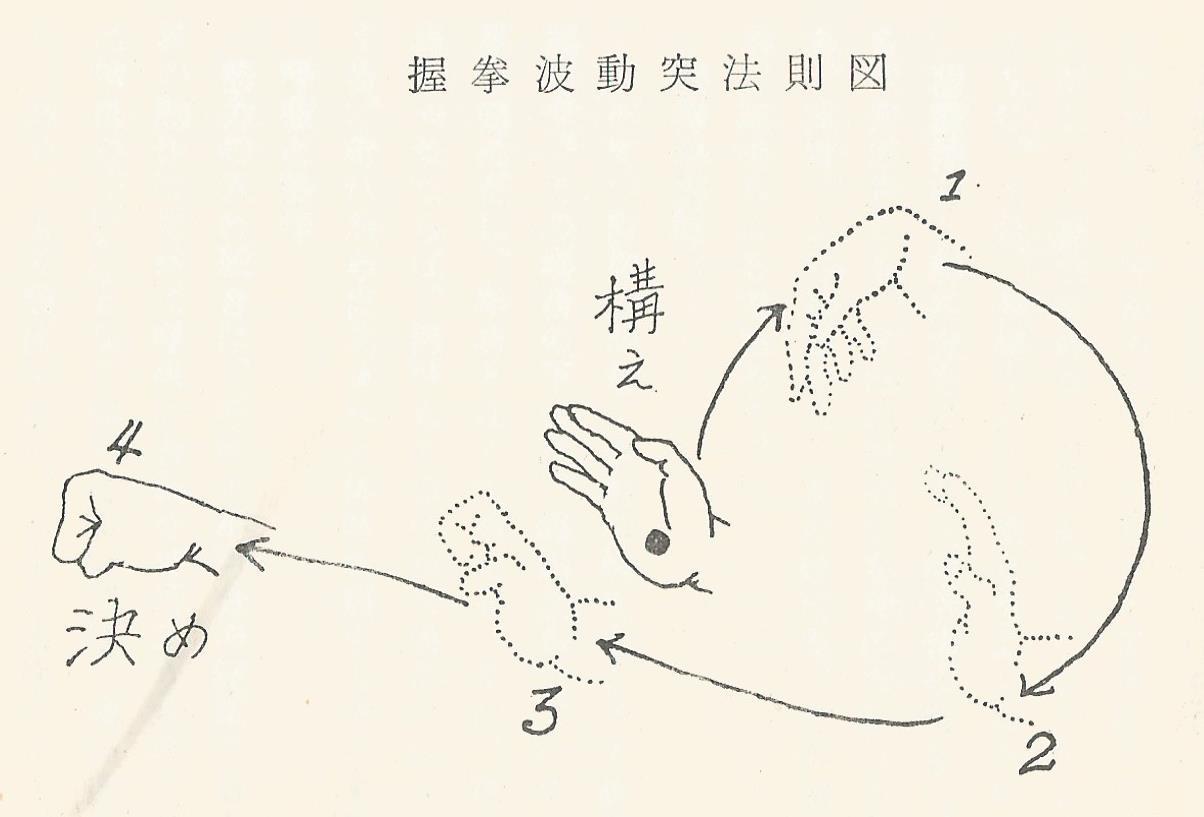
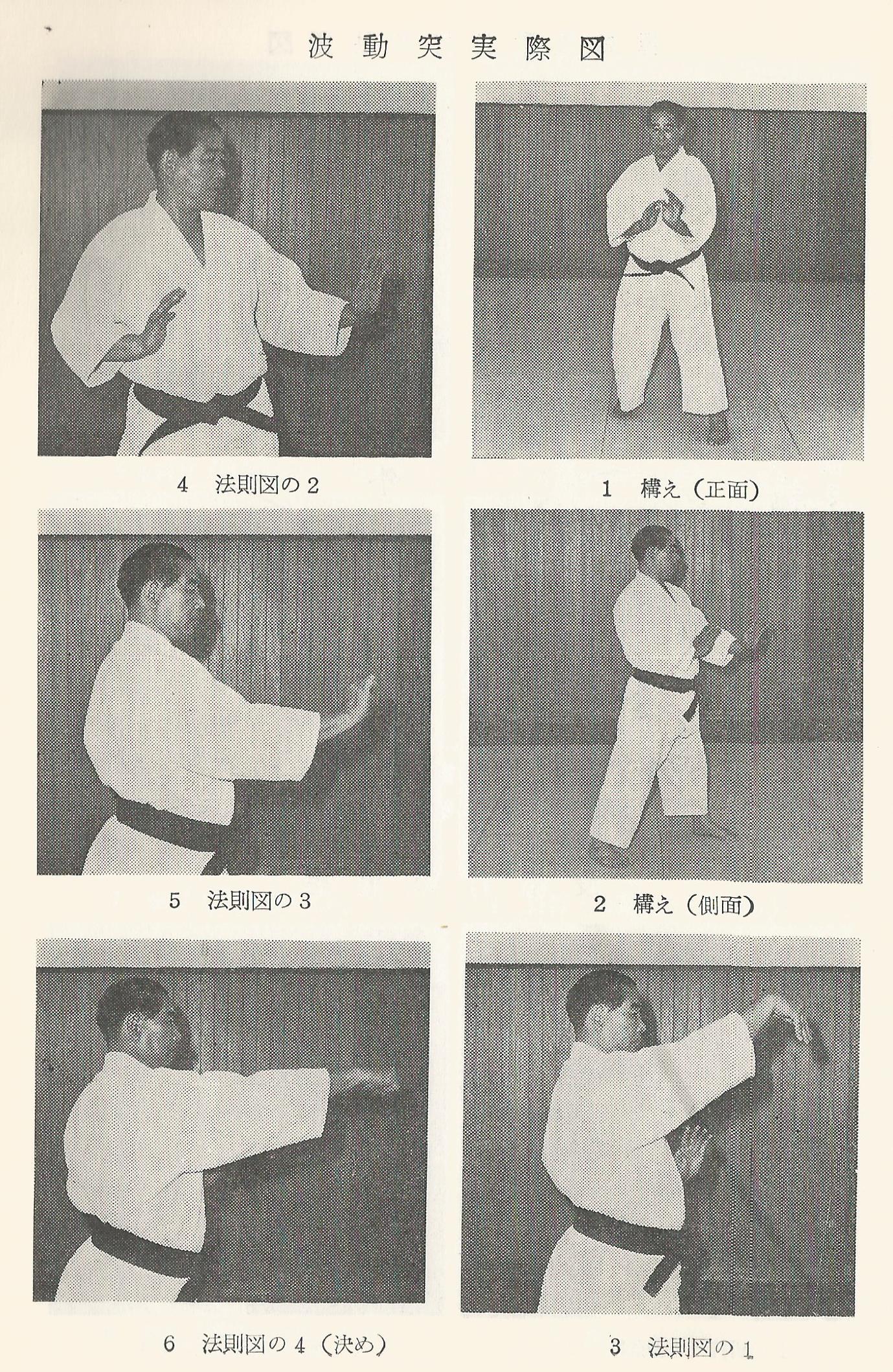
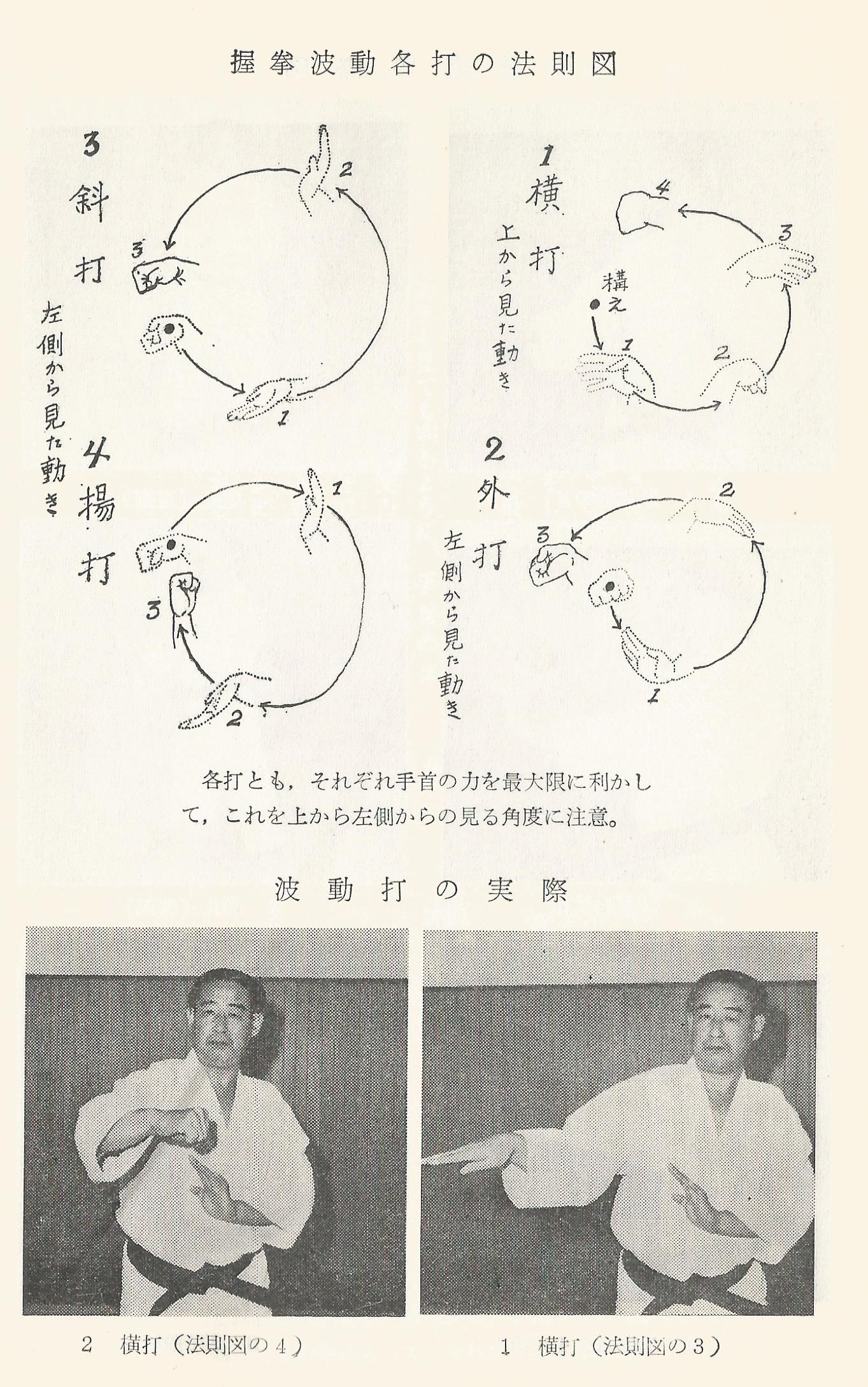
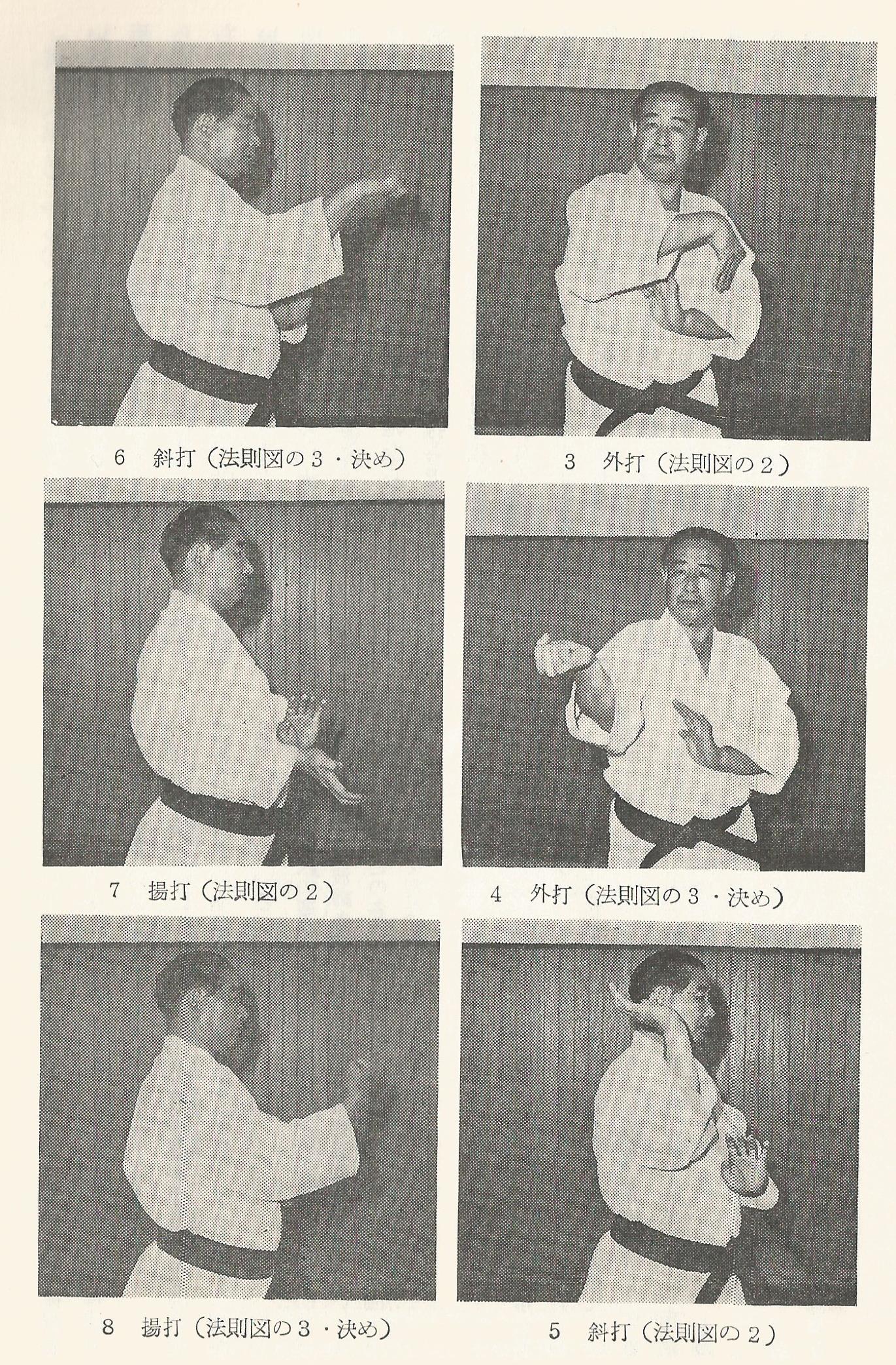
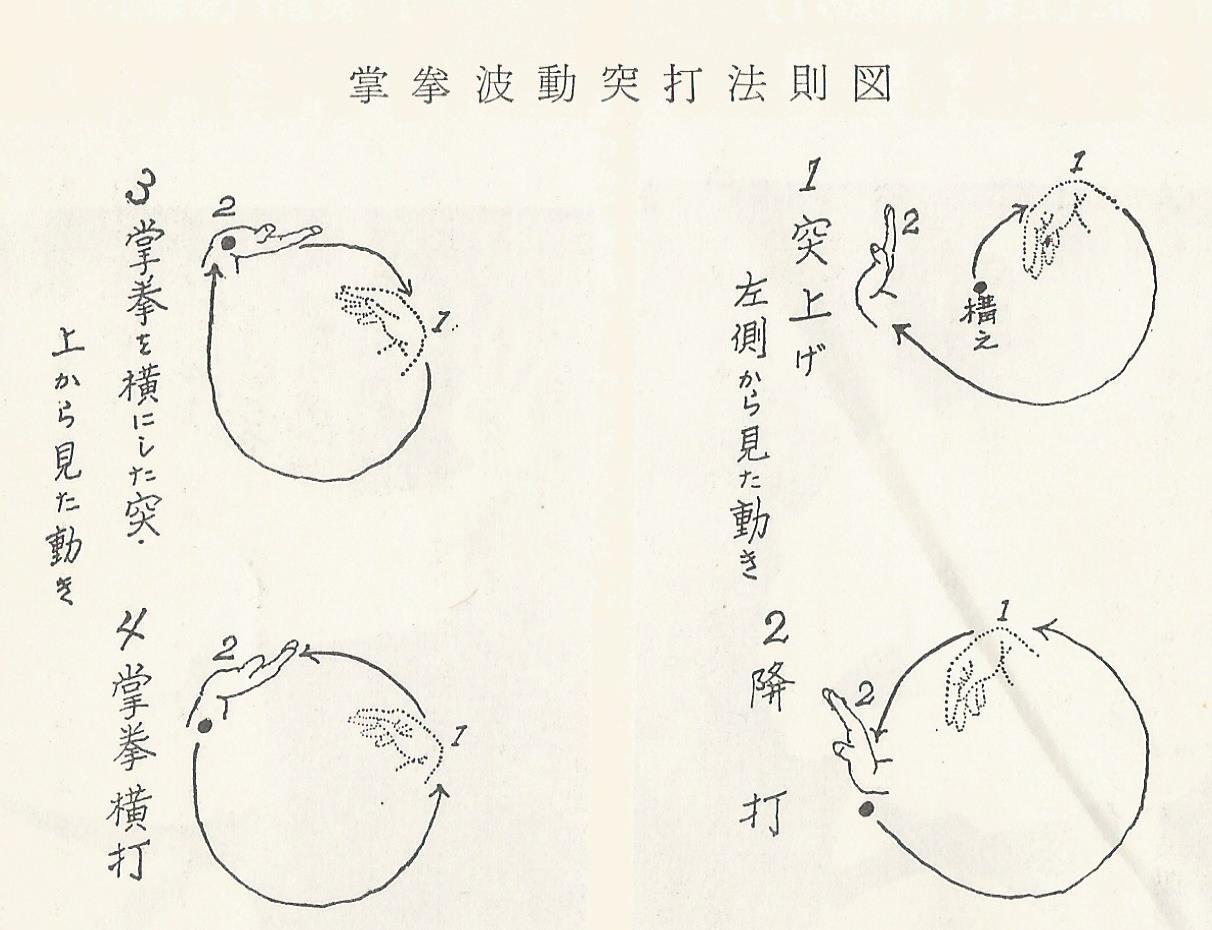
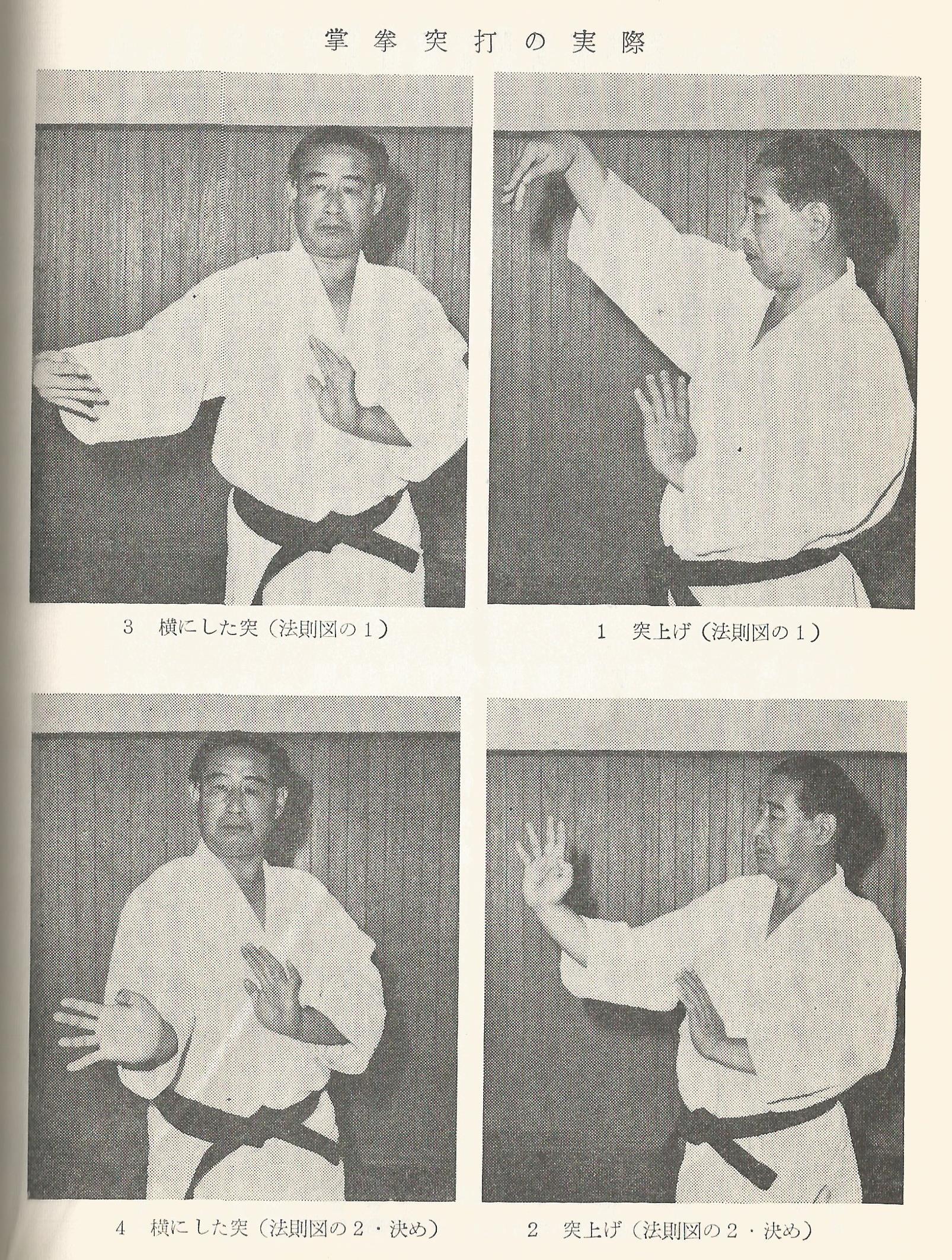
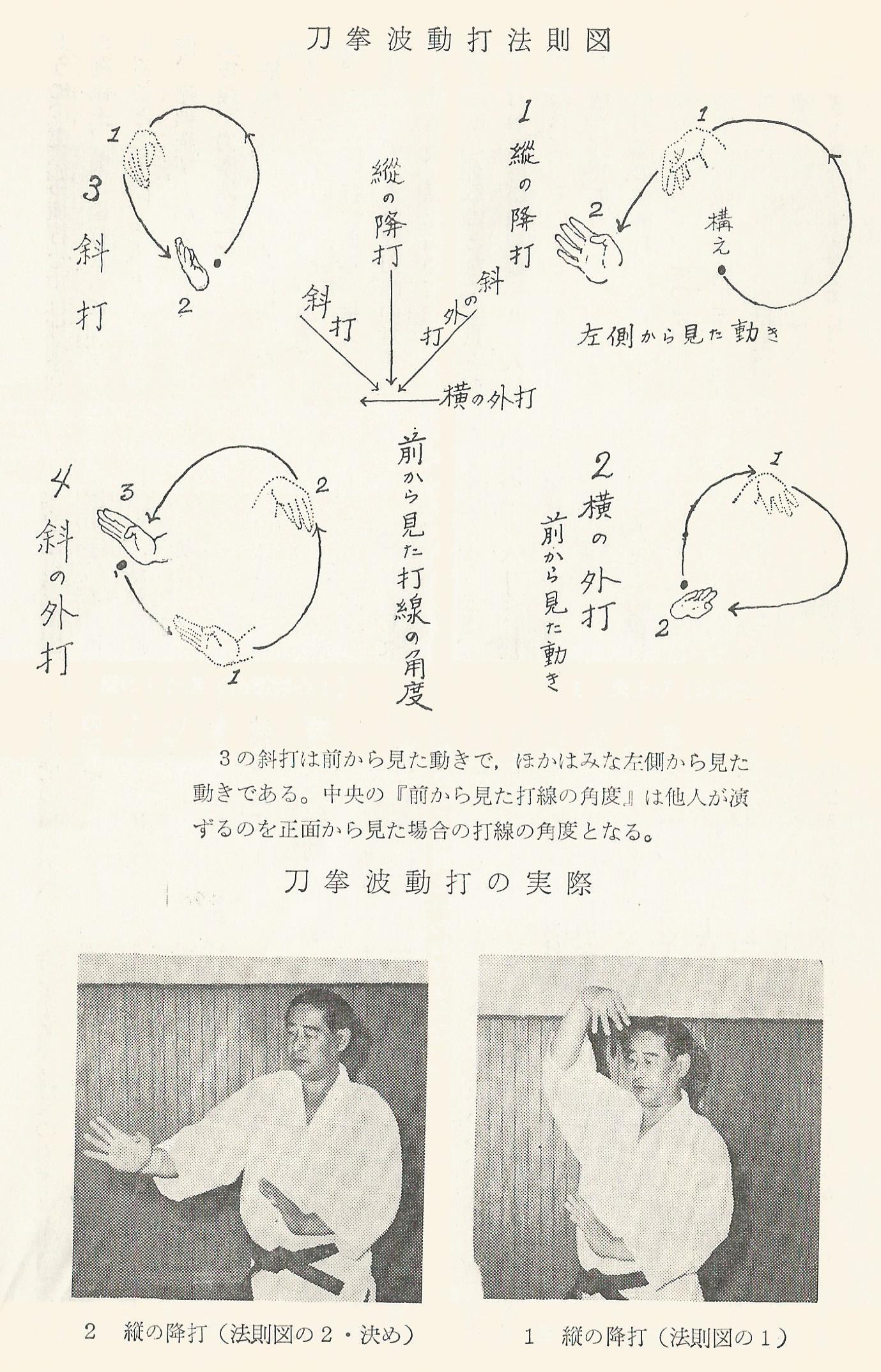
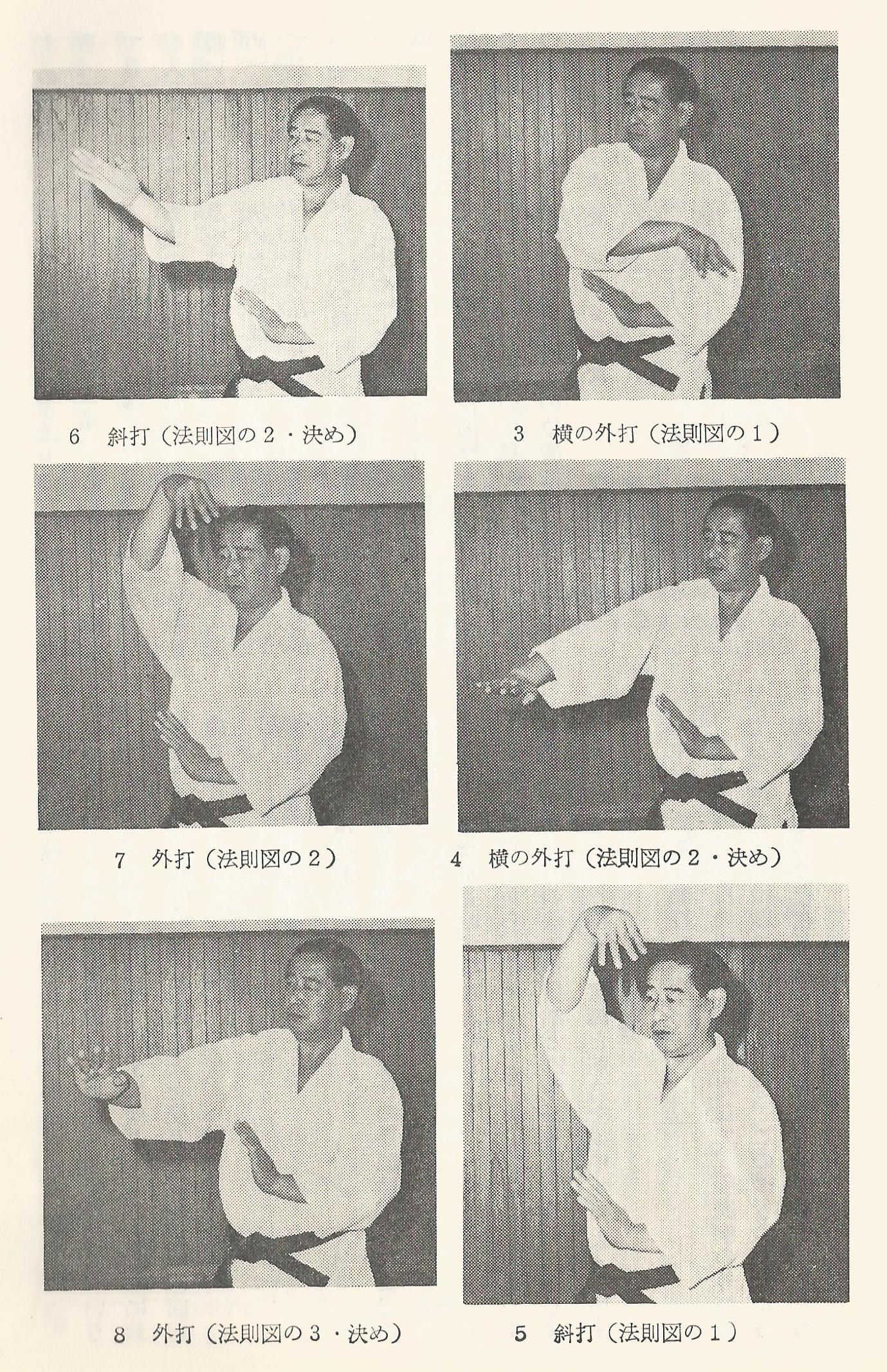
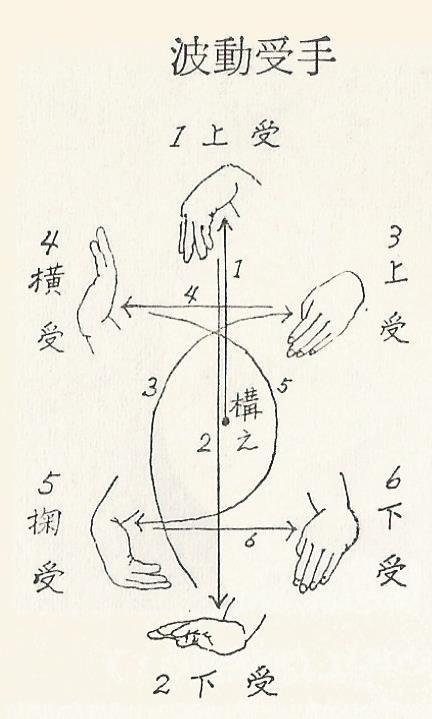
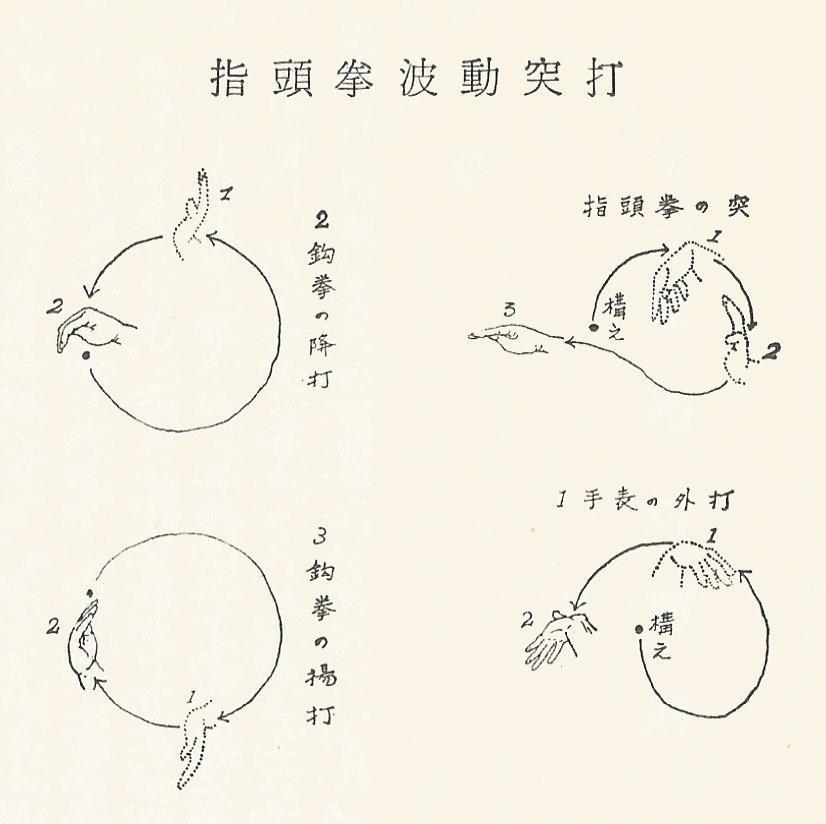
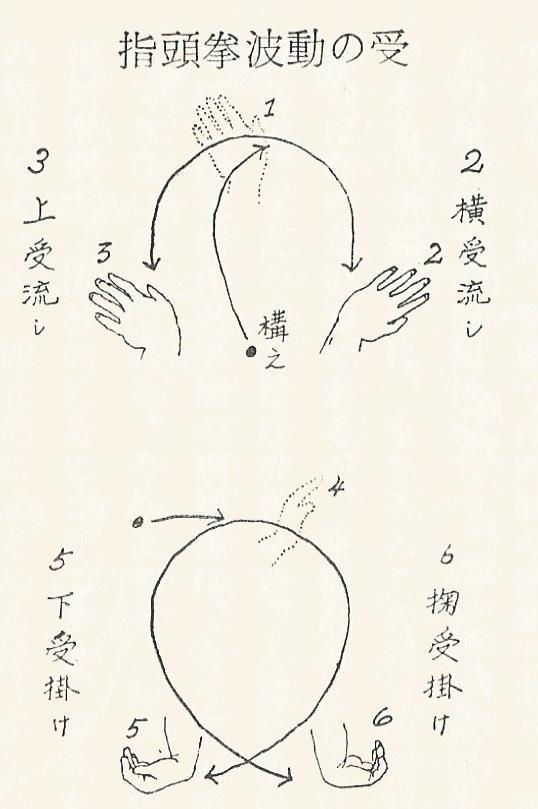

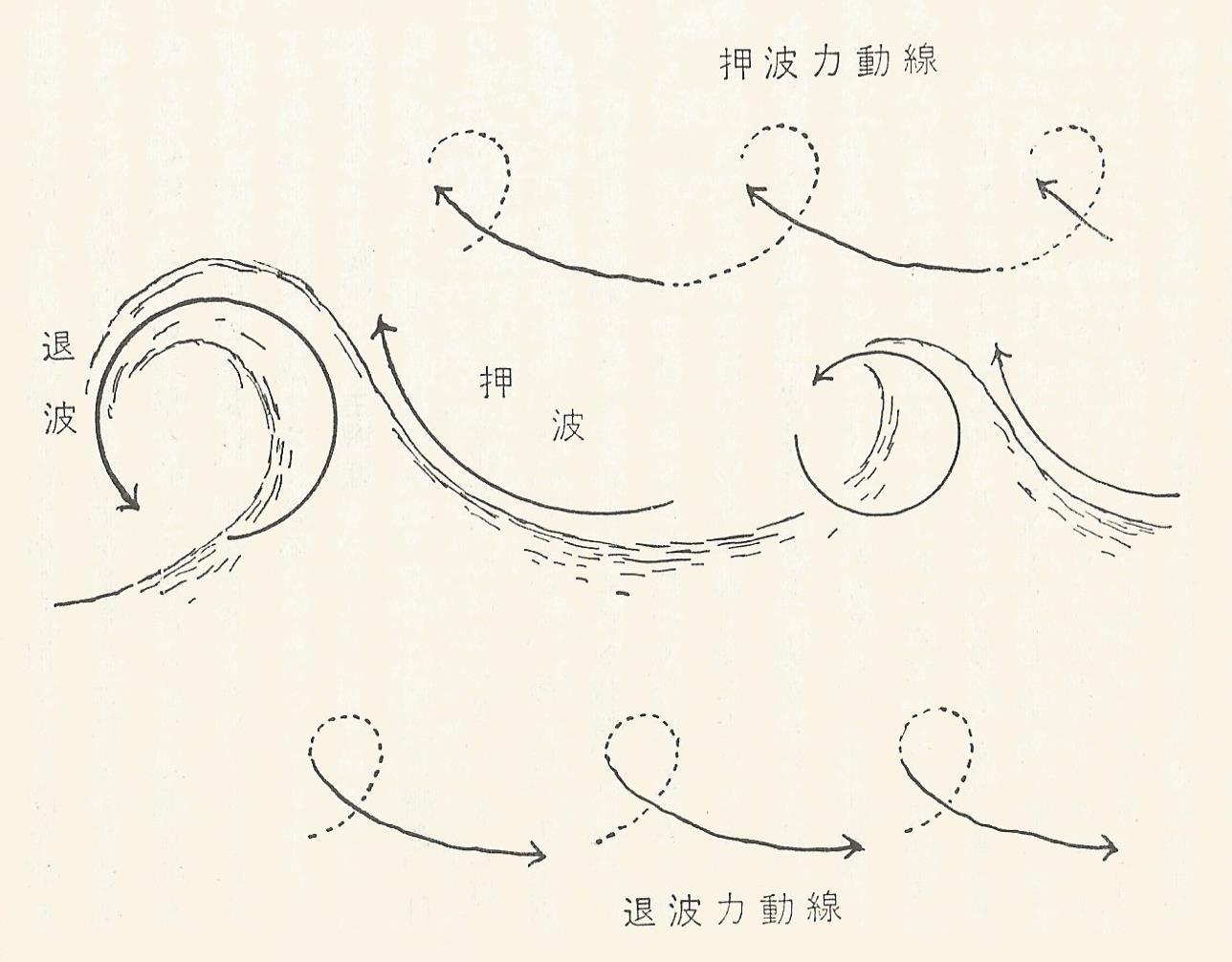
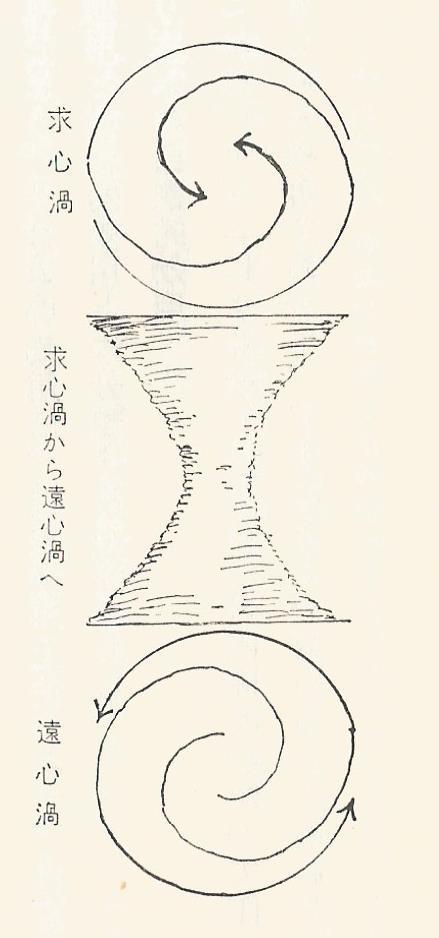
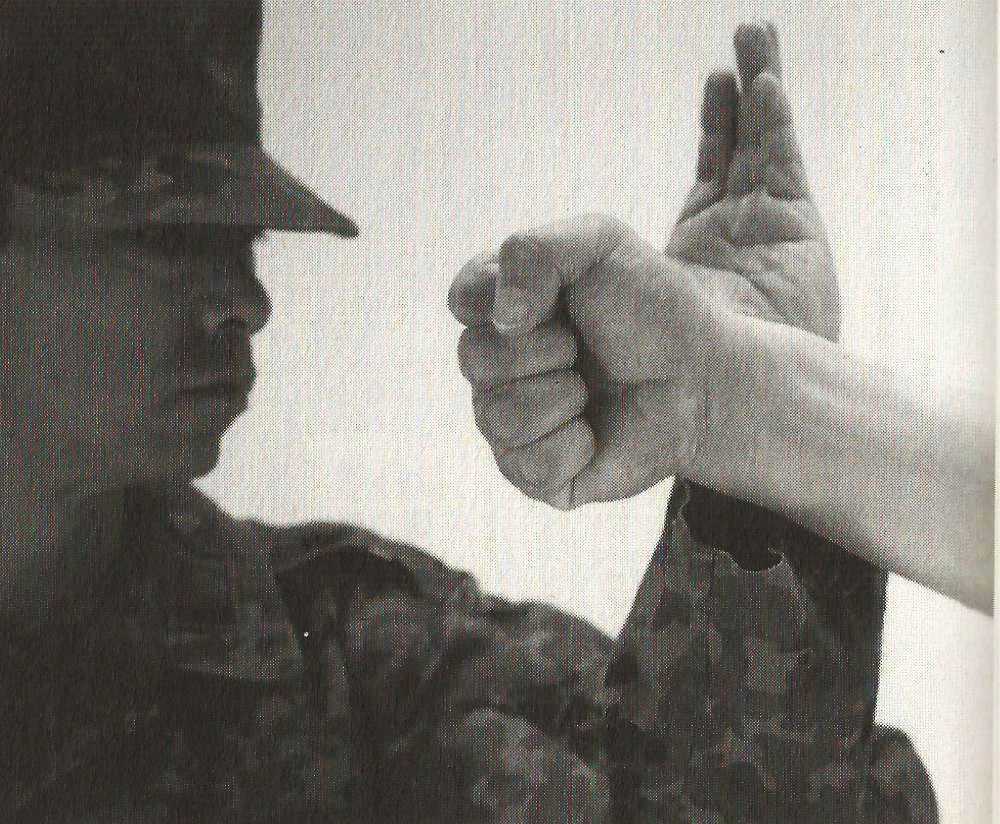
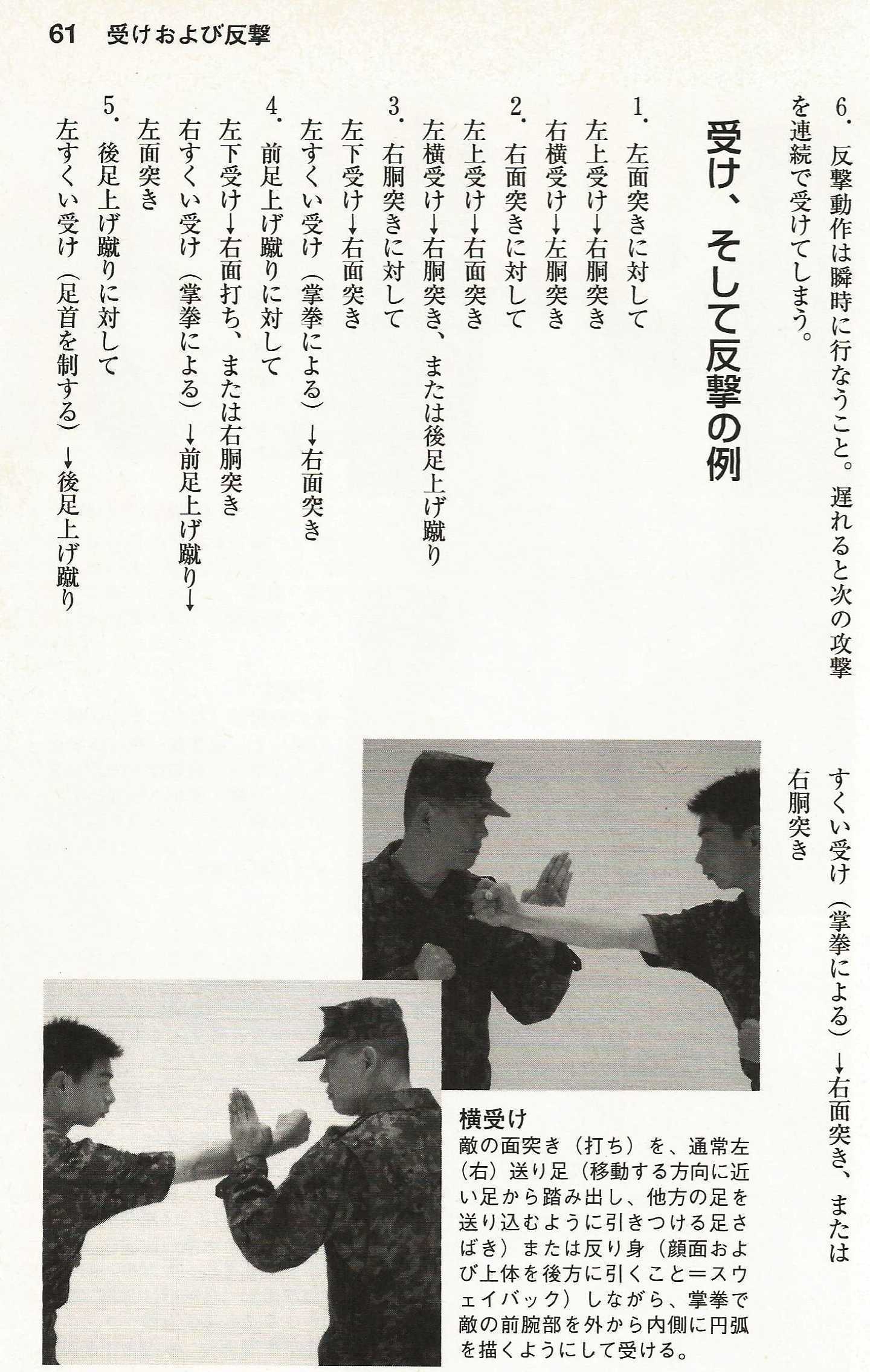
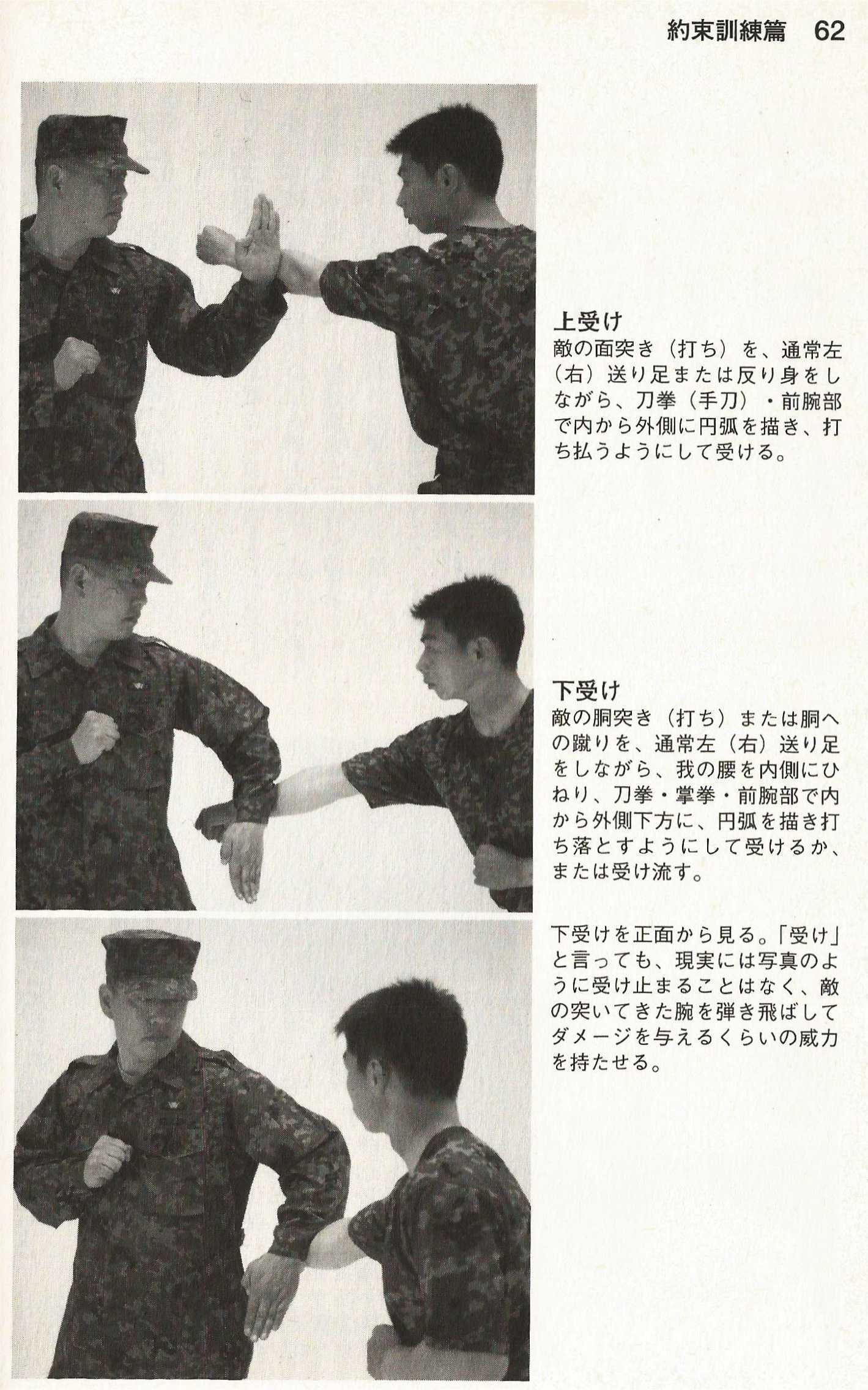
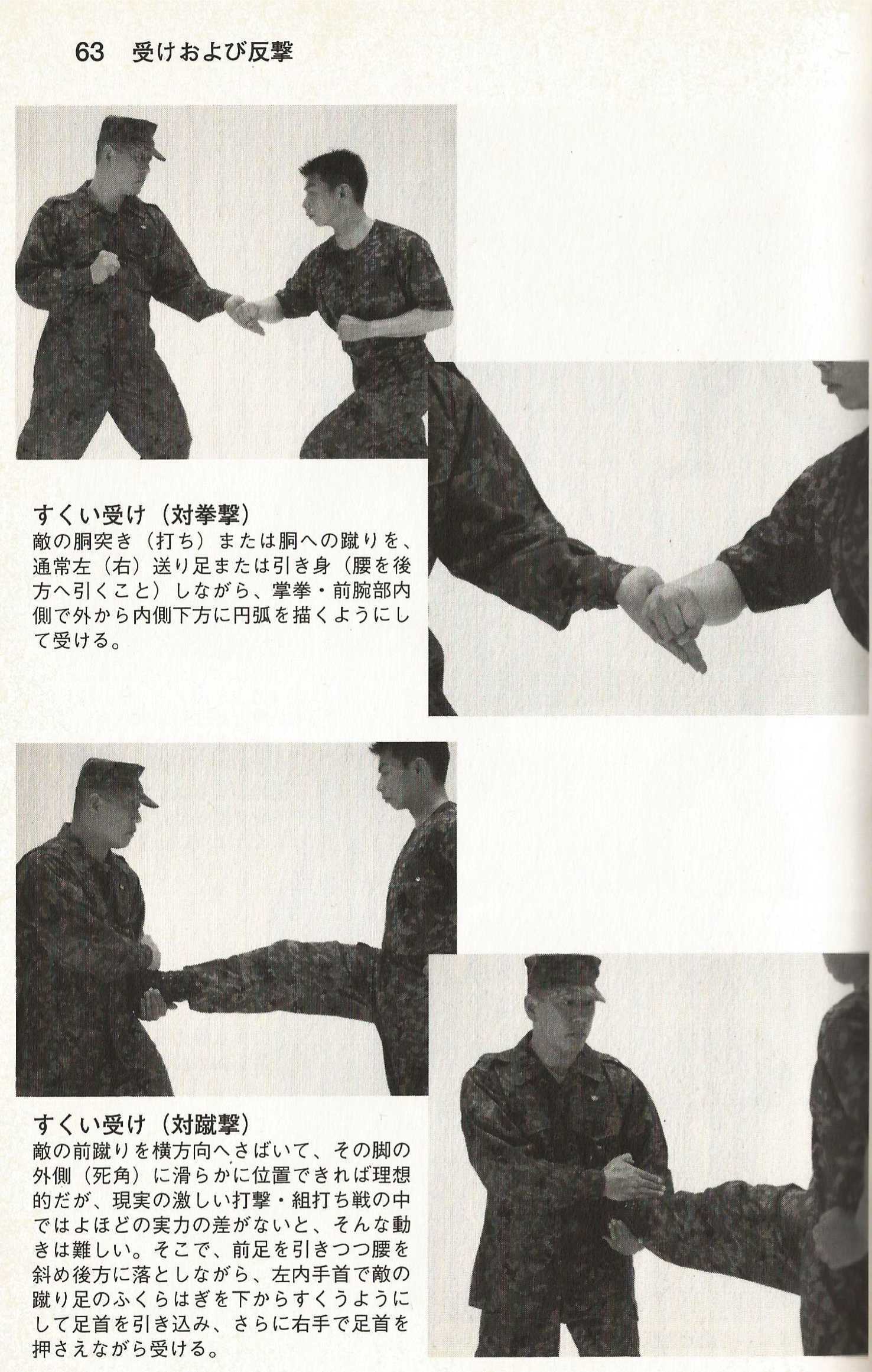
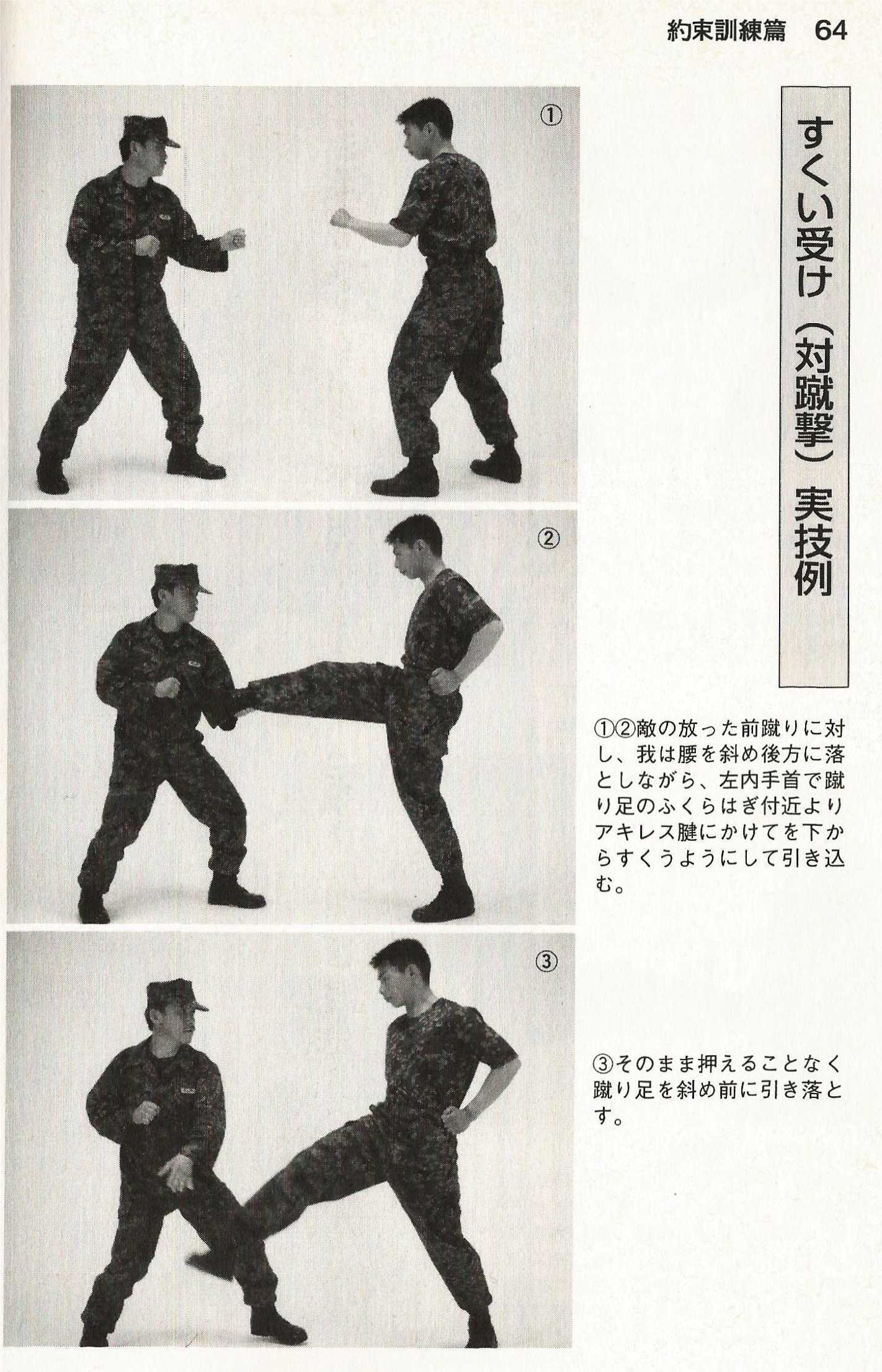
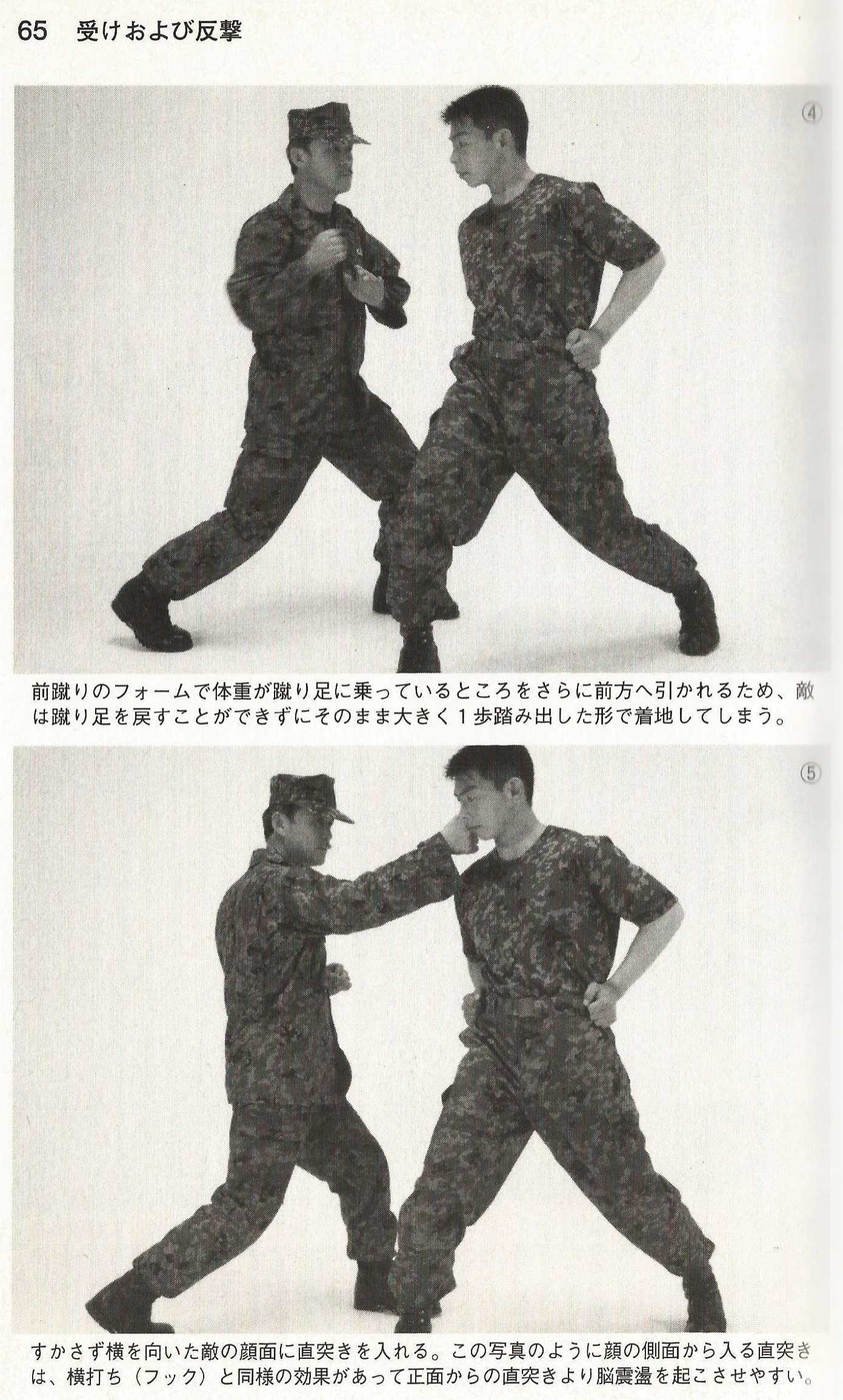
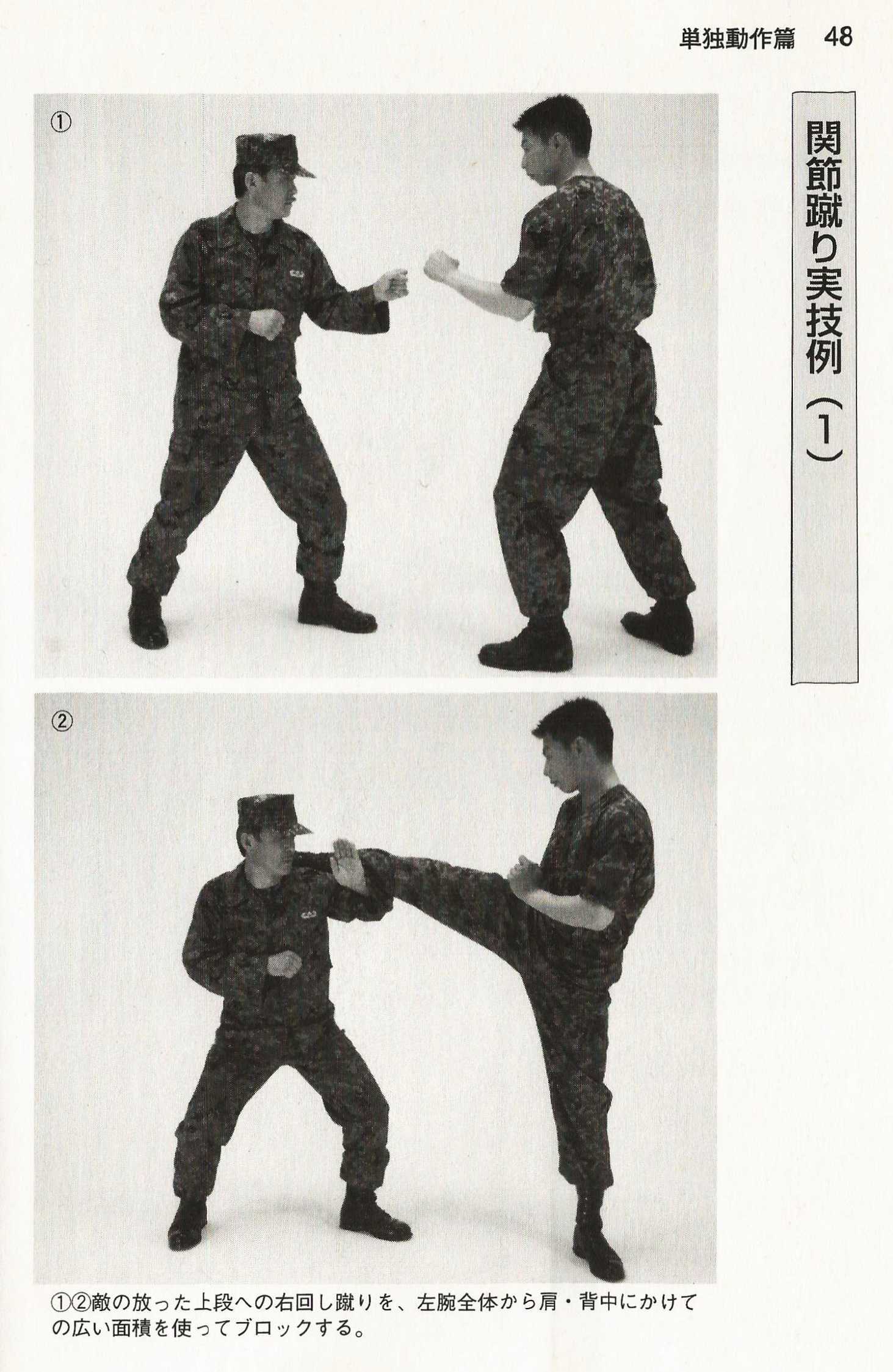
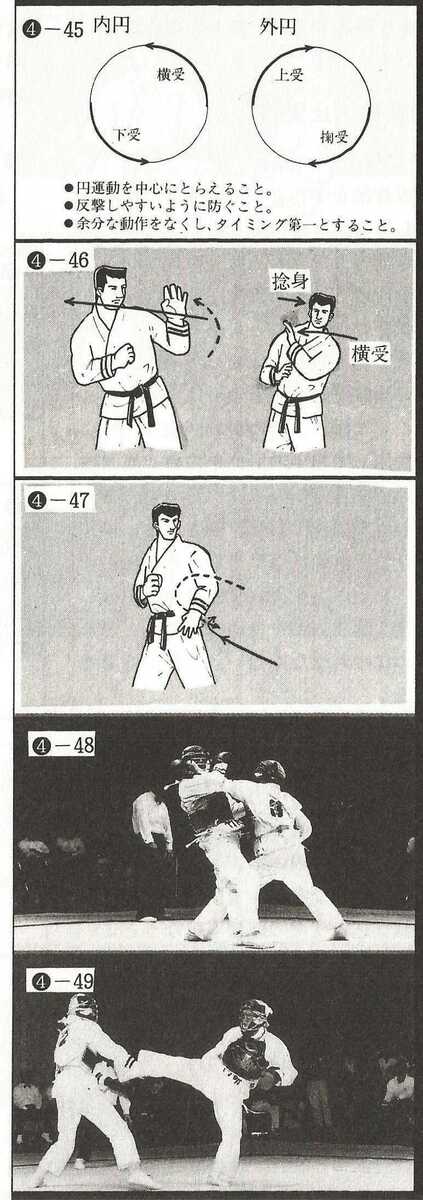
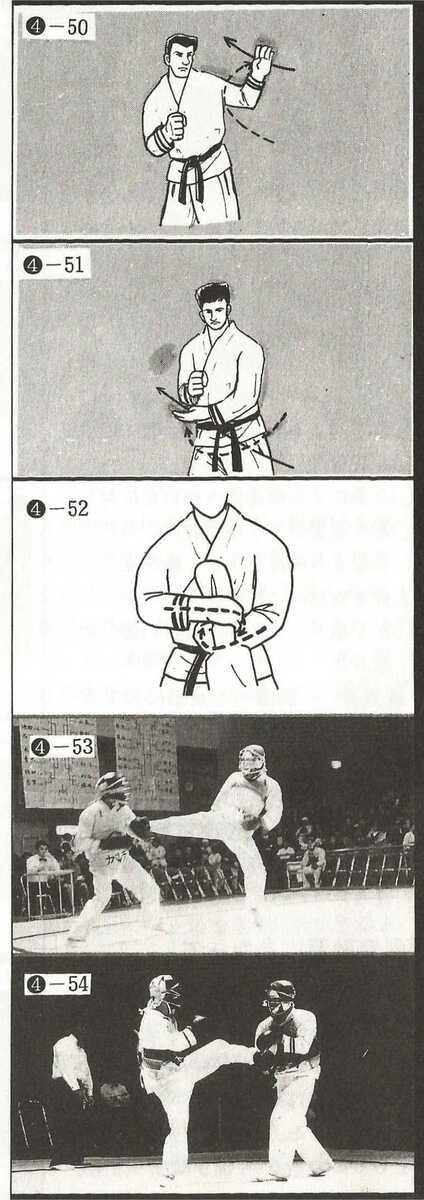
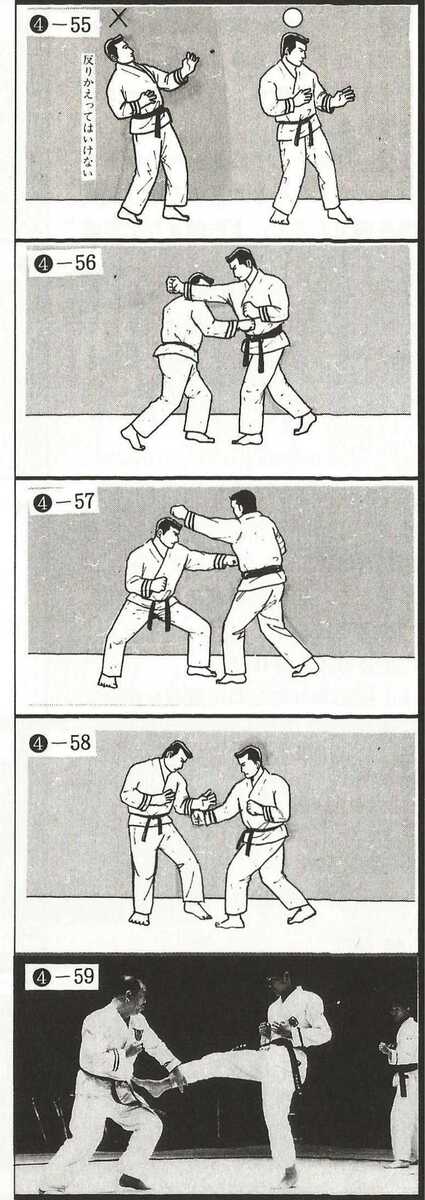
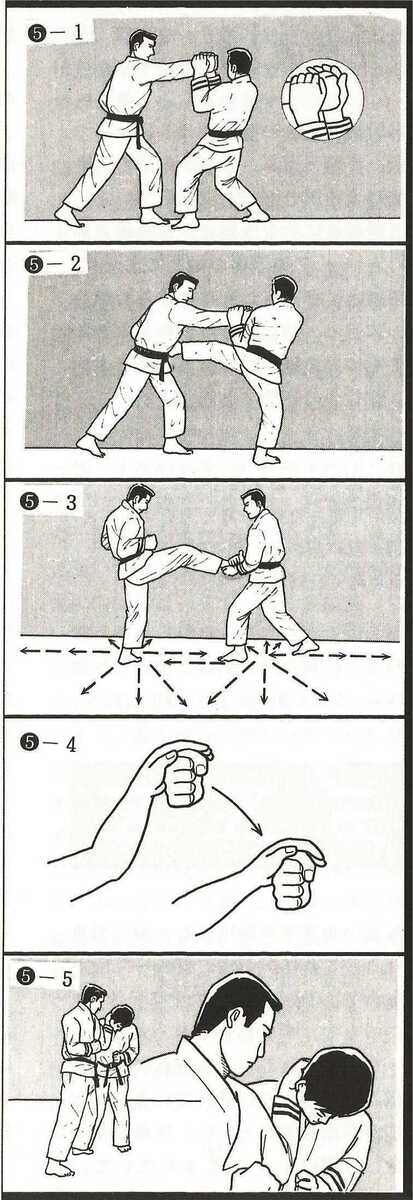
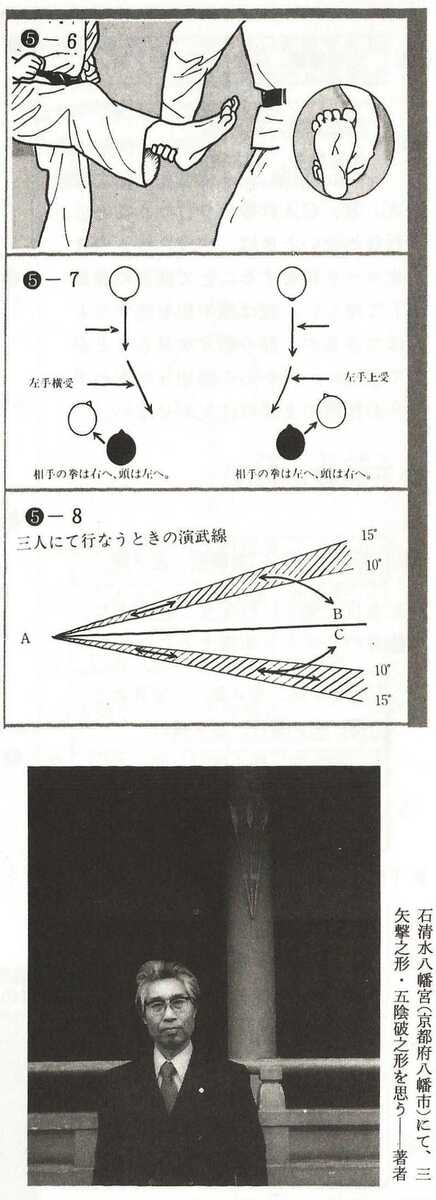
- UE UKE - circular outward
- EKO UKE - circular inward
- AGE UKE - upward
- SHITA UKE - low circular outward
- SUKUI UKE - low circular inward
- KAKE UKE - with hooked wrist outward
- TOMOE UKE - with both arms moving in- and sidewards
- HASAMI UKE - lock with both crossing arms
- KOKEN UKE - upward with outward side of the wrist
- SHYOTEI UKE - downward with inward side of the wrist
- SHIMERU UKE - with a forearm performing a hold to the own neck
- KASANE UKE - enhanced protection with arms crossed
Mr. Sawayama Muneomi developed SATAKEISOKU - schemes of movement:
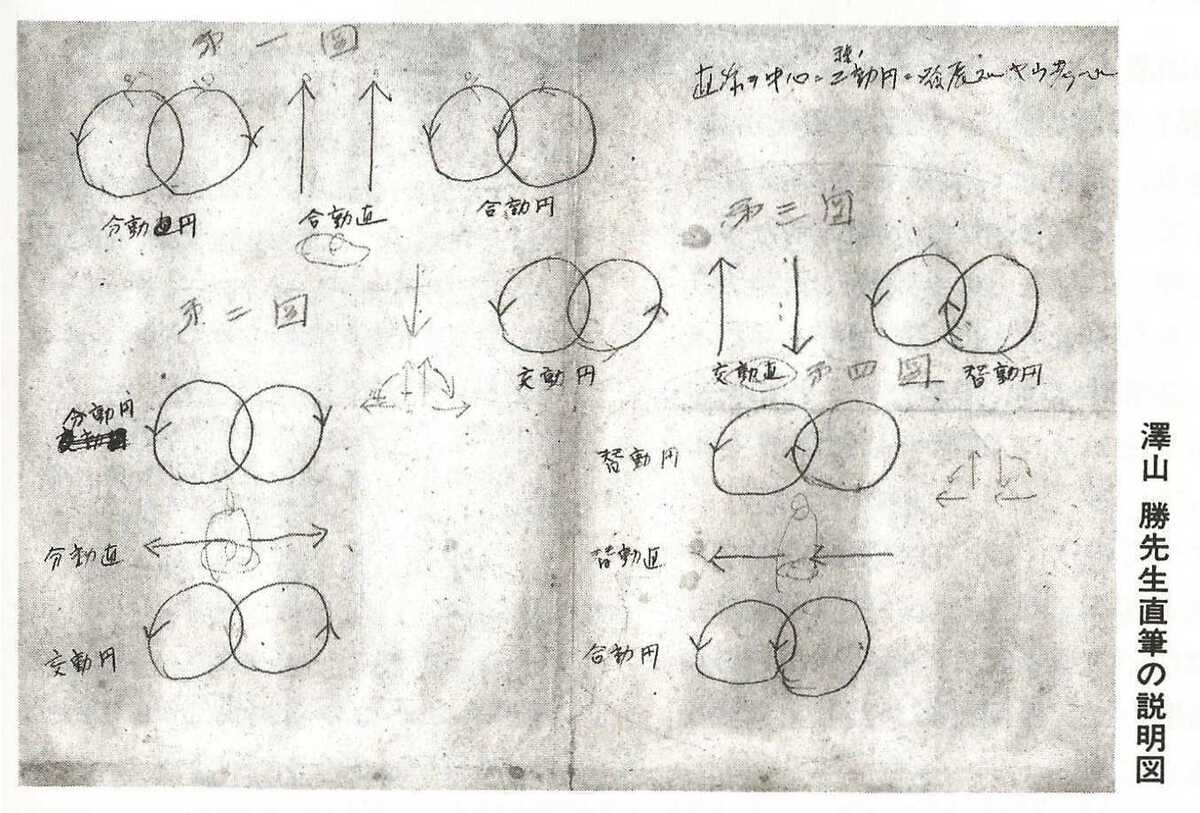
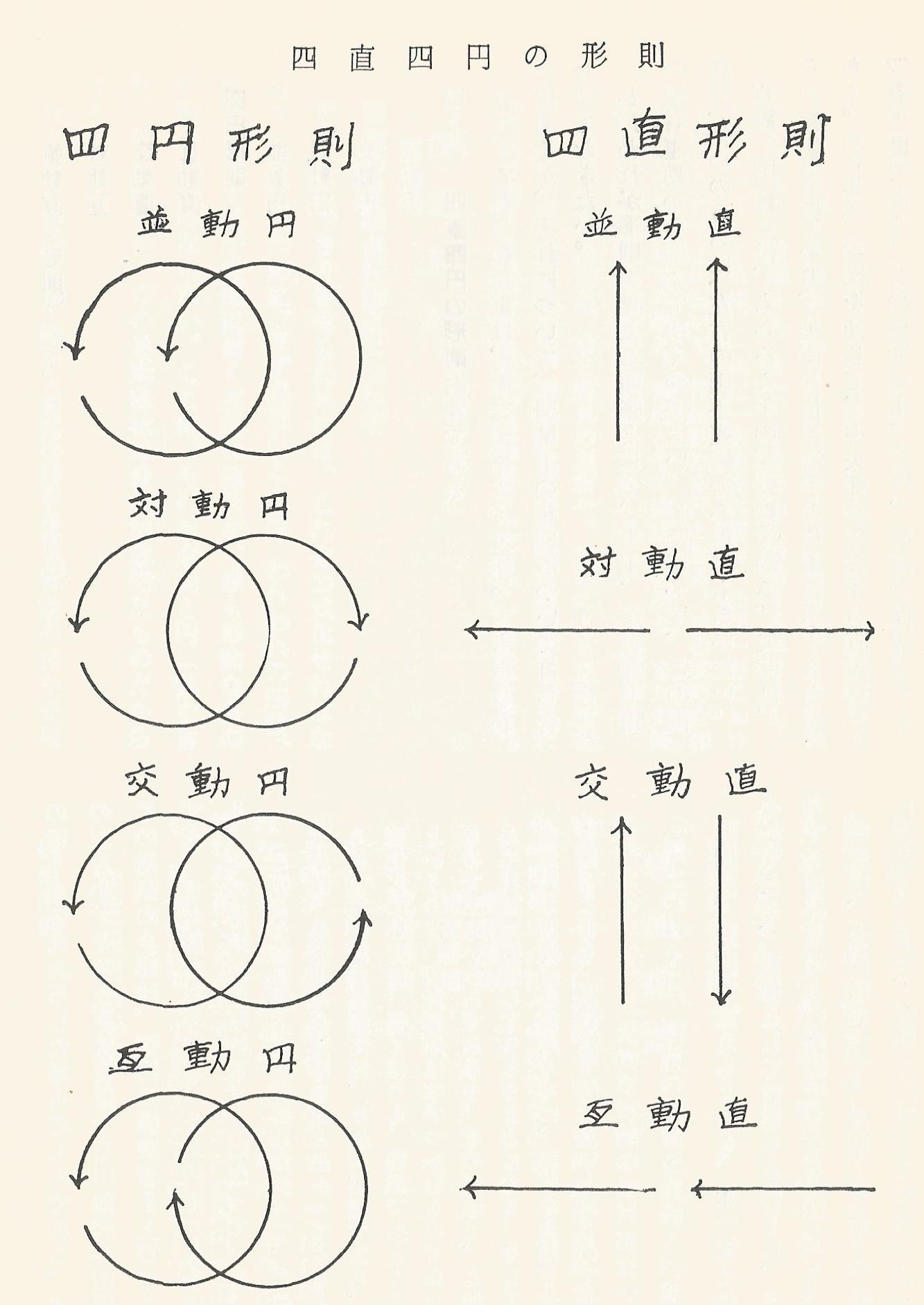
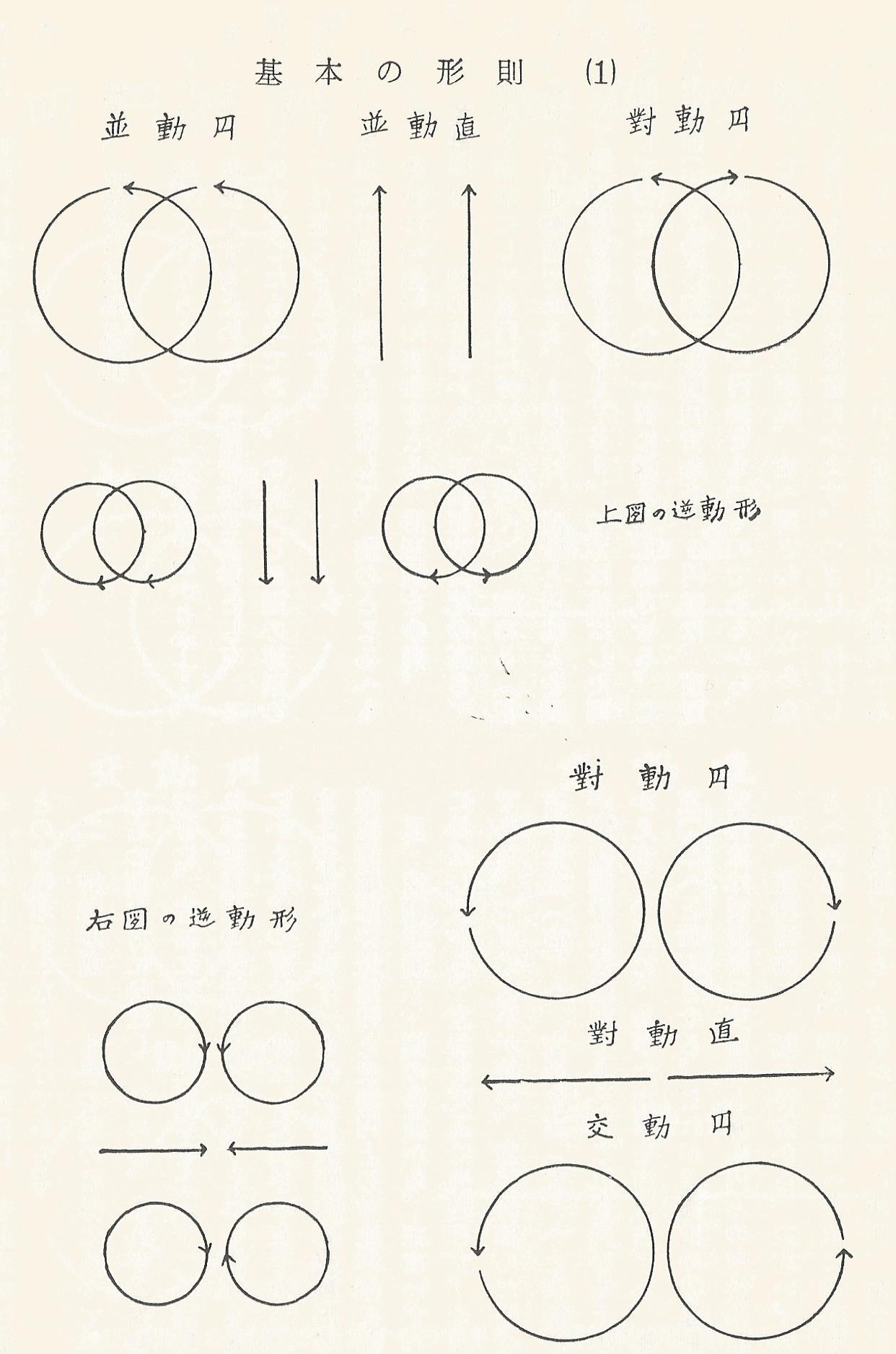
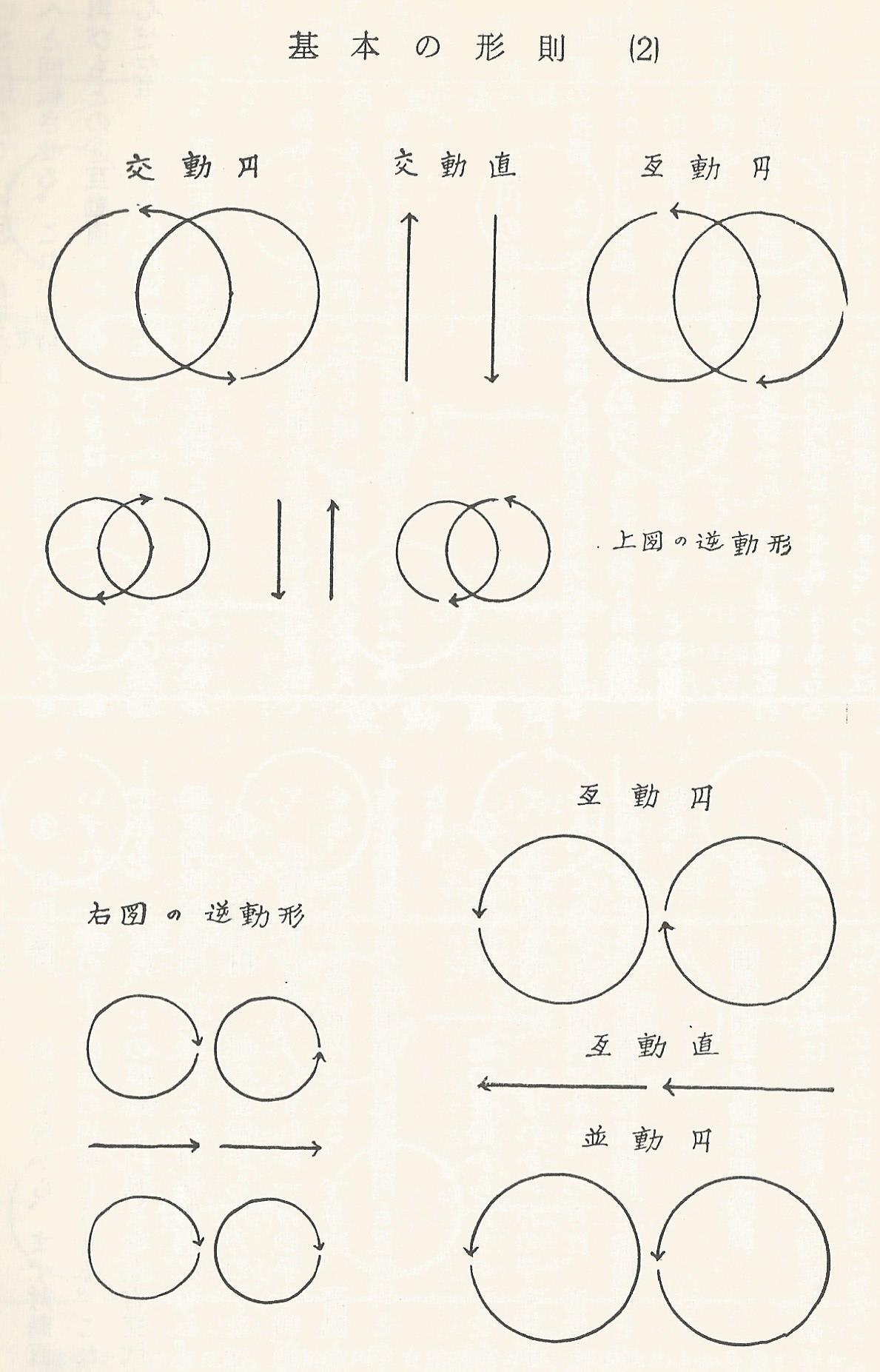
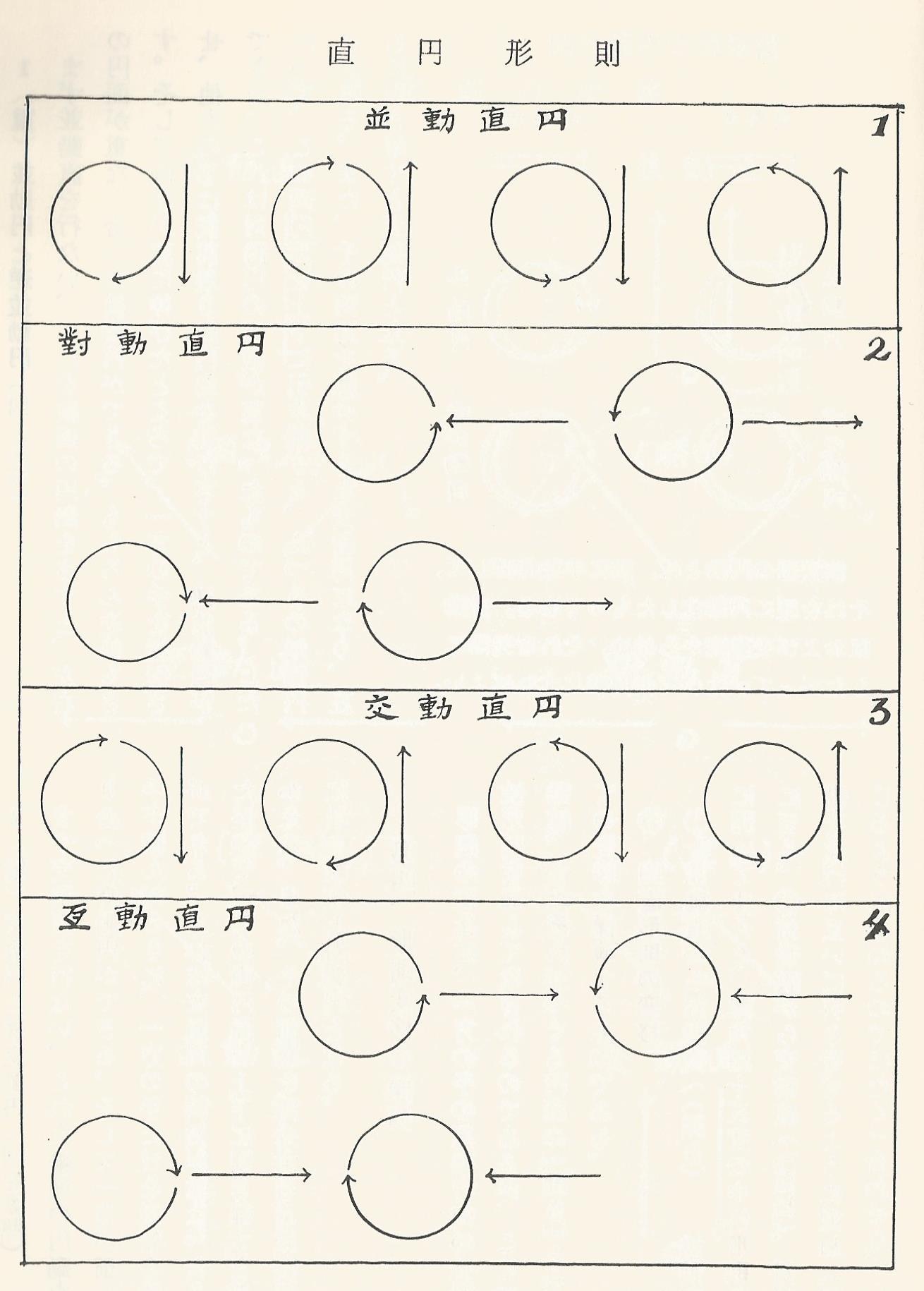
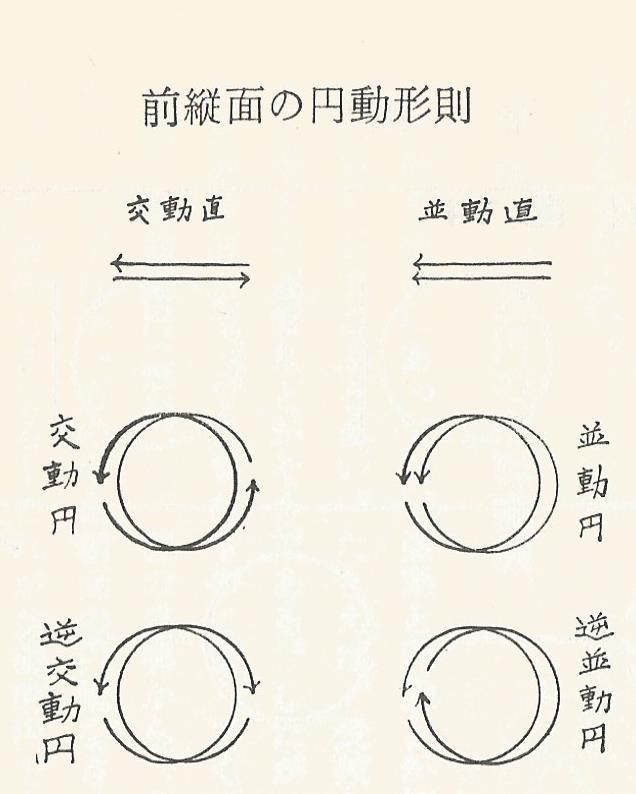
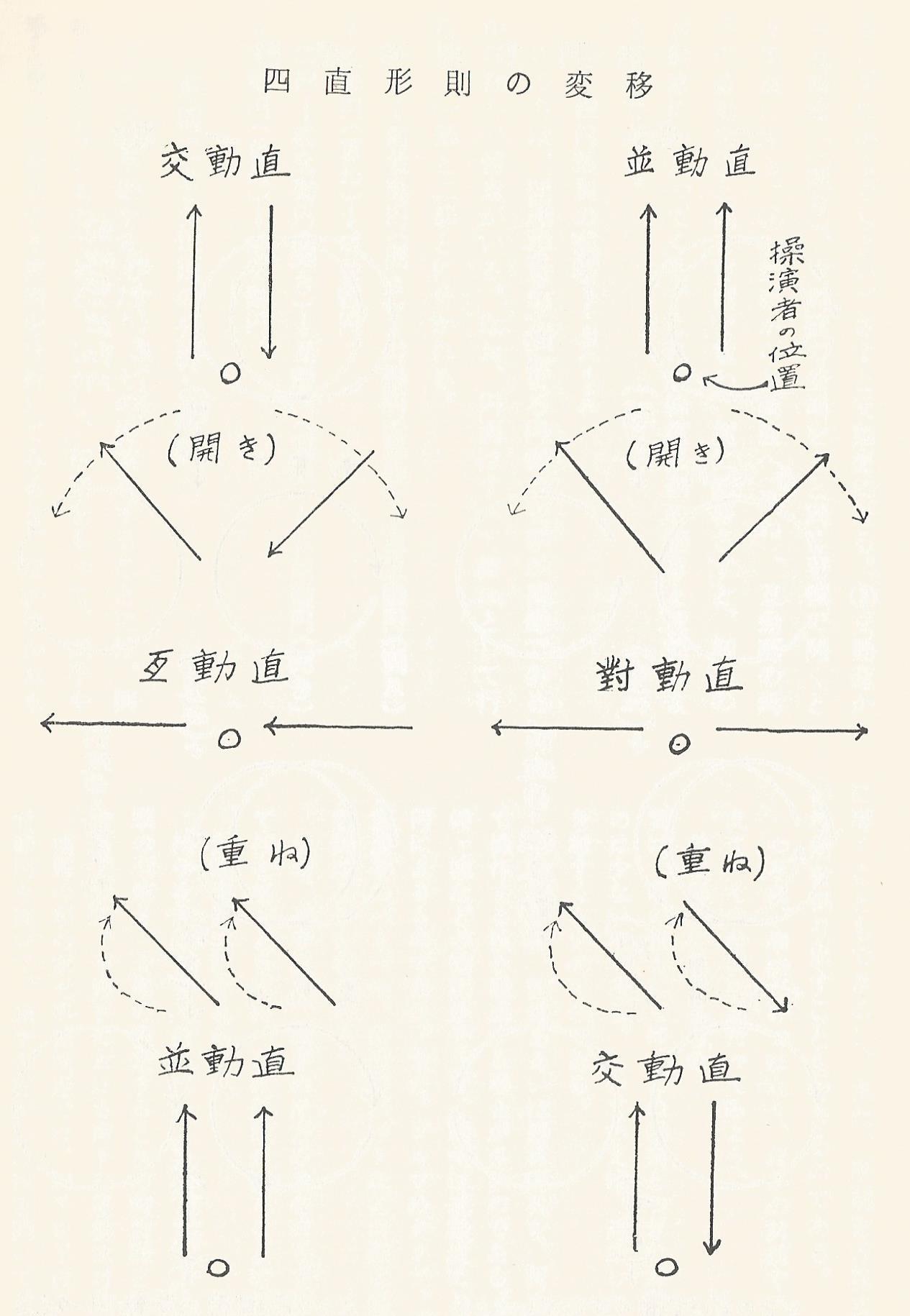
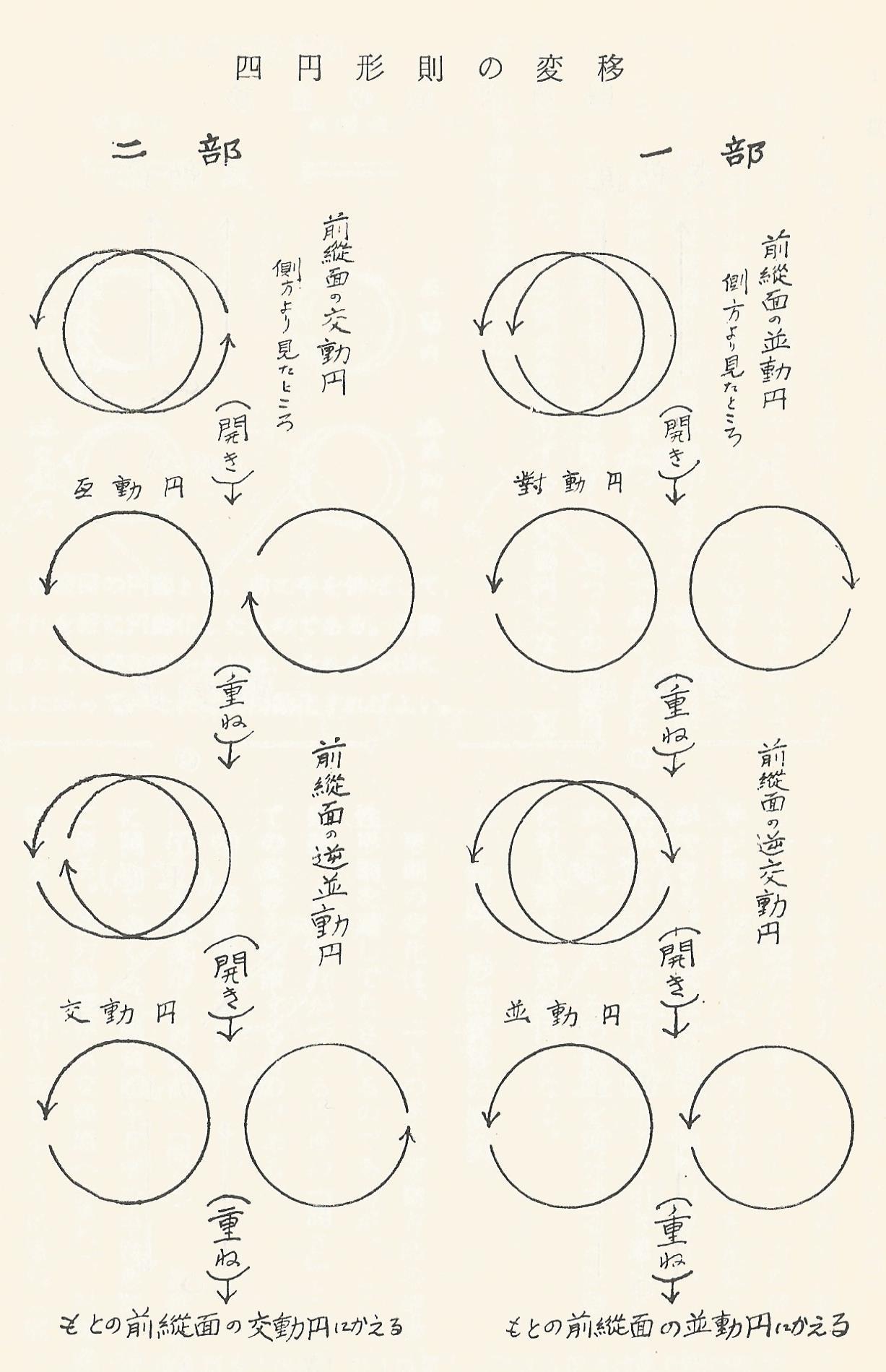
- HEIDOUKEISOKU- parallel scheme
- HEIDOCHOKU - linearly parallel movement
- HEIDOUEN- circular parallel movement
TAIDOUKEISOKU- scheme for expansive movement
- TAIDOUCHYOKU-parallel expansive movement
- TAIDOUEN- circular expansive movement
KODOUKEISOKU- scheme for synchronal intersection
- KODOUCHYOKU- linearly synchronal intersection movement
- KODOUEN- circular synchronal intersection movement
GODOUKEISOKU- scheme for alternately mutual movement
- GODOUCHYOKU- linearly alternately mutual movement
- GODOUEN- circular alternately mutual movement
The schemes are developed to elaborate the following fighting skills:
- vestibular system
- coordination of all extremities
- fincing technique
- mobility and agility
- usage of a variety of techniques
- amplitude of movement
- ability to move spontaneously and unpredictable
- ability to act confidently
- virtuosity in defense
This schemes were implemented by Sensei Sawayama Muneomi at the very beginning of Nippon Kempo exactly for that purpose. While alive, Sawayama Muneomi worked on this schemes to enhance them to technical and methodical katas as an aid for martial art students, but was unfortunately not able to fulfill his work. By the dint of ancient scripts as well as due to the advice of the living primary source Sensei Ishiguro Kunio the research was started again at "Kokusai Dojo" in 2013. In 2016 four katas were accomplished:
- HEIDOU NO KATA - technique of parallel circular and linear movement.
- TAIDOU NO KATA - technique of expansive circular and linear movement.
- KODOU NO KATA - technique of circular and linear synchronal intersection.
- GODOU NO KATA - technique of circular and linear alternately mutual movement.
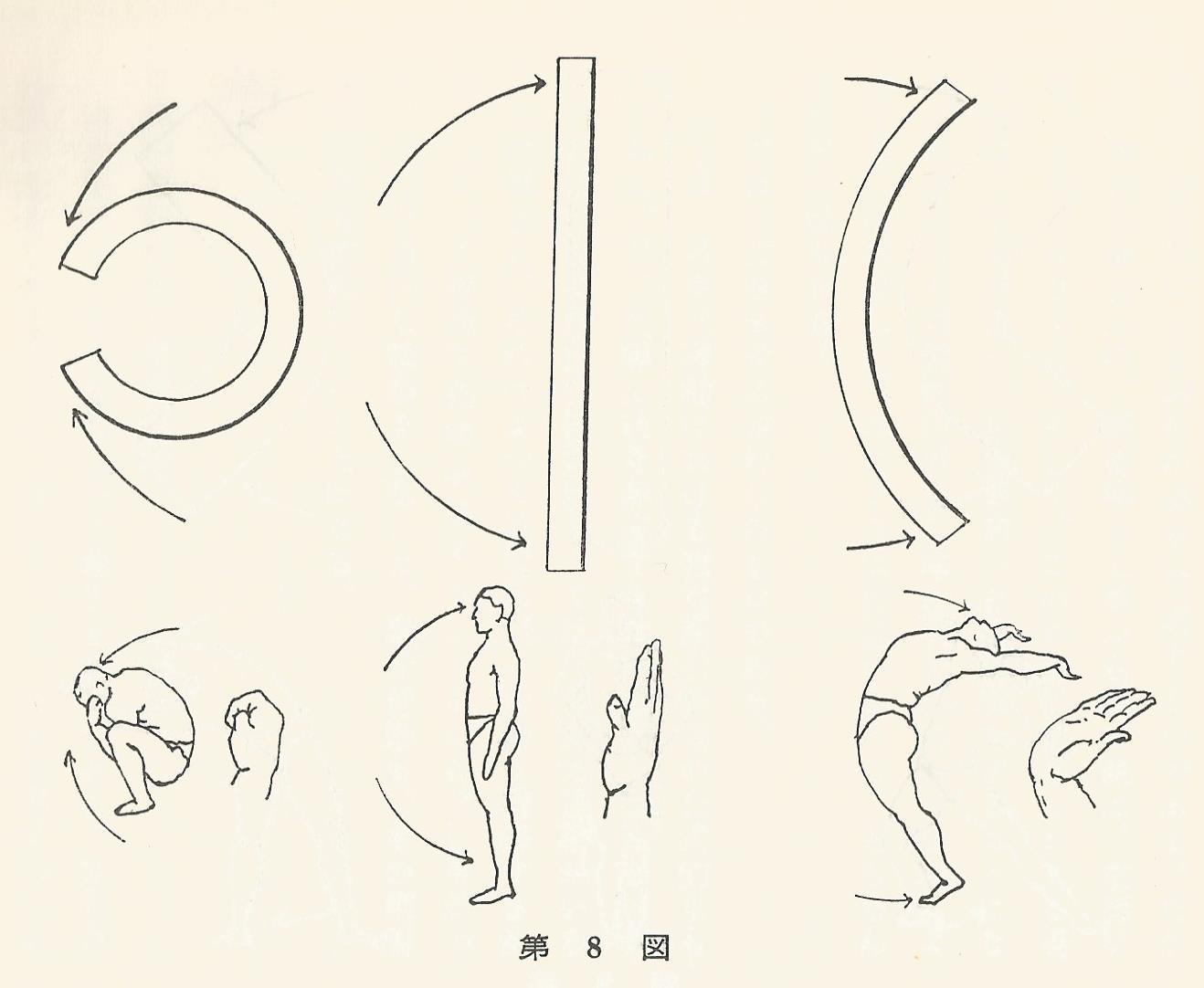
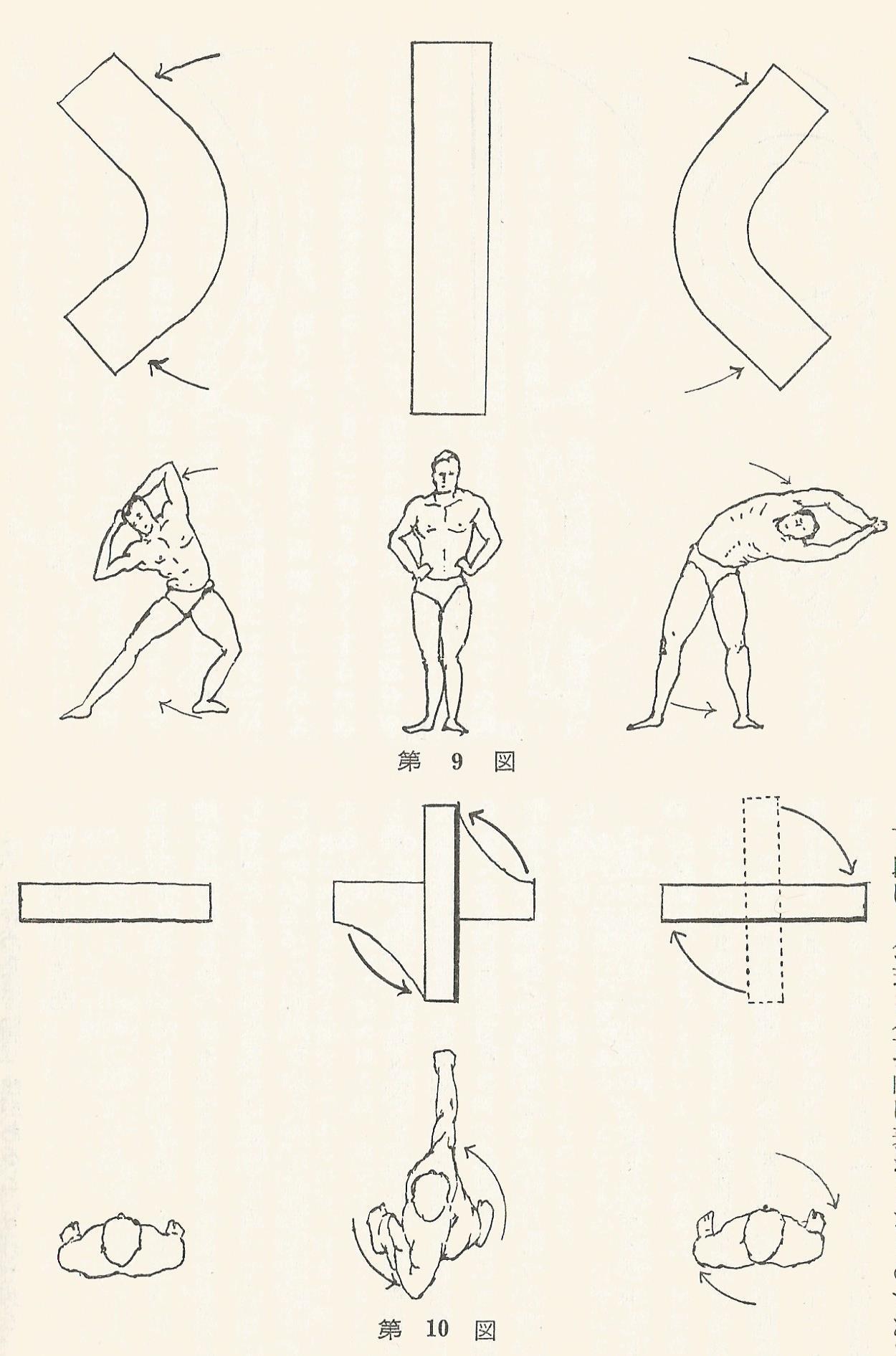
Purpose and meaning of KATA.
Some people think that katas are pointless, because them are useless in a competition, and even practiced permanently, them are not suitable to gain power. This point of view is own to following kind of people:
- who has not yet realized, that kata is purposed to enhance SEJSIN – the power of will of the fighter,
- who has not yet gained a mastery level of a kind, that allows to use the basic techniques as ZUKI – arm blows, UCHI – thrusts, KERI – leg blows as well as NAGE – throws, GAKU – joint locks in the sence of KAZUEJ – naturally usage in practice.
Kata:
- Inculcates SAHOU – order of courtesy and calmness.
- Trains to divine the thoughts of AITE – the opponent as well as to foresee his movements.
- Enhances agility by performing of DOUSA – techniques.
- Helps to avoid technical WARUJ KUSE – ill habits.
BUDO – a martial art requires an enhancement of SEJSIN – the power of will and DOUGI – moral and ethic norms which are going far beyond the requirements for a common athletic competition.
Practicing KATA
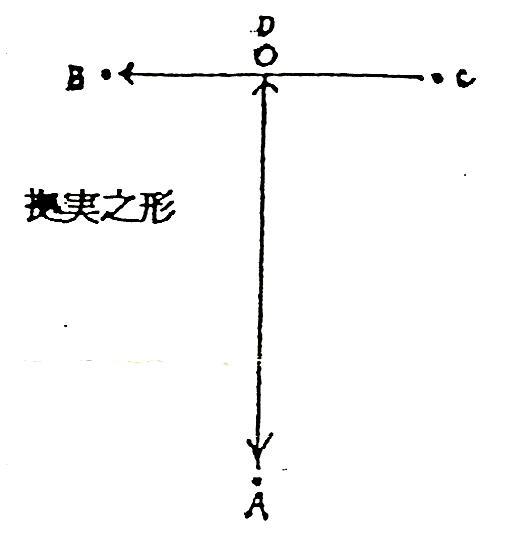
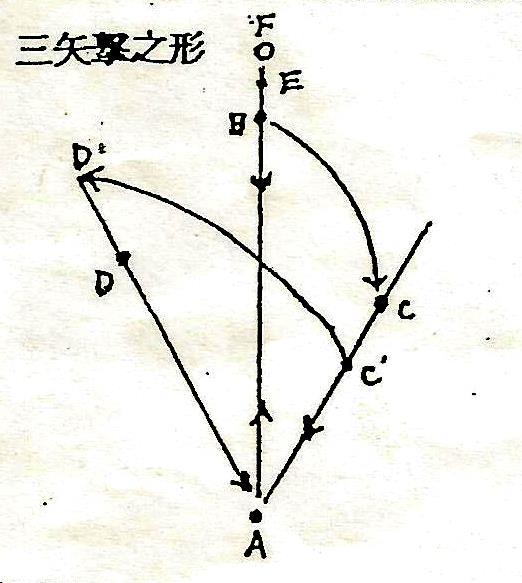
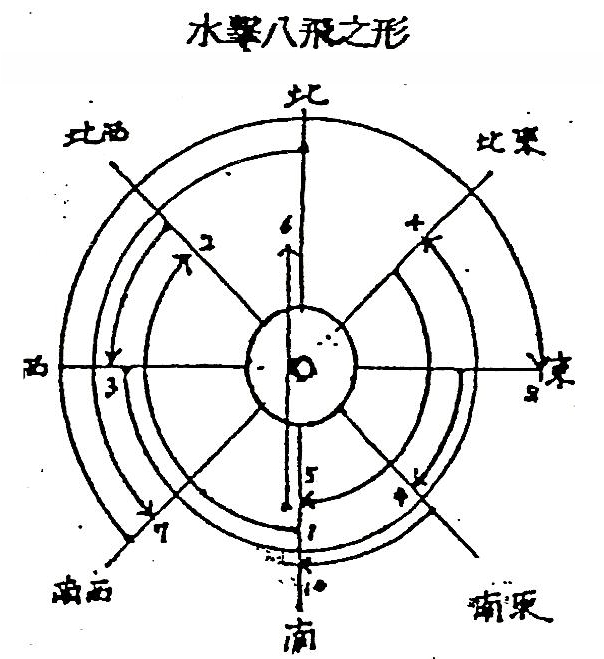
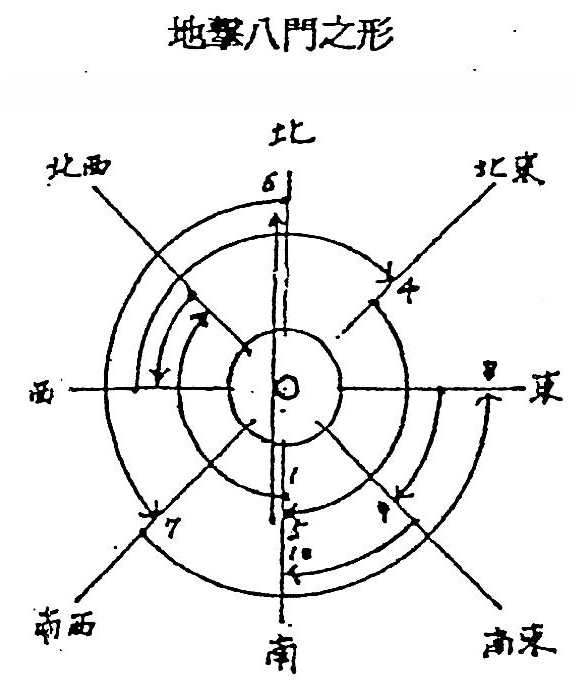
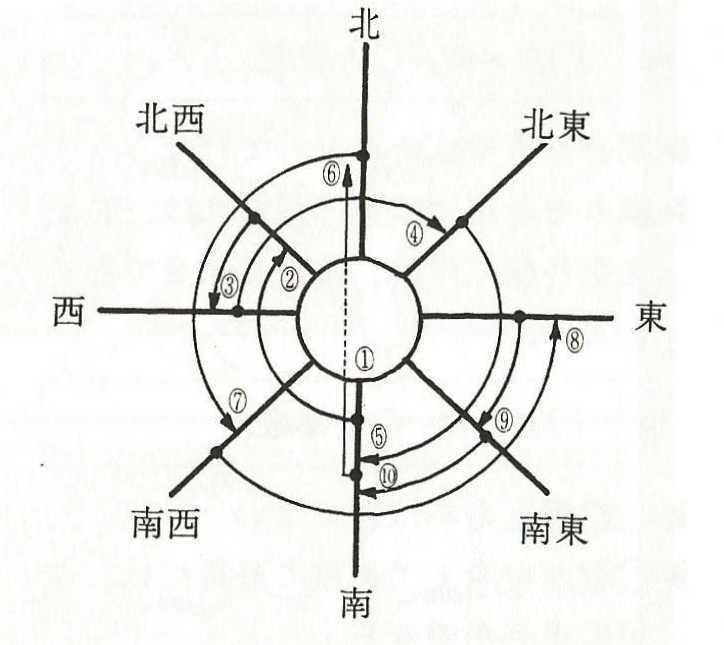
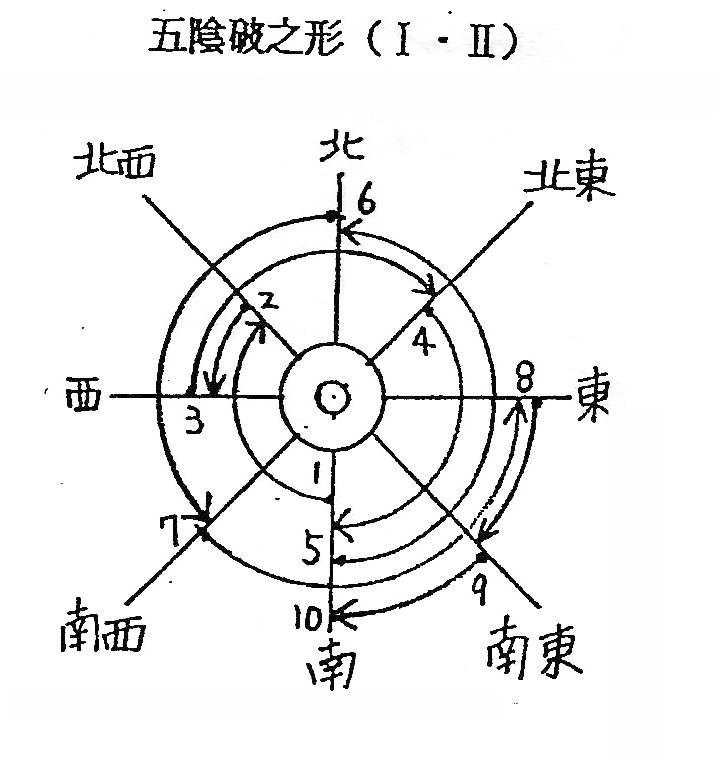
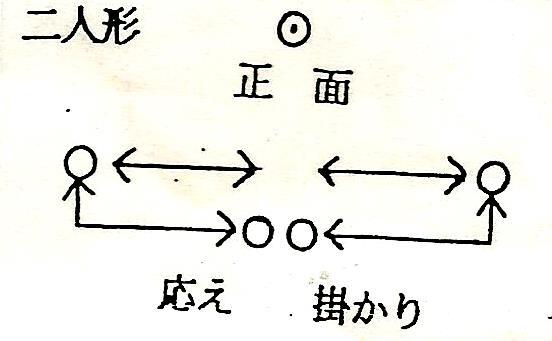
The mean issues by practicing kata are the following:
- SINKEN – serious approach to performance.
- KIHON – basic movements for arm and leg blows, performance of thursts in a proper way, as well as the memory of JINJYOU – the sequence for SEIKAKU – the accurate performance of the movements. It is recomended to perform CHIGEKI RYUSHIN – a fundamental attack technique including holding in center.
The secret of enhancement of a kata consists of HANPUKU – repetition of it in training. But if the take in is WARUI – ill in the very beginning, so the results will be ill as well. So a good instructor is necessarily required to achieve true enhancements.
Kata can be trained under advice of a person with a higher level of mastery:
- At the beginning and the end of the performance of kata a person with a higher level gives the command REI – the greeting bow, names the kata that has to be performed and gives the command HAJIME – to start the performance.
- During a technical performance it could be required to divide technical sequences by numbers. Usually, for exercising of WAZA NO – technical sequences no explicit command is required.
Exercising kata includes:
- Courtesy REI – greeting bow, enhancement of SENSIN – the power of will.
- SEIKAKU – the right stand, technique for right disnace TAISABAKI – body yielding.
- Bringing the technical mastery in line with the own mind, various techniques of KUMIUCHI – wrestling.
Kata provides a basis for mastery in the technique of KOUGEKI – the attacker as well as BOUGYO – the defender. For that reason kata is always performed by two effectives. The one starting as the attacker is named KAKARI – the assaulterand the one in the defending role is called KOTAE – the respondent. Kata for two effectives is built upon a fencing scheme. Additionally, there is the practice of KIHON – the basis for solo kata performance. The enhancement of the kata technique RIAI – is according to the rules of the technical standard, SEI – calmness of movement according to DOU – movements of calmness. Taking in this principles enables a quick responding to any changes of the situation, as well as a selection of a proper technique.
Requirements and hints to performance of a combat KATA
REIHOU – the right behaviour, the right breathing and stand, METSUKE – the right facial expression, SABAKI – feet position. Techniques for use of KENSOKU– arms and legs. Capability to hold the opponent´s arms, the art of KAWASI – wrapping. Practicing kata helps to master a proper placing of blows, as well as the art of KAGEKI – the exchange of blows. The art of ATEMI – an initiative attack with powerfull blows, throws or virtuoso performing of joint lock, while keeping assertiveness, efficiency and SEIKAKU – precision. Sequence of kata and TAISABAKI – posture in the rhythm of the movement. KIAI – concentrated shouts (voiced or muted) to enhance the spirit and the power of will. SZANSHIN – equanimity, keeping the feel for the right distance.
Basic requirements for performing a kata:
- In case that a kata is performed by two effectives, the right mesure of steps, as well as the technique of SURIASHI – feet shuffling . Shall be performed in the middle of a dojo, the distance between the opponents shall be 4,5 till 5,5 meters. Considering the middle of the dojo, the respondent shall be placed on the HIDARI – left side, and the attacker on the MIGI – right side facing each other. Than them shall give the proper expression of their character, perform a bow in standing position and than take the SONKYO – the squat position. Afterwards follows the order of TANDEN – abdominal breathing. The underbelly shall be filled with concentrated power.
- FUMIDASHI – lunging forward taking a middle stand (usually left-side). If the attacker has a rank of SHINO – instructor so he is guiding the exercise.
- The attacker and the respondent mutually step towards each other on the distance of SANPO – three steps, and the attacker starts KOUGEKI – the attack. The respondent performs HANGEKI – counterattack. Afterwards them reduce the distance keeping ZANSHIN – equanimity. Restraining their breath both effectives withdraw to MOTO – the initial position and than continue to perform further technical movements. Before making a move forward a deep KYUKI – breath and than, with a single breath (without stopping the move), a lunging attack shall be performed among with a shout. The attacker shall shout EY, the respondent YA - TO. The shouts shall sound loud and distinct, though the underbelly shall be filled with power. While retreating, the body shall stay imperturbable, and the spirit of TAIKI – expectancy shall be perfected.
- At the end of the kata performance, the standard squat position shall be taken, than the RETSUREI – the standing bow shall be performed from the place of honor, followed by a calm retreat.
- In case of a sole performance of a kata, the performance shall be oriented towards the KAMIZA – the place of honor. The technical basis of a kata consists of SHISEI – the posture. The key to the proper posture is the position of the loin. This is the prevailing technical fundament. To keep a posture capable for fighting, it is essential to achieve a complete stability of KOSHI – the loin.
Focused shouts.
Filling the body with KIRYOKU – energy, the shout happens naturally, ensuring ATTOU – suppression of the opponent. To hold back HAKI - the rush and the eagerness is pointless, but nevertheless there is no significant benefit for a beginner student to sound RYOKKOU – the mighty shout. The right HASEIHOU – vocalization starts with a confident shout. The purpose of the shout ist to demonstrate the opponent IKIYOI – the own power, strength and integrity of KOKORO – the spirit, while using the art of HAZUMI – recoil, jump-off, momentum, thurst, elsticity, withdrawal, as well as keeping the cohesion of SEISHIN – the power of will. Moreover, to make CHIKARA TSUYOI – a mighty sound out of the belly. It ist recomended that HABA – range of the piercing shout shall be MIJIKAI – short. The best condition is if the shout flows unconsciously out of the body. The highest level of this art is MUSEI – unsoundness.
1932 - Mr. Sawayama
Masaru became famous in Japan as a founder of Nippon Kempo and,
according to the tradition, changed his name to Sensei Sawayama Muneomi.
1944 - it was recommended to include bayonet fighting (Jyuken Kakuto) and japanese hand-to-hand combat (Nippon Kempo) to the physical education program for cadets of the Toyama Military Academy (Tokyo -Shinjyuku). The development of unarmed hand-to-hand combat started at Toyama Military Academy, the military school of japanese infantry forces.
1947 - the club "Nippon Kempo Kai" was founded
1954 - the establishment of proprietary japanese military forces is no longer prohibited. The Headquarters of Japanese Defense Forces founded a center of research and development of hand-to-hand combat systems. Nippon Kempo became an obligatory part of the staff education of special military and security forces.
1955 - the first official association "Nippon Kempo Kyokai" was founded. The association was responsible for practical military techniques for Japanese Defense Forces and police forces. Training courses for the civilians were organized as well. The Association "Nippon Kempo Kyokai" united all the clubs, societies and centers practicing Nippon Kempo.
1956 - Mr. Ryonosuke Mori starts to teach Nippon Kempo at the police academy.
1956 - the student federation "Nippon Kempo Renmei" was founded within the association "Nippon Kempo Kyokai". It was the beginning of development of Nippon Kempo at japanese universities.
1958 - the development of the hand-to-hand combat system for infantry unit of Japanese Defense Forces started. Mr. Ryonosuke Mori as well as mr. Kenji Tomiki, professor of the Waseda University and a recognized master of Aikido, were invited to act as instructors. As a result, the combination of the best elements of Aikido and Nippon Kempo caused the development of "Jieitai Tosu Kakuto", the hand-to-hand combat system of Japanese Defense Forces.
1961 - development of three following katas by the association "Nippon Kempo Kyokai":
- CHIGEKI NO KATA - fundamental attack technique
- KODJITSU NO KATA - technique of fundamental reality.
- SUJGEKI NO KATA - technique of swirling attack.
Consultant mr. Sawayama Muenomi
01.04.1968 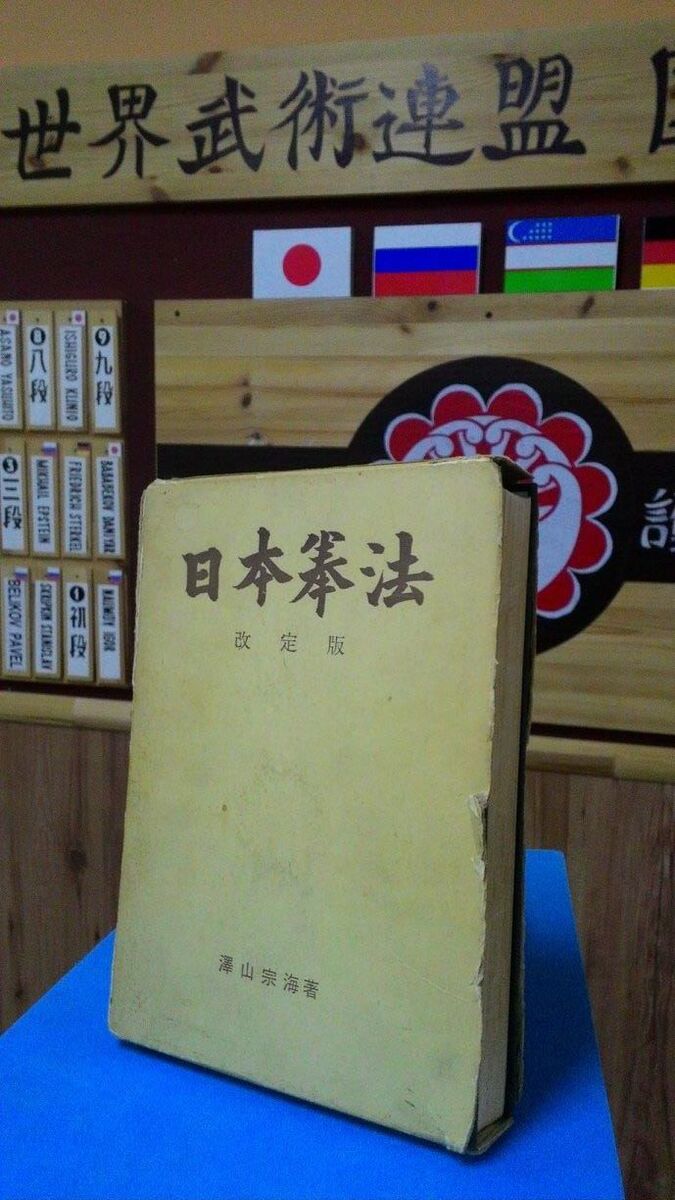
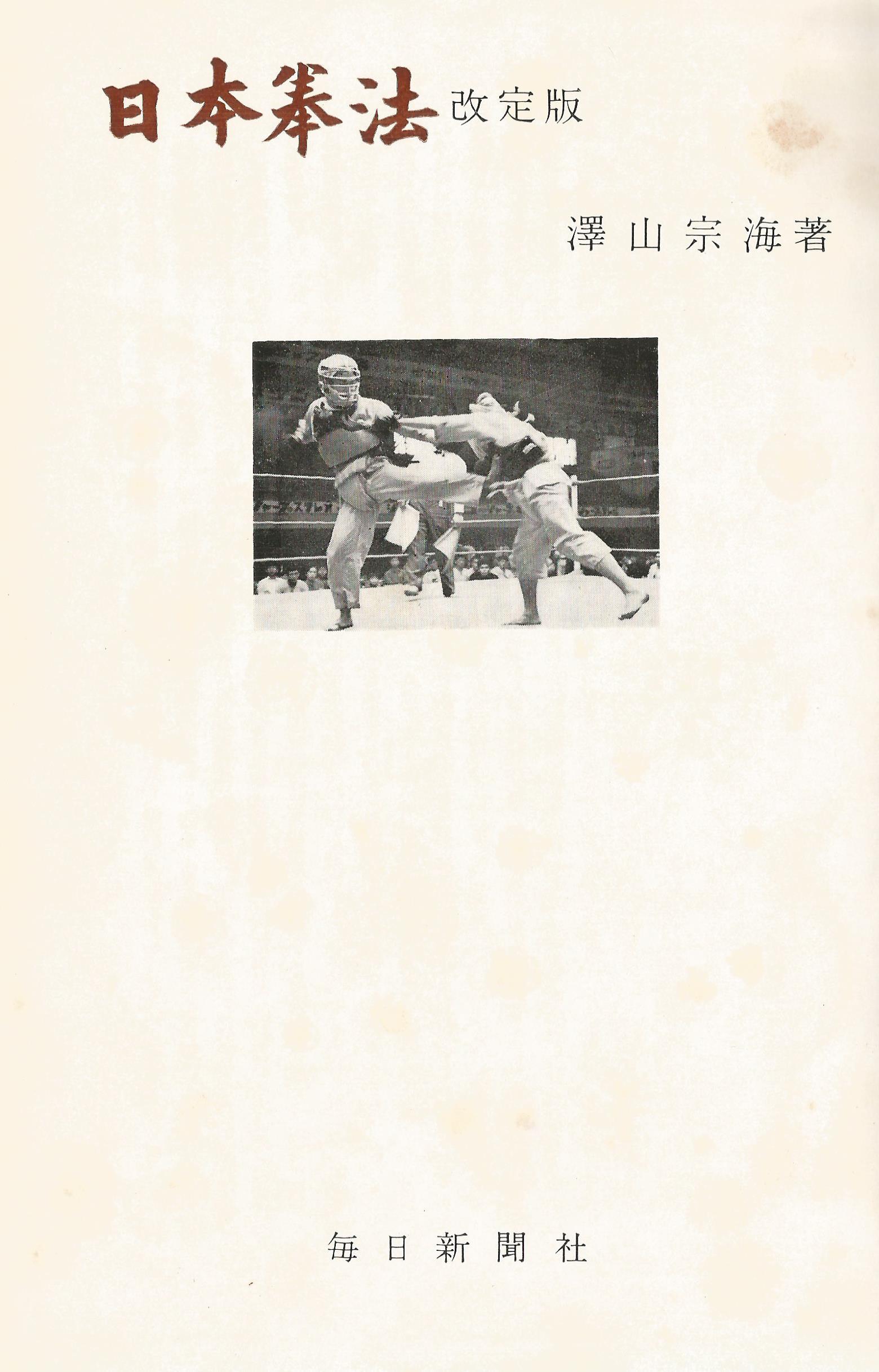 - mr. Sawayama Muenomi
published the book "Nippon Kempo"
- mr. Sawayama Muenomi
published the book "Nippon Kempo"
1971 - Appearance of the motto of "Nippon Kempo Kyokai":
WARERA NO SHINJO
- HITOTU, WARERA WA JI RIKI SHOU DOU NO, SEISHIN O, YASHINAU TAMENI, KEMPO O MANABU - the most important issue by studying Kempo is, to evolve the power of will to wander the way of truth.
- HITOTSU, WARERA WA YOU KI HOU TOKU NO, KOKORO O, MOTTE SEKAI HEIWANI, MAISHIN SURU - the key is to feel serenity inside the heart, to act for the good and to be dedicated to peace in the whole world
1972 - development of two following katas by the association "Nippon Kempo Kyokai":
- SANSHIGEKI NO KATA - technique of the attack of three arrows
- MOKUMO NO KATA - technique of the mother tree
Consultant mr. Sawayama Muenomi
16.01.1973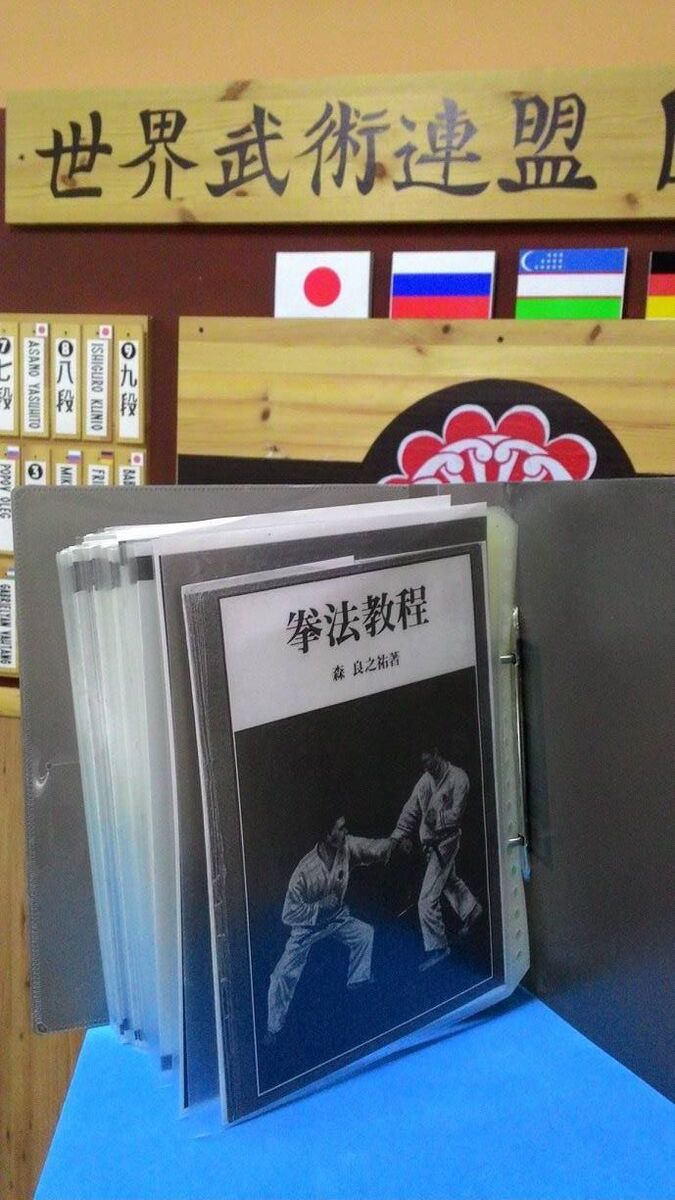 - mr. Ryonosuke
Mori published the book "Nippon Kempo Ketei".
- mr. Ryonosuke
Mori published the book "Nippon Kempo Ketei".
1976 - development of two following katas by the association "Nippon Kempo Kyokai":
- GOONPA NO KATA - technique of five secret breaks
- SHIHOREI NO KATA - technique of movement in four directions with applied force
Consultant mr. Sawayama Muenomi
1976 - mr. Kunio Ishiguro implemented 5x5 competitions to Nippon Kempo.
1977 - the founder of Nippon Kempo mr. Sawayama Muenomi died at the age of 81. Mr. Ryonosuke Mori became the Leader of the NIppon Kempo Kyokai Association.
16.01.1978 - Mr. Ryonosuke Mori published the book "Nippon Kempo Ketei".
1979 - the federation of Japanese Defense Forces "Jieitai Toshu Kakuto Renmei" was founden within the association "Nippon Kempo Kyokai". Toshu Kakuto was developed on the basis of Nippon Kempo. The system includes disciplines of mastering cold and fire arms, Tanto Kakuto - knife fighting, Goshin Jitsu -art of self defense, as well as Jyuken Kakuto - bayonet fighting technique.
10.10.1982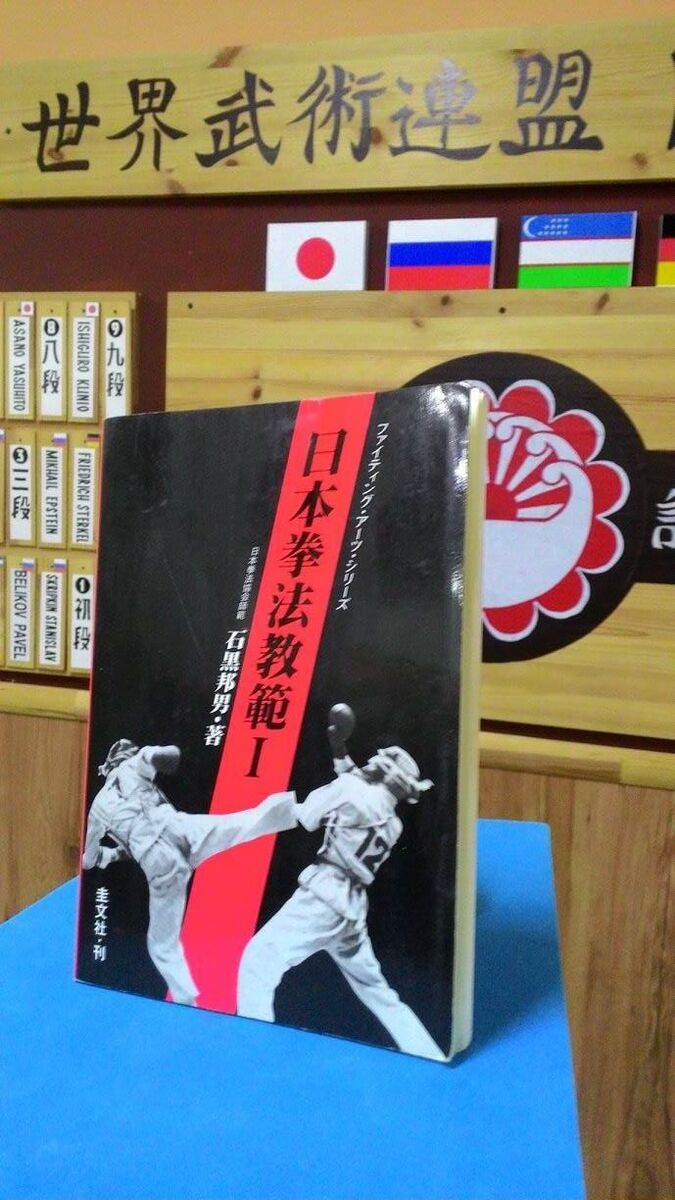 - Mr. Kunio Ishiguro published the book «Nippon Kempo Kyohan».
- Mr. Kunio Ishiguro published the book «Nippon Kempo Kyohan».
1988 - this year marks the beginning of the schism among the masters of Nippon Kempo. Each recognized master who leaved the association "Nippon Kempo Kyokai" started his own research and development of his own bias.
1988 - the club society "Nippon Kempo Kai" leaved the association "Nippon Kempo Kyokai".
1989 - the student federation "Nippon Kempo Renmei" leaved the association "Nippon Kempo Kyokai".
30.09.1991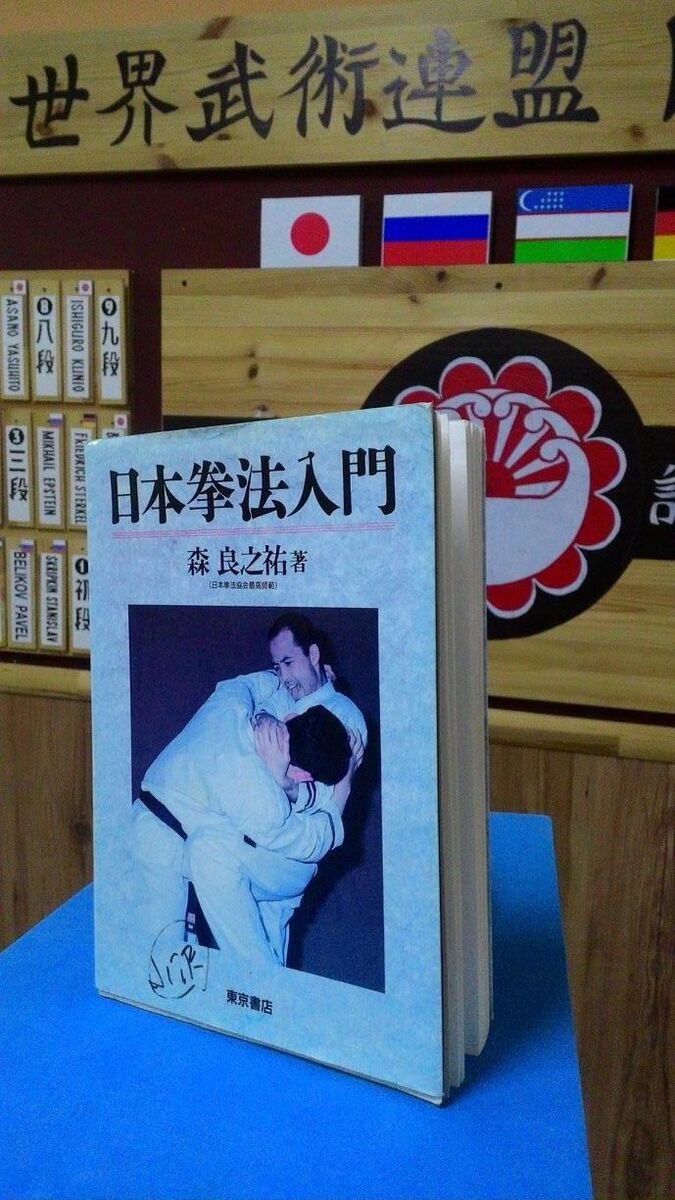 – Mr. Ryonosuke Mori published the book «Nippon Kempo Nyumon»
– Mr. Ryonosuke Mori published the book «Nippon Kempo Nyumon»
1991 - Mr. Ryonosuke Mori assigned the supervision of the association "Nippon Kempo Kyokai" to mr. Kunio Ishiguro due to his state of health, though remained in the office as a consultant.
1955– 1995 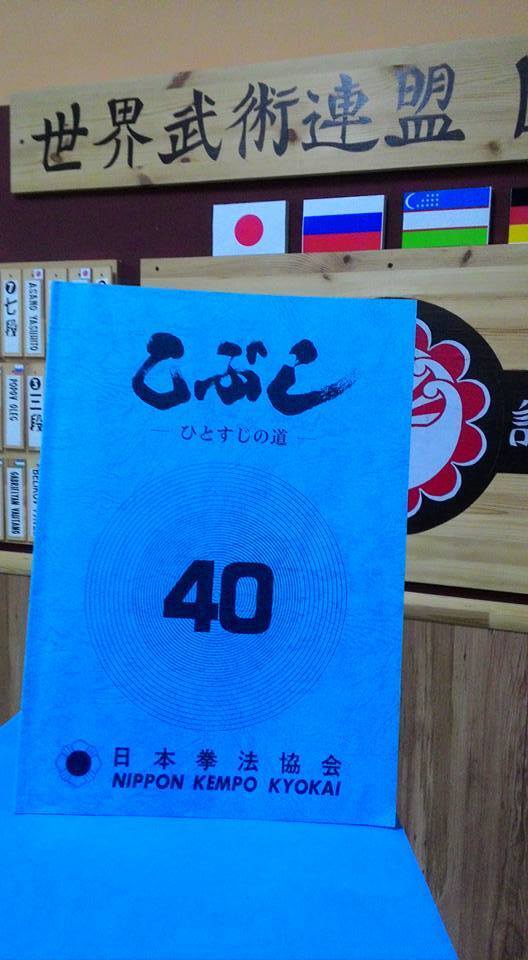 – Mr. Kunio Ishiguro
completed the broshure "Fourty years of official History of the
Association Nippon Kempo Kyokai", consulted by mr. Ryonosuke Mori.
– Mr. Kunio Ishiguro
completed the broshure "Fourty years of official History of the
Association Nippon Kempo Kyokai", consulted by mr. Ryonosuke Mori.
1999 - 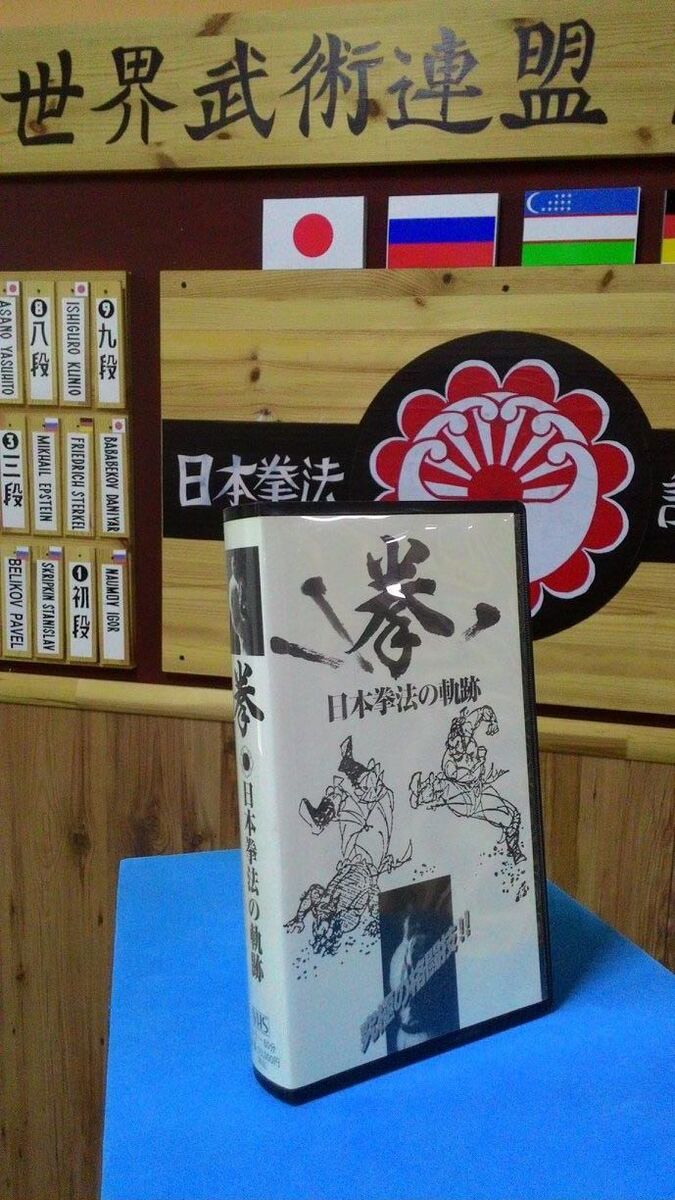
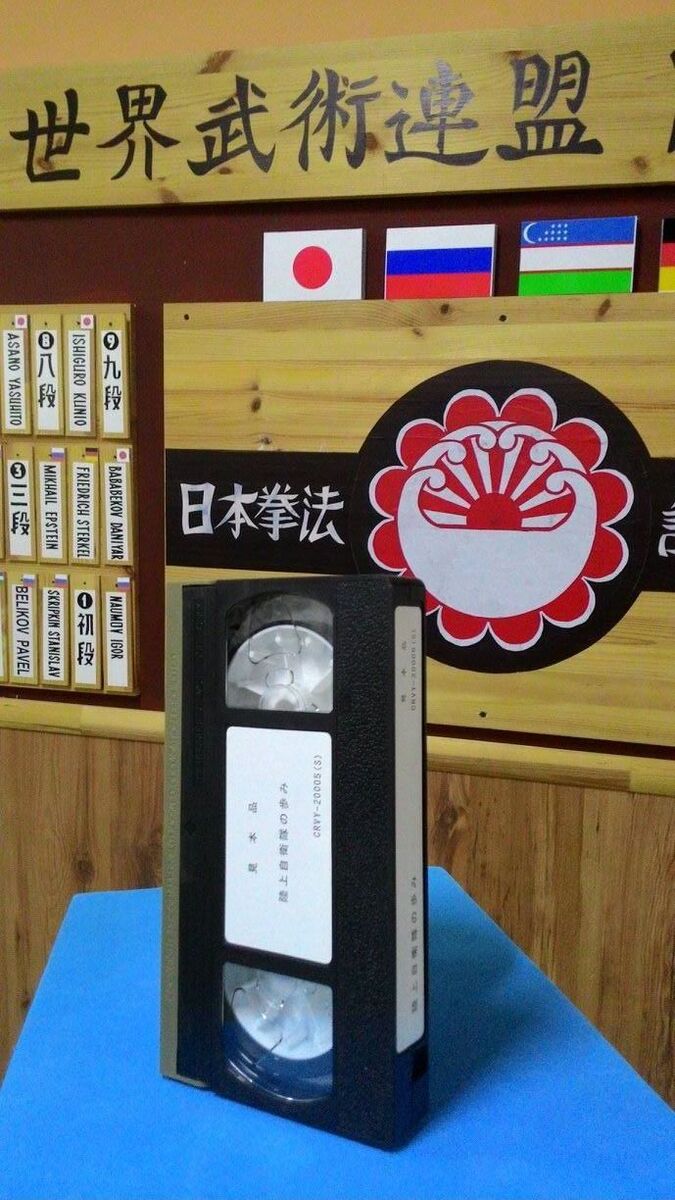
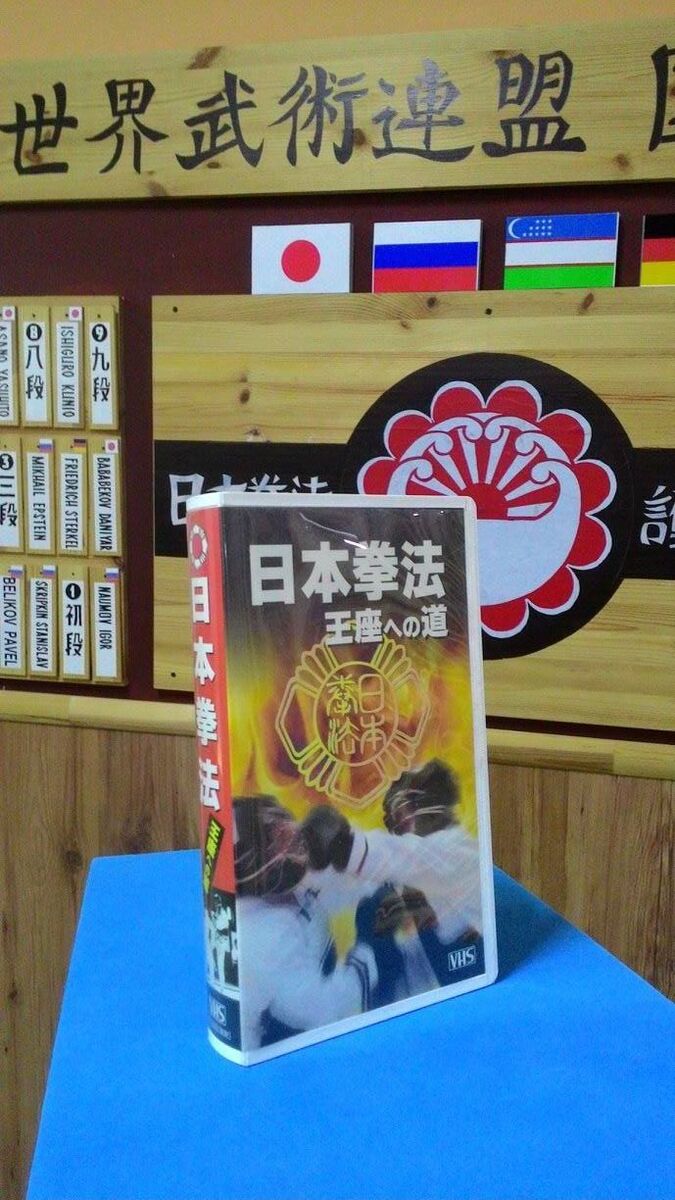
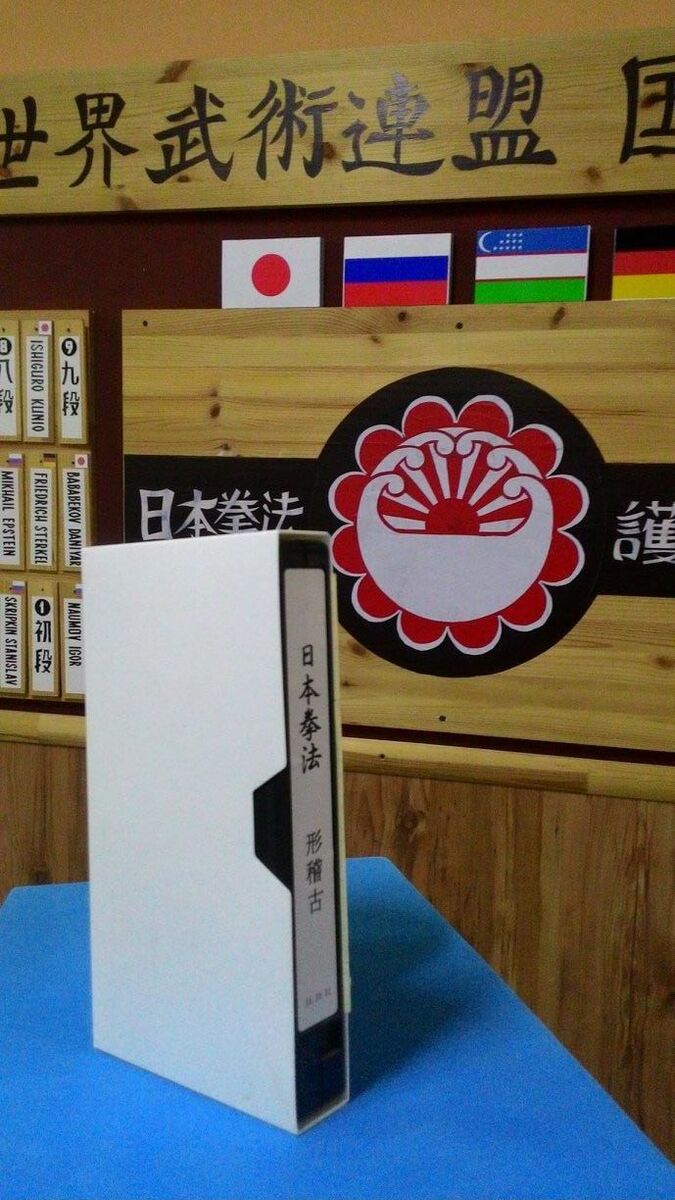 Four portable video cassettes were produced.
Four portable video cassettes were produced.
01.10.2001
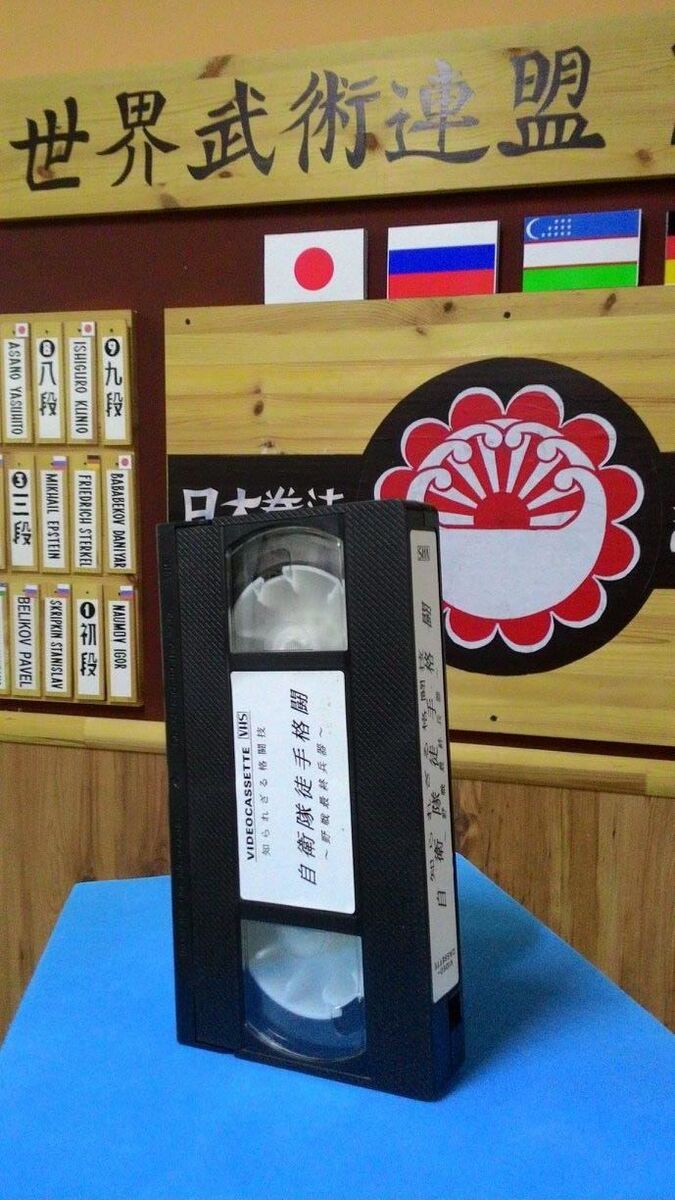 - Mr. Hiroyama Ryuichi написал книгу «Jieitai Toshu Kakuto Nyumon» and cooperation with mr. Ide Mikio (Toshyu Kakutodo 7-dan, Jyukendo 5-dan, Tantokendo 5-dan) and one portable video cassette was released.
- Mr. Hiroyama Ryuichi написал книгу «Jieitai Toshu Kakuto Nyumon» and cooperation with mr. Ide Mikio (Toshyu Kakutodo 7-dan, Jyukendo 5-dan, Tantokendo 5-dan) and one portable video cassette was released.
10.07.2001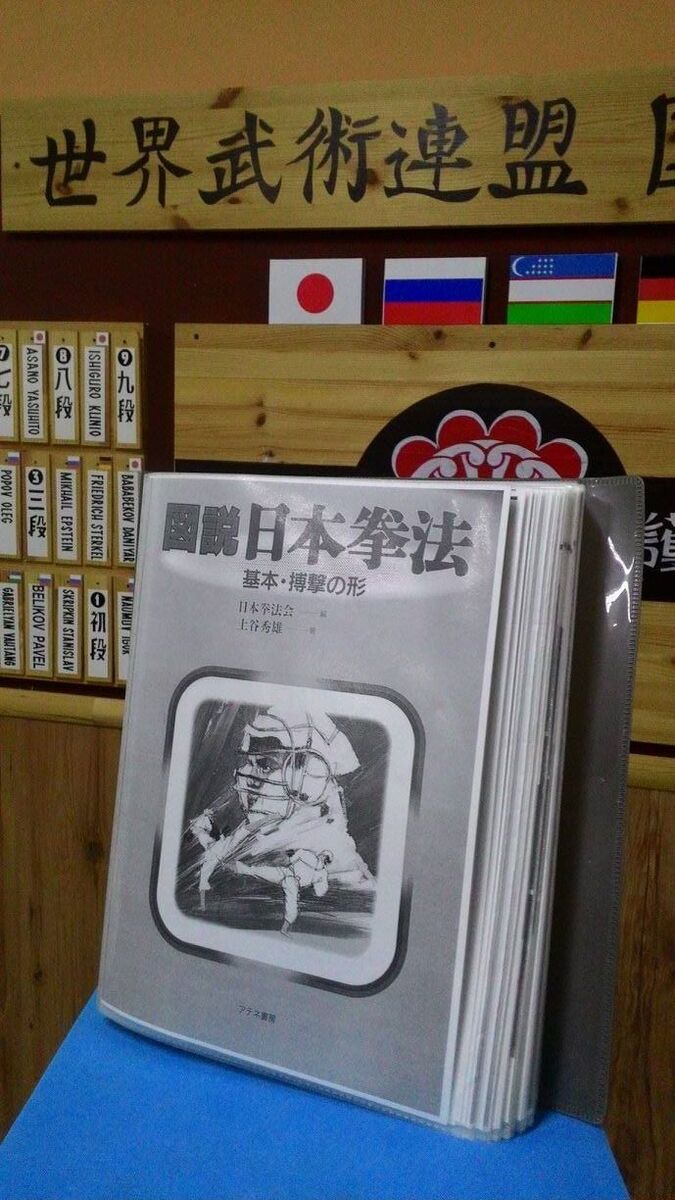
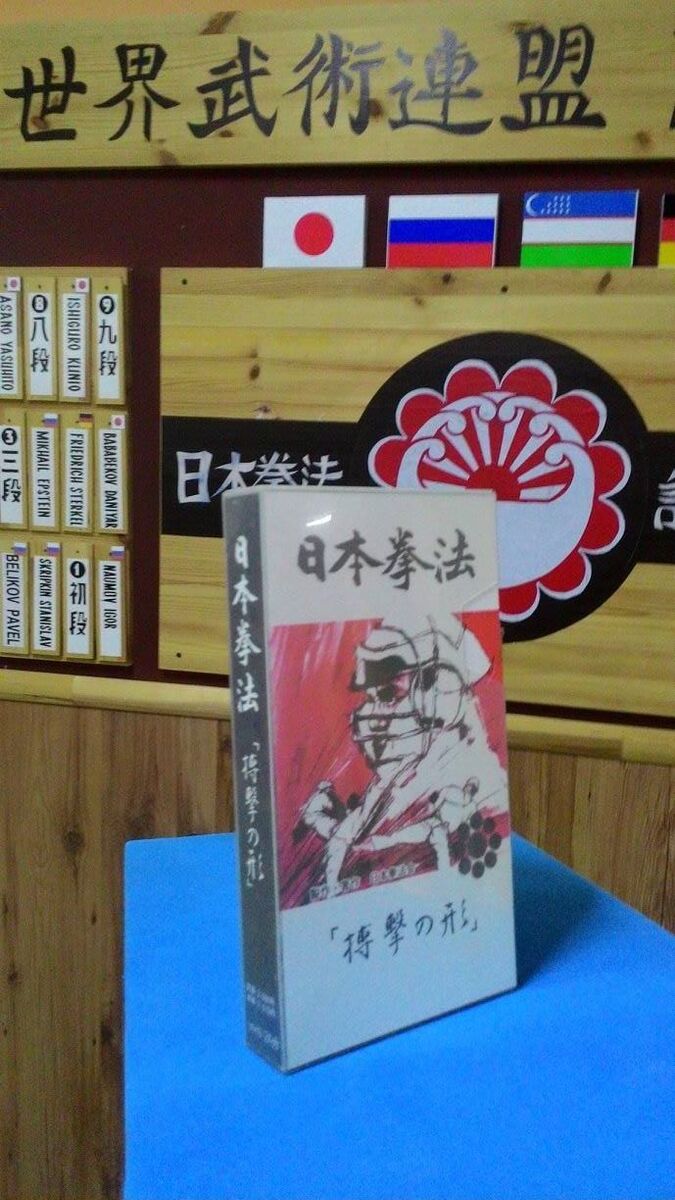
 – Mr. Doya Hideo published
the book "Zusetsu Nippon Kempo" and two portable video cassettes were produced.
– Mr. Doya Hideo published
the book "Zusetsu Nippon Kempo" and two portable video cassettes were produced.
2003 - Mr. Ryonosuke Mori passed away.
2005 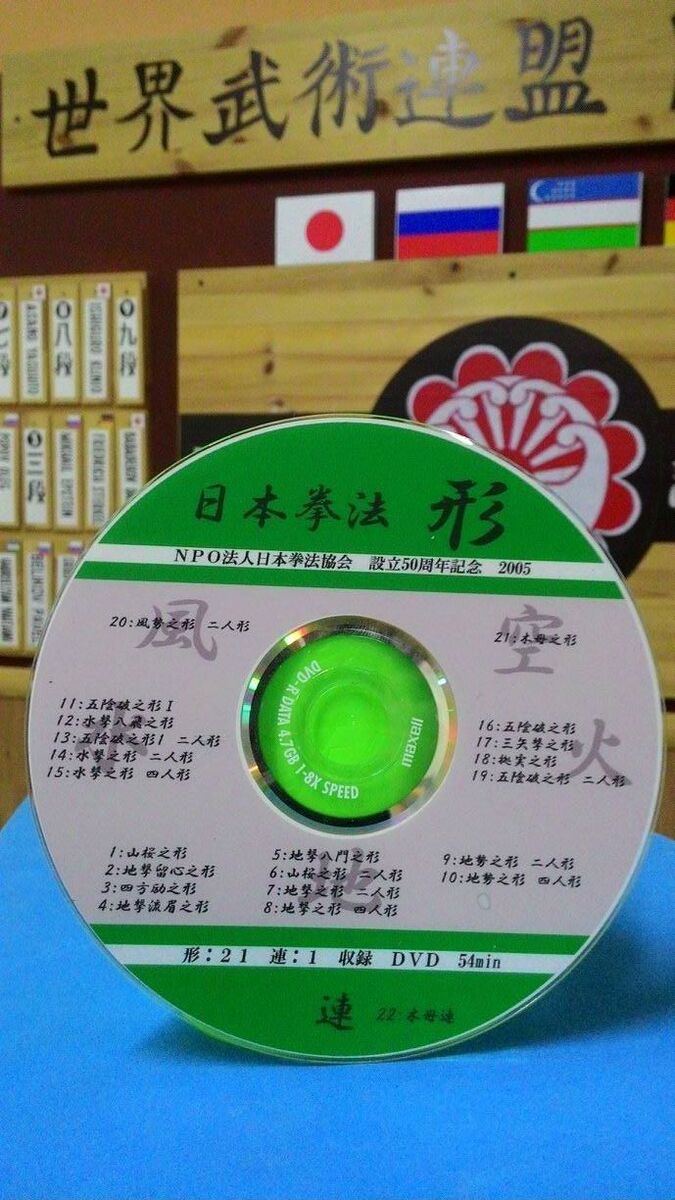
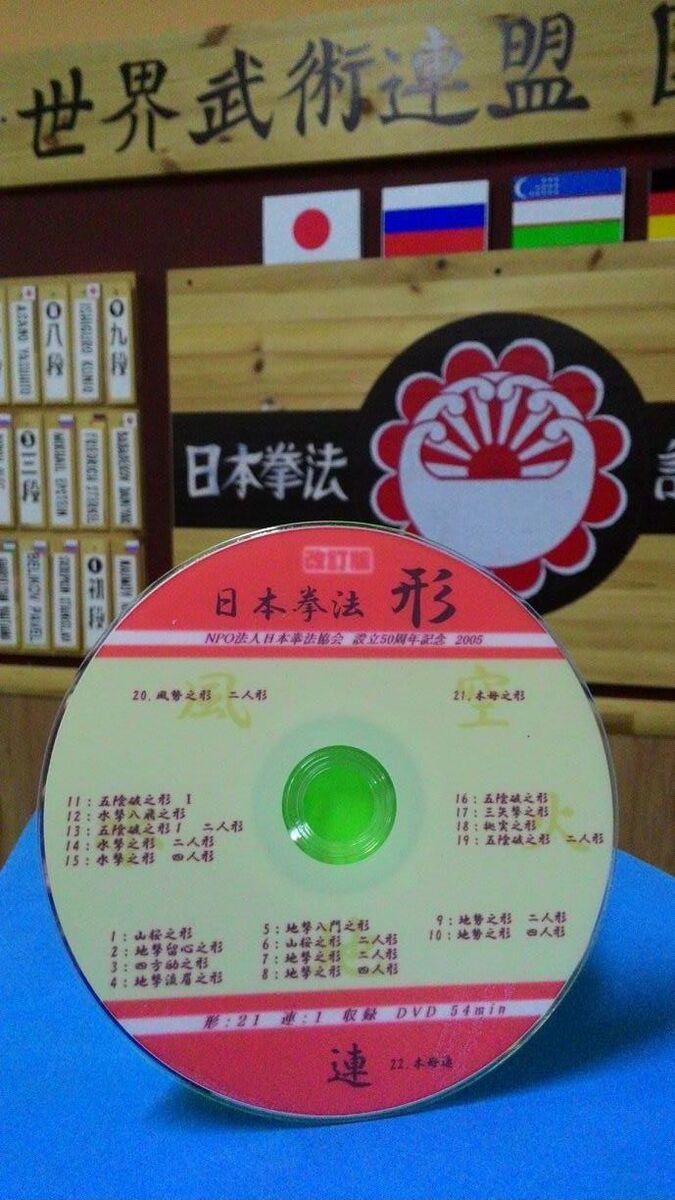
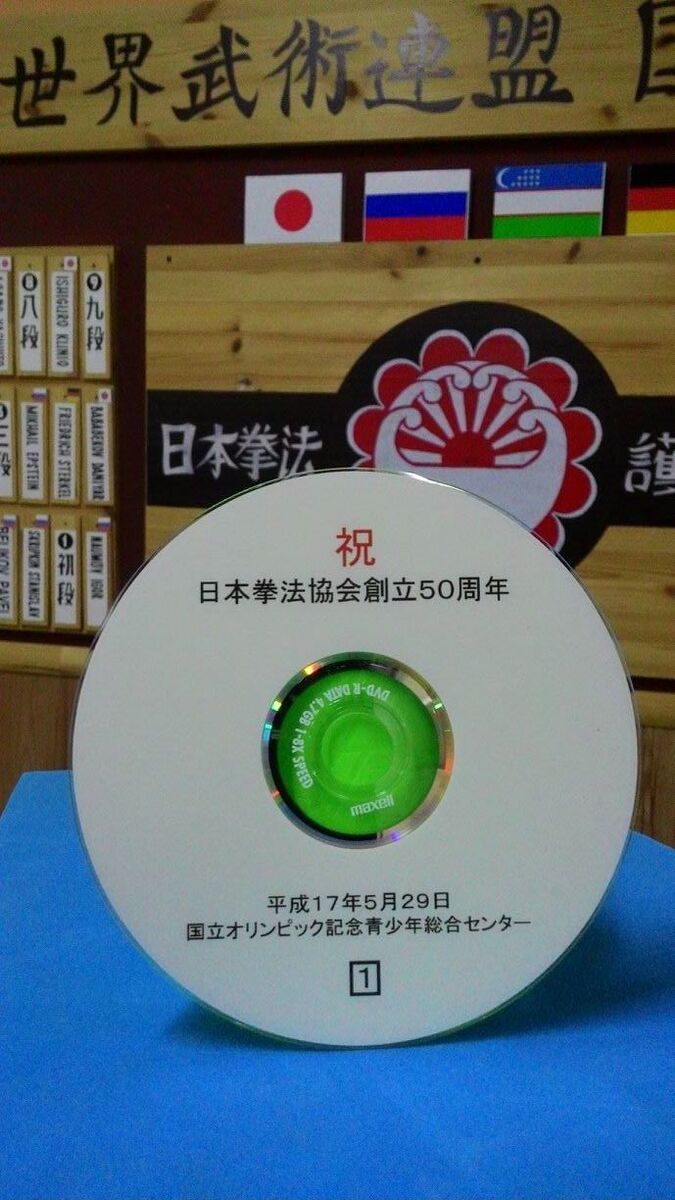
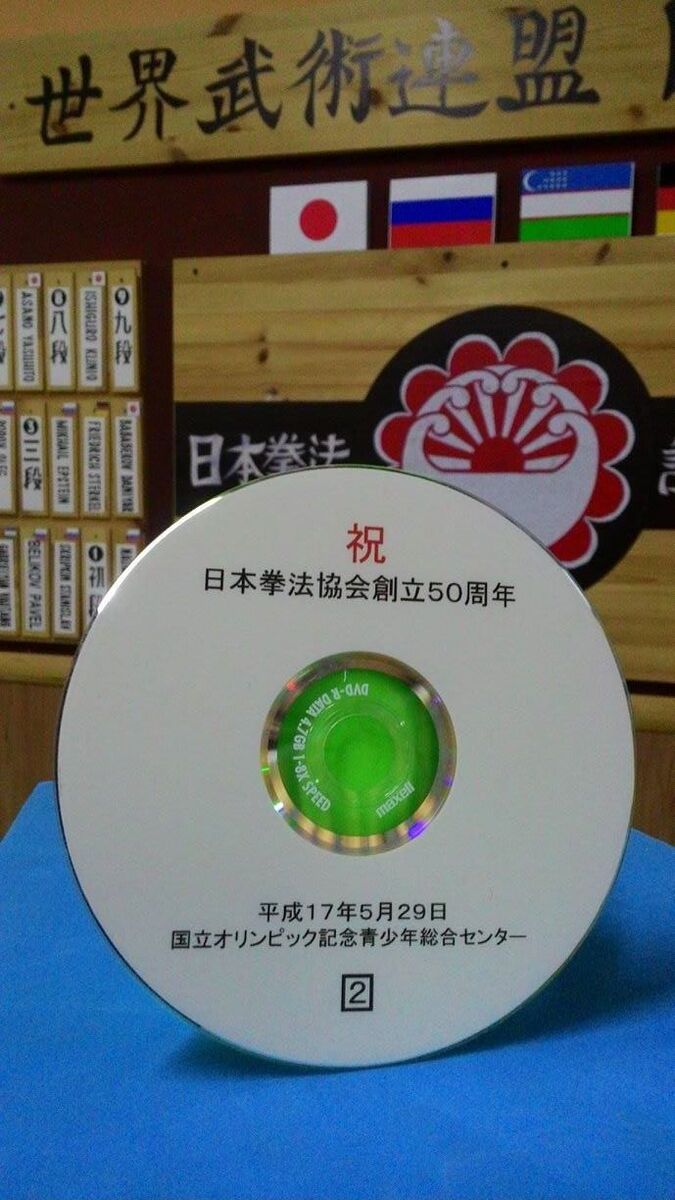
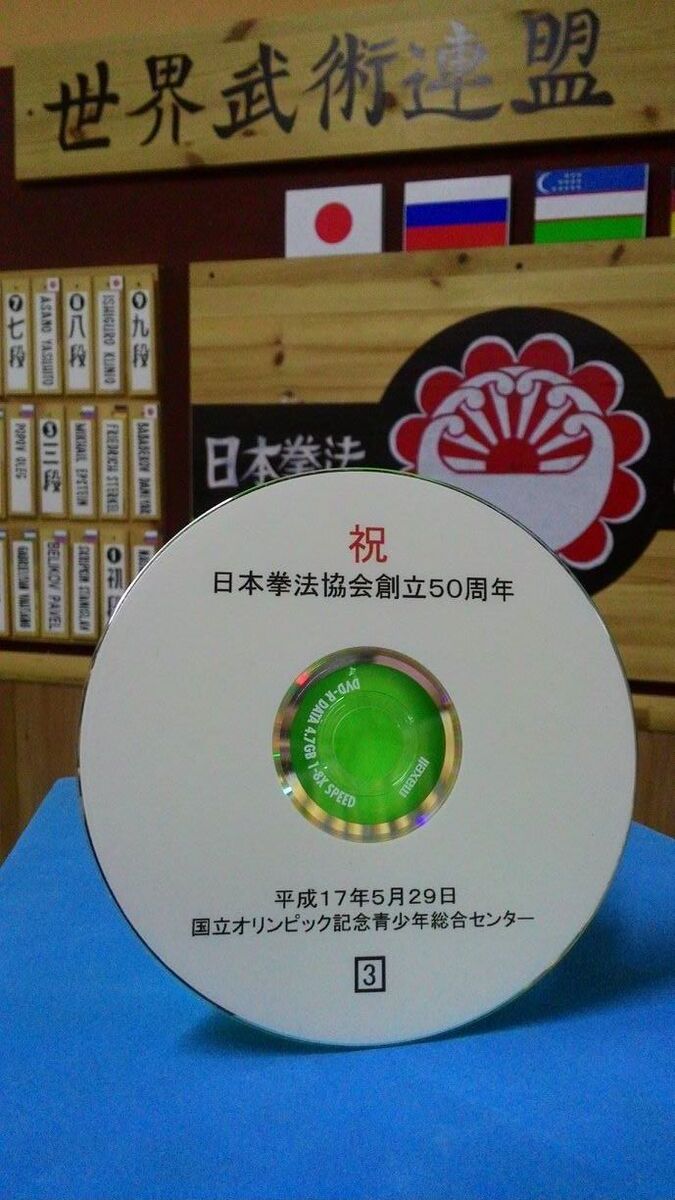 – On the occasion of
the 50th anniversary of the associaton "Nippon Kempo Kyokai"
22 revised katas were approved jointly, to ensure the steadily
compliance with the principles of Nippon Kempo for practice without
protective equipment. The list of katas is devided in 5 groups.
– On the occasion of
the 50th anniversary of the associaton "Nippon Kempo Kyokai"
22 revised katas were approved jointly, to ensure the steadily
compliance with the principles of Nippon Kempo for practice without
protective equipment. The list of katas is devided in 5 groups.
2005 – Mr. Ishiguro Kunio assigned the supervision of the association "Nippon Kempo Kyokai" to mr. Igari Genshu, and dedicated himself solely to the international issues concerning Nippon Kempo.
2005 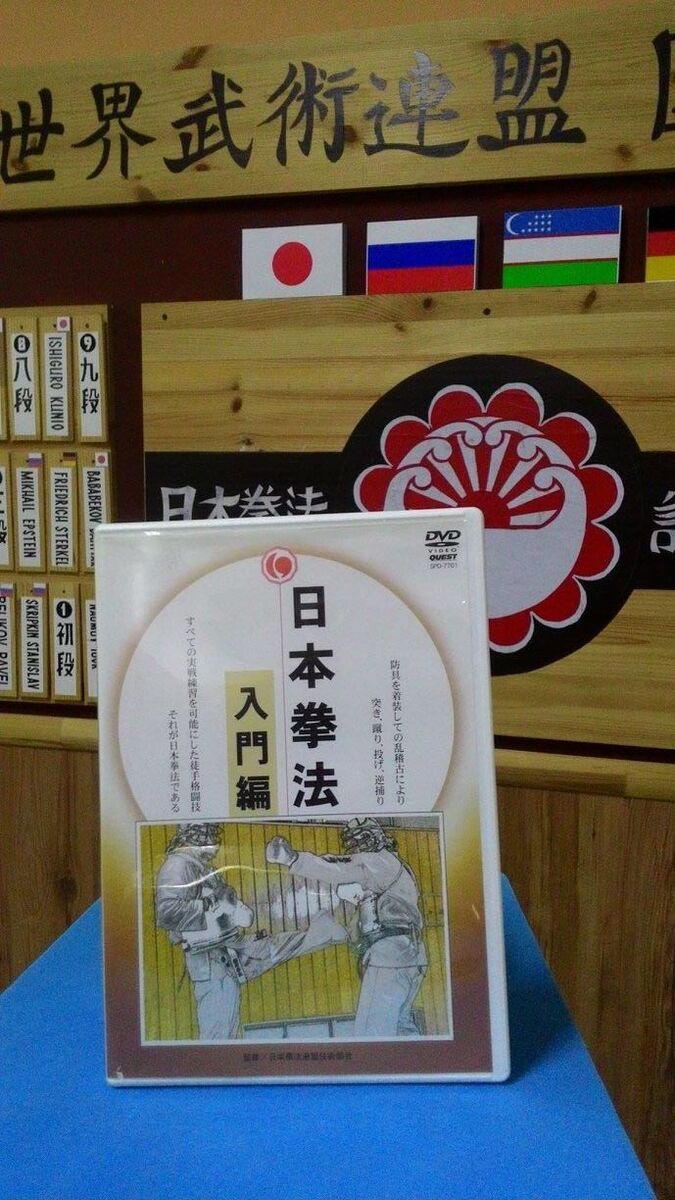
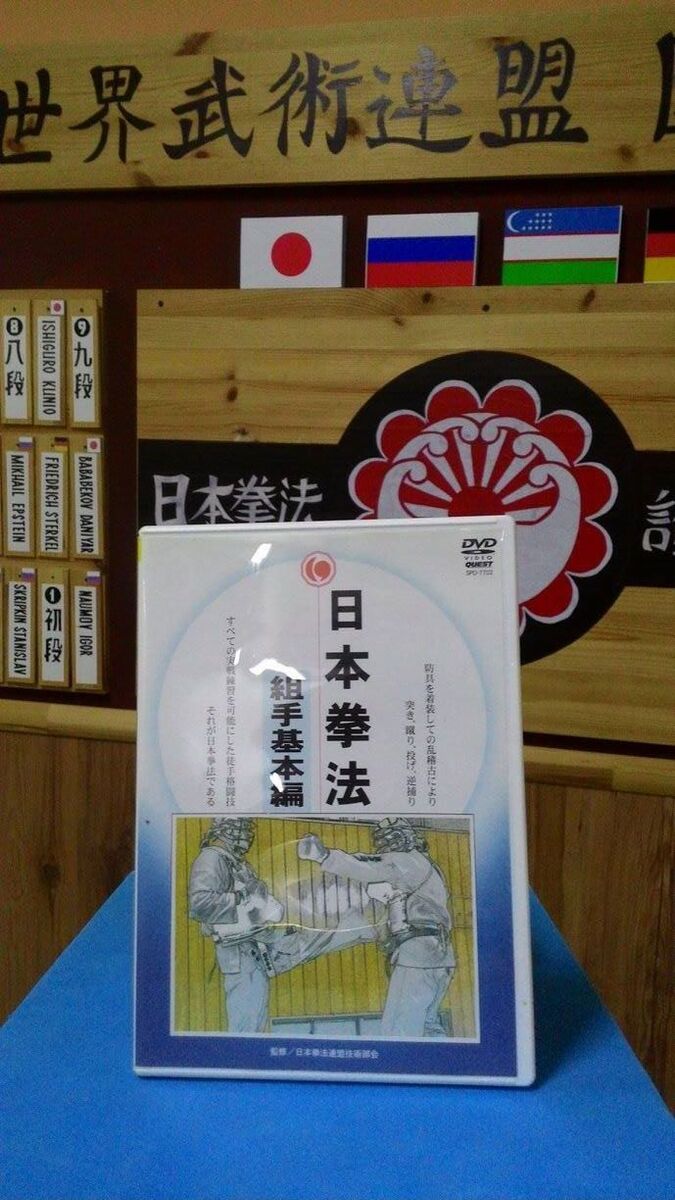
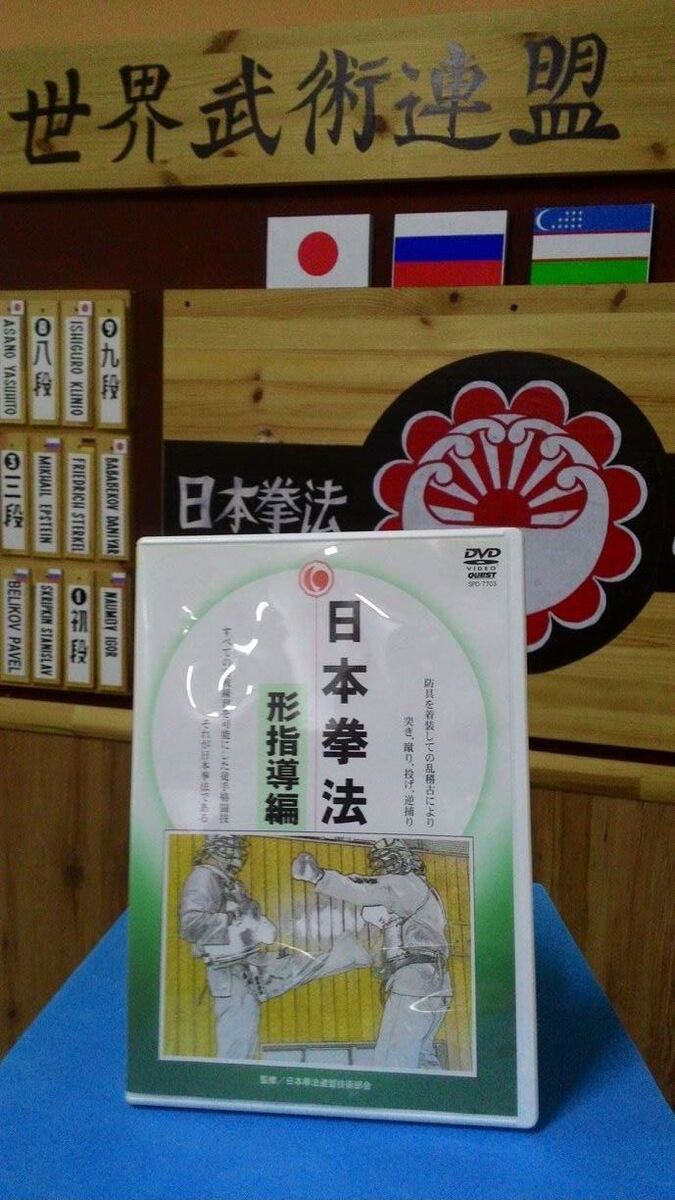 The Nippon Kempo Renmei has released three DVDs with its technique for Nippon Kempo.
The Nippon Kempo Renmei has released three DVDs with its technique for Nippon Kempo.
2005 - the "International Institute Kokusai Nippon Kempo" was founded
19.03.2005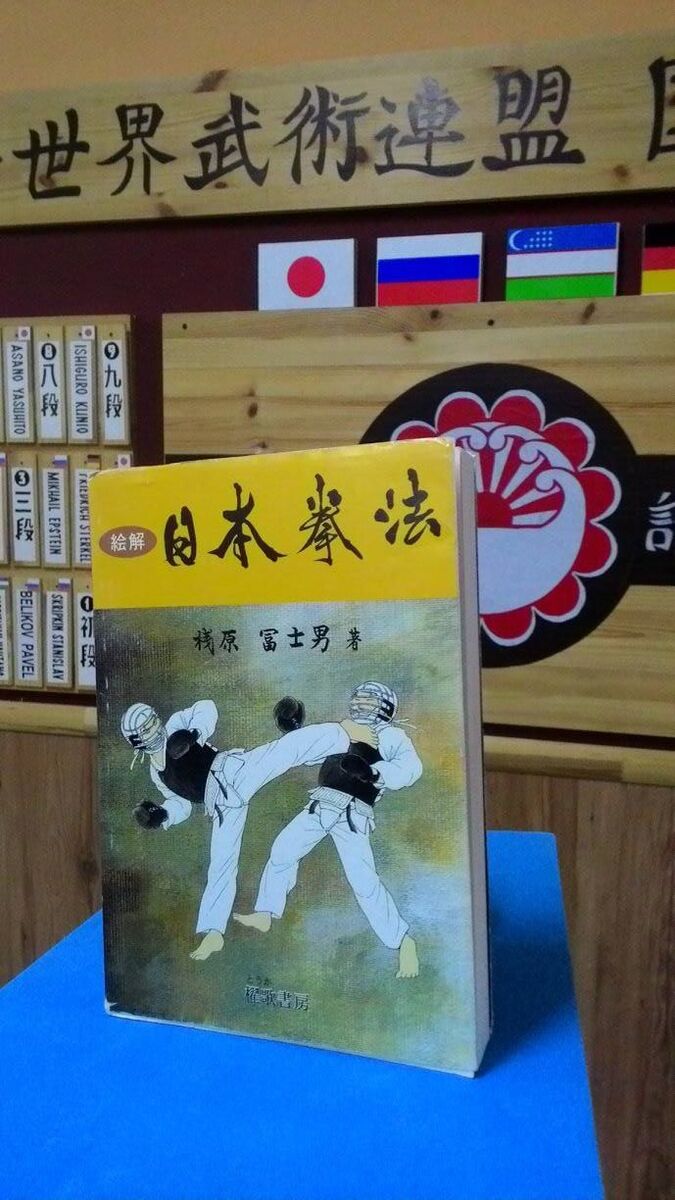 - Mr. Sadsikihara Fudsio
published the book "Nippon Kempo"
- Mr. Sadsikihara Fudsio
published the book "Nippon Kempo"
2008 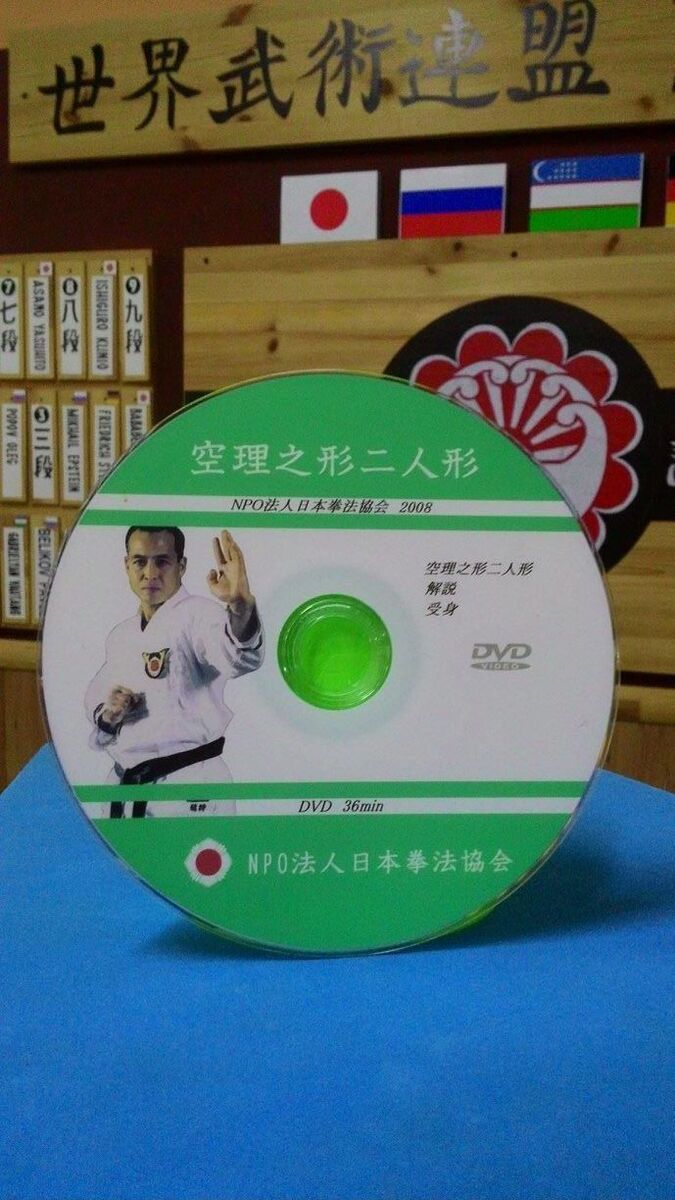
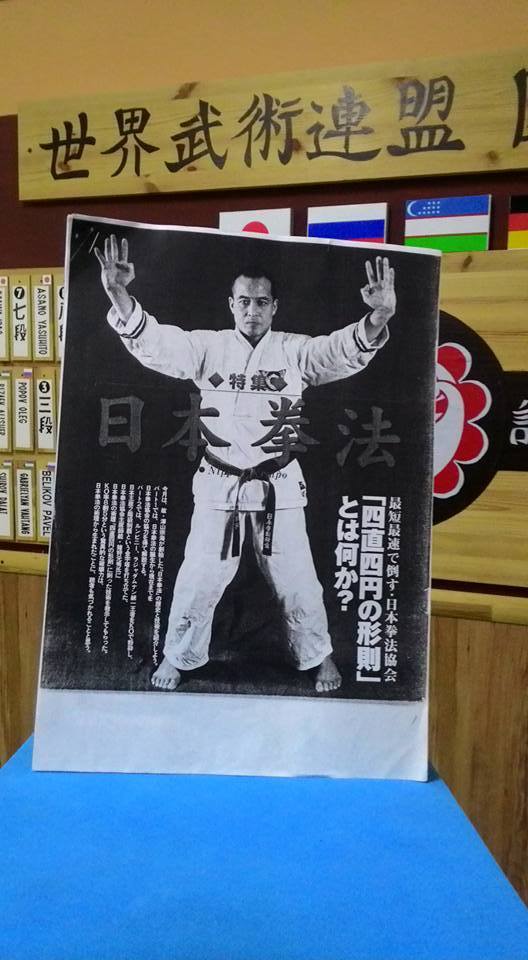 – Mr. Ikari Genshu
published a DVD with explanation of FUSEI NO KATA FUTARI GATA -
technique of wind power for two effectives
– Mr. Ikari Genshu
published a DVD with explanation of FUSEI NO KATA FUTARI GATA -
technique of wind power for two effectives
12.08.2009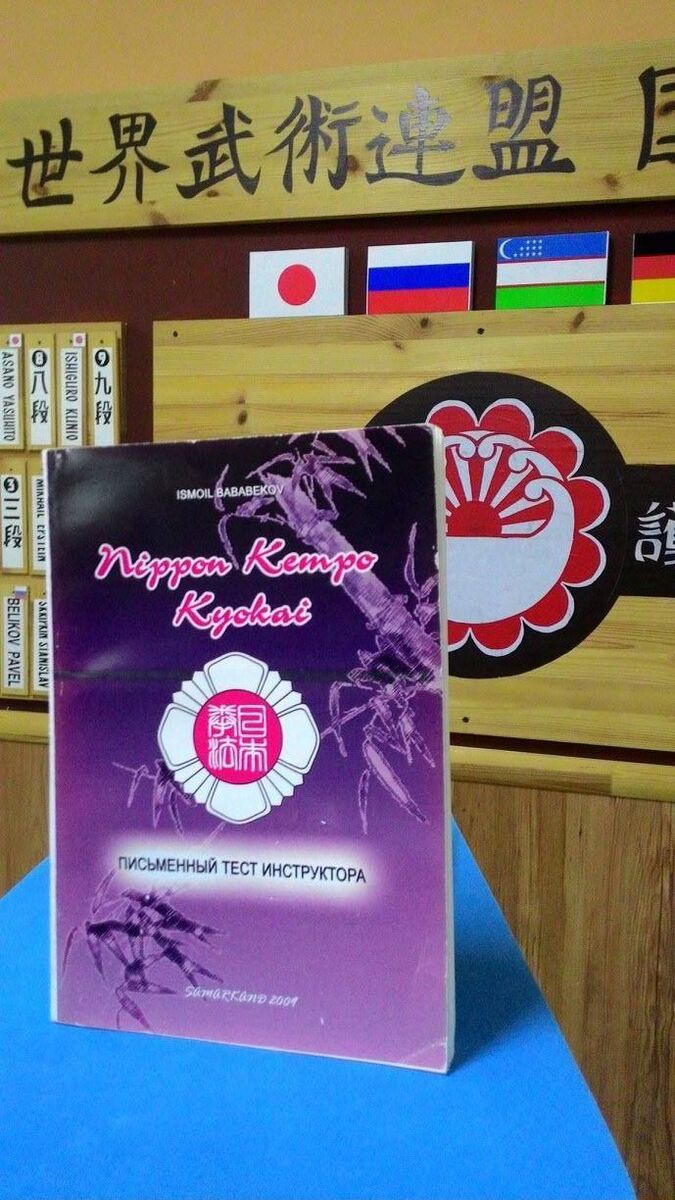 – Mr. Ismail Bababekow has written and published "Nippon Kempo Kekai - instructor´s test" in Russian. Sensei-Consultants of the publishing: Mr. Kunio Ishiguro, mr. Genshu Igari, mr. Nagata Koichi.
– Mr. Ismail Bababekow has written and published "Nippon Kempo Kekai - instructor´s test" in Russian. Sensei-Consultants of the publishing: Mr. Kunio Ishiguro, mr. Genshu Igari, mr. Nagata Koichi.
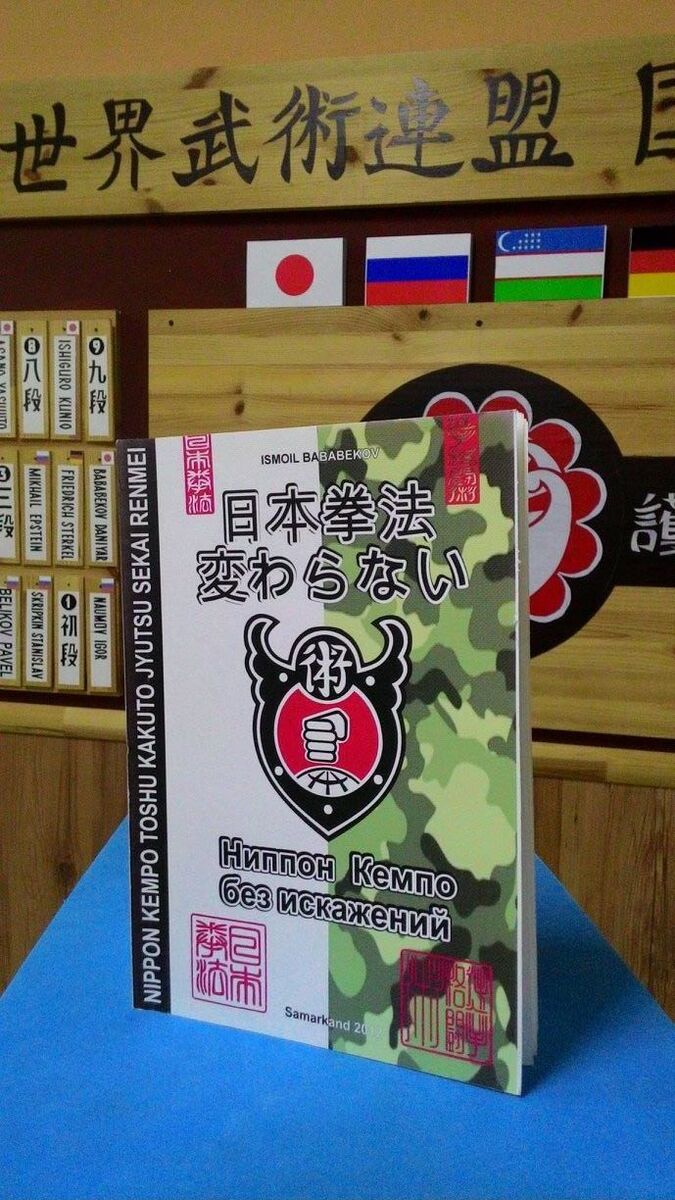 - Mr. Ismail Bababekow has written and published a methodical manual "Nippon Kempo Kawaranai". Consultant of the publishing was mr. Kunio Ishiguro.
- Mr. Ismail Bababekow has written and published a methodical manual "Nippon Kempo Kawaranai". Consultant of the publishing was mr. Kunio Ishiguro.
2013 - the
International Federation of Martial Arts "Sekai Bujyutsu Renmei"
was founded. Nippon Kempo was the first martial art to join the
federation.
Appearance of the lore of International Martial Art Federation "Sekai Bujyutsu Renmei":
YATSU NO CHIKARA - Eight Powers
- KIZUKU CHIKARA -Power of Energy,
- KIKU CHIKARA - Power of HEARING,
- MIRU CHIKARA - Power of Sight,
- TSUTAERU CHIKARA - Power of Speech,
- OMOYEGAKU CHIKARA - Power of Mind,
- KUFU SURU CHIKARA - Power of Imagination,
- MAKOTO O TSURANUKU CHIKARA - Power of Truth,
- KEYZOKU SURU CHIKARA - Power of Presistance,
WARERA WA BUJYUTSU NO, SHYUREN O HAGUKUMI, YONO TAME, HITO NO TAMENI, TSUKUSU KOTO O, JIBUN JISHIN NI, YAKUSOKU SURU - I promise to myself to try to develop The Eight Powers through practice of martial arts for the benefit of all the people around the world.
2013 - The
regulations for competitions in Nipon Kempo were developed and
approved as a methodical manual:
Referee`s test - "NIPPON KEMPO SHINSHYAIN SHIKEN" - validation of a referee in Nippon Kempo.
Developed by International Martial Art Federation "Sekai Bujyutsu Renmei"
02.08.2013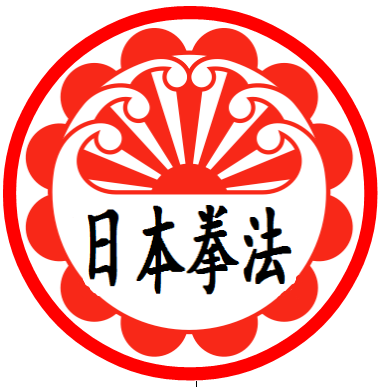 Japan - Tokyo developed the emblem of Nippon Kempo Sekai Bujyutsu Renmei.
Japan - Tokyo developed the emblem of Nippon Kempo Sekai Bujyutsu Renmei.
2014 - 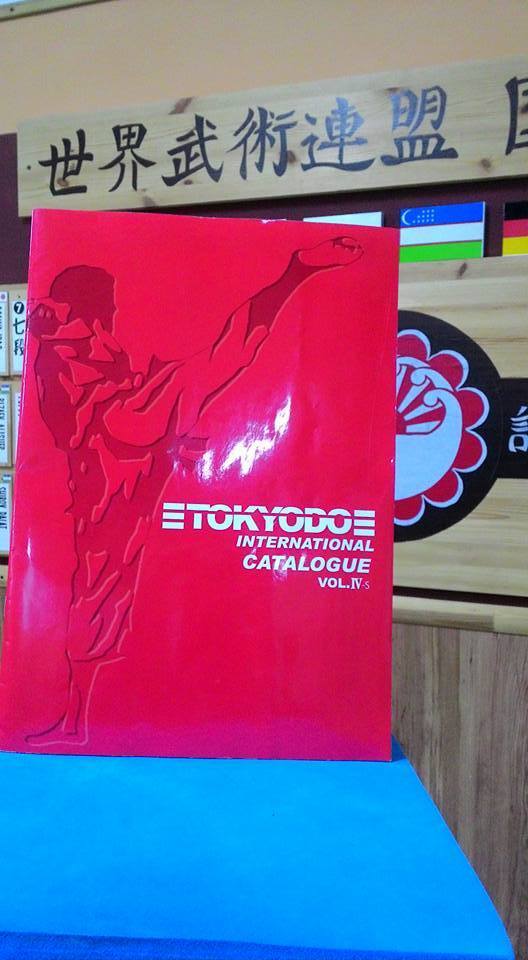 Updated catalog "TOKYODO INTERNATIONAL CATALOGUE" - here you will find protective equipment and kimono for Nippon Kempo, at the lowest prices in Japan.
Updated catalog "TOKYODO INTERNATIONAL CATALOGUE" - here you will find protective equipment and kimono for Nippon Kempo, at the lowest prices in Japan.
2016 - Development of four katas on the foundation of four schemes of mr. Sawayama Mueomi by International Martial Art Federation "Sekai Bujyutsu Renmei":

- HEYDOU NO KATA FUTARI BOGU GATA - technique of parallel movement
- TAIDOU NO KATA BOGU GATA - technique of expansive movement
- KODOU NO KATA FUTARI BOGU GATA - technique of synchronal intersection
- GODOU NO KATA FUTARI BOGU GATA - technique of alternately mutual movement
01.06.2018 Germany - Hamburg BUJYUTSU CENTER – official registration
2018 - On the
occasion of the 5th anniversary of "Nippon Kempo Sekai Bujyutsu
Renmei" four technical katas in protective equipment were
developed on the foundation of technical katas created before 1977,
and approved:
- CHIGEKI NO HOU FUTARI BOGU NO KATA
- GOONPA NO HOU FUTARI BOGU NO KATA 1
- GOONPA NO HOU FUTARI BOGU NO KATA 2
- SUIGEKI NO HOU FUTARI BOGU NO KATA
2018 - two methodical manuals were developed:
- Instructor´s test -«NIPPON KEMPO SHIDOUSYA SHIKEN» - The essence of Nippon Kempo
- Effective`s test - «NIPPON KEMPO SENSHI SHIKEN» - Validation for Nippon Kempo
20.06.2018 Germany - Hamburg SASORI DOJO – official registration
30.06.2018 Germany - Hamburg HINODE DOJO – official registration
2018 - On the occasion of the 5th anniversary of "Nippon Kempo Sekai Bujyutsu Renmei" four technical katas in protective equipment were developed on the foundation of technical katas created before 1977, and approved:
- CHIGEKI NO HOU - FUTARI BOGU NO KATA
- GOONPA NO HOU - FUTARI BOGU NO KATA 1
- GOONPA NO HOU - FUTARI BOGU NO KATA 2
- SUIGEKI NO HOU - FUTARI BOGU NO KATA
International Martial Art Federation "Sekai Bujyutsu Renmei" is looking forward to cooperate with instructors of Nippon Kempo. To consider intense historical and current remarks, as well as issues concerning techniques and methodology of Nippon Kempo and add them to this instructor´s test if necessary.
This instructor´s test contains graphics, methodological and technical materials from appropriate books as well as a photoarchive:
- Book - methodological manual "Nippon Kempo" by mr. Sawayama Muneomi - published at 01.04.1968
- Book - methodological manual "Nippon Kempo Kehan" by mr. Kunio Ishiguro - published at 10.10.1982
- Book - methodological manual «Nippon Kempo Nyumon» by mr. Ryonosuke Mori – published at 30.09.1991
- Broshure - "Fourty years of official History of the Association Nippon Kempo Kyokai 1955 - 1995", consulted by mr. Ryonosuke Mori.
- Book - methodological manual "Nippon Kempo Kawaranai" by mr. Bababekov Ismail - published at 15.02.2012
- Photoarchive "Kokusai Dojo"
